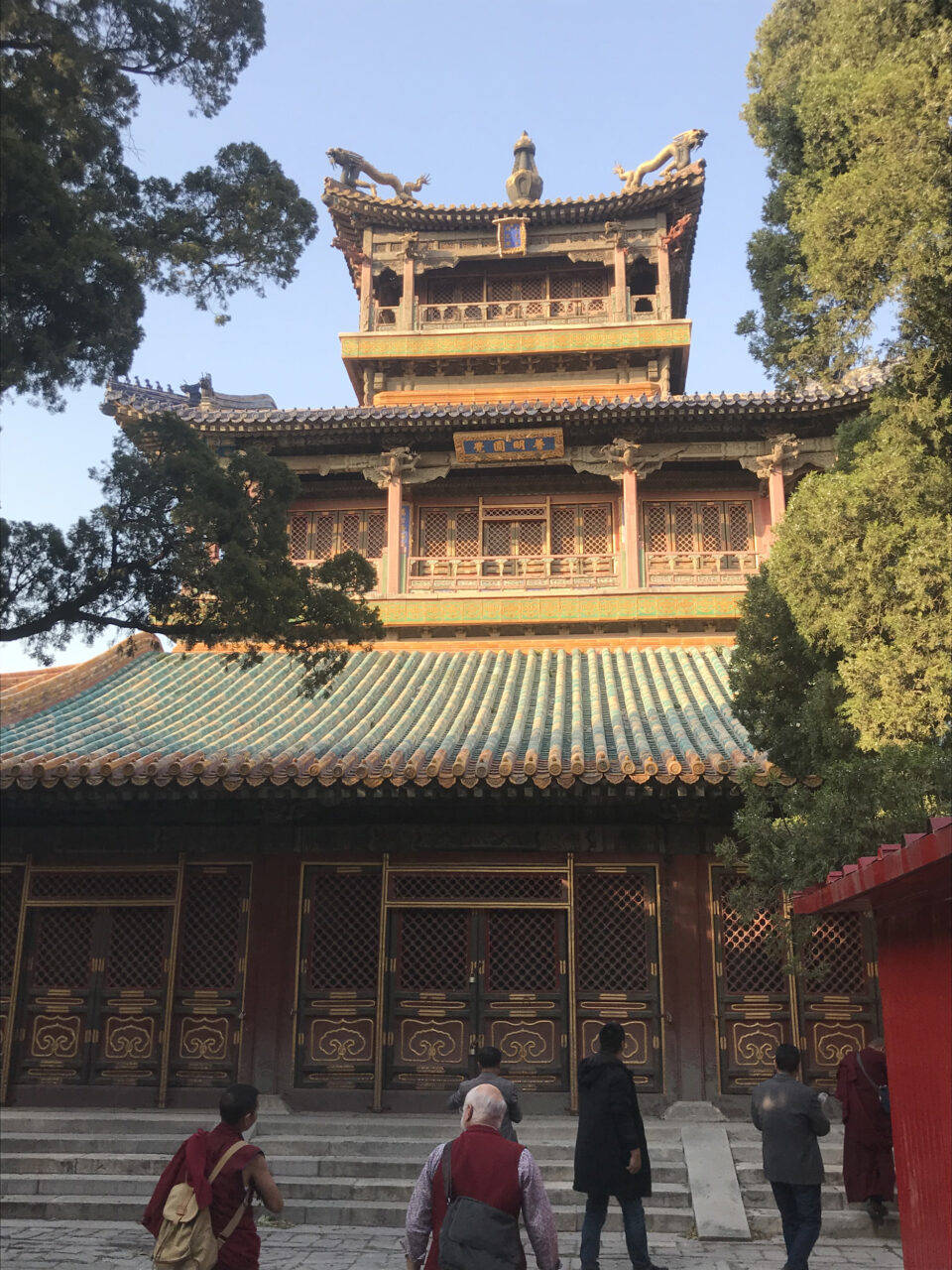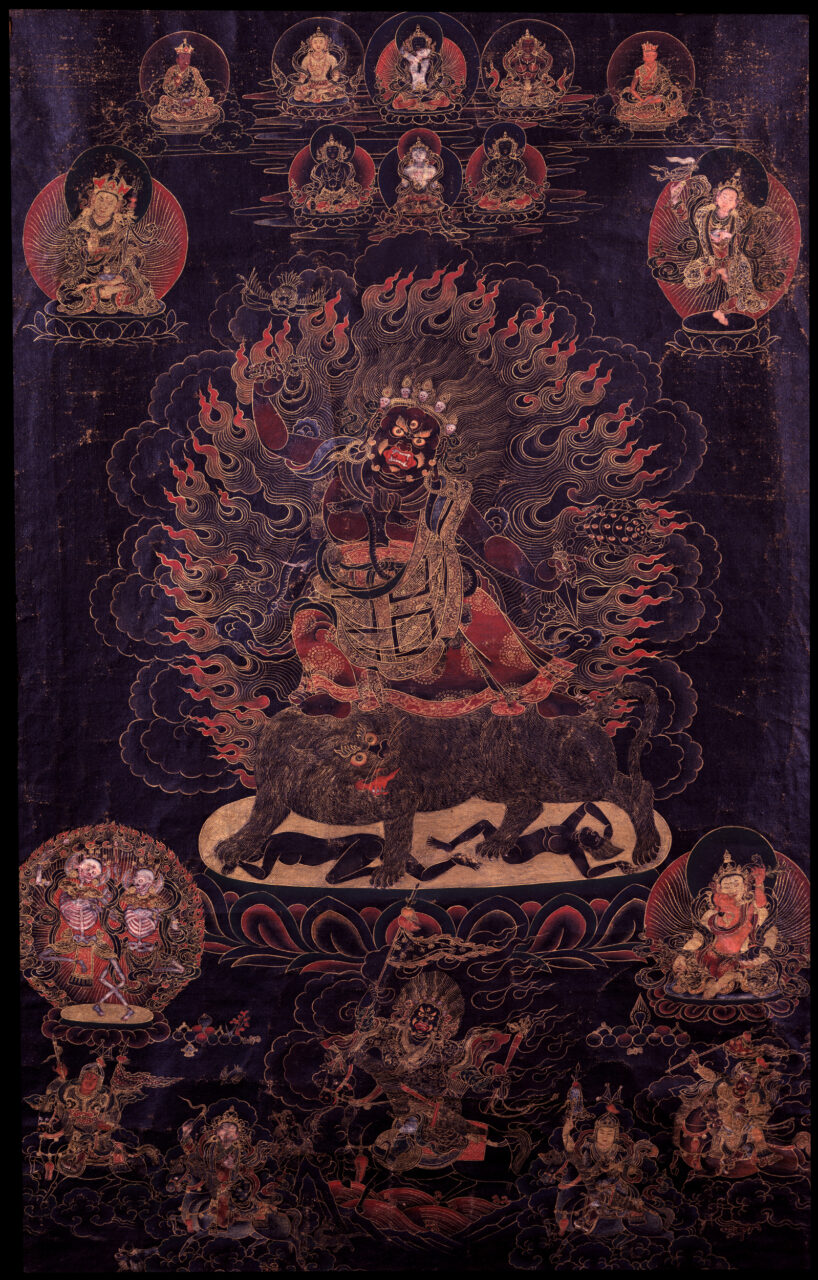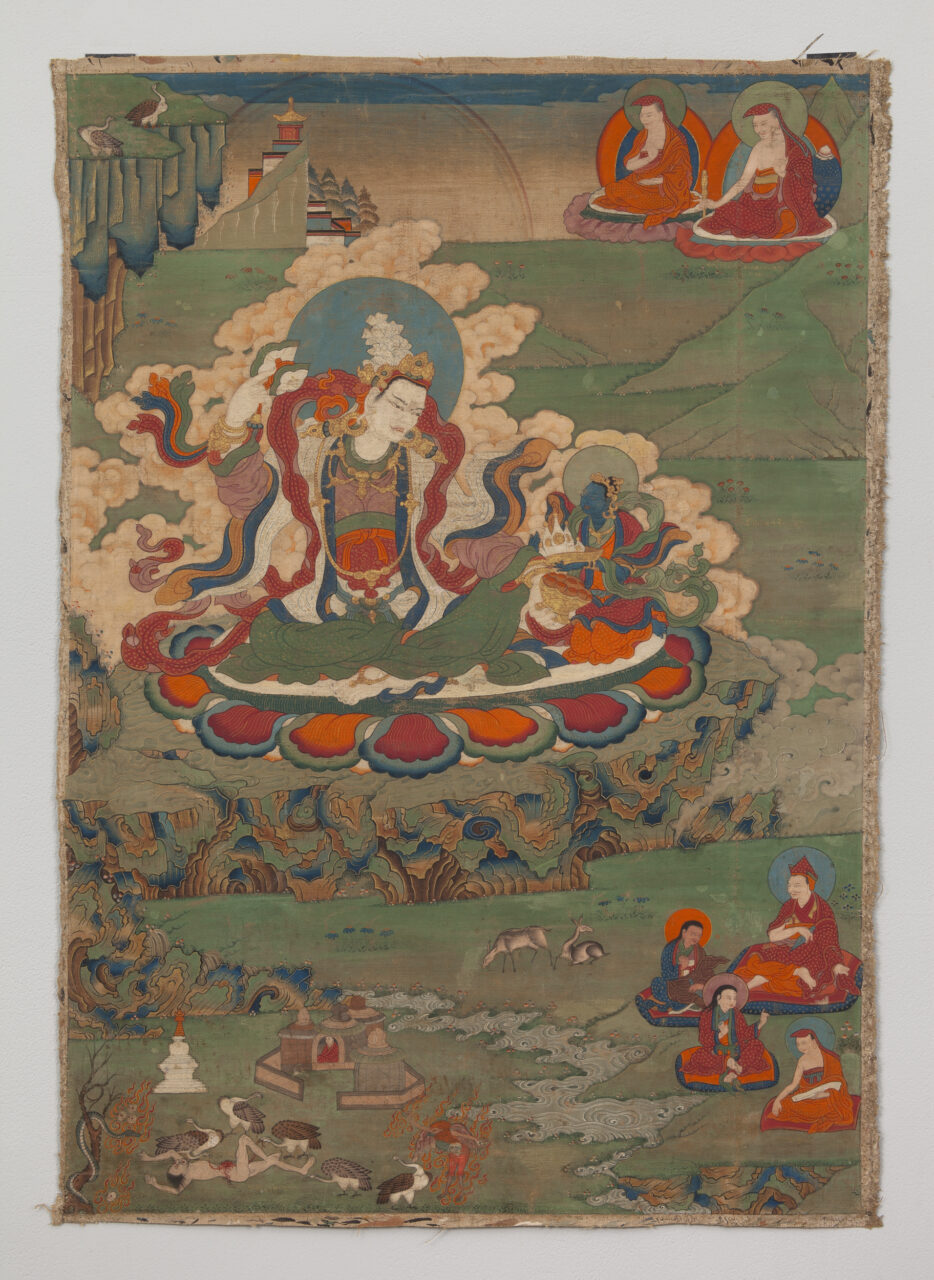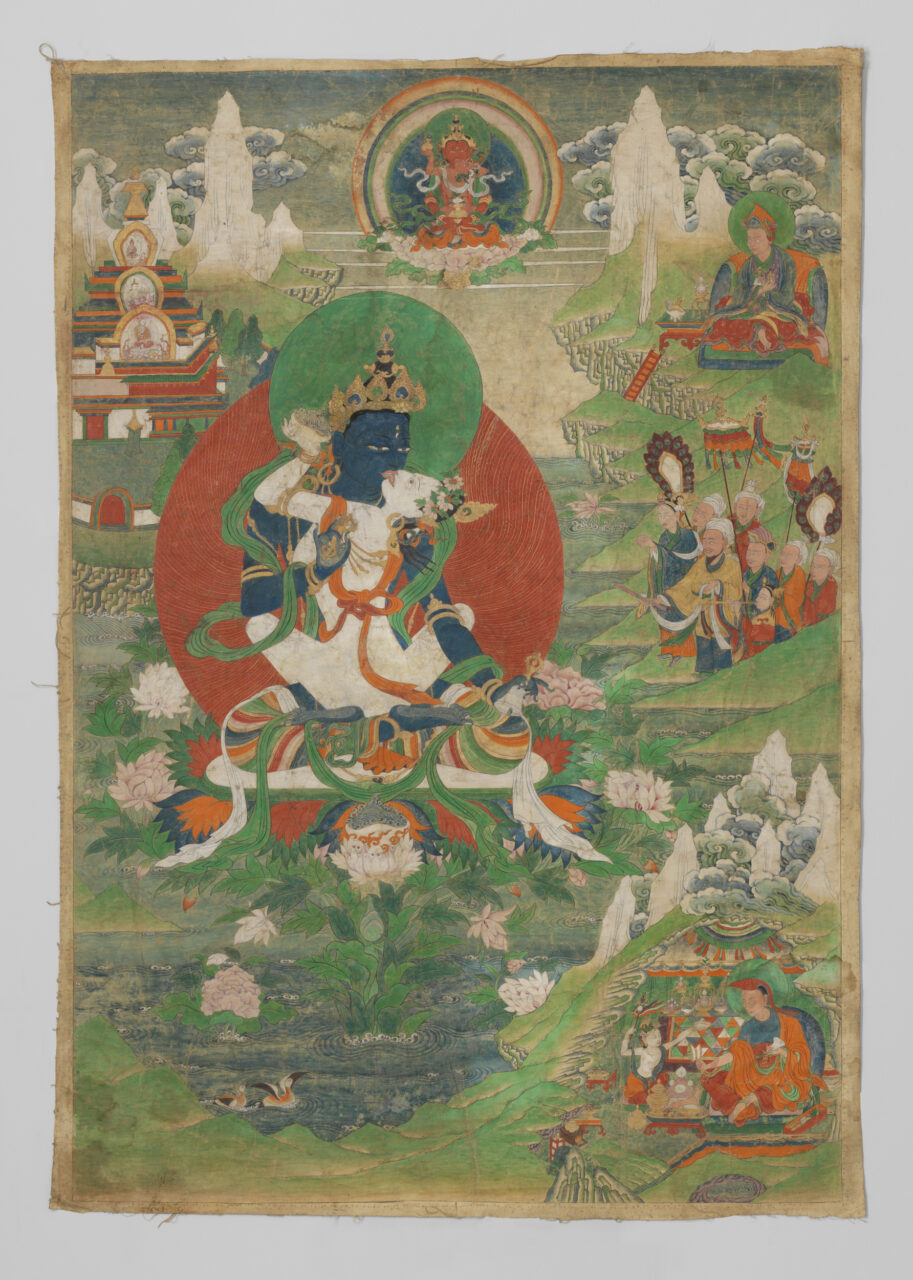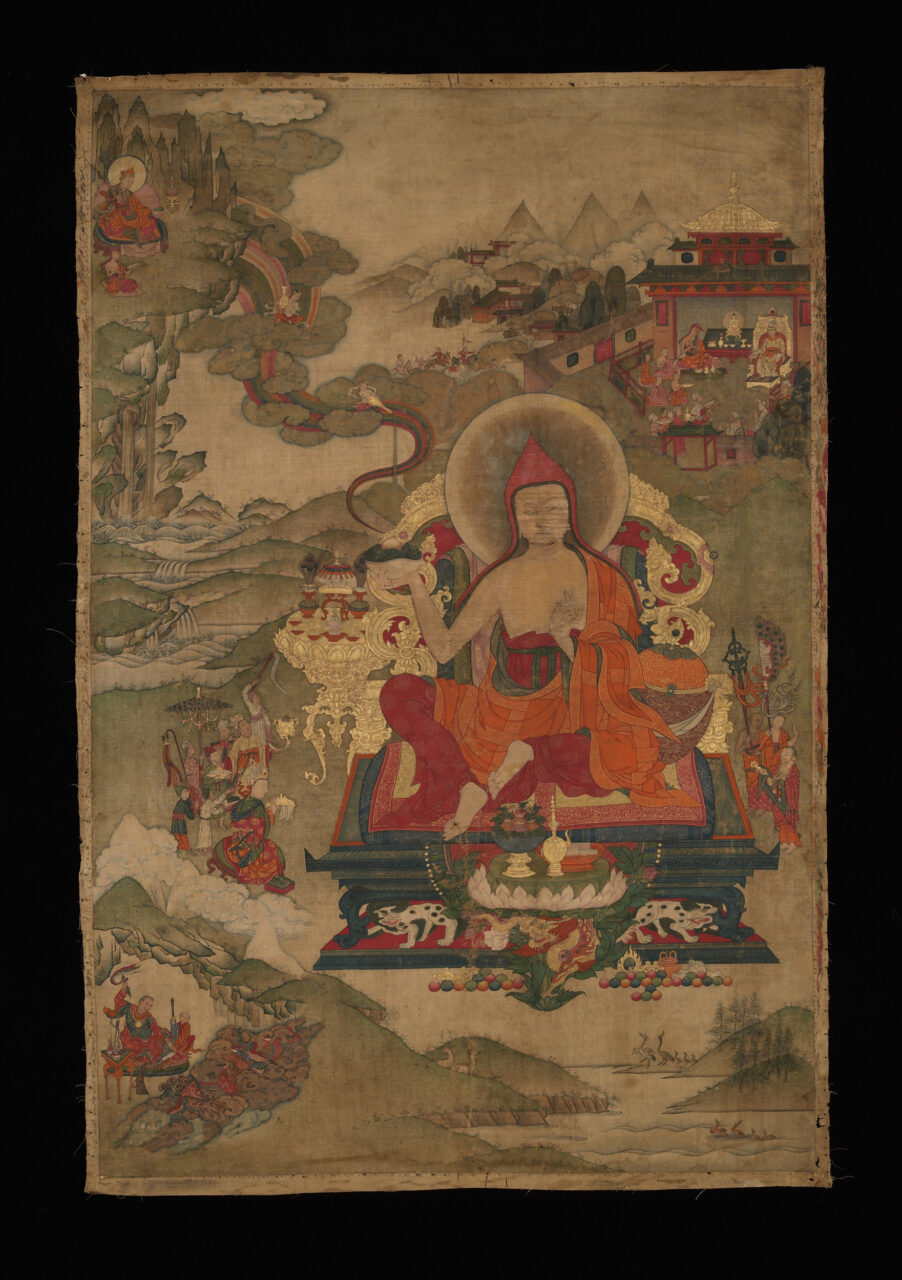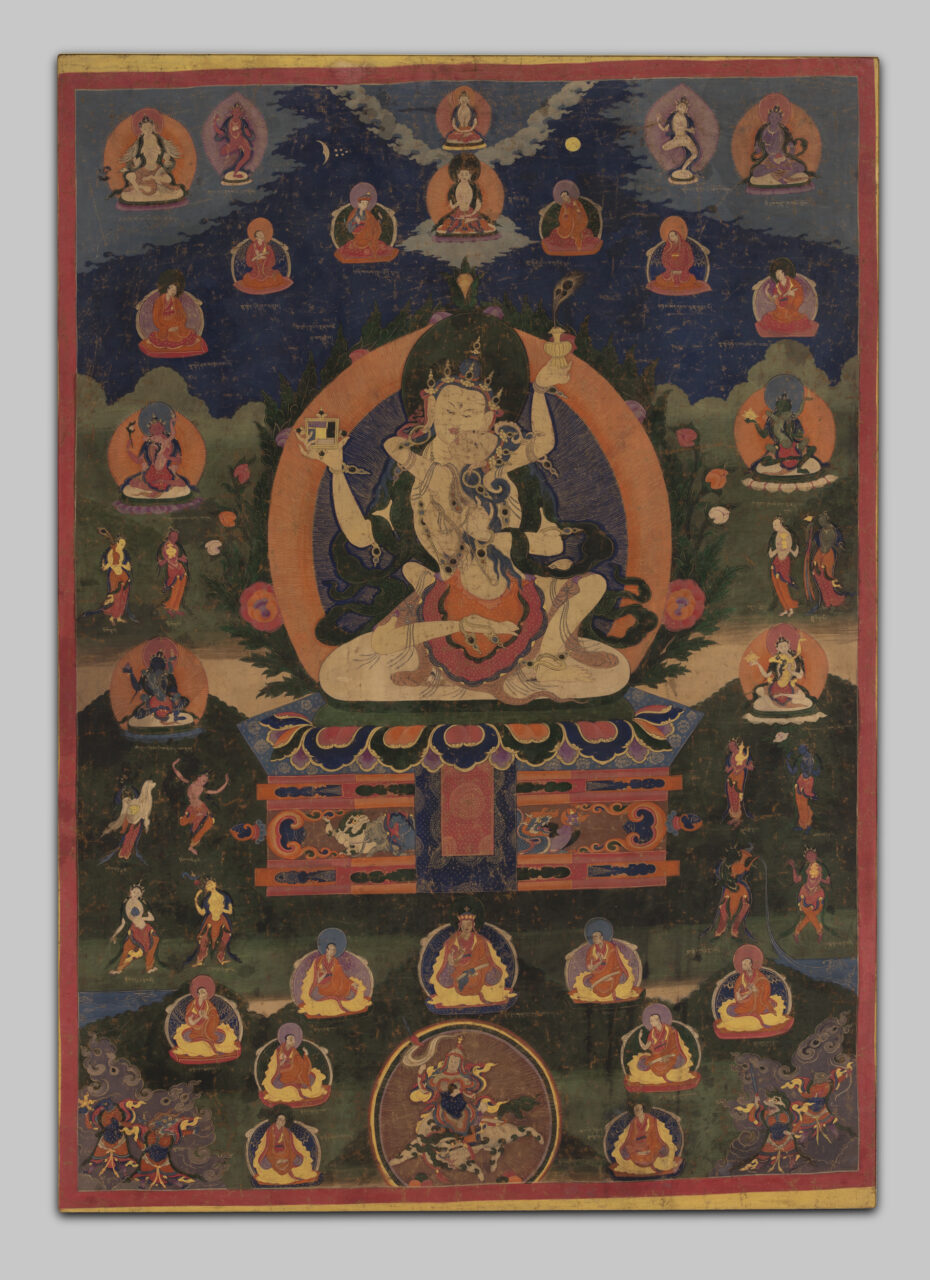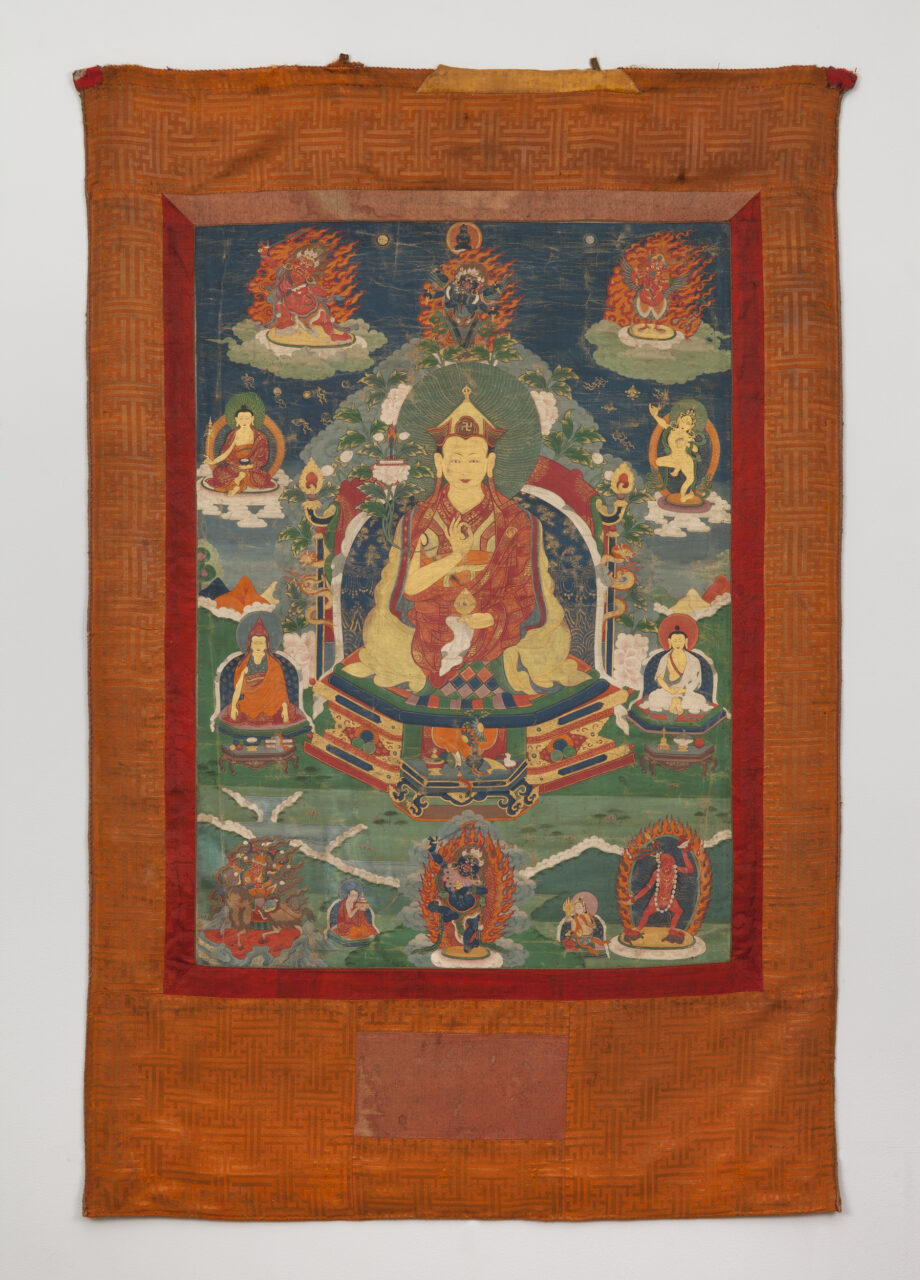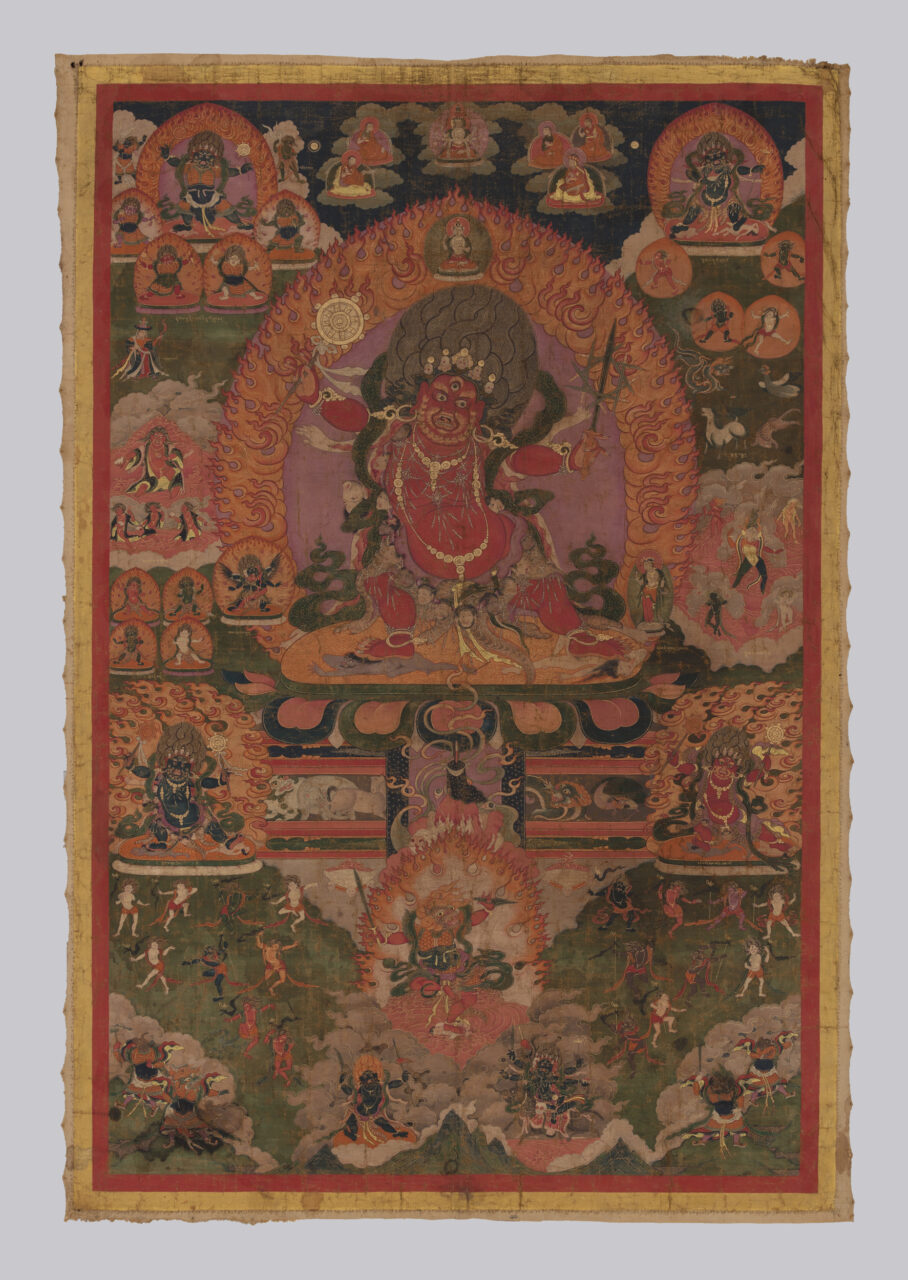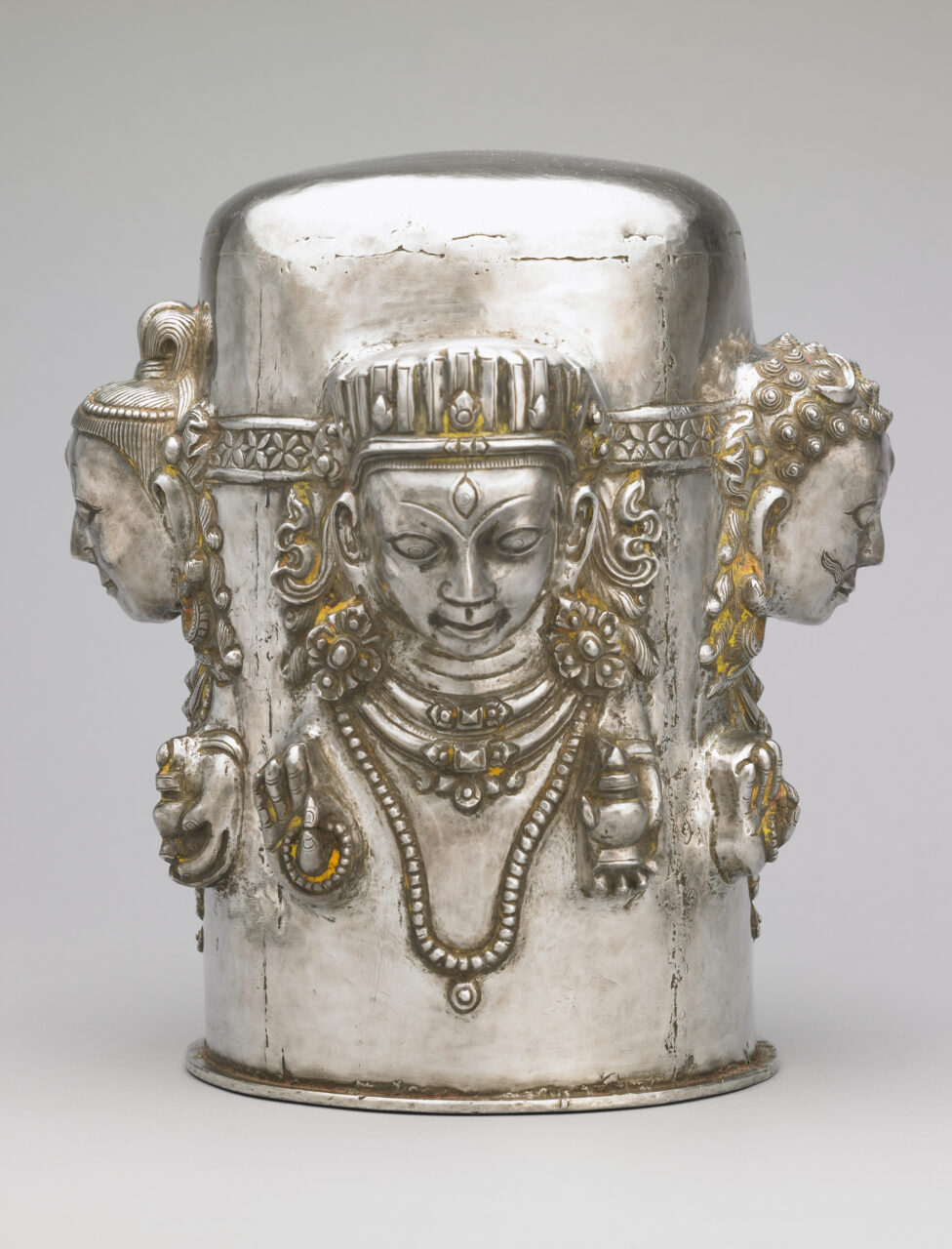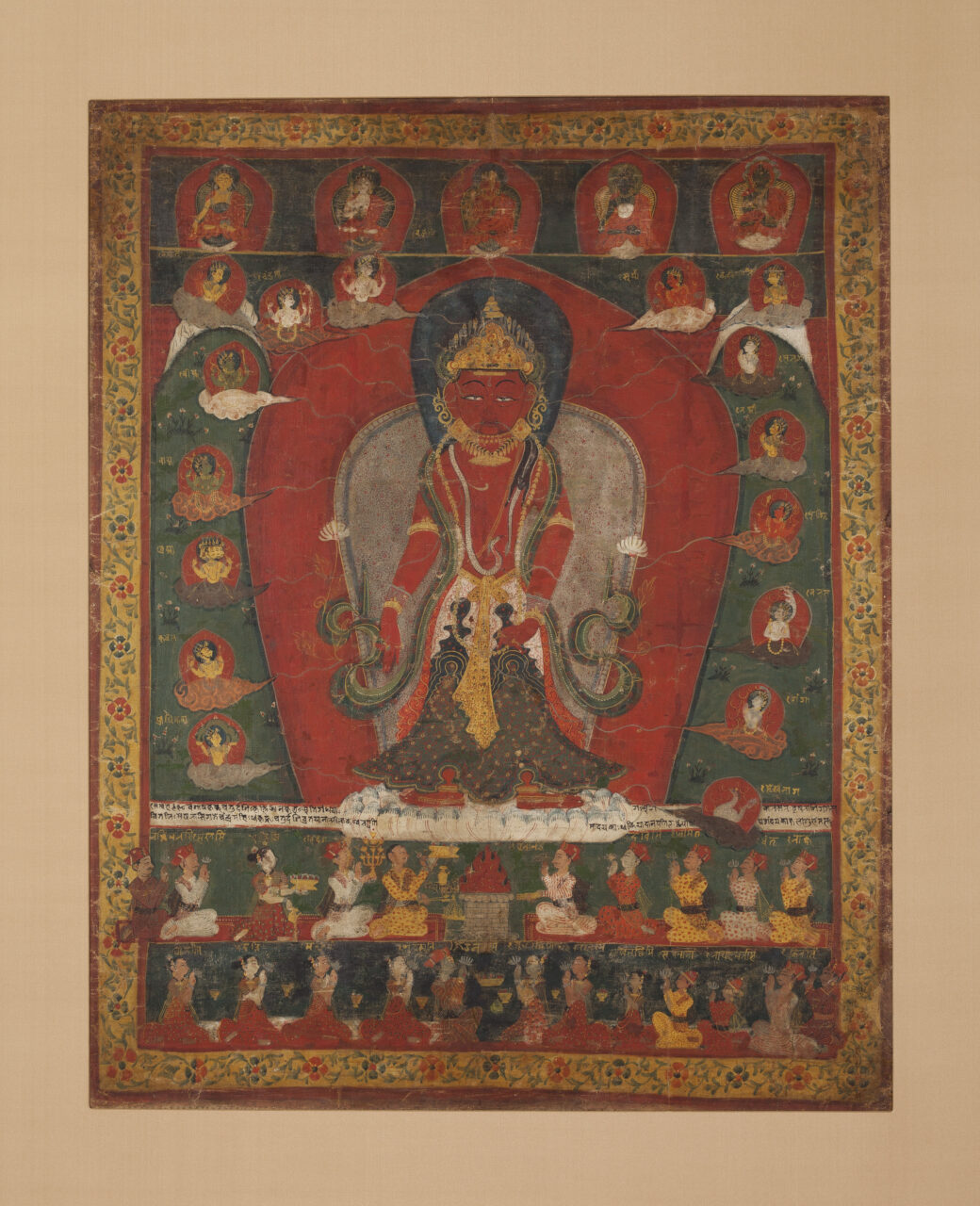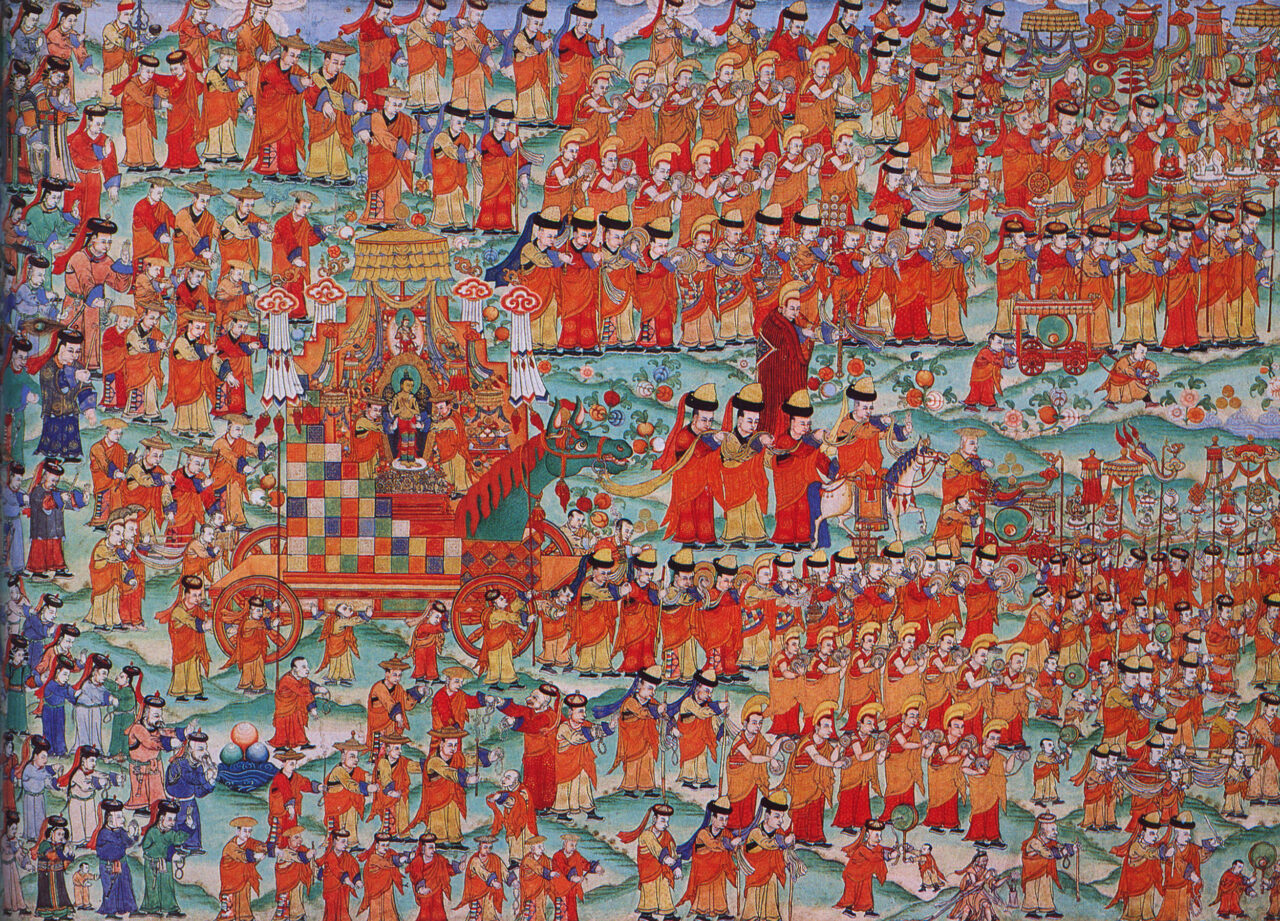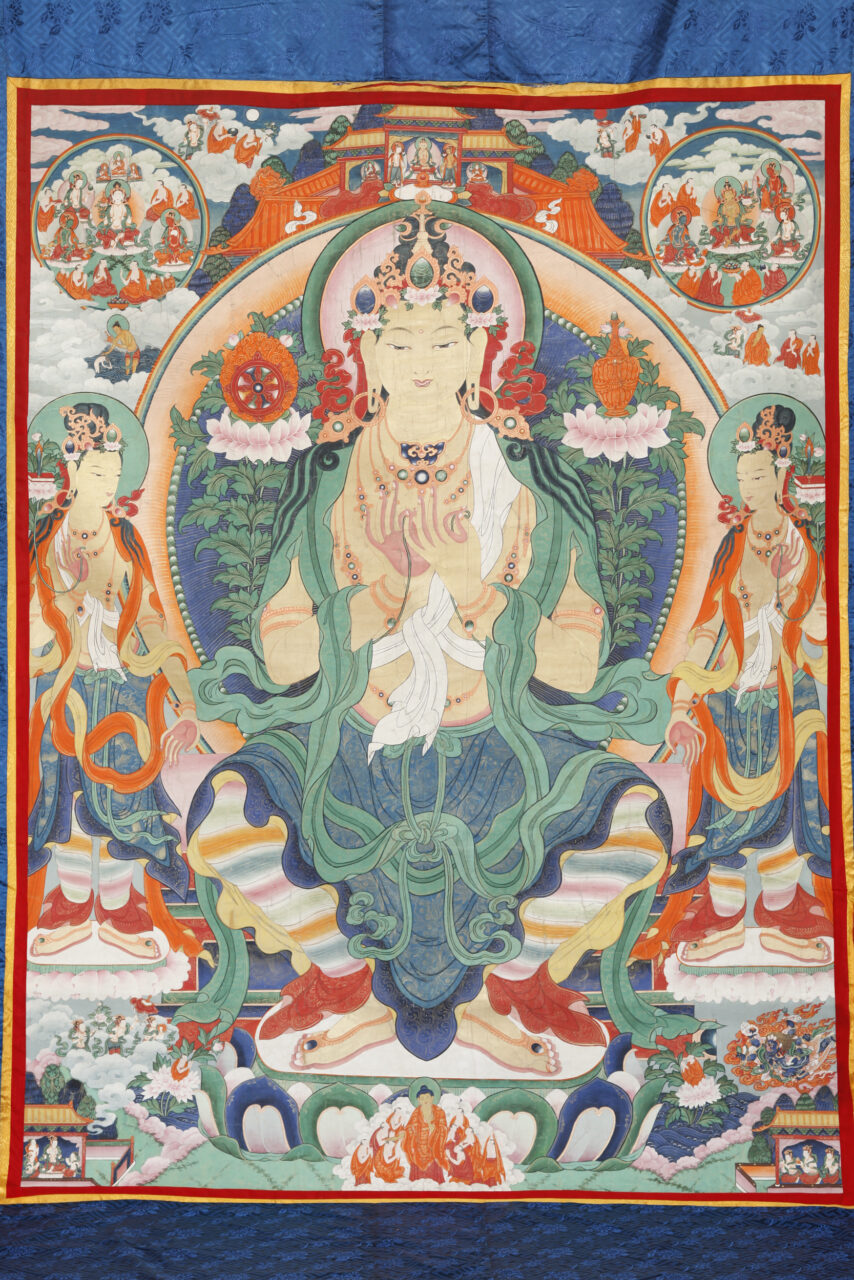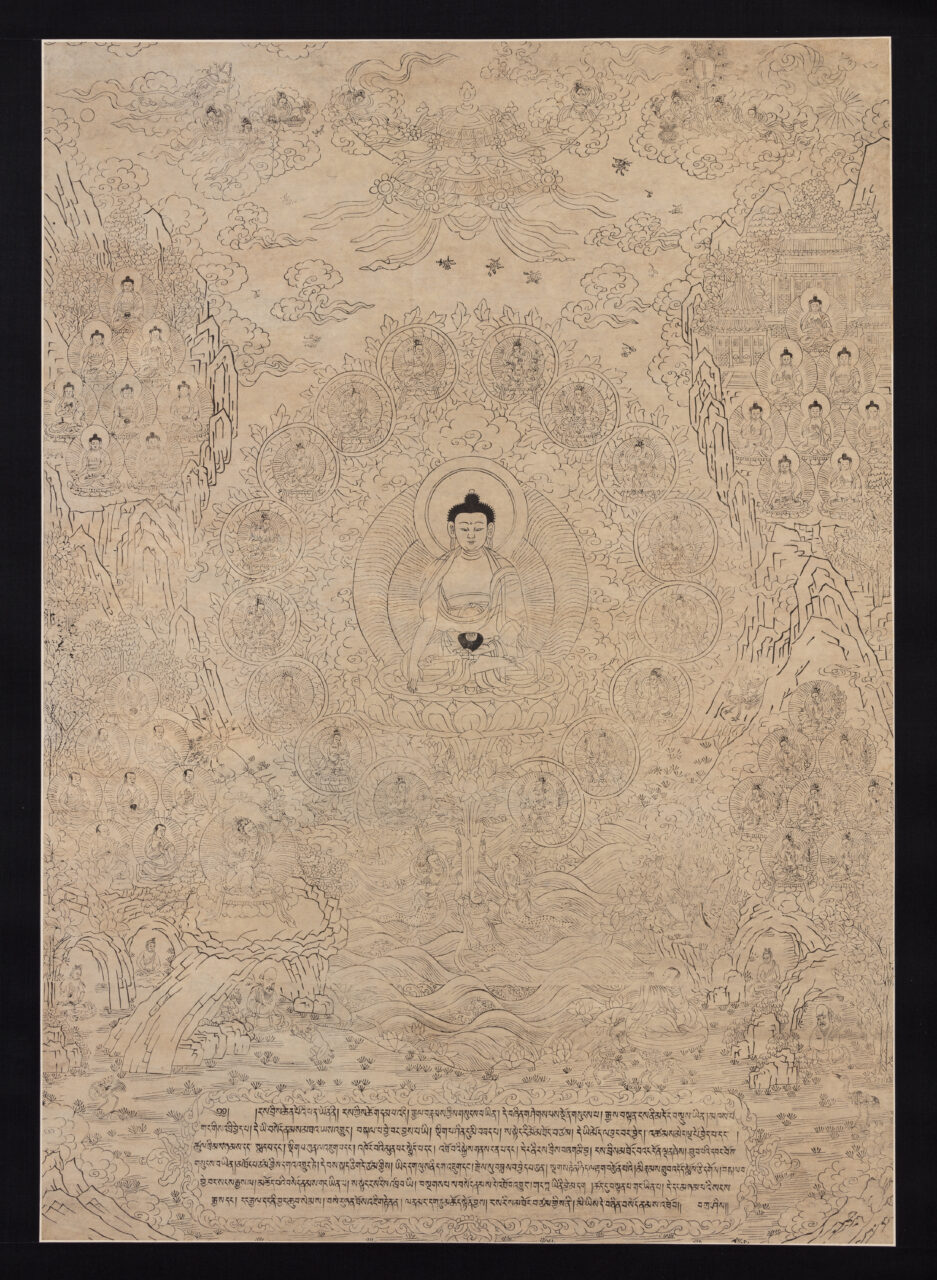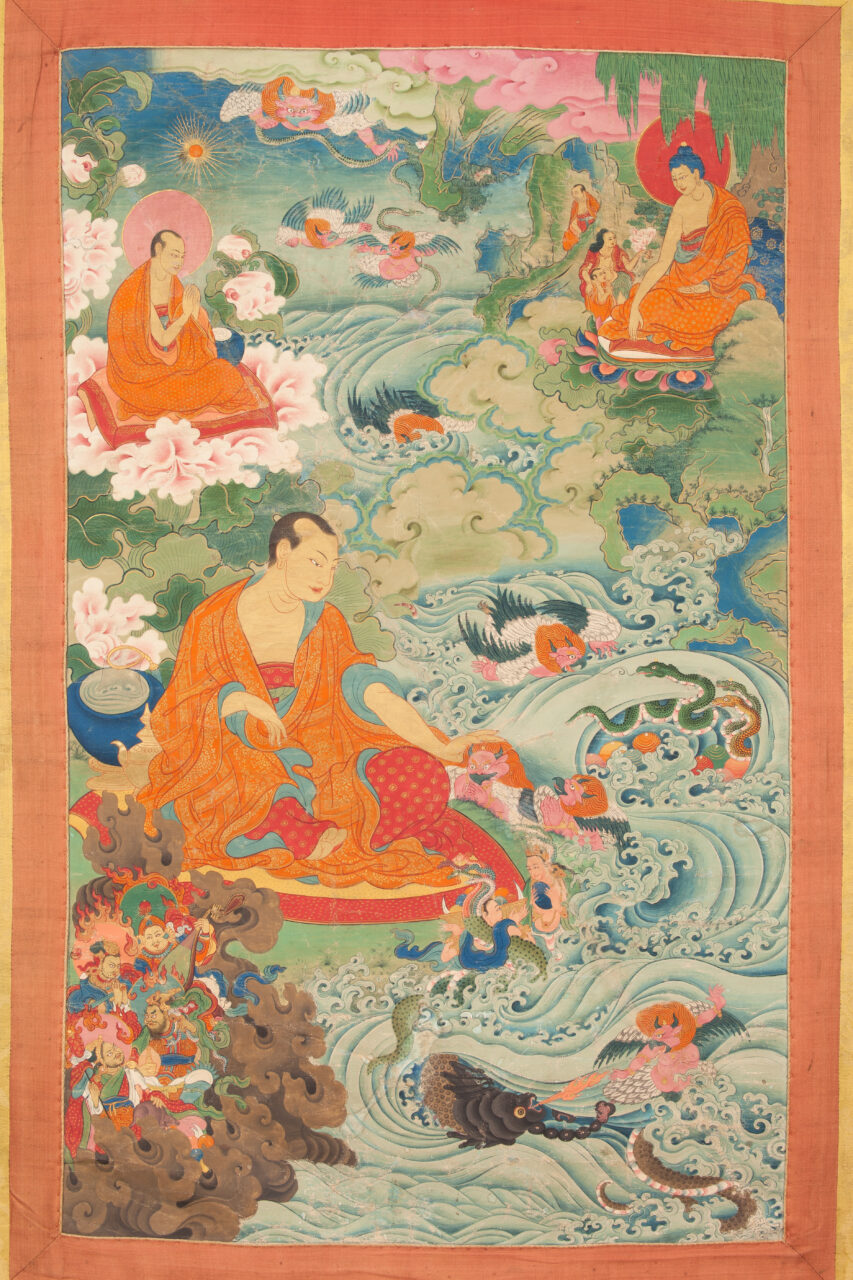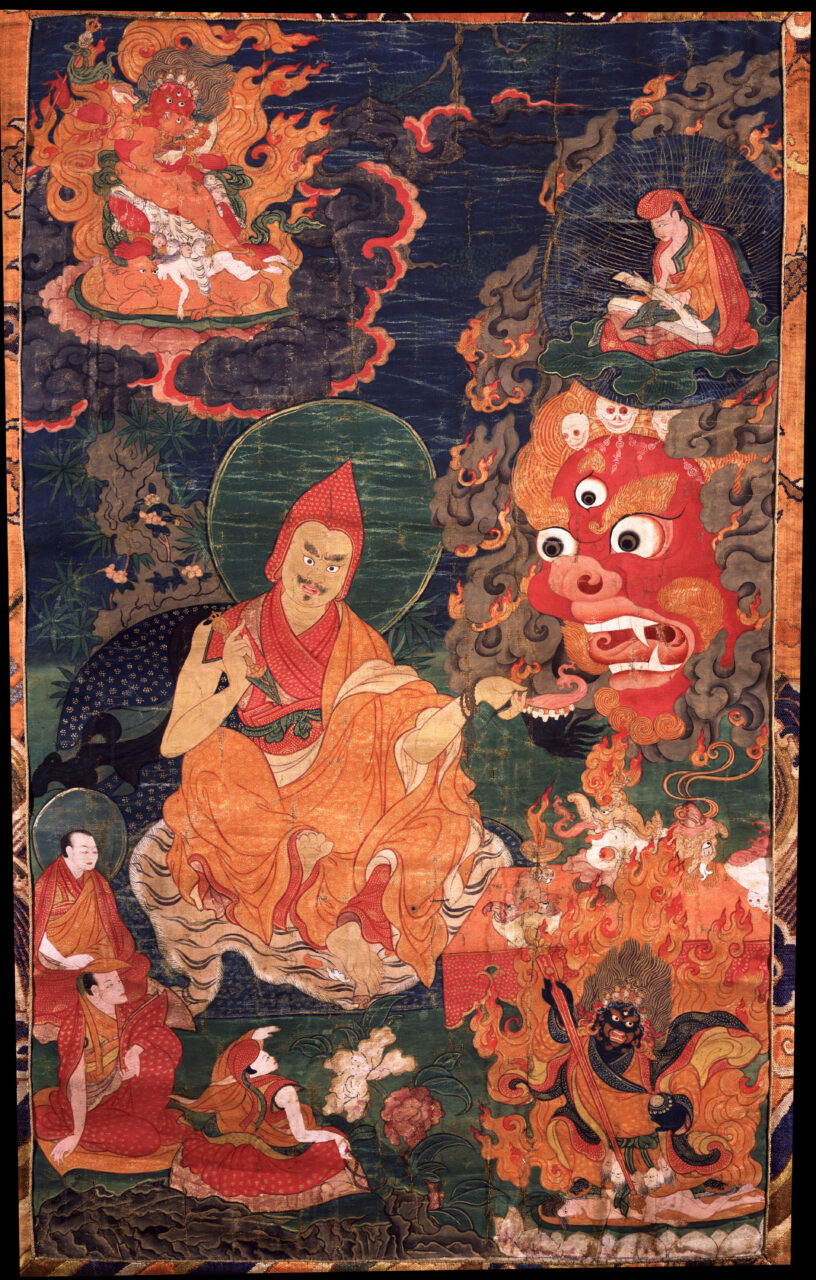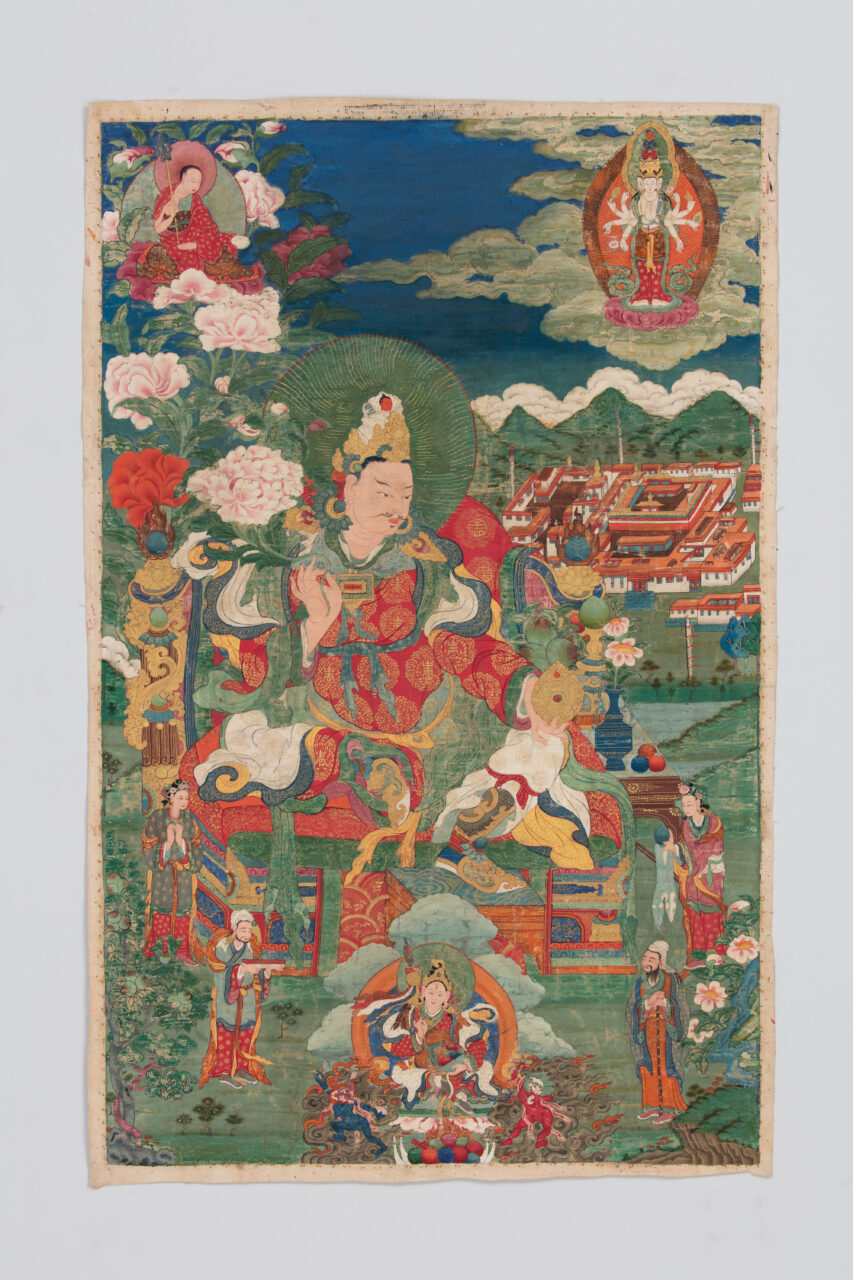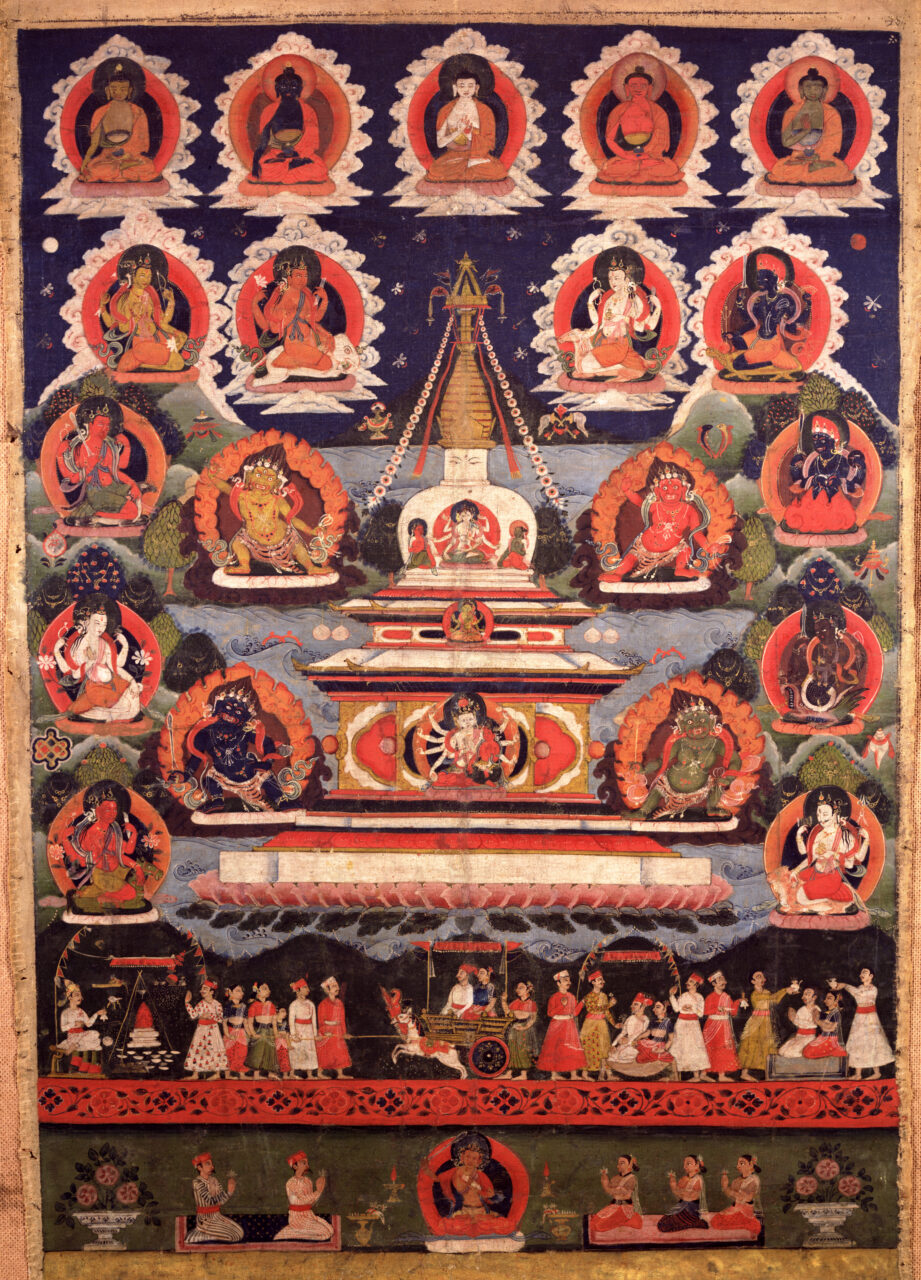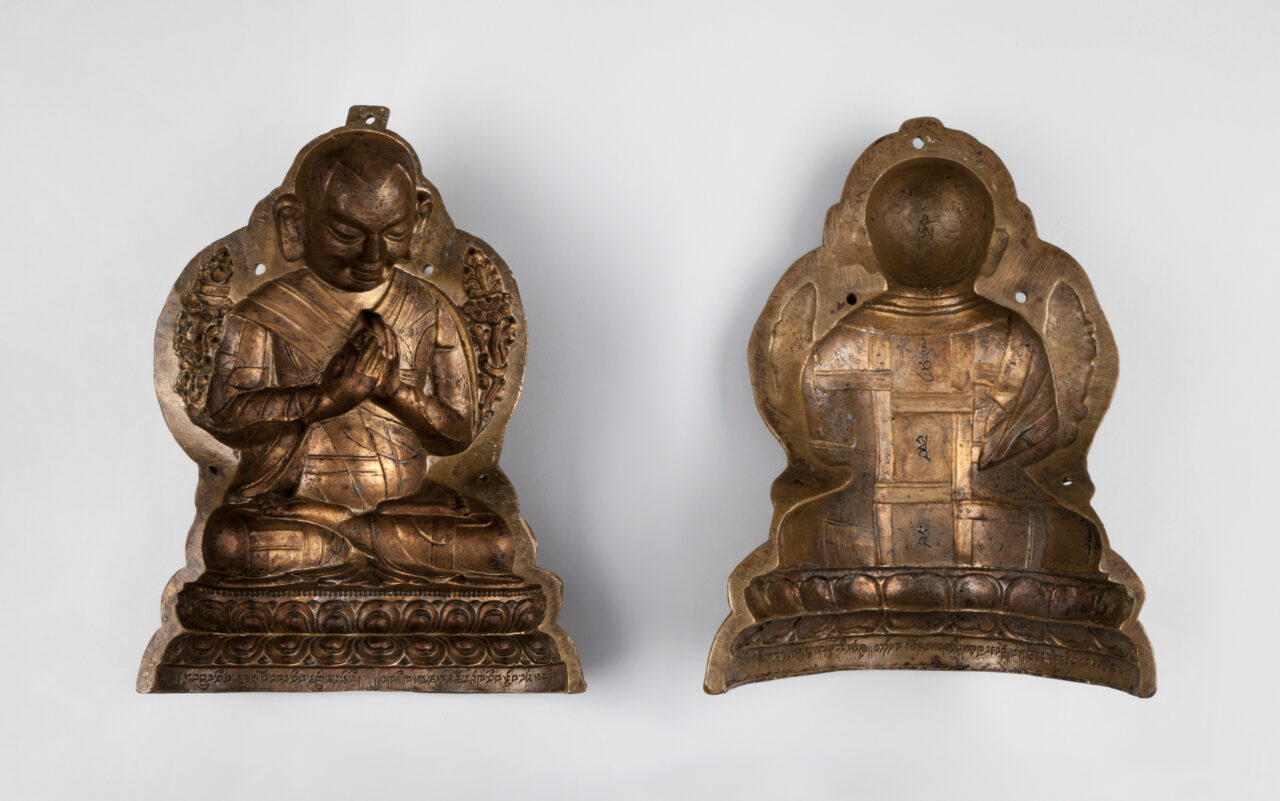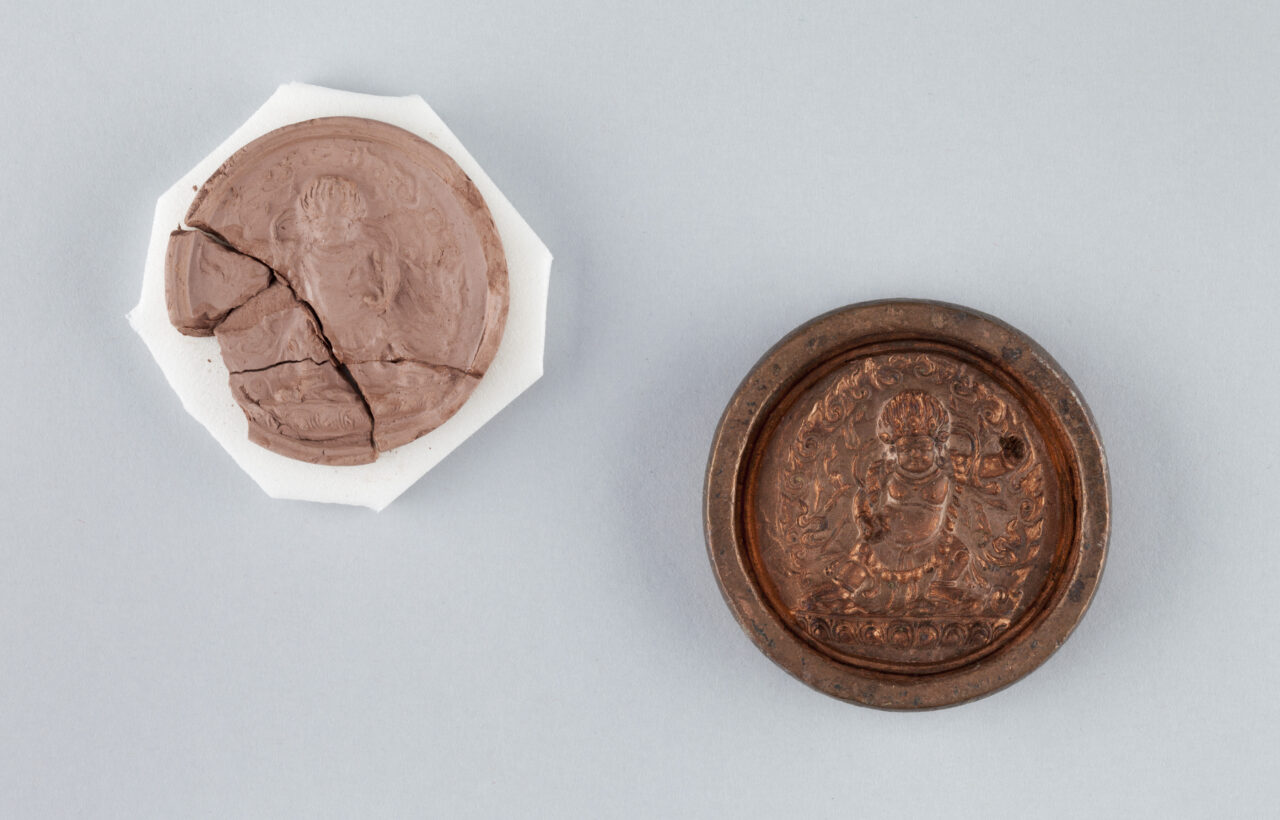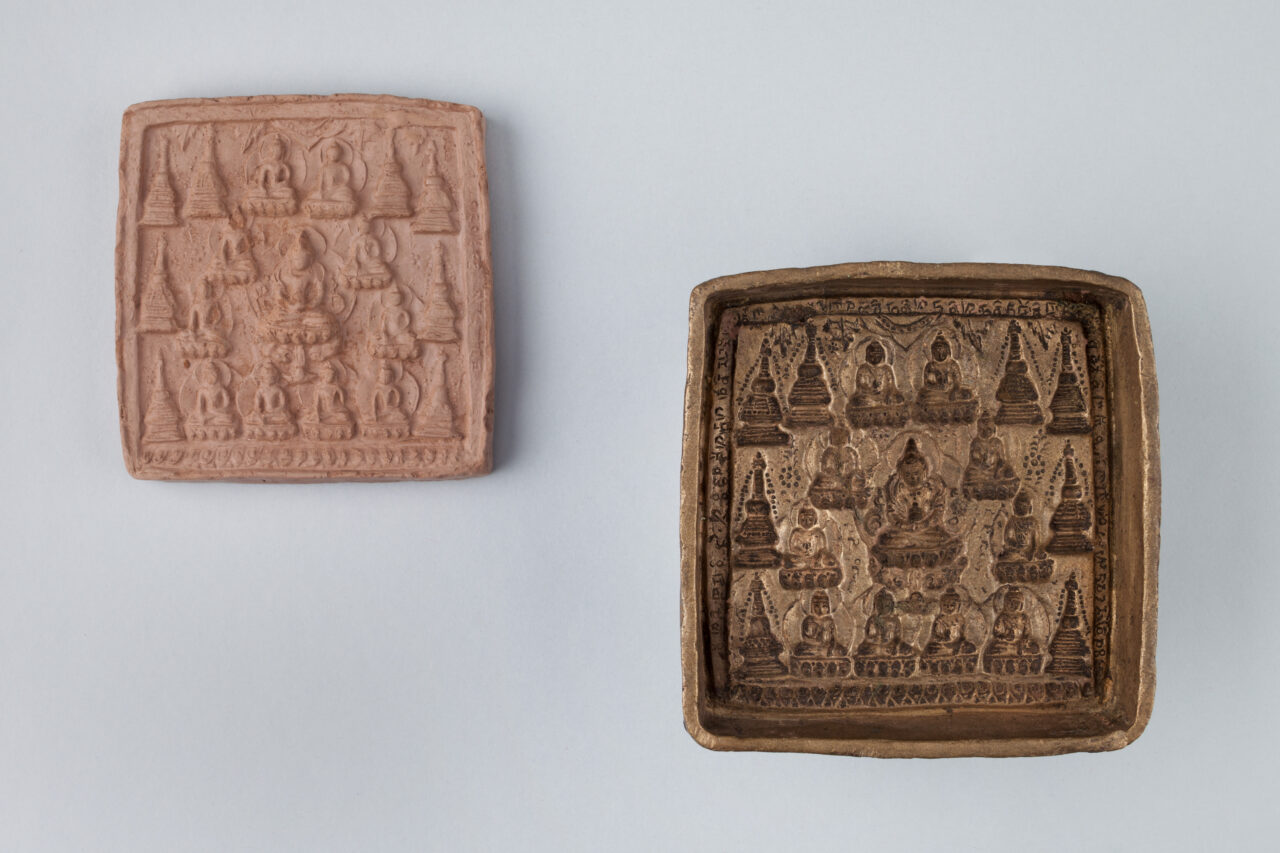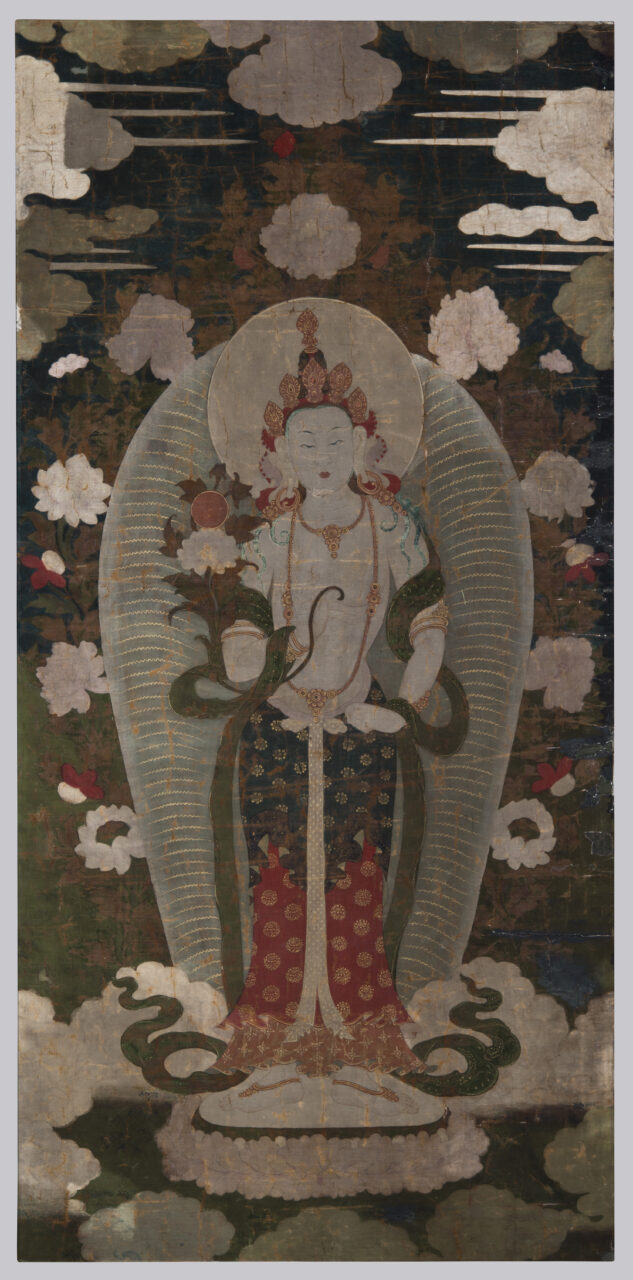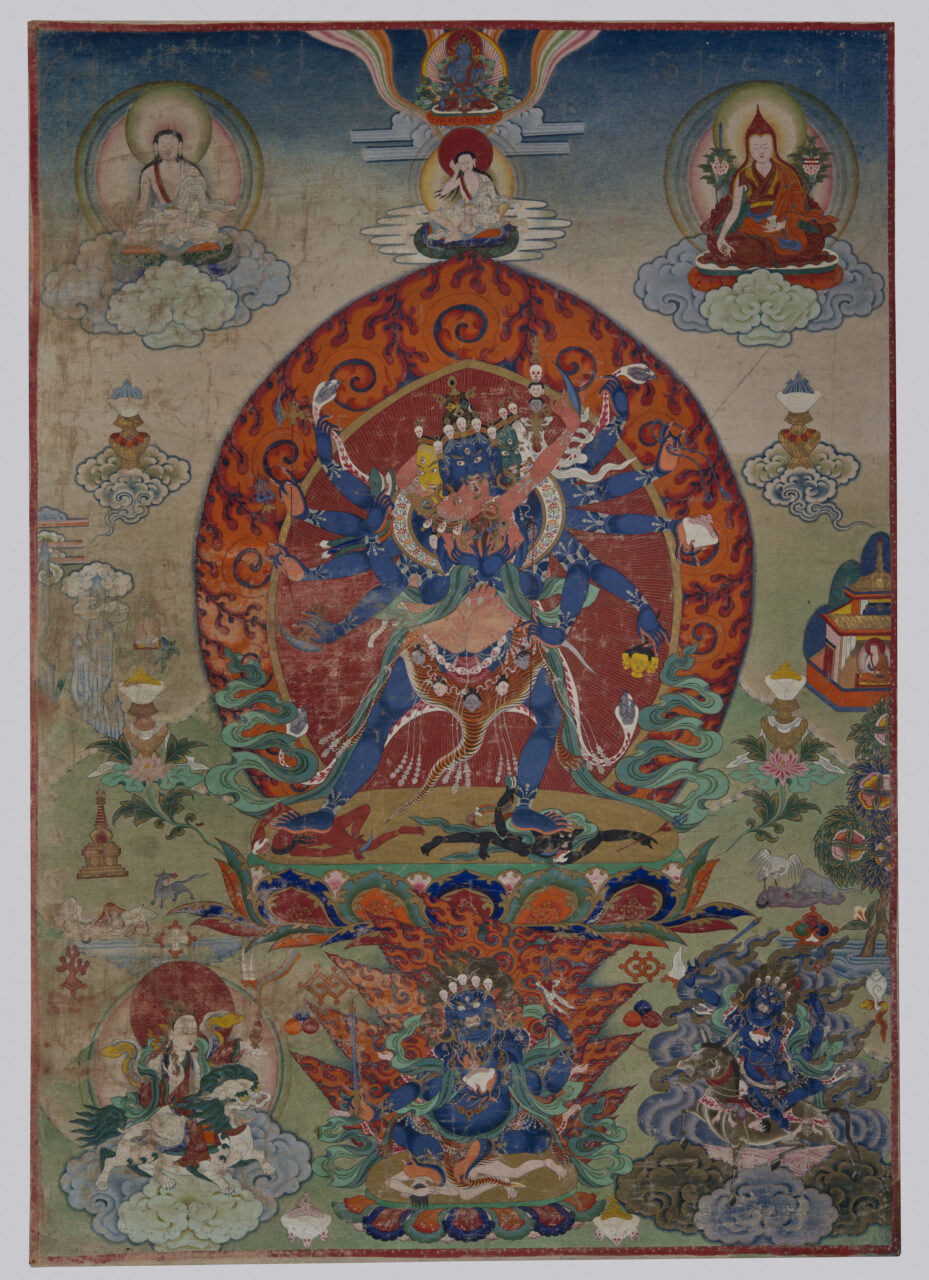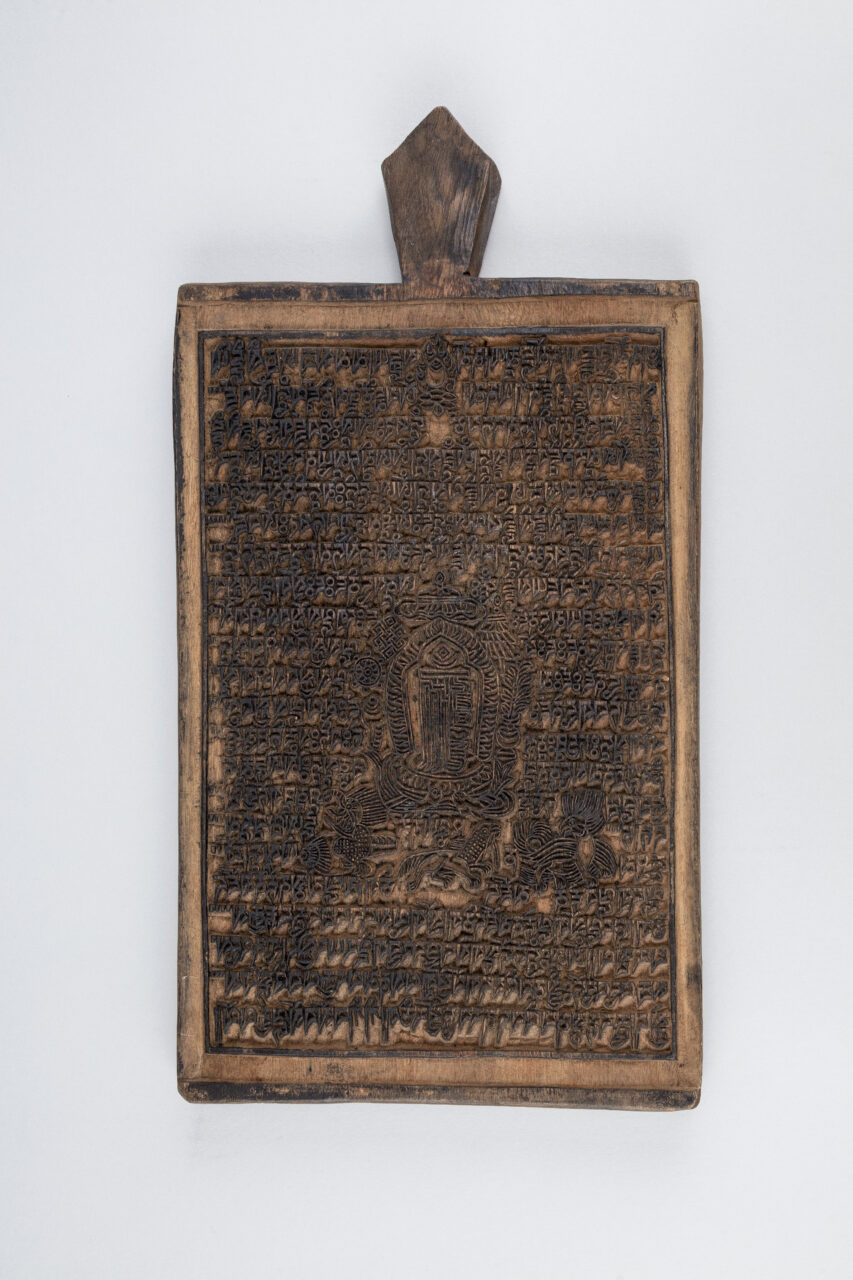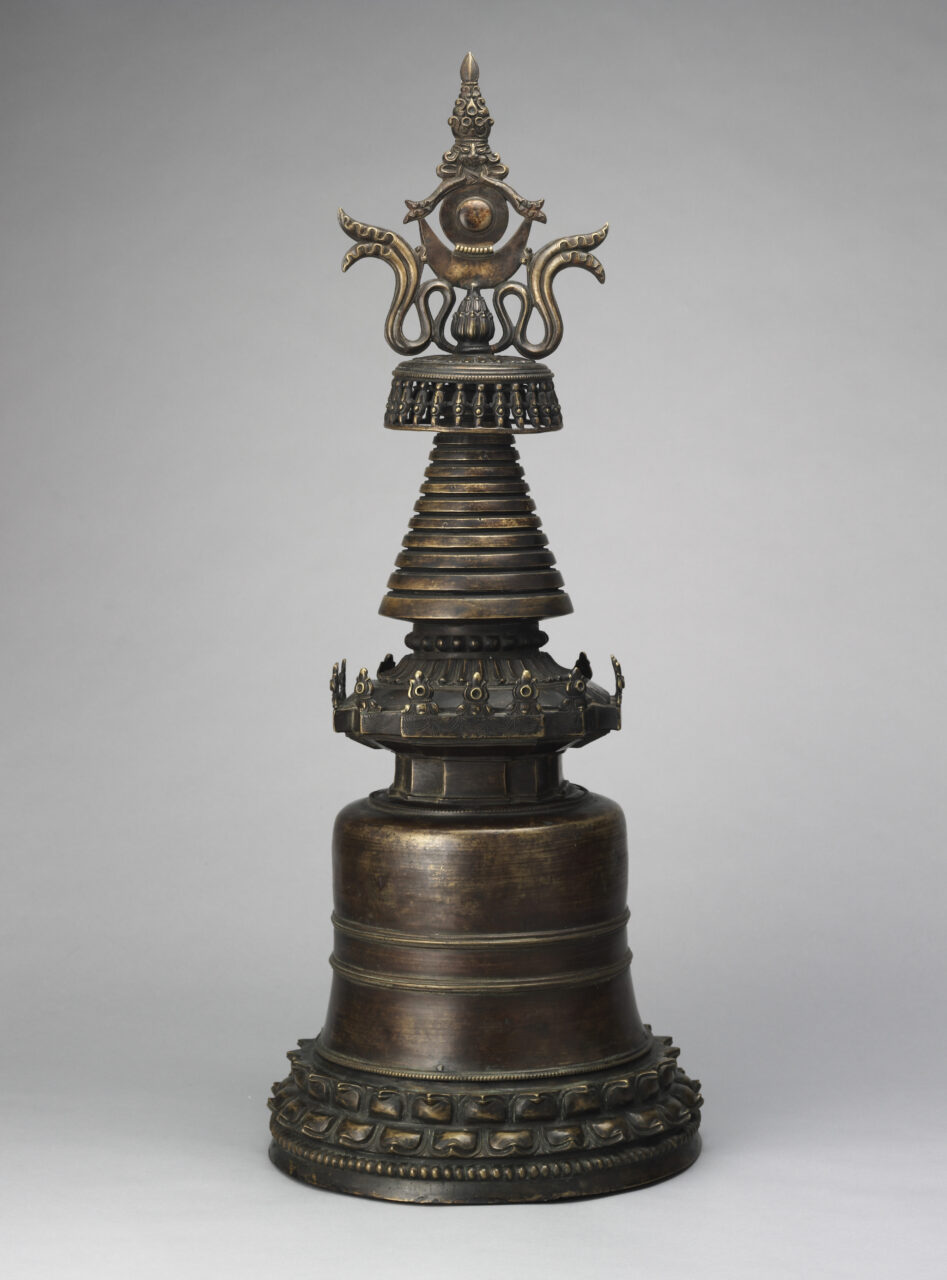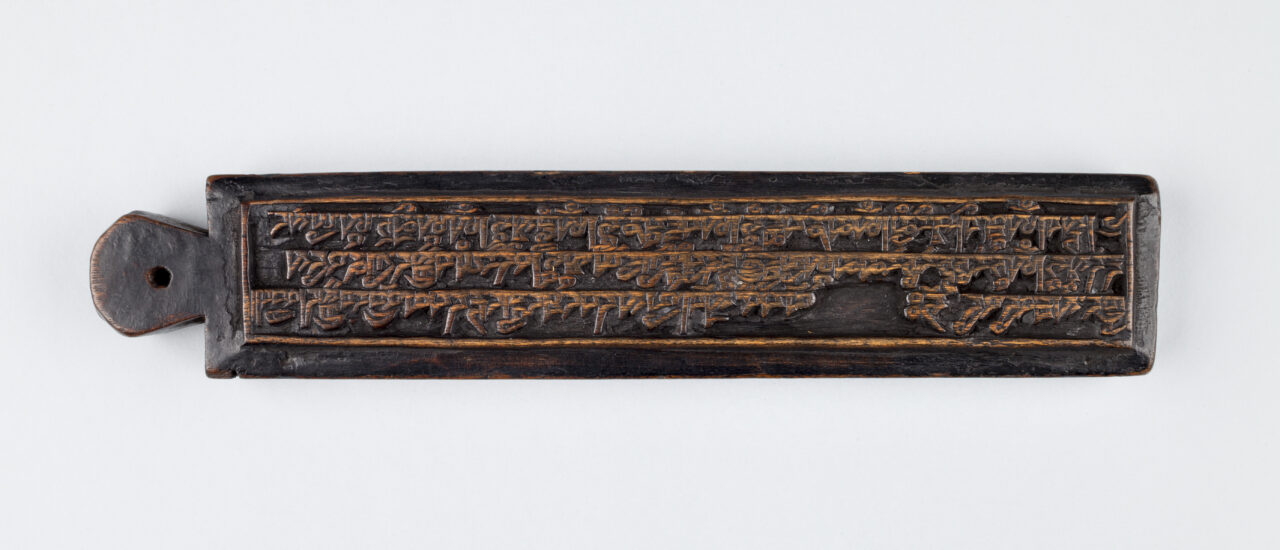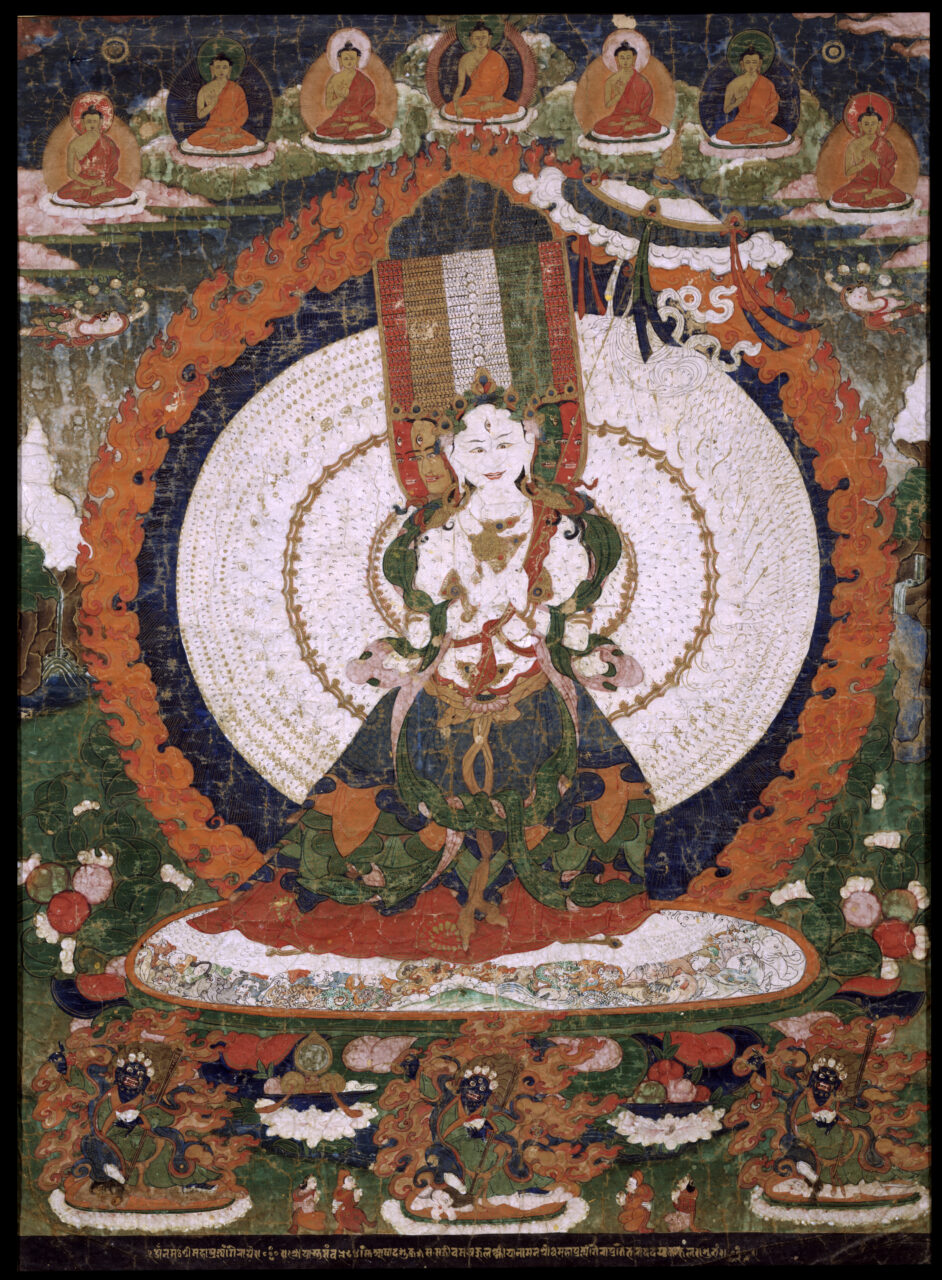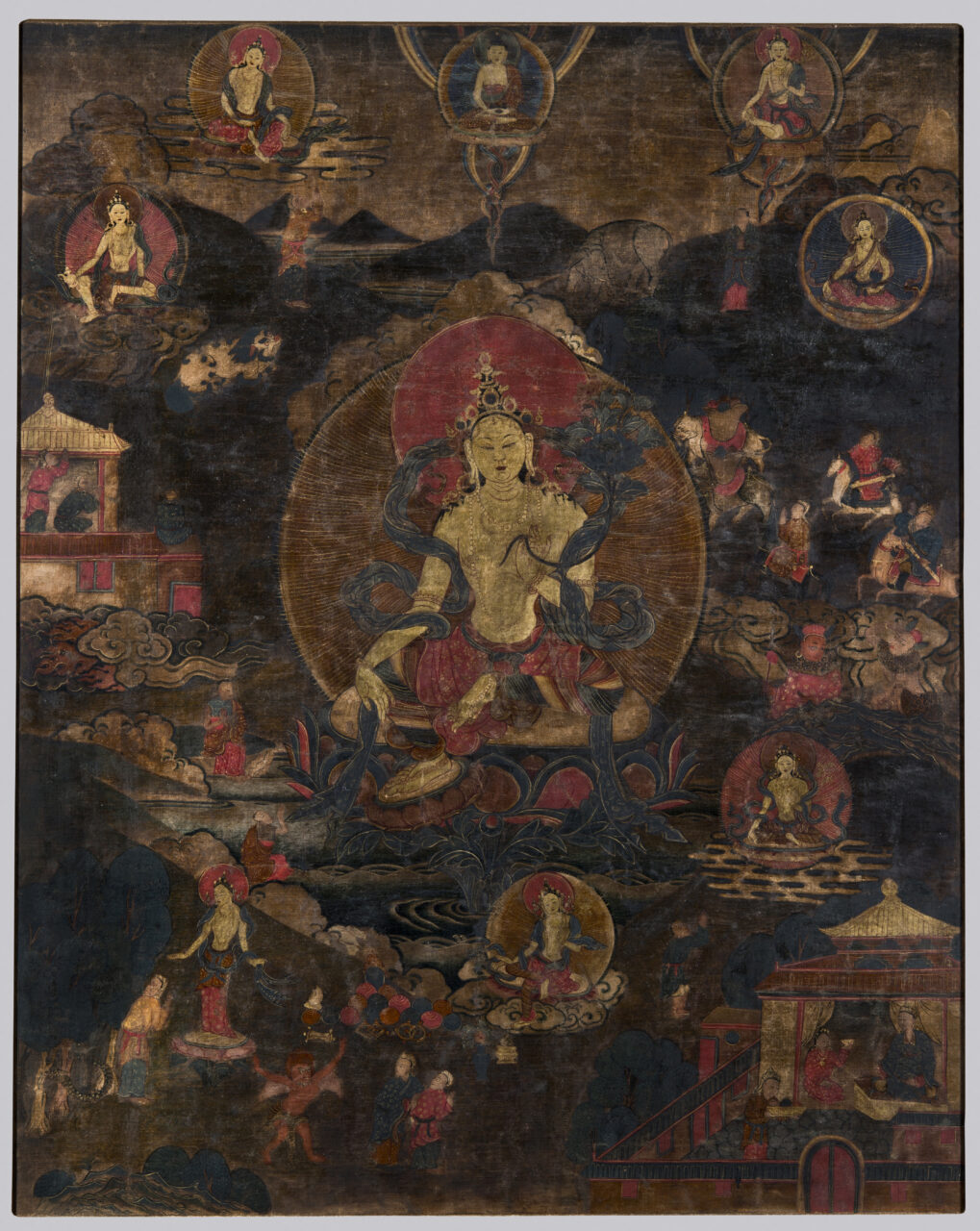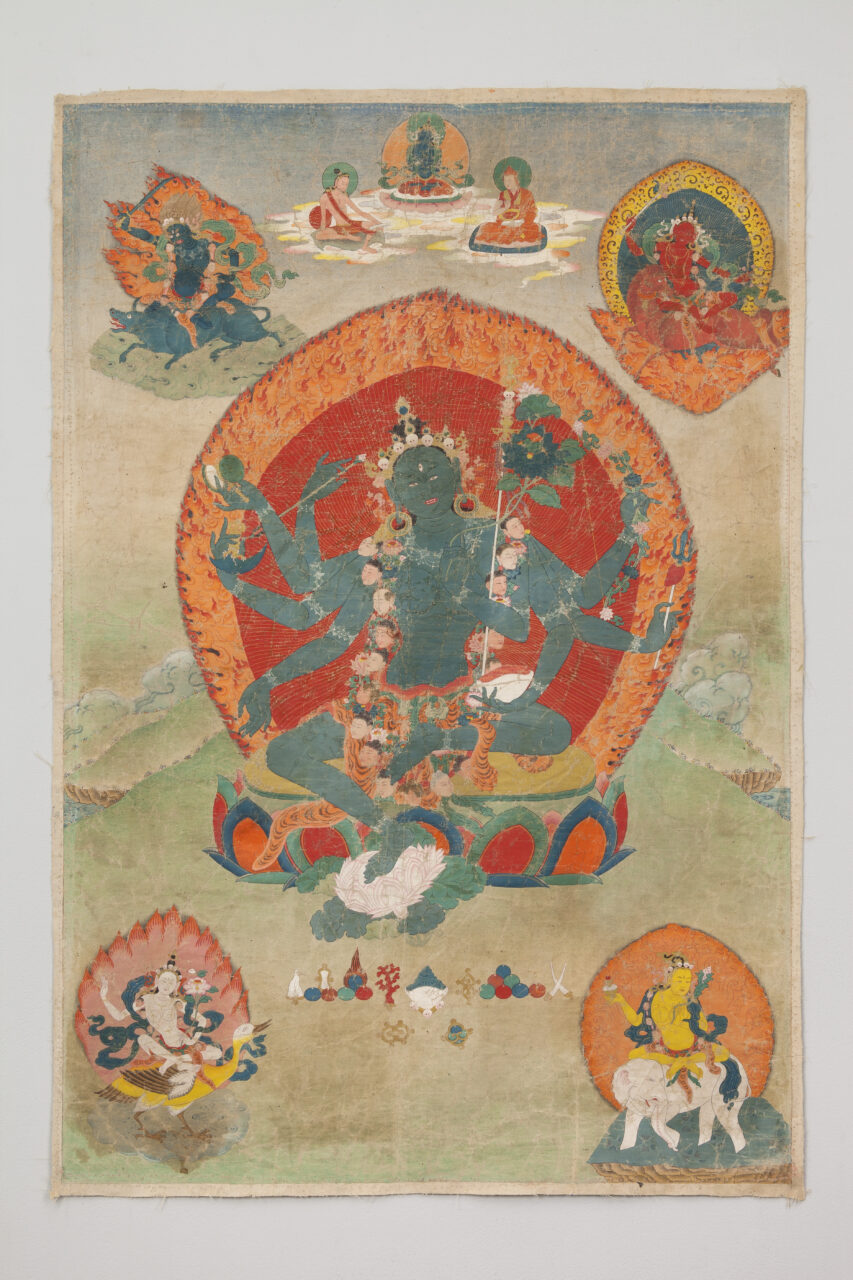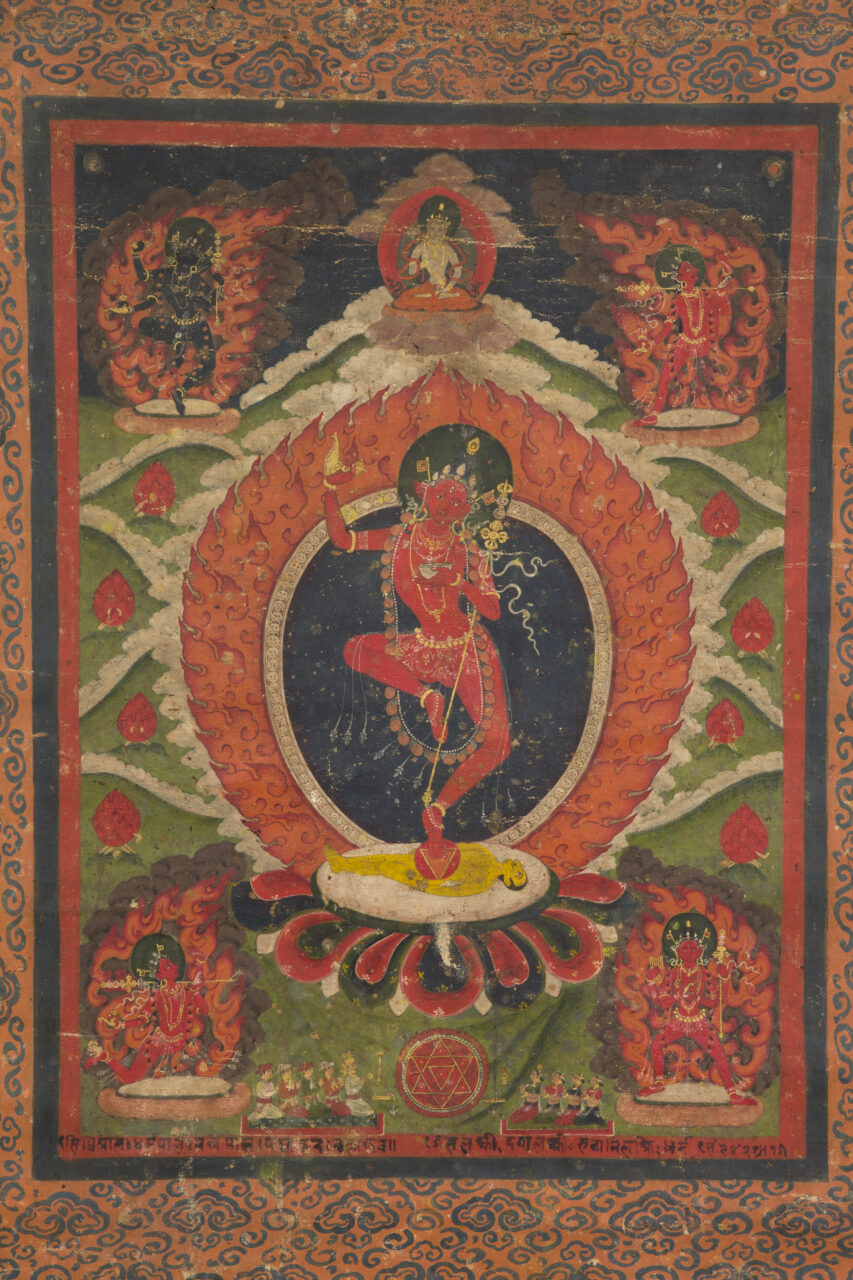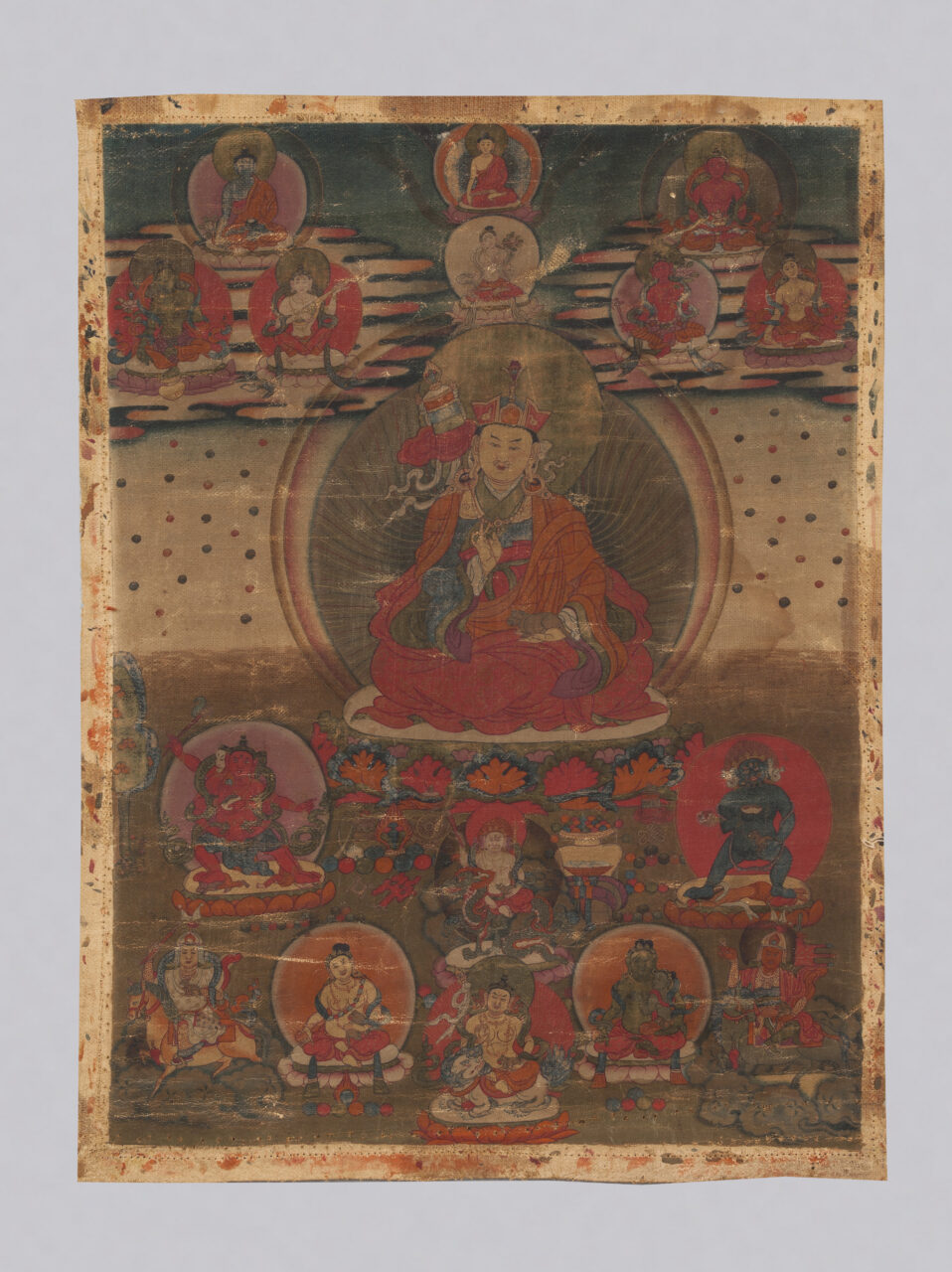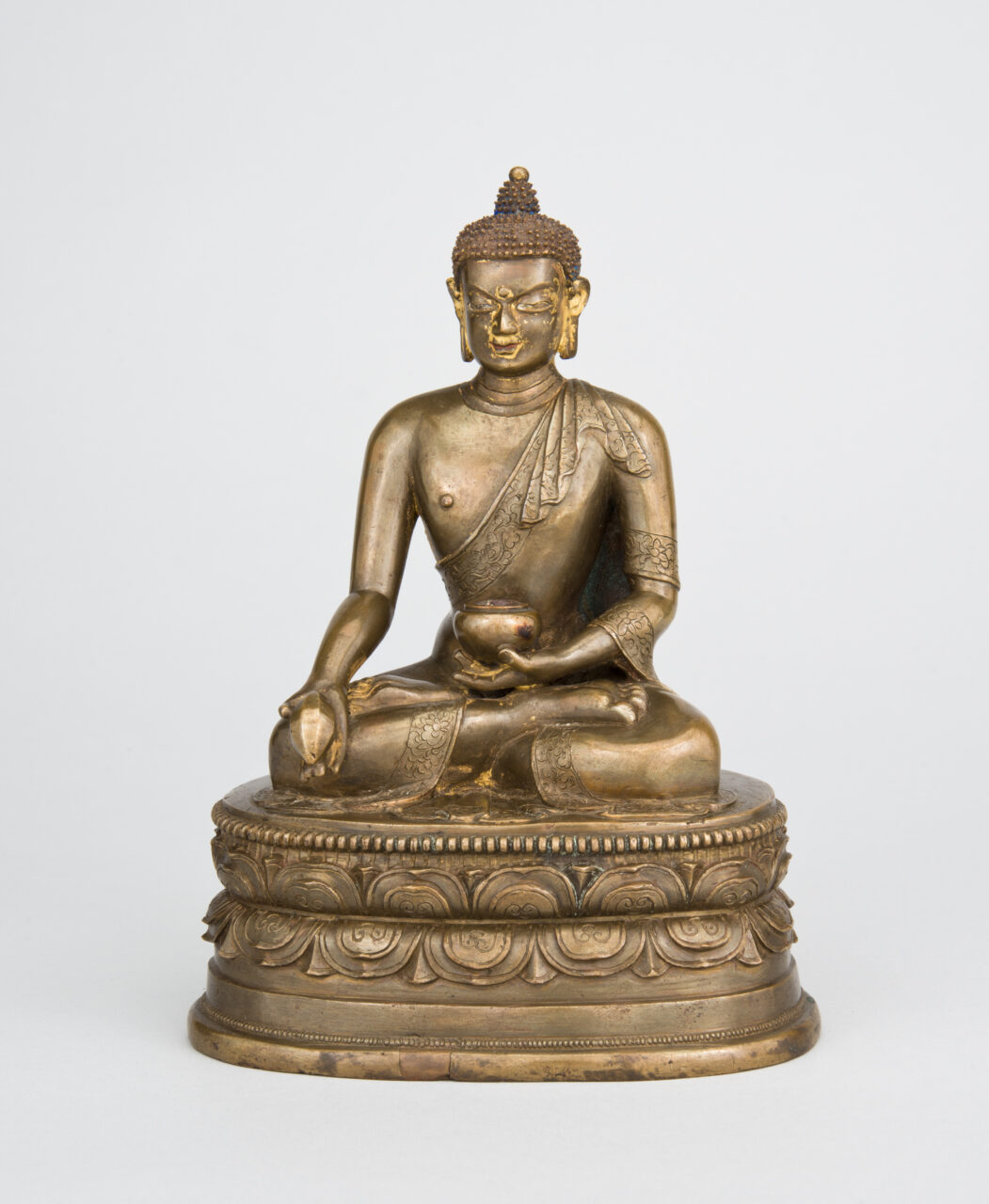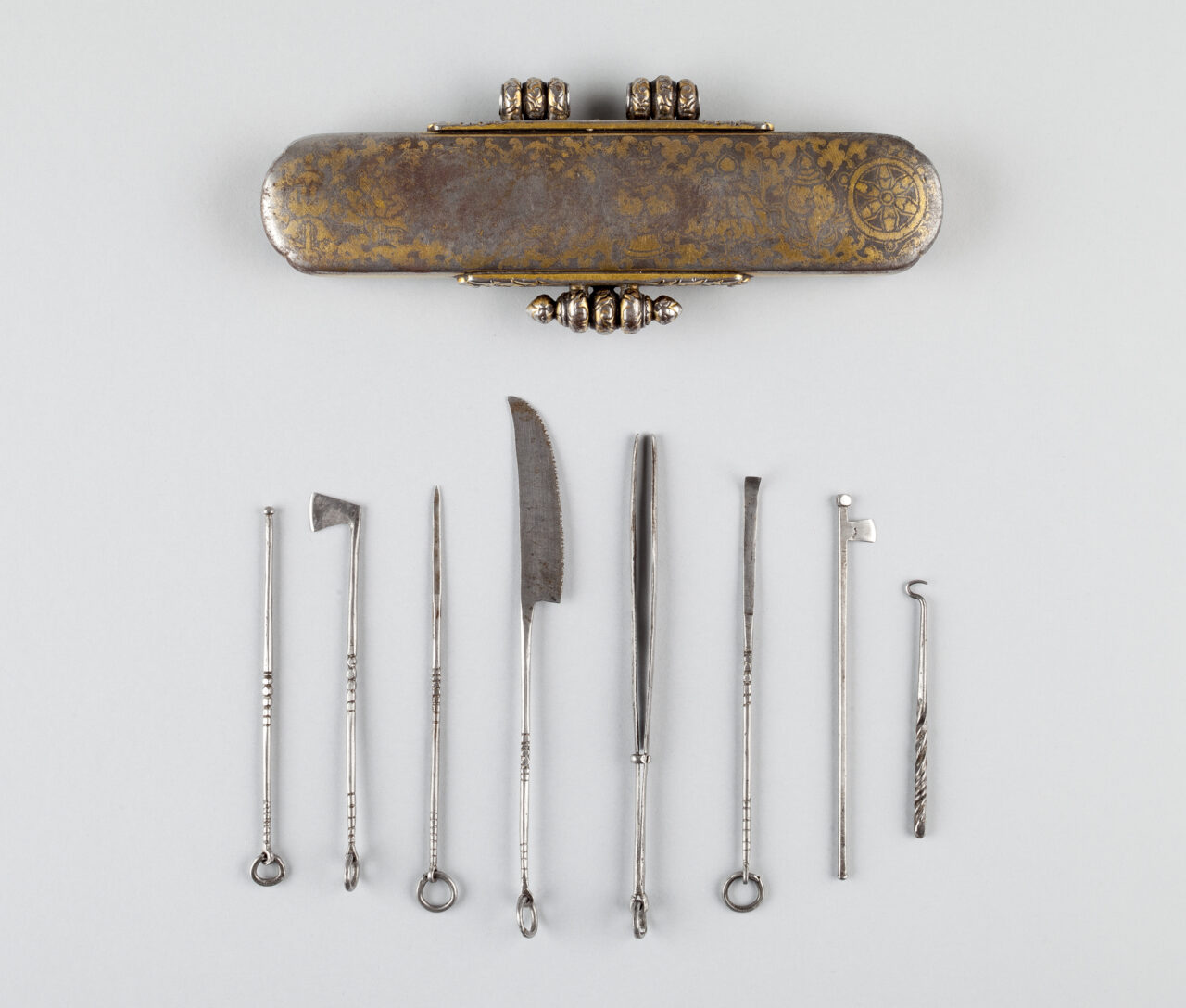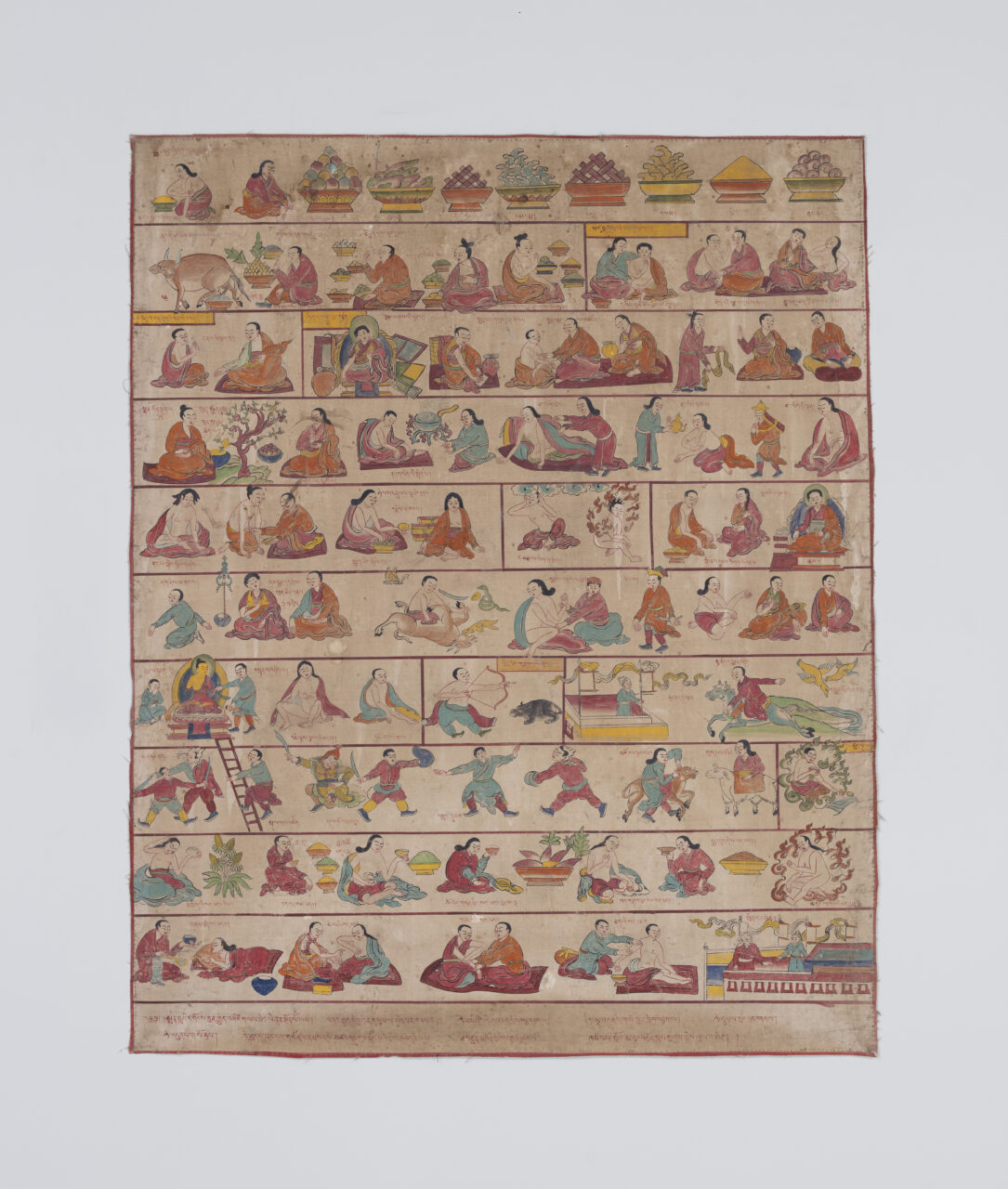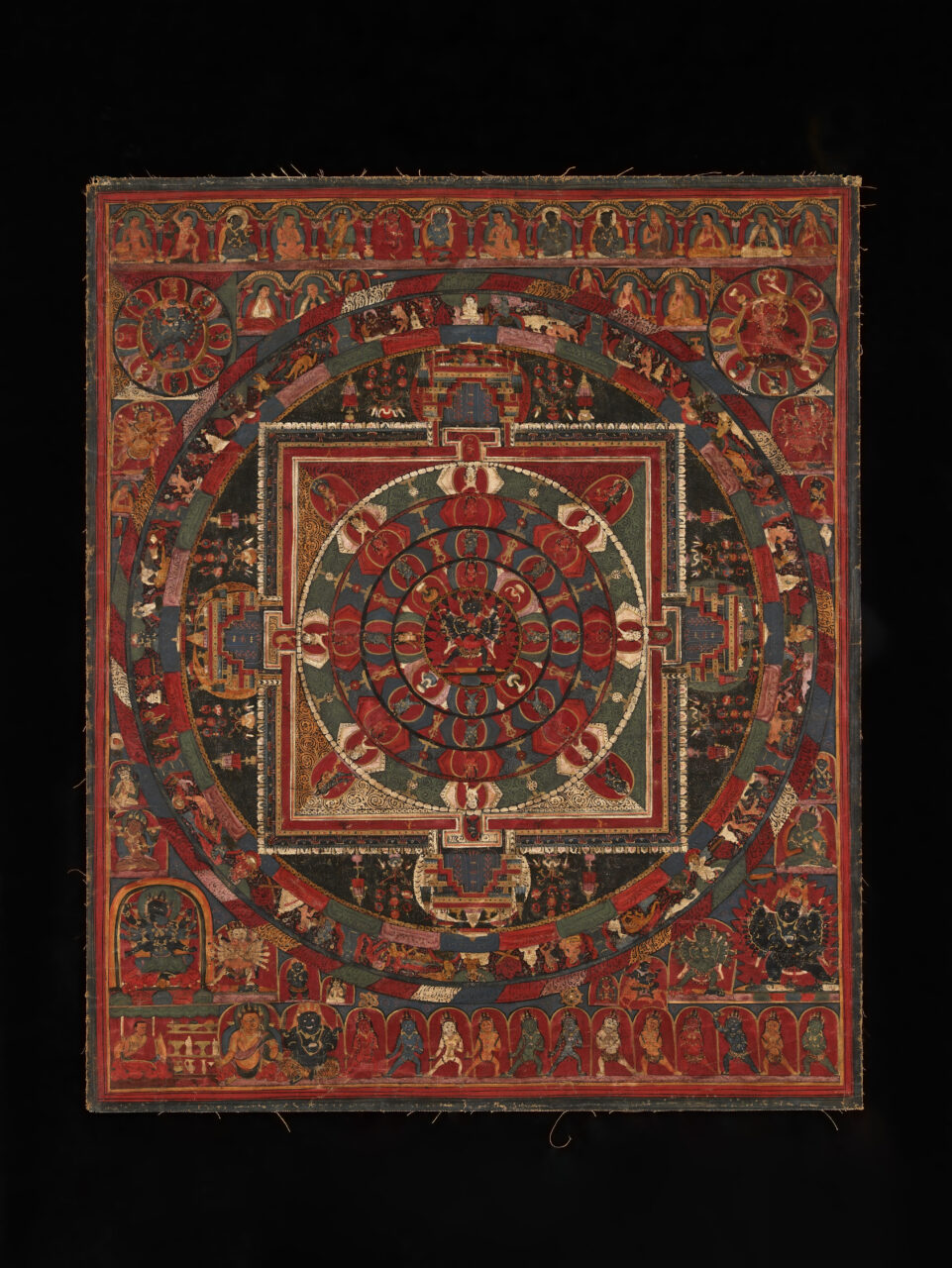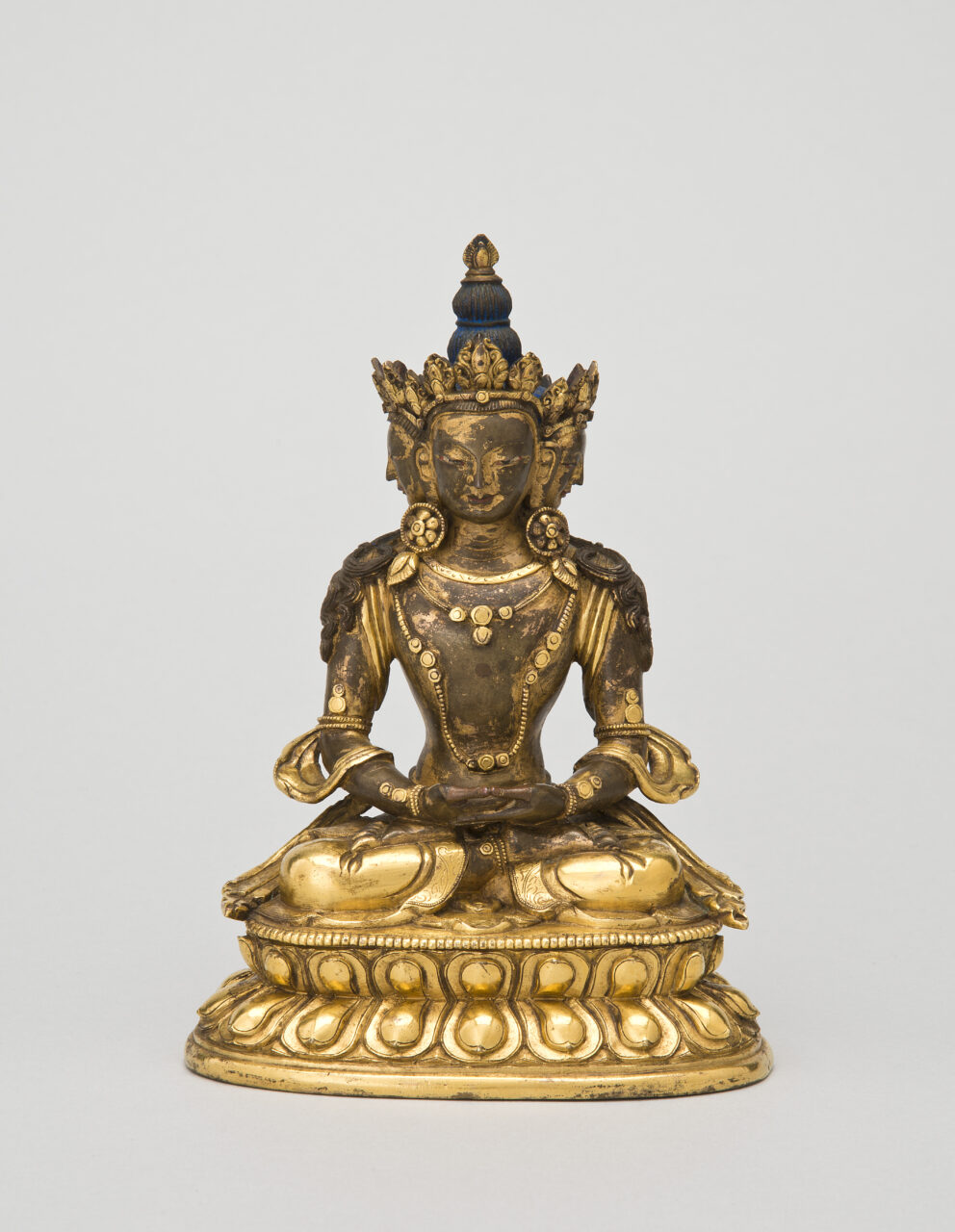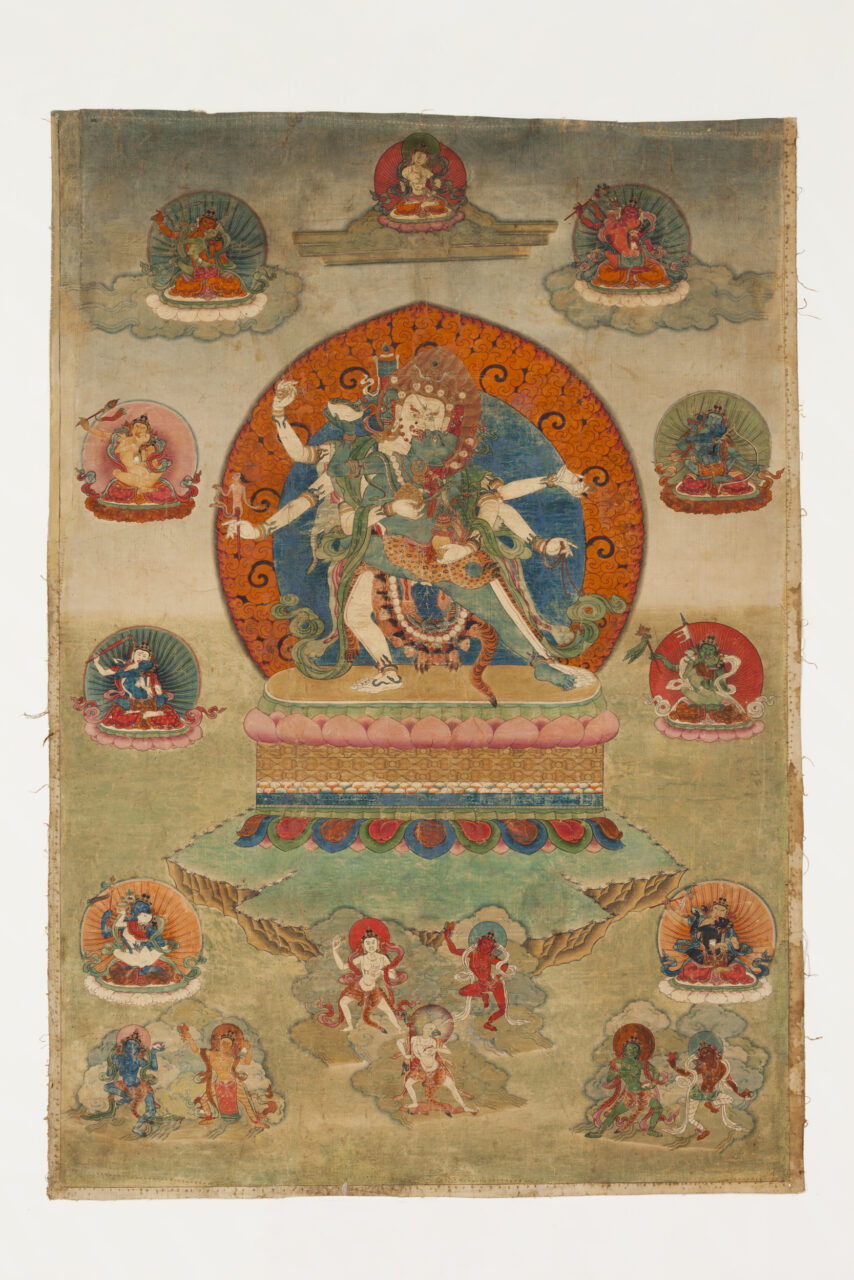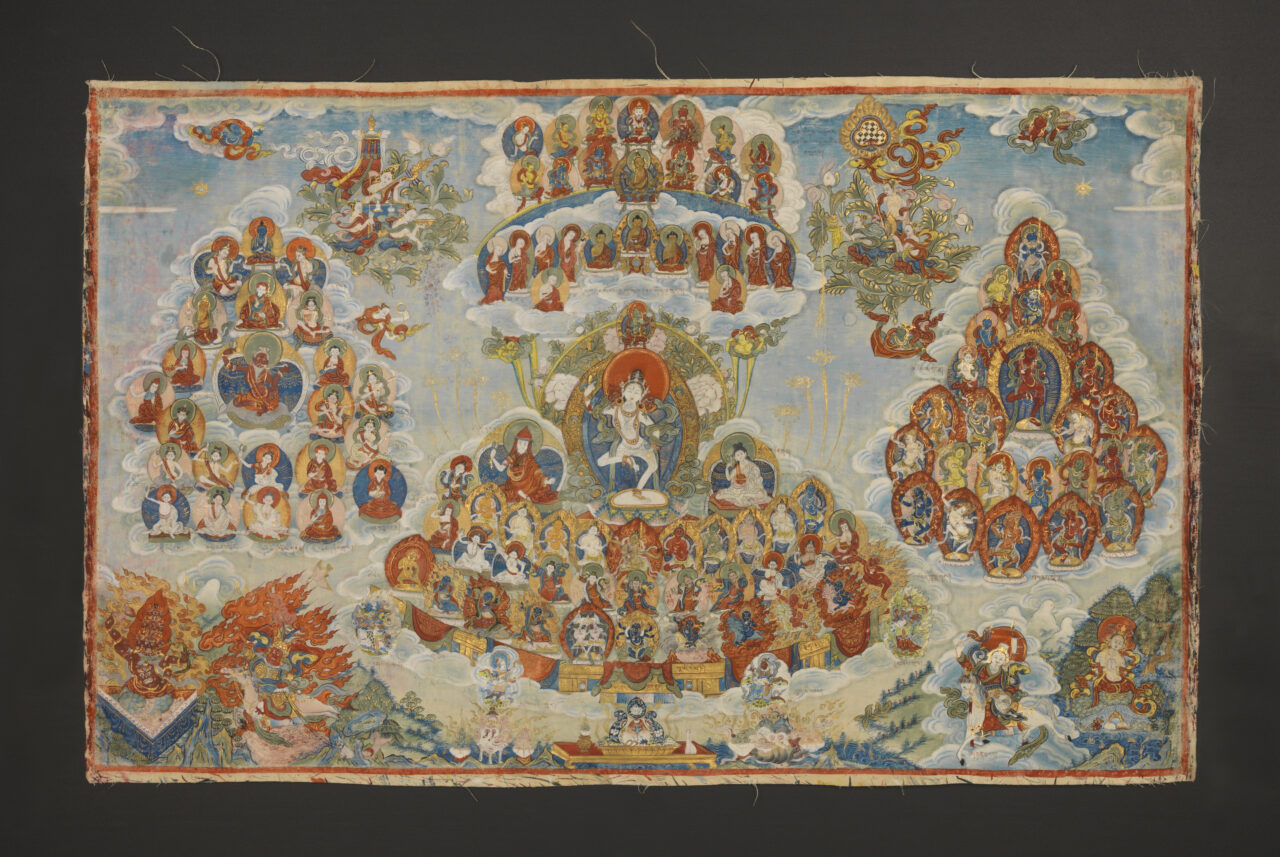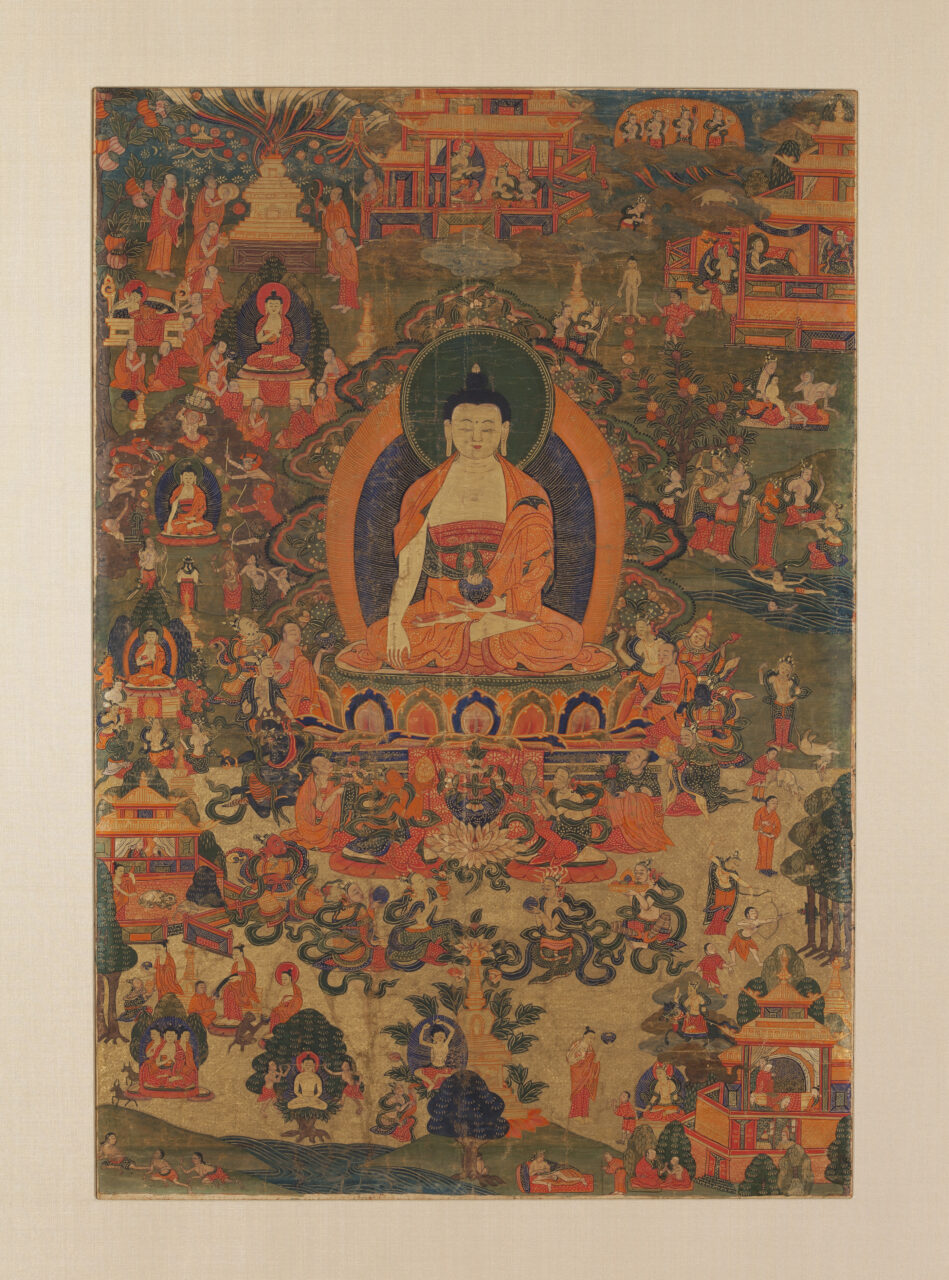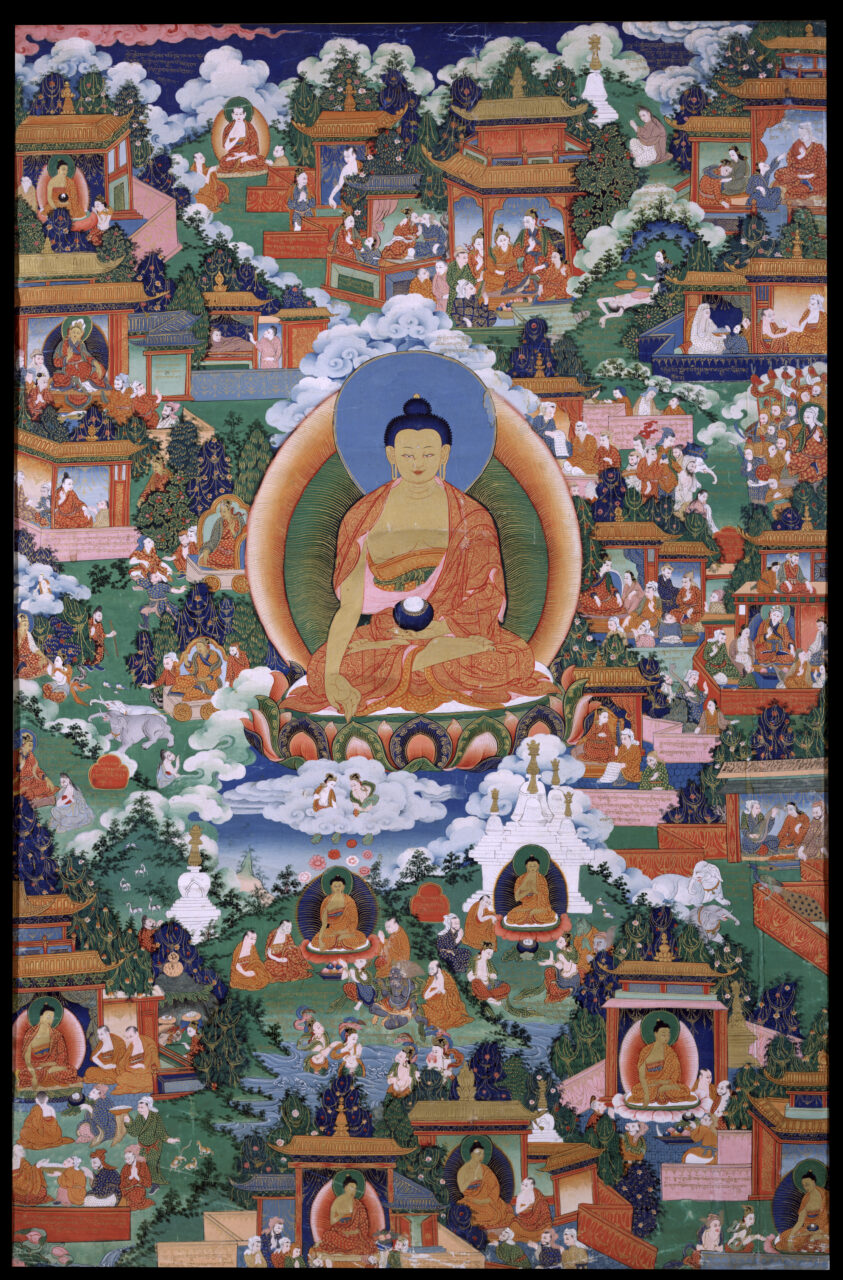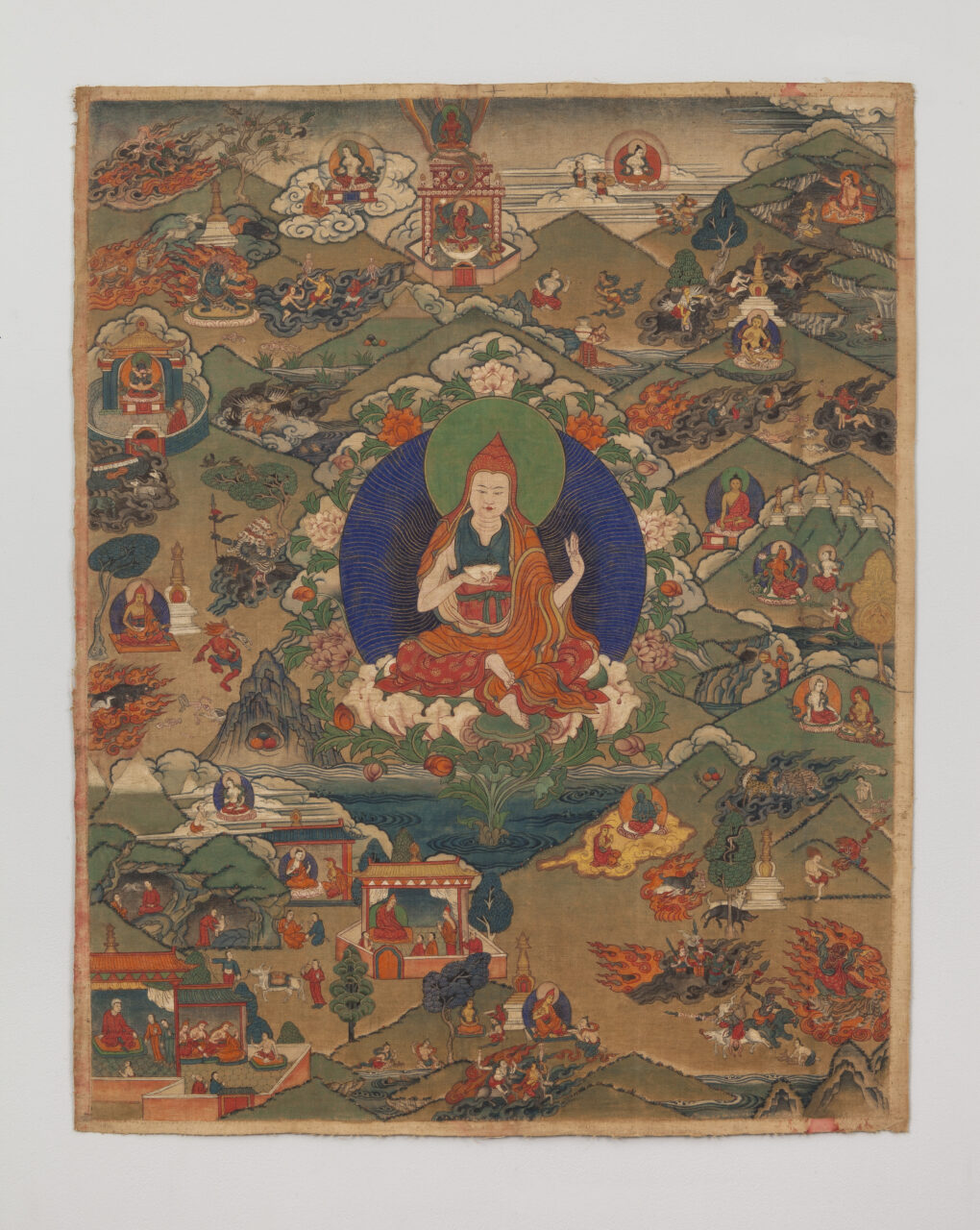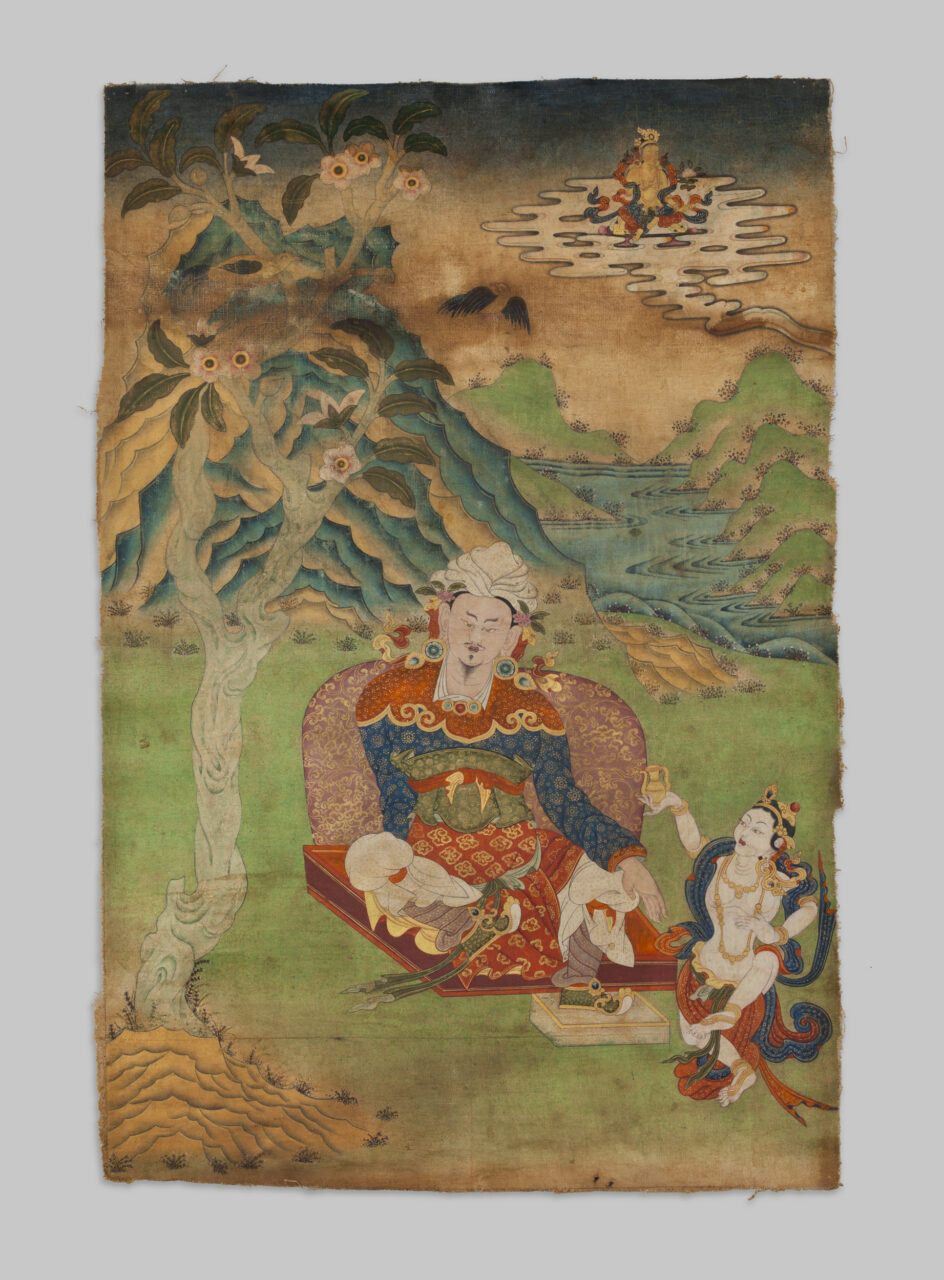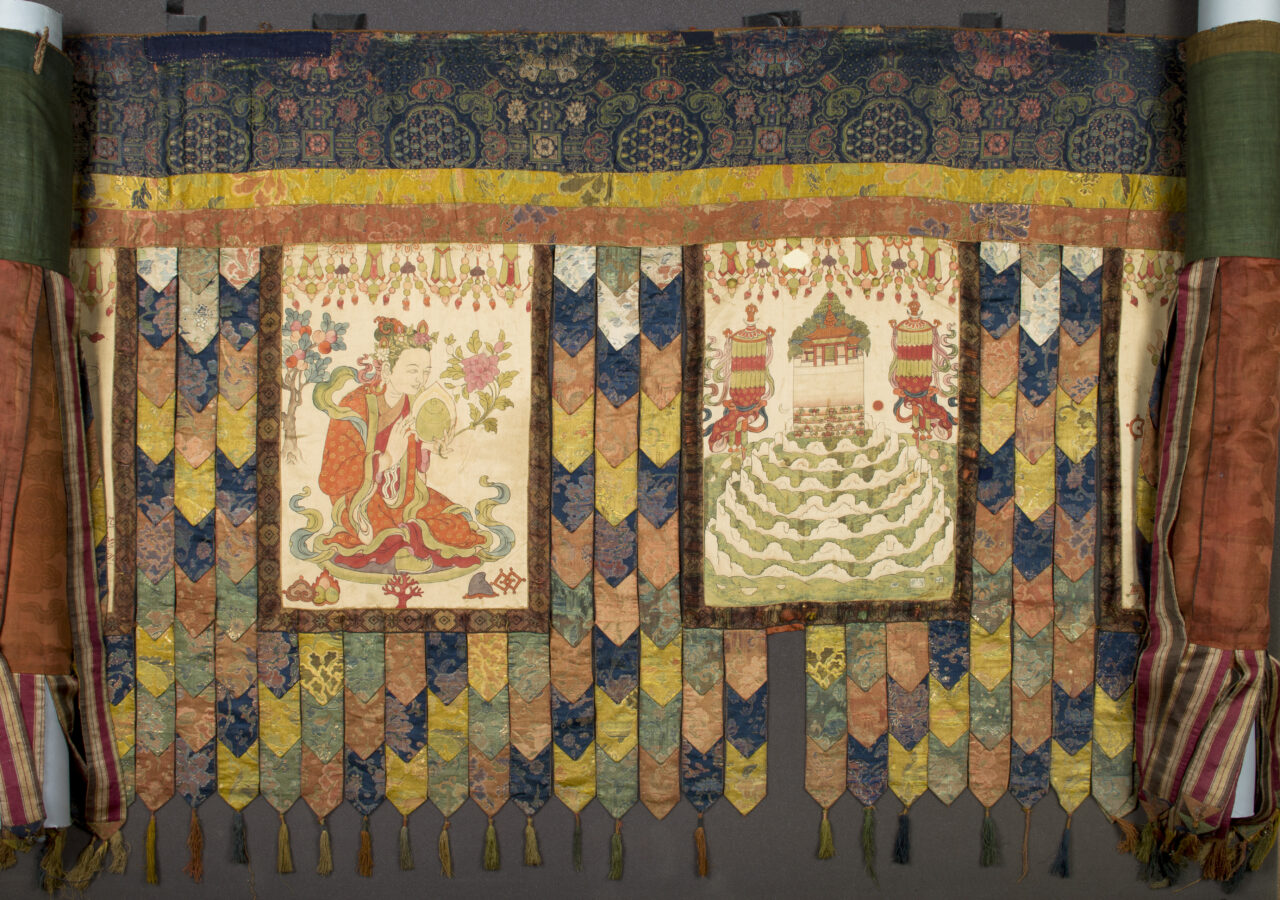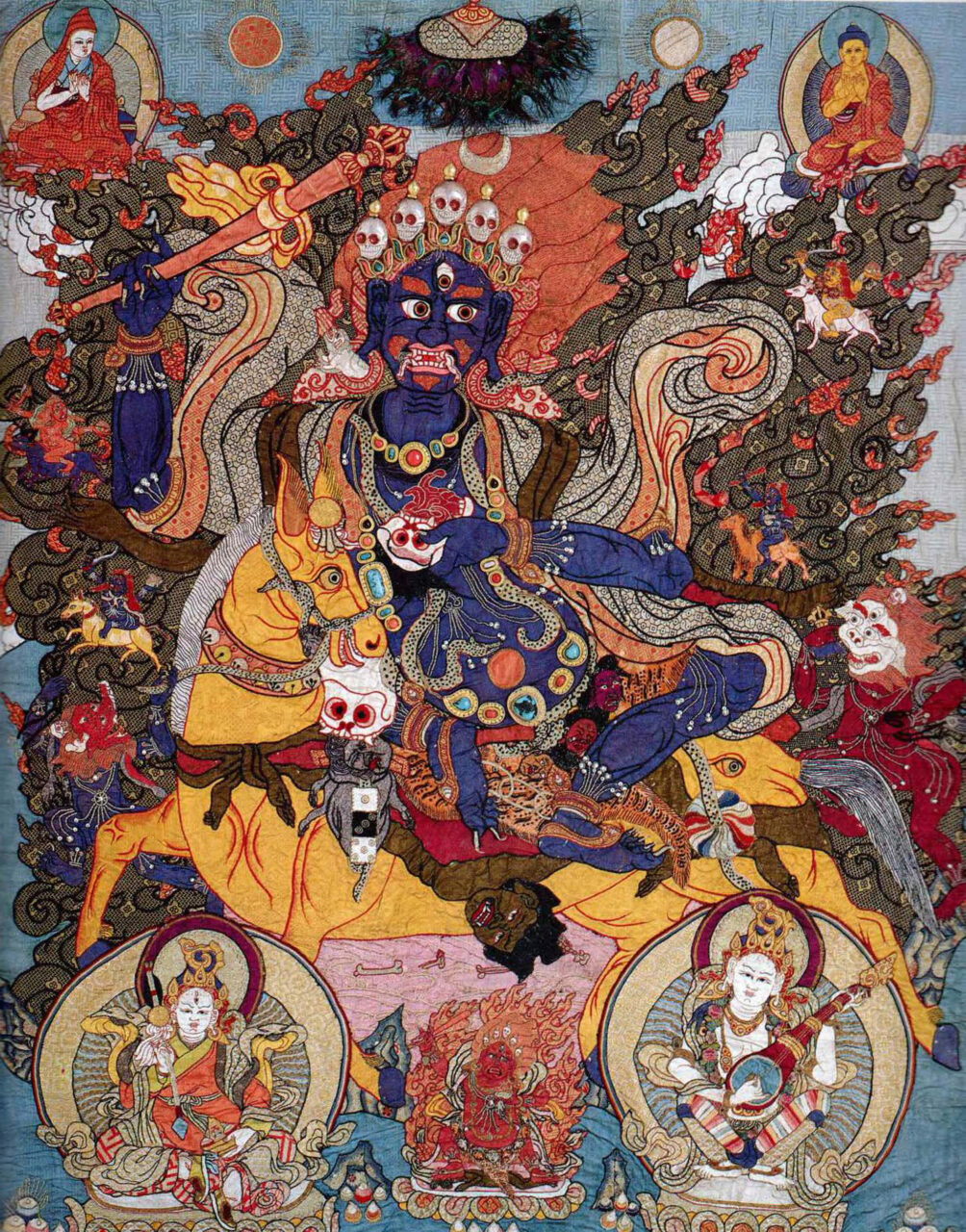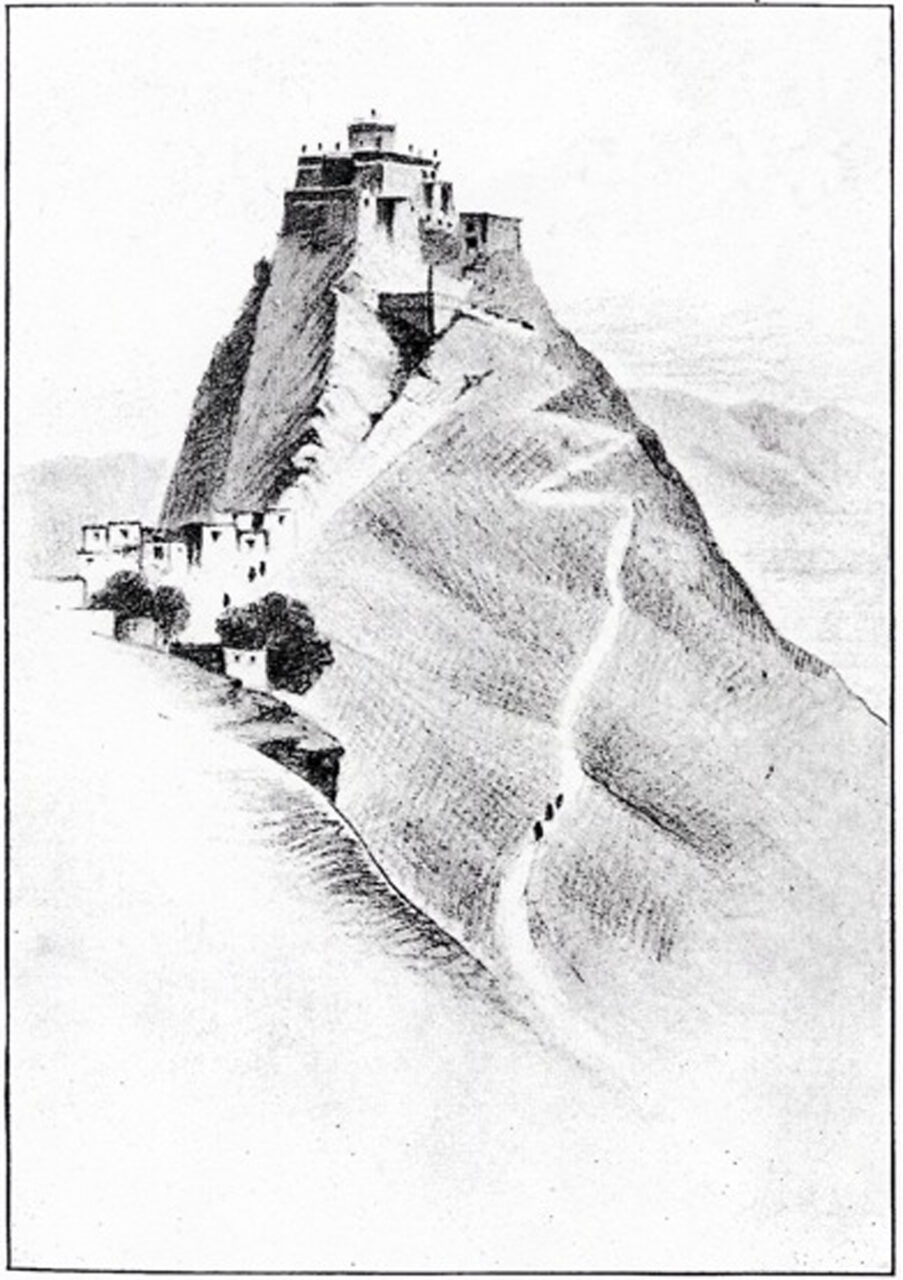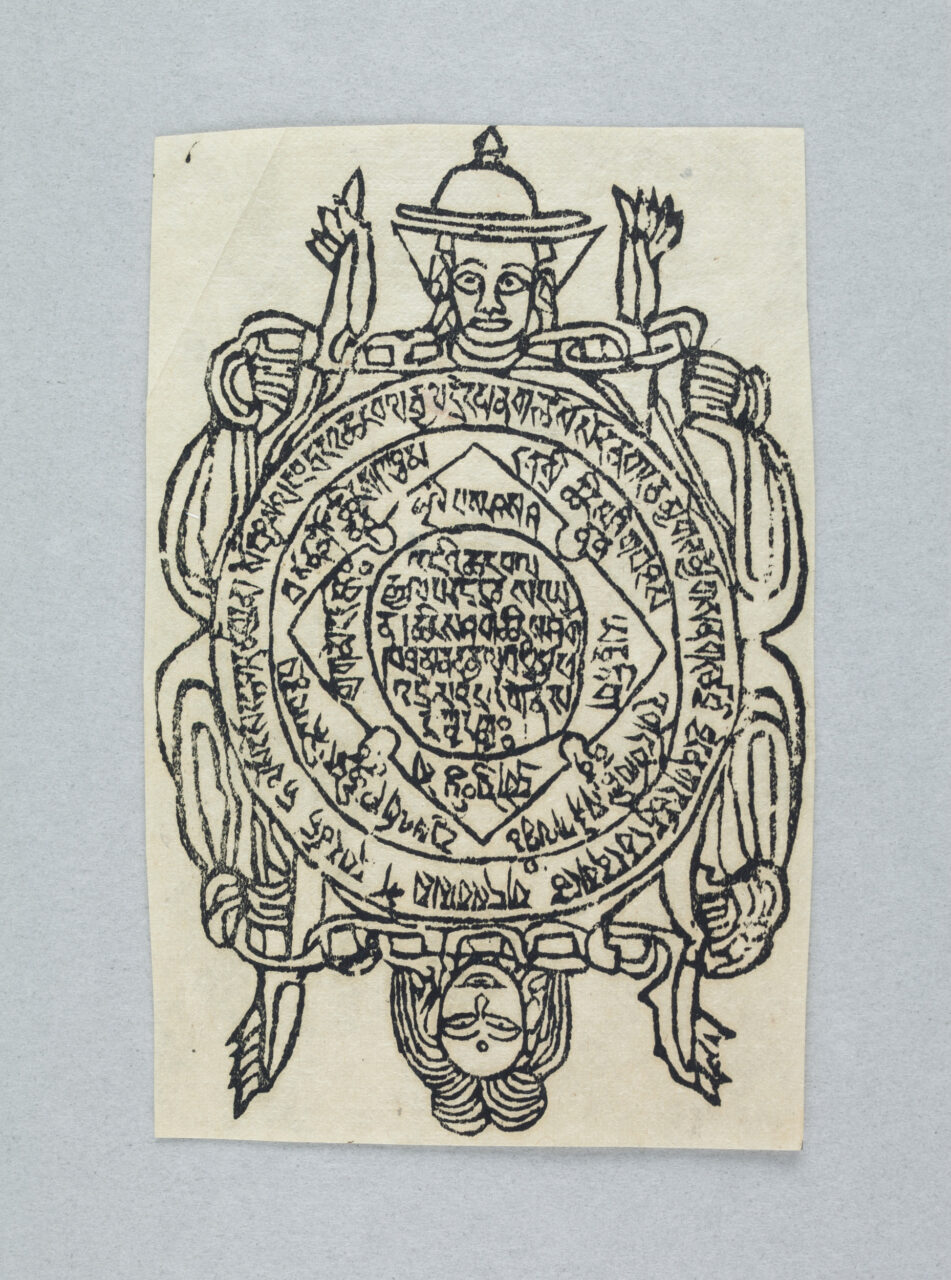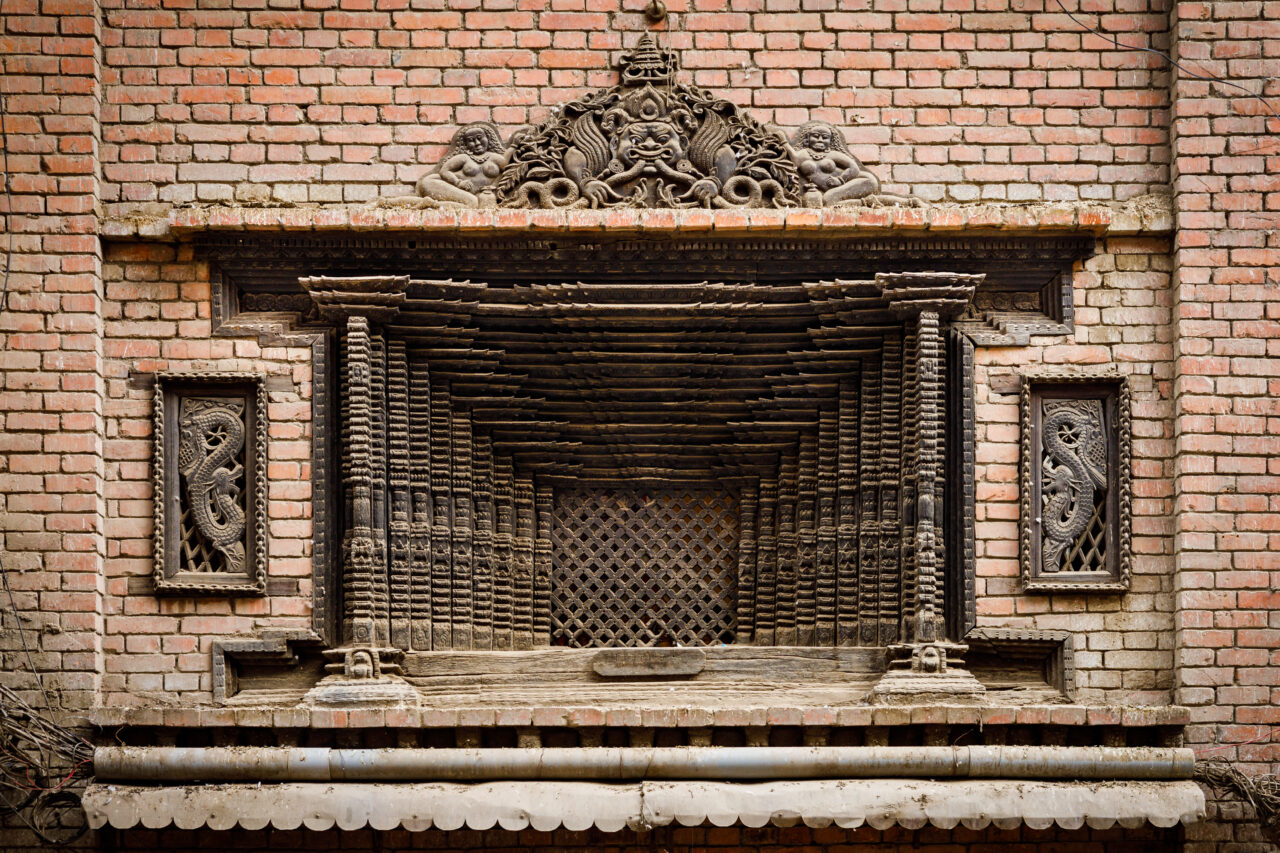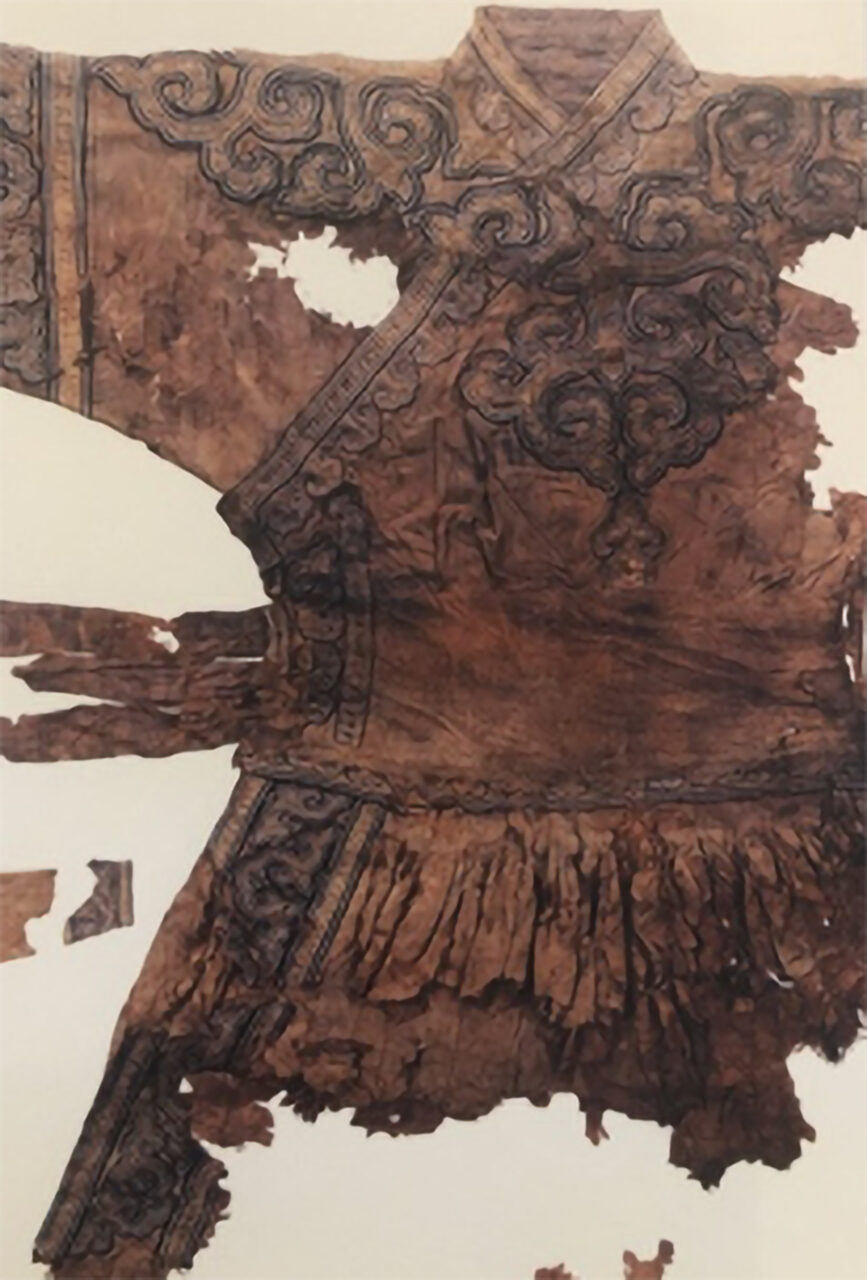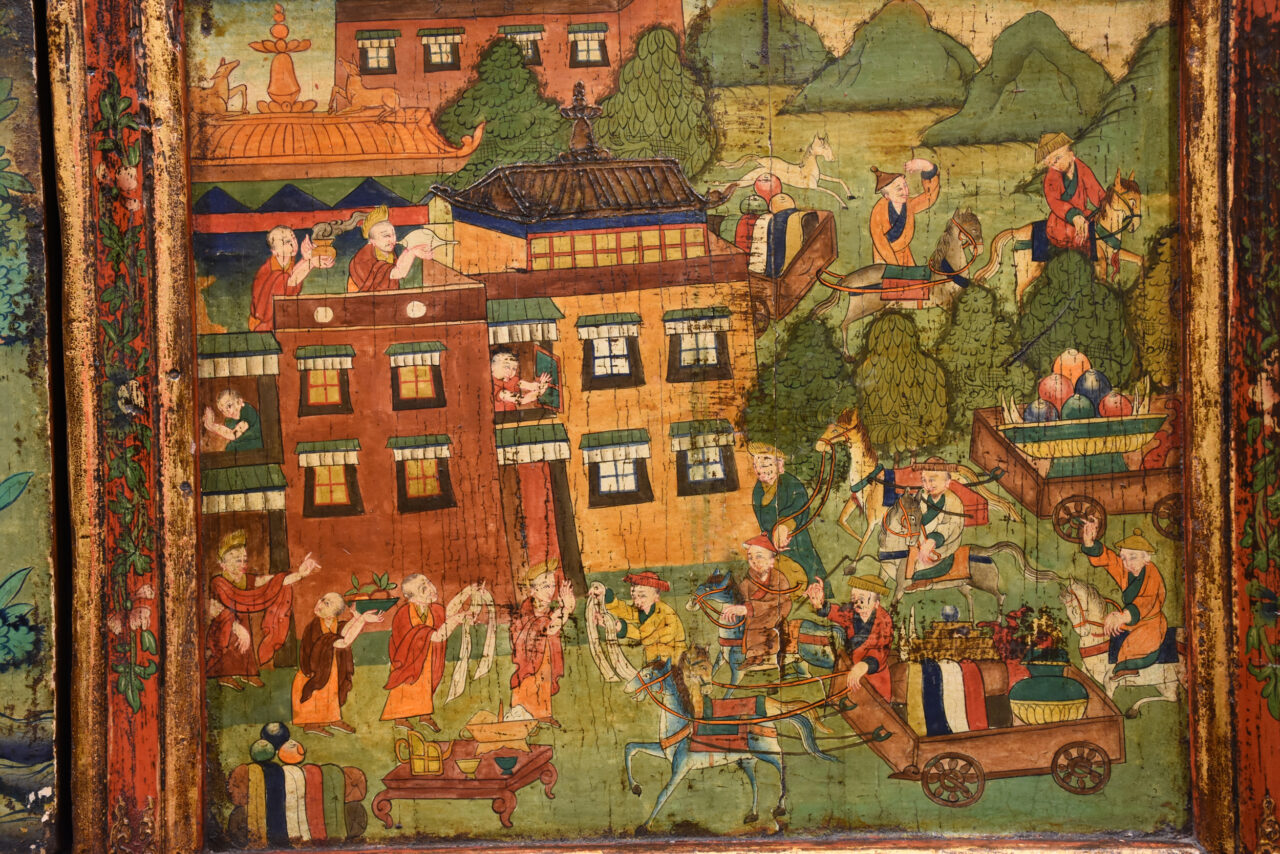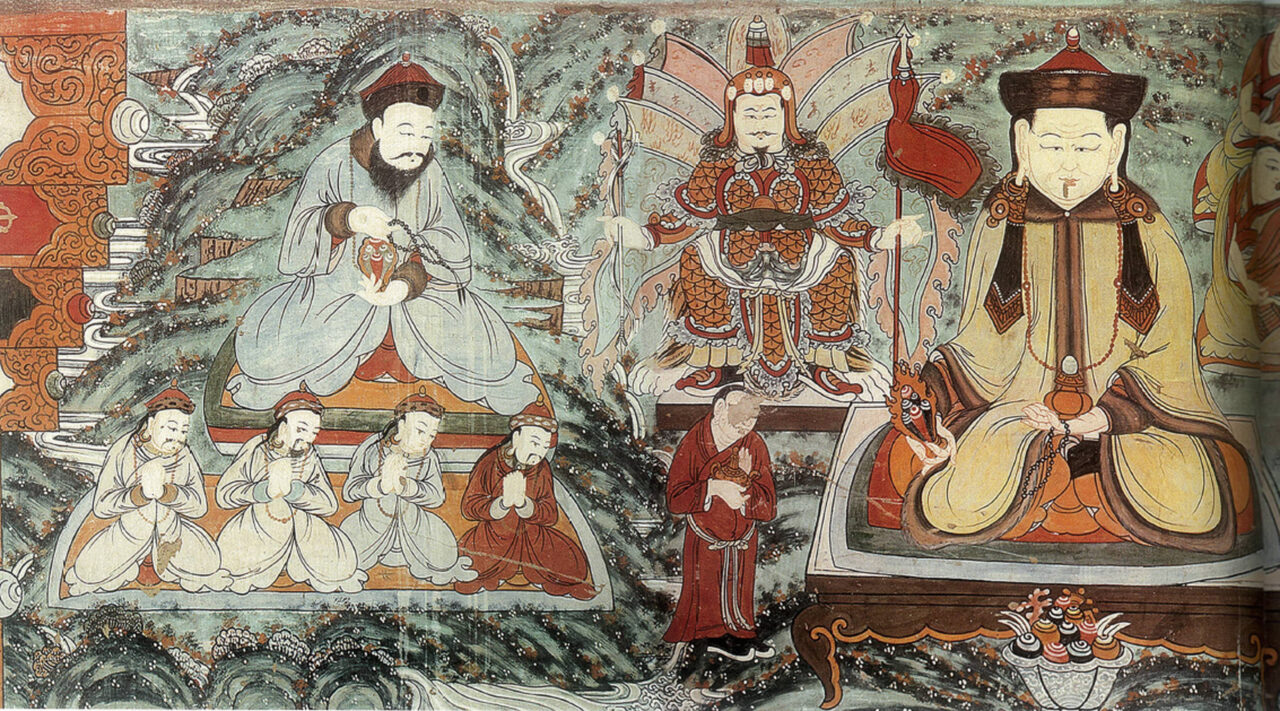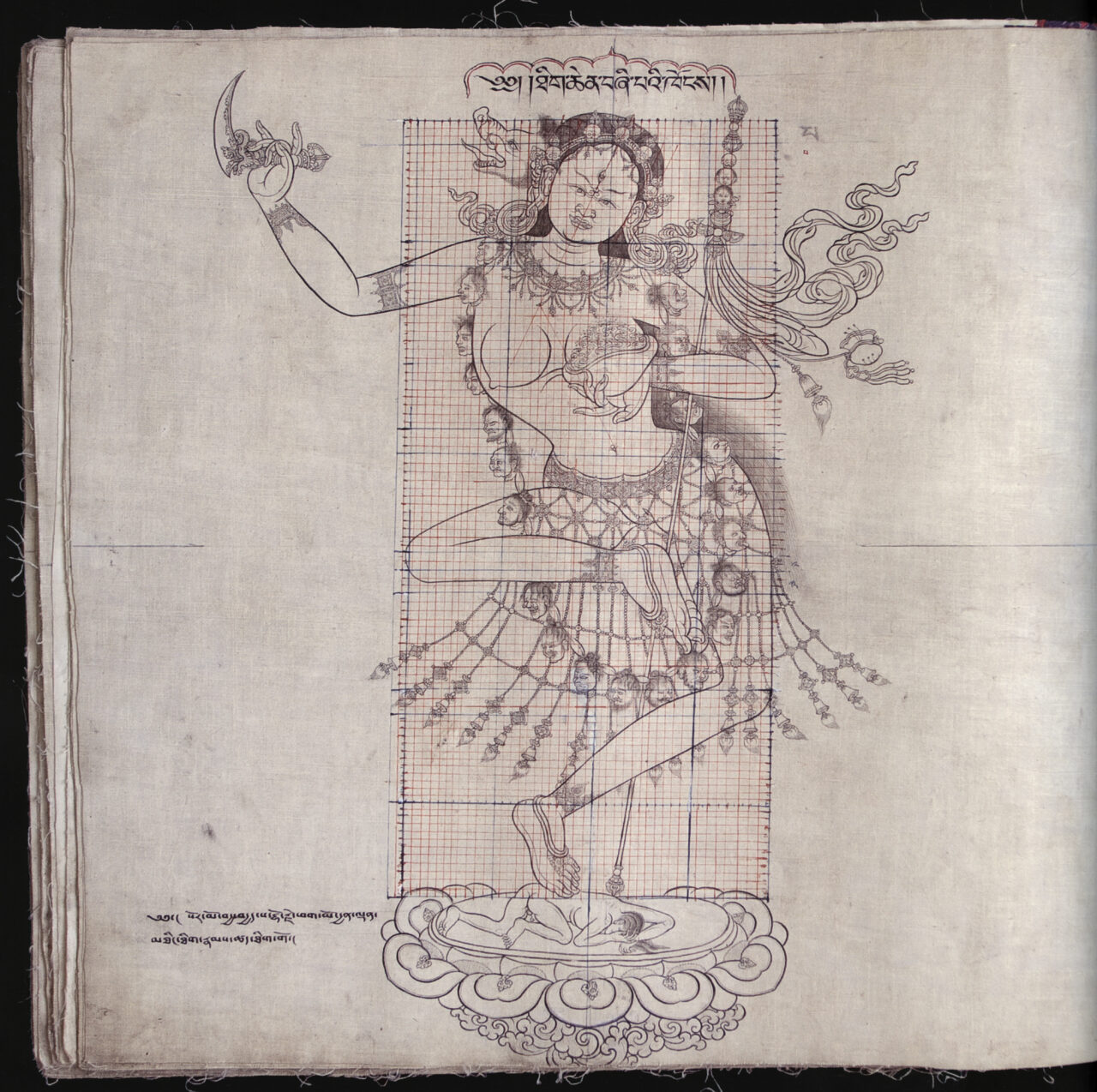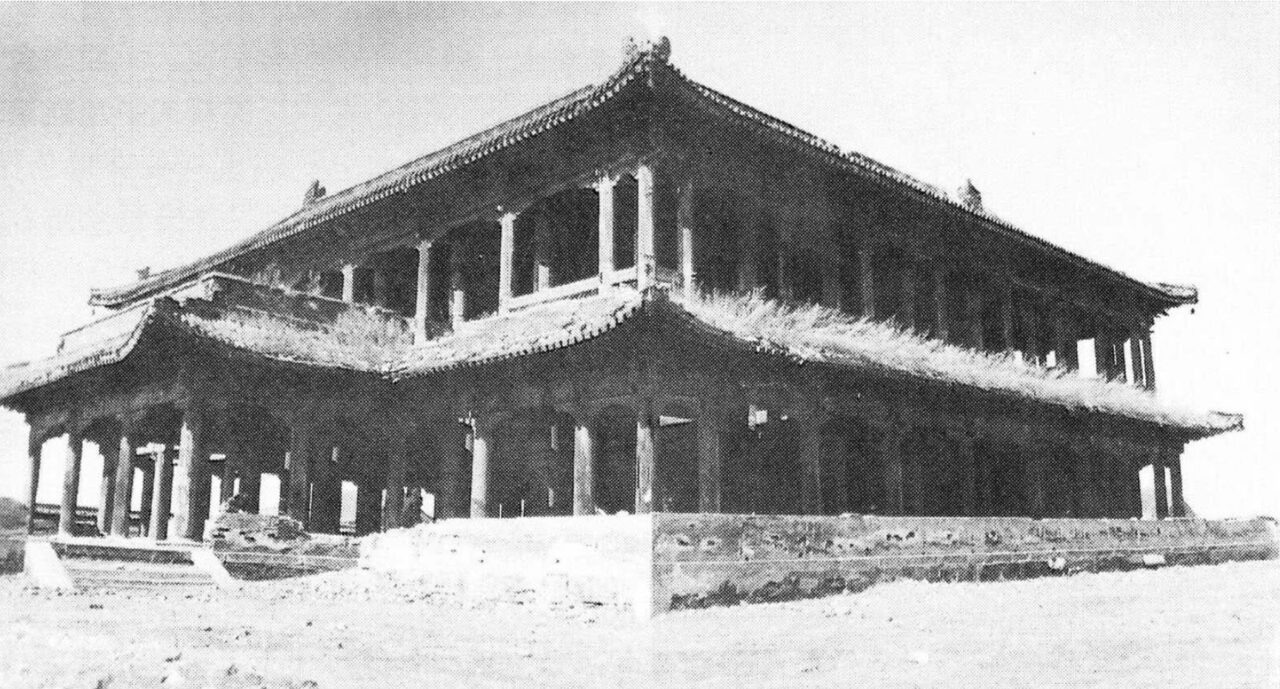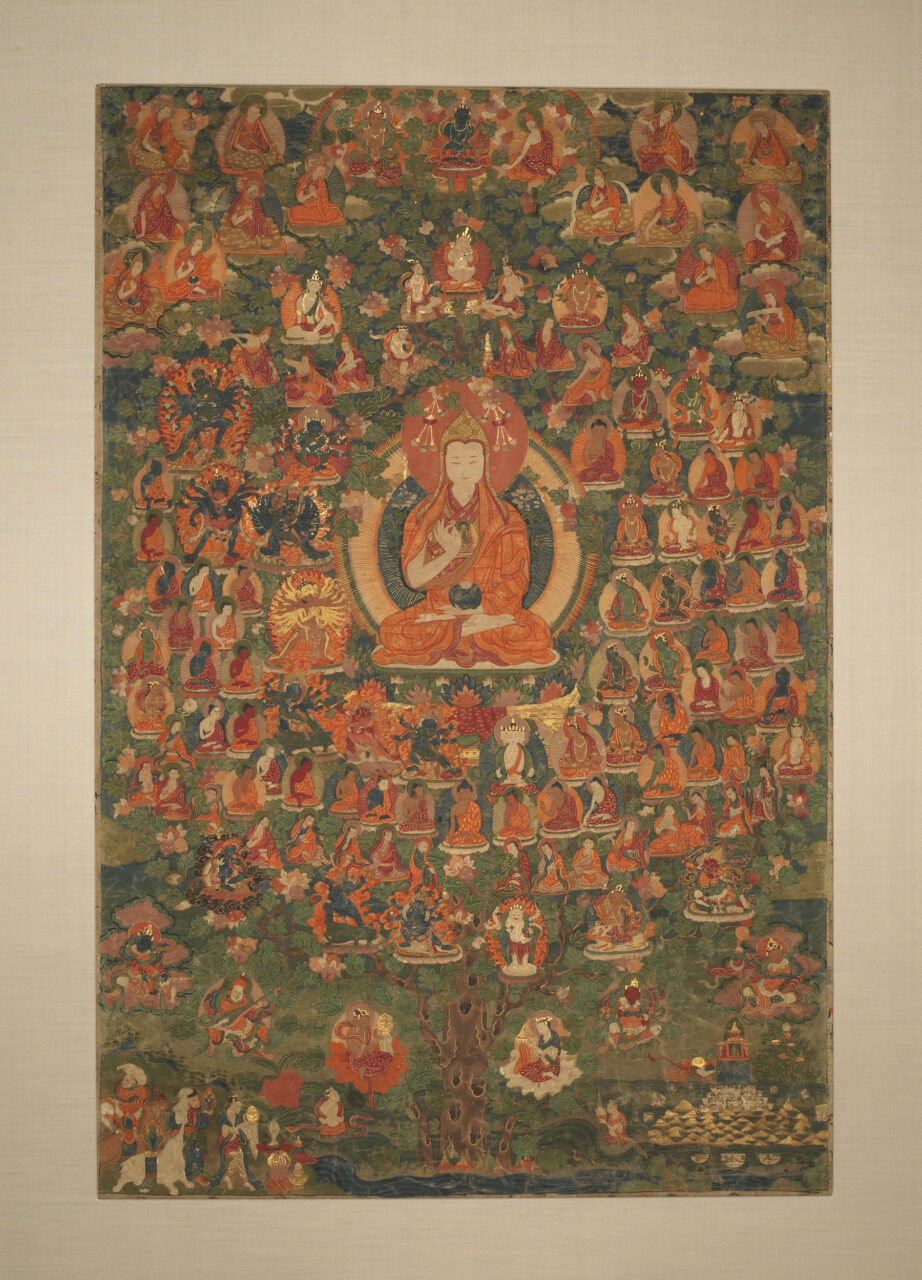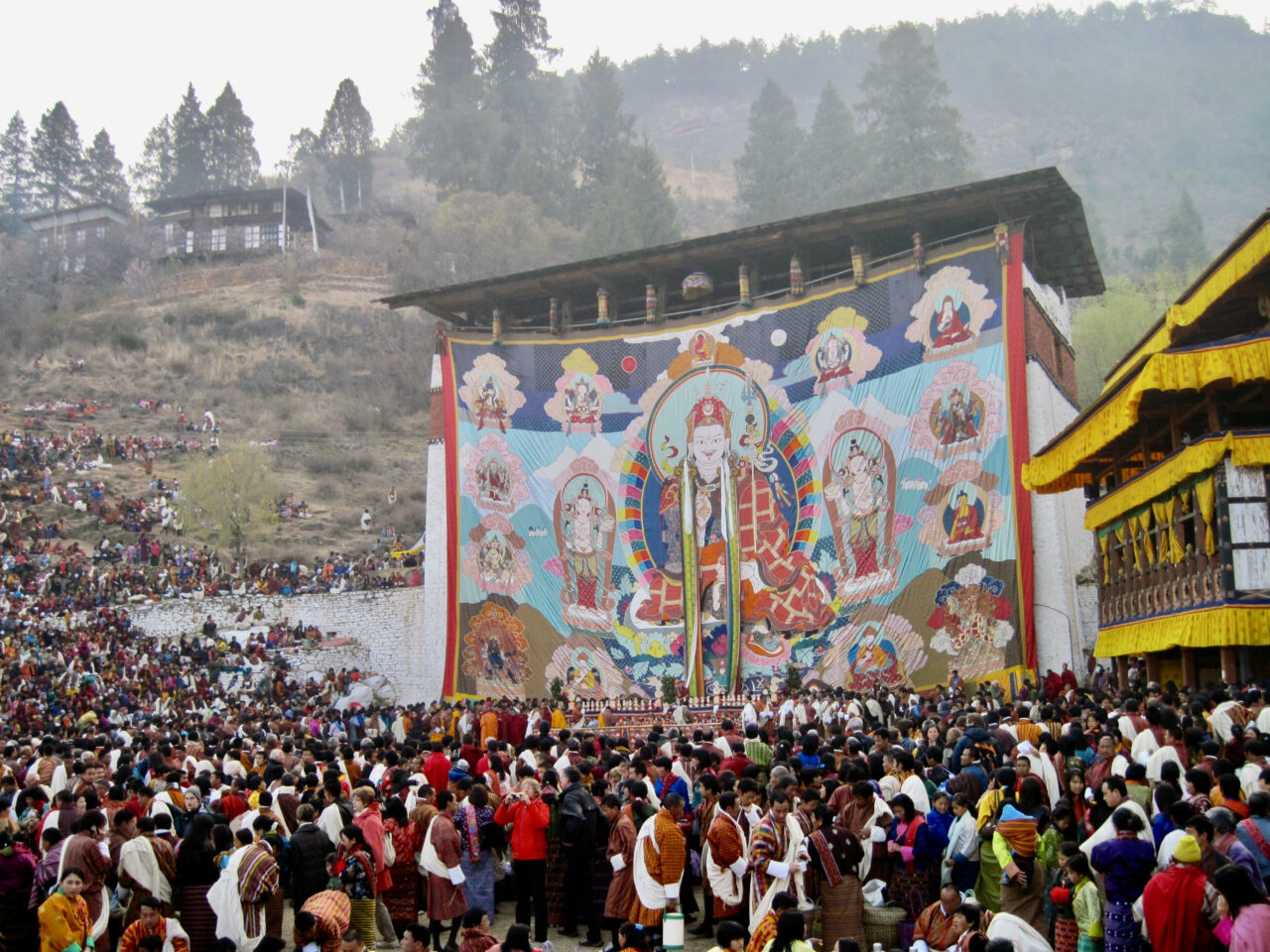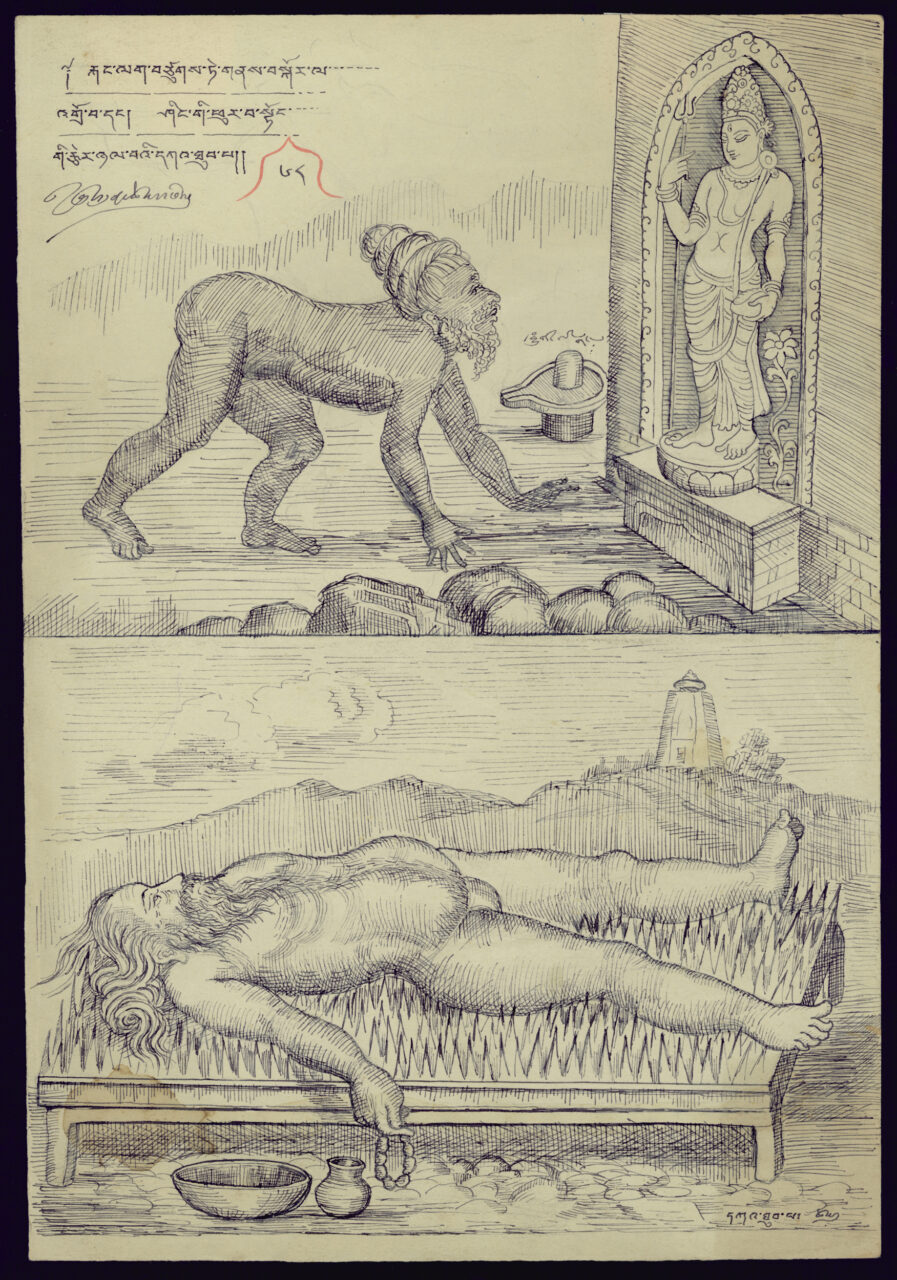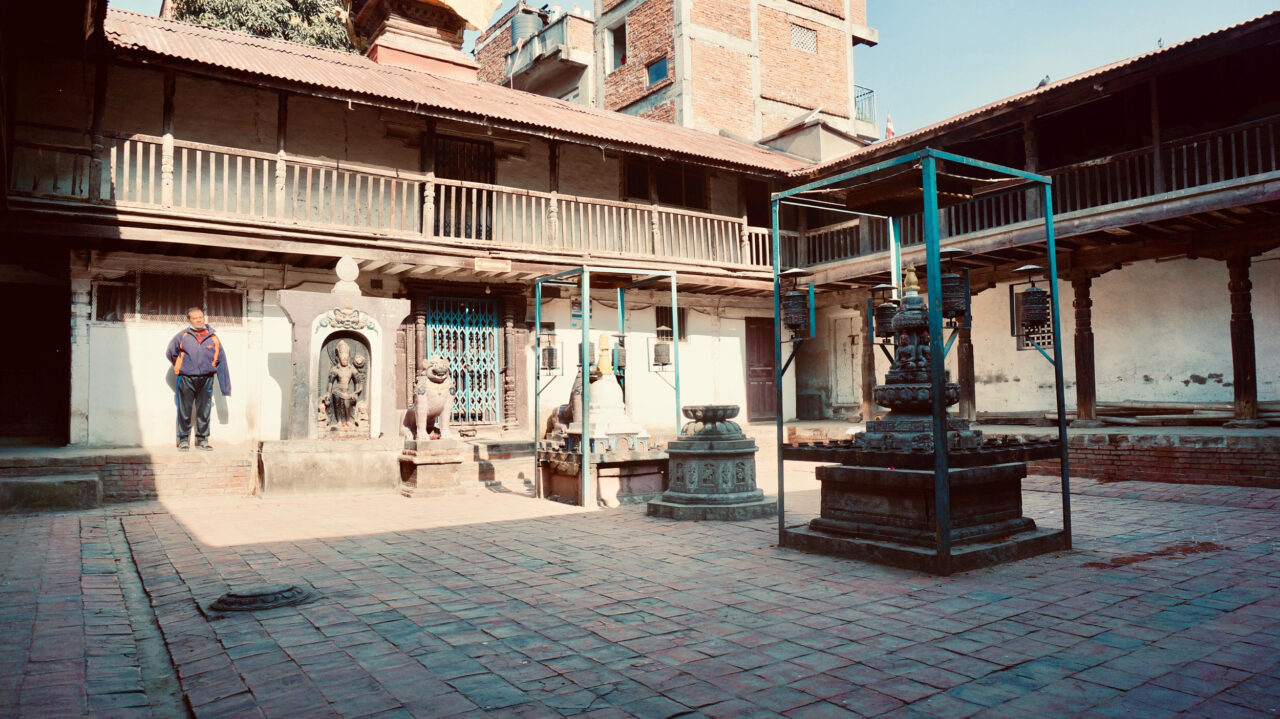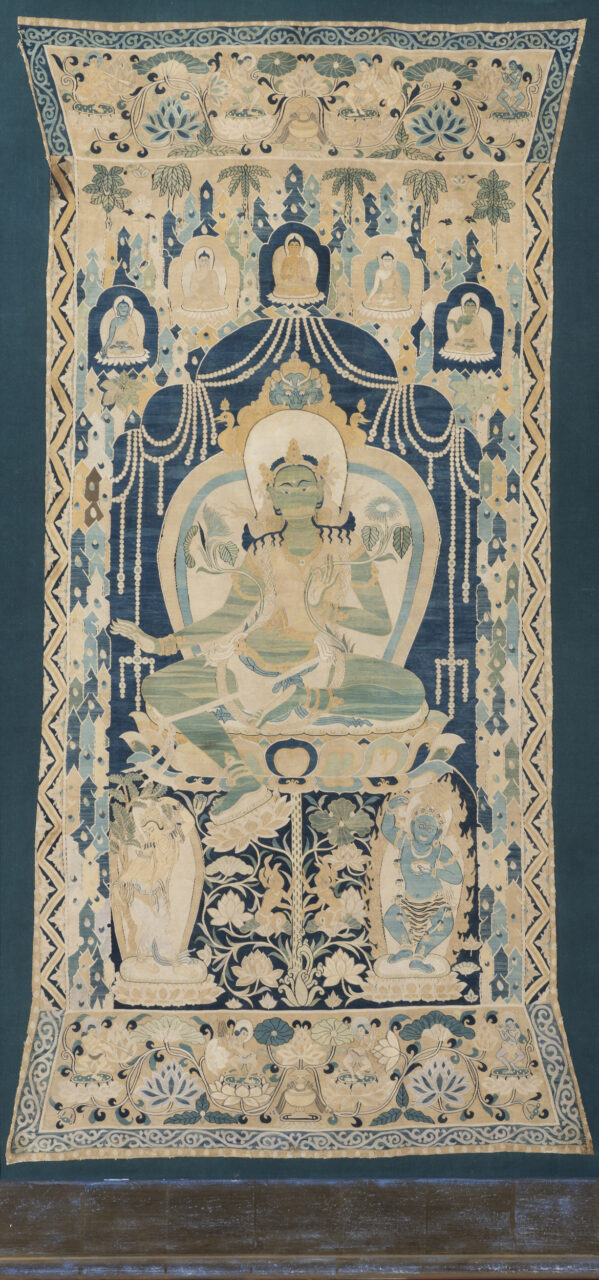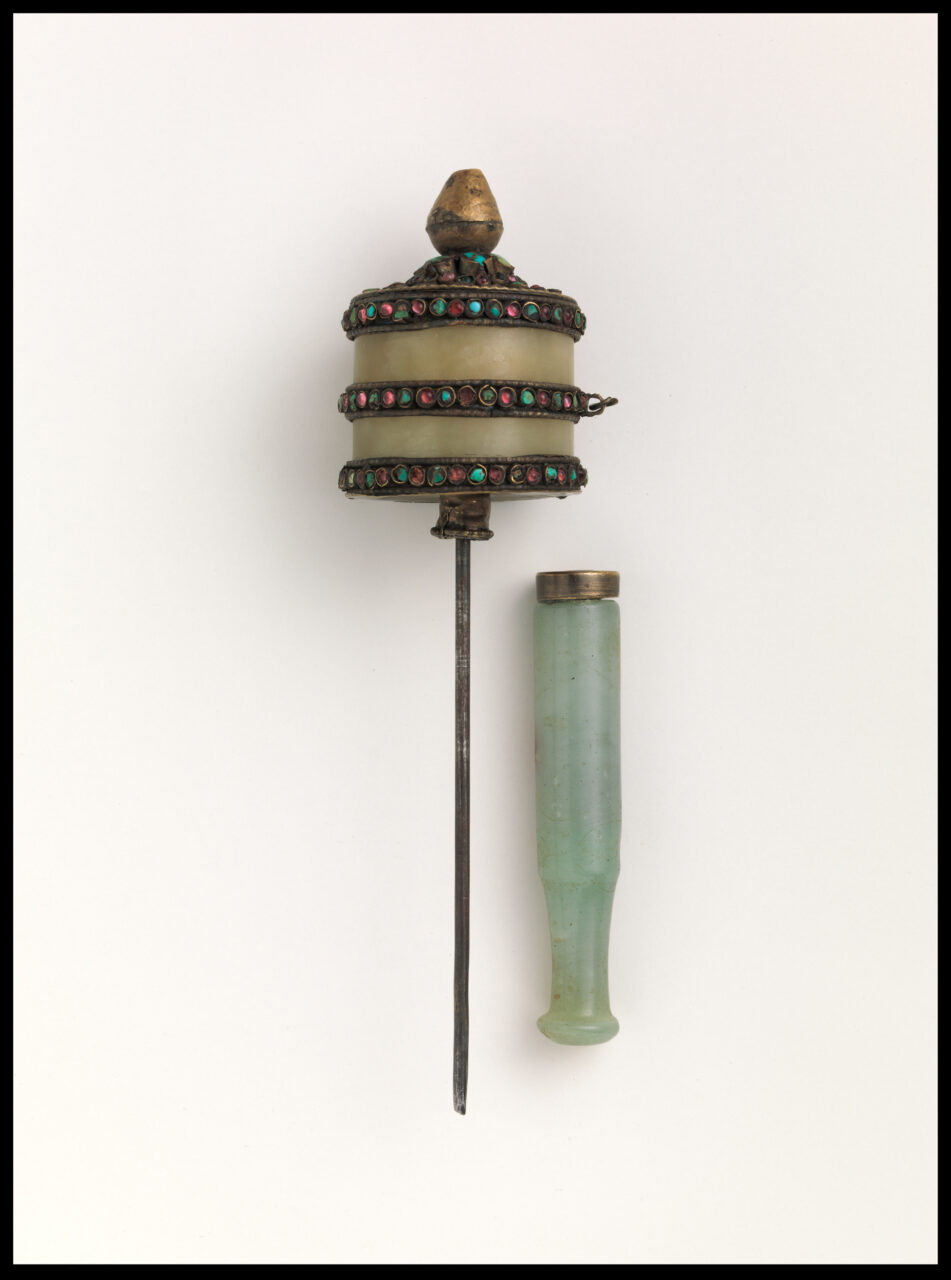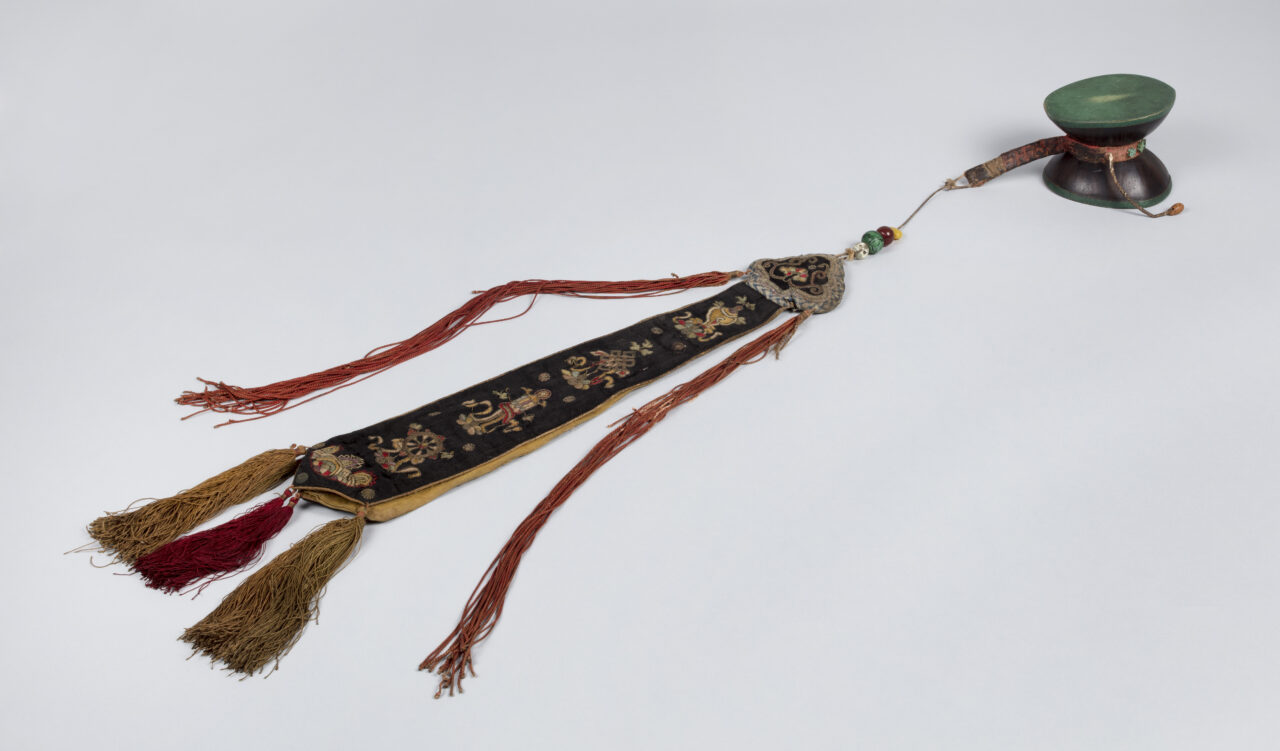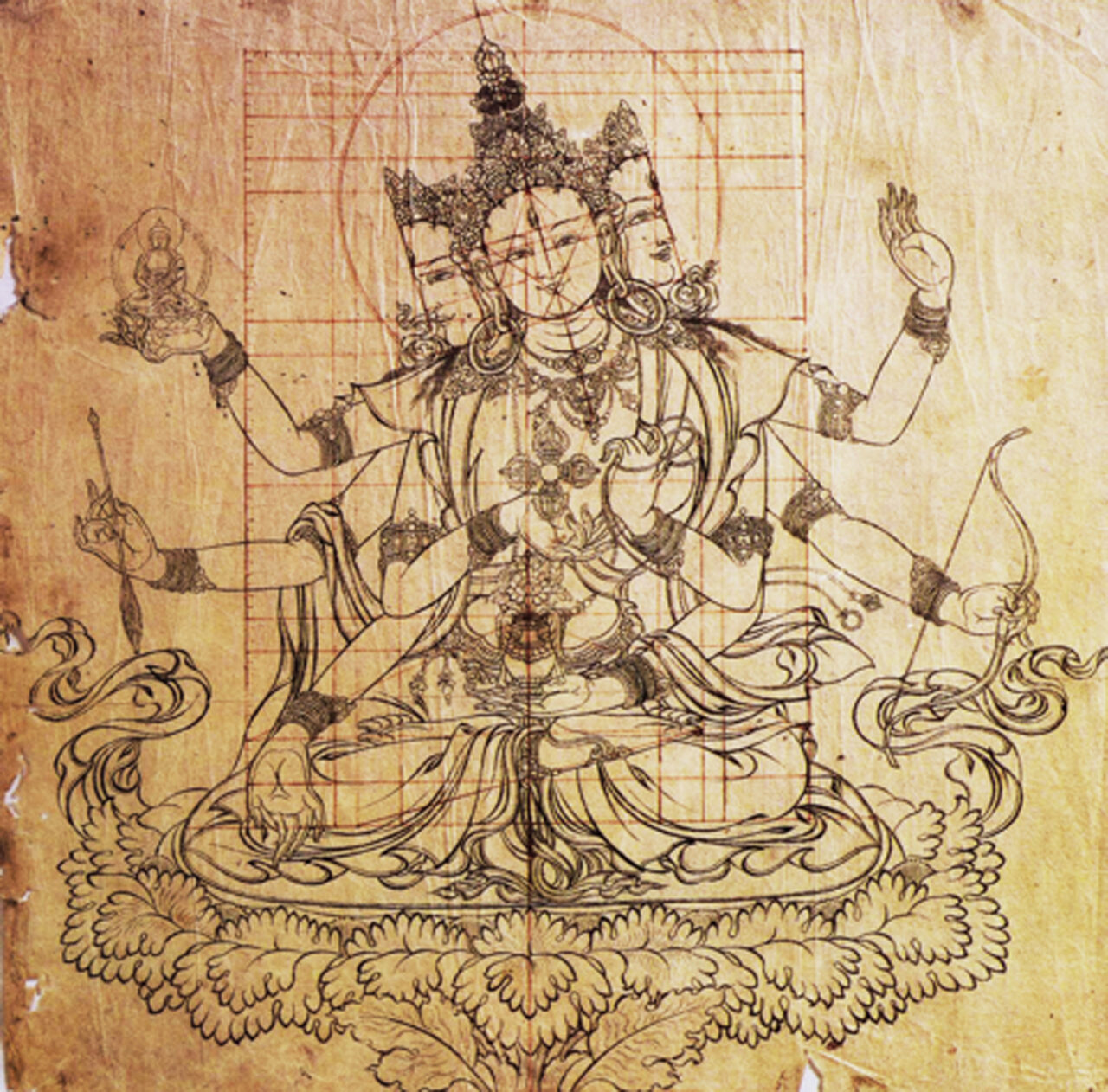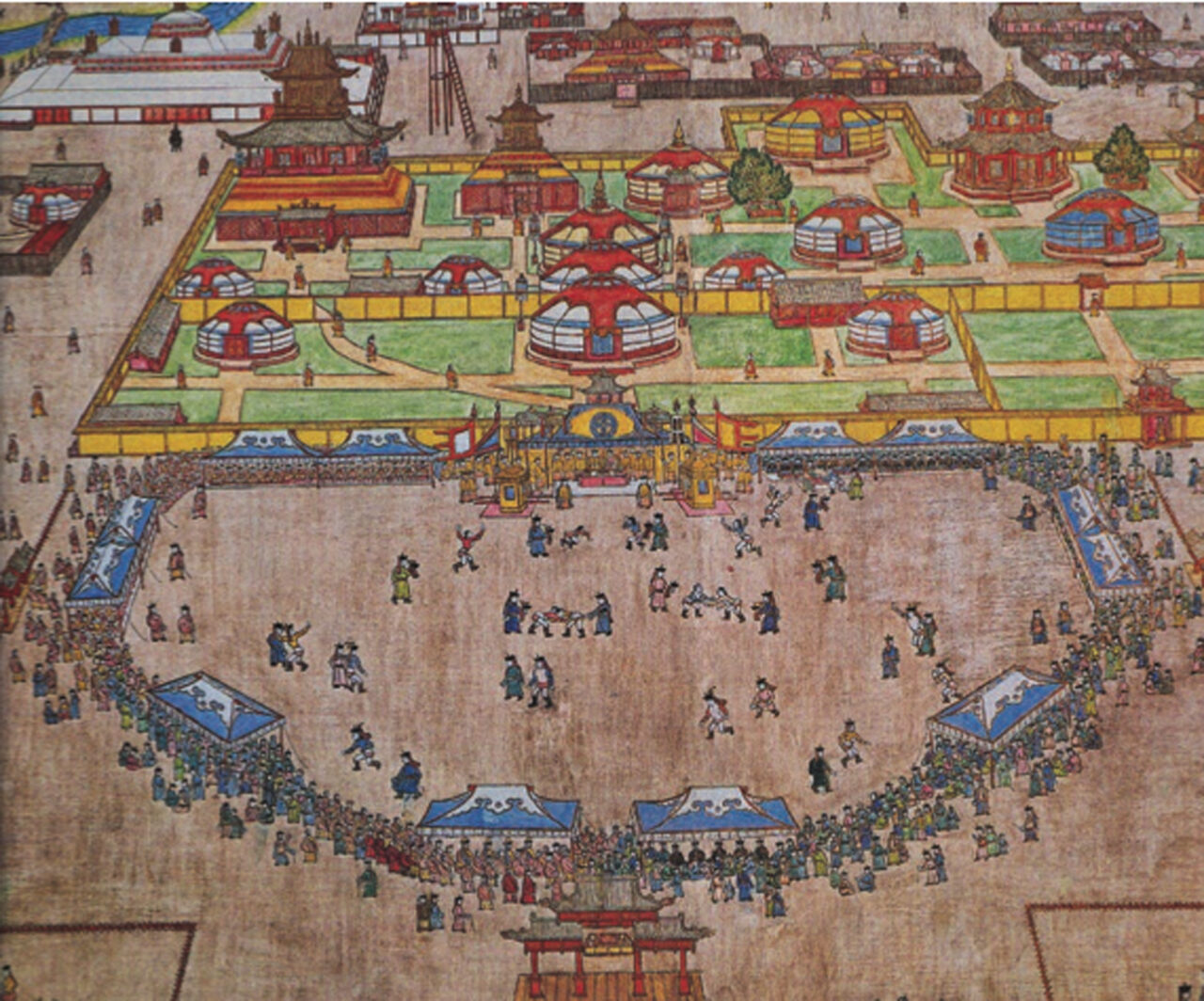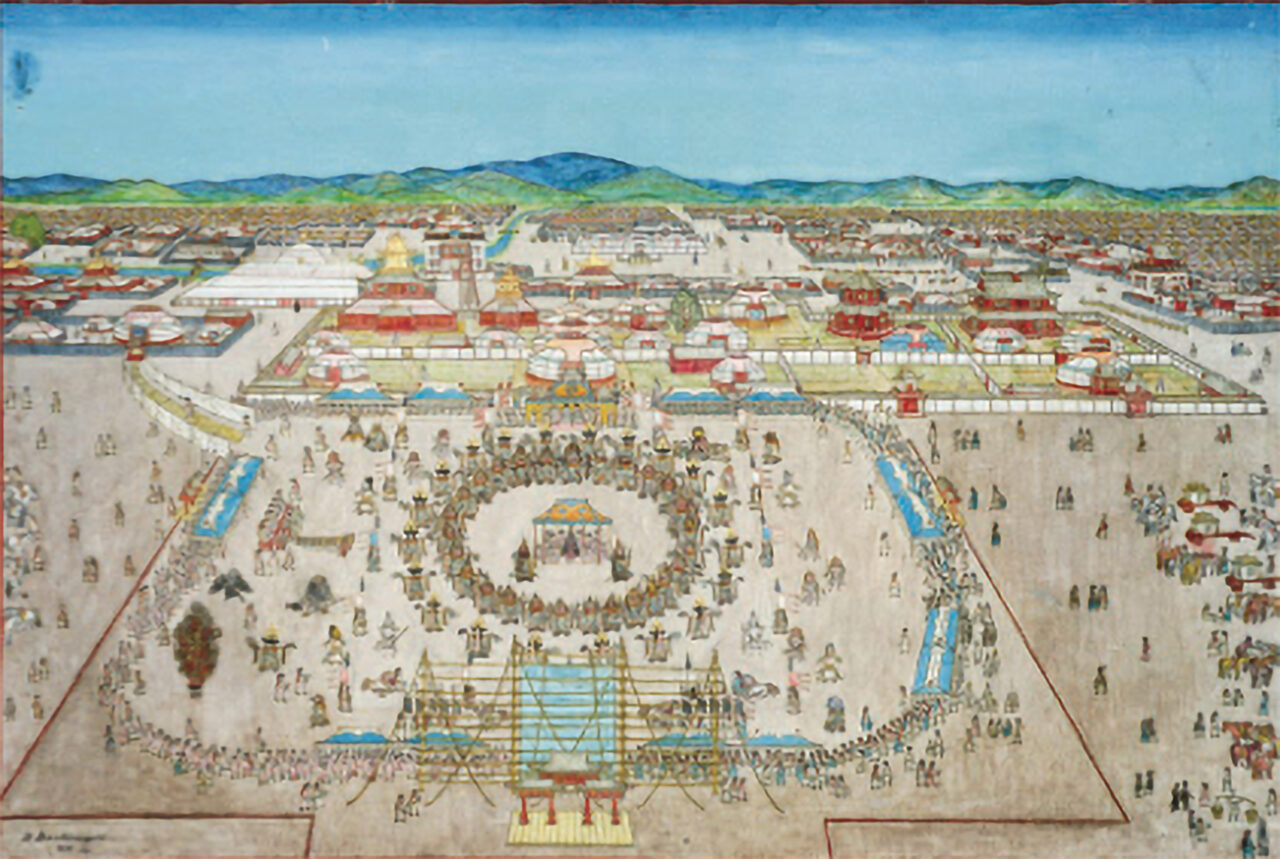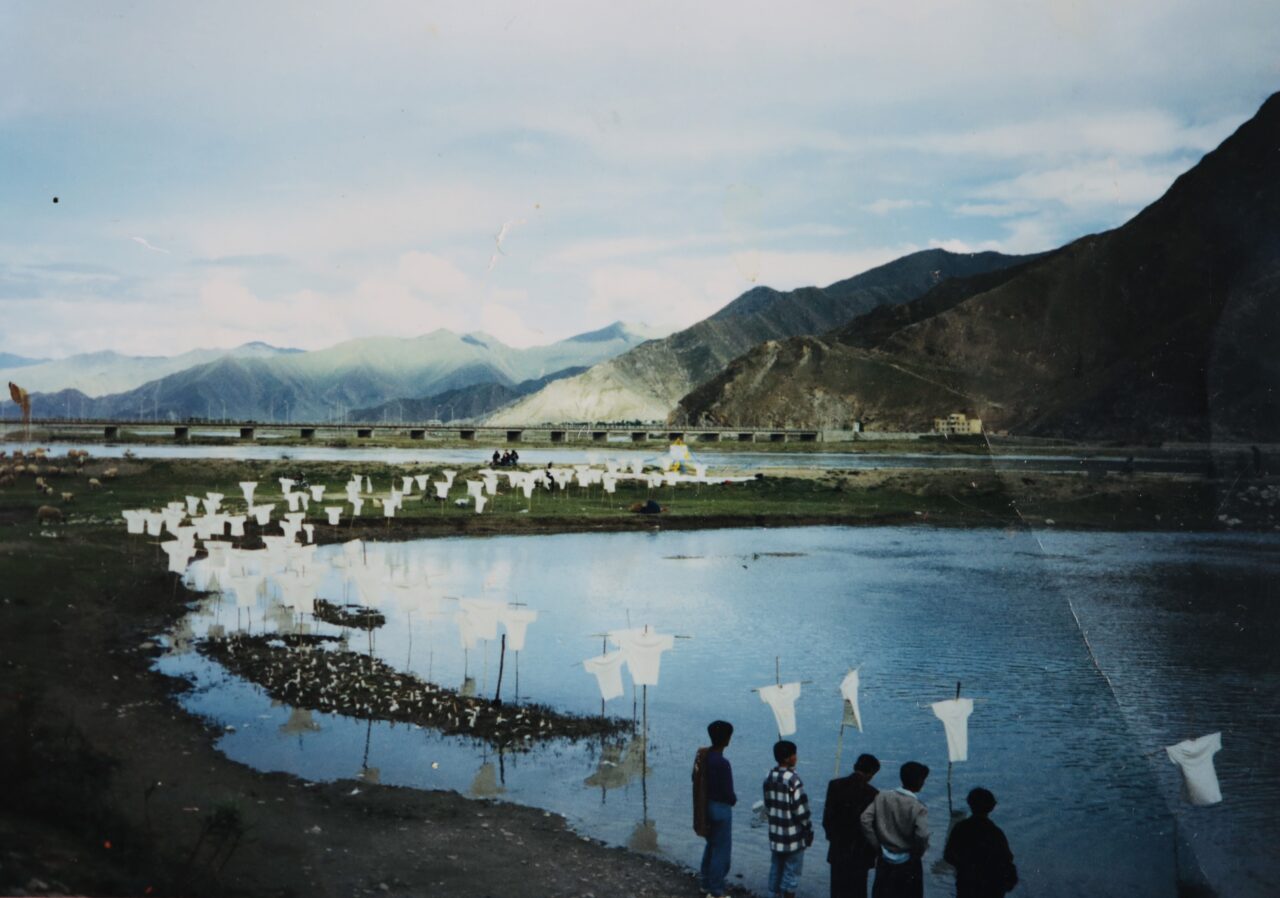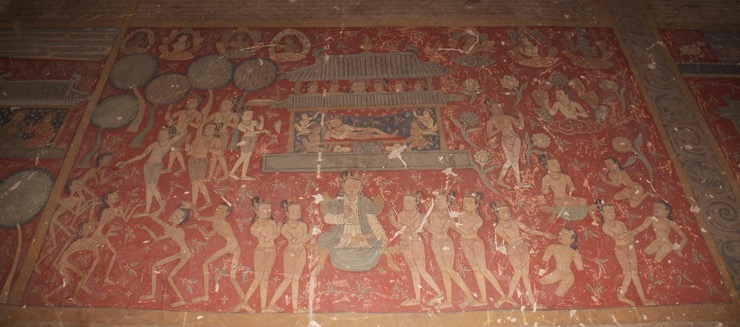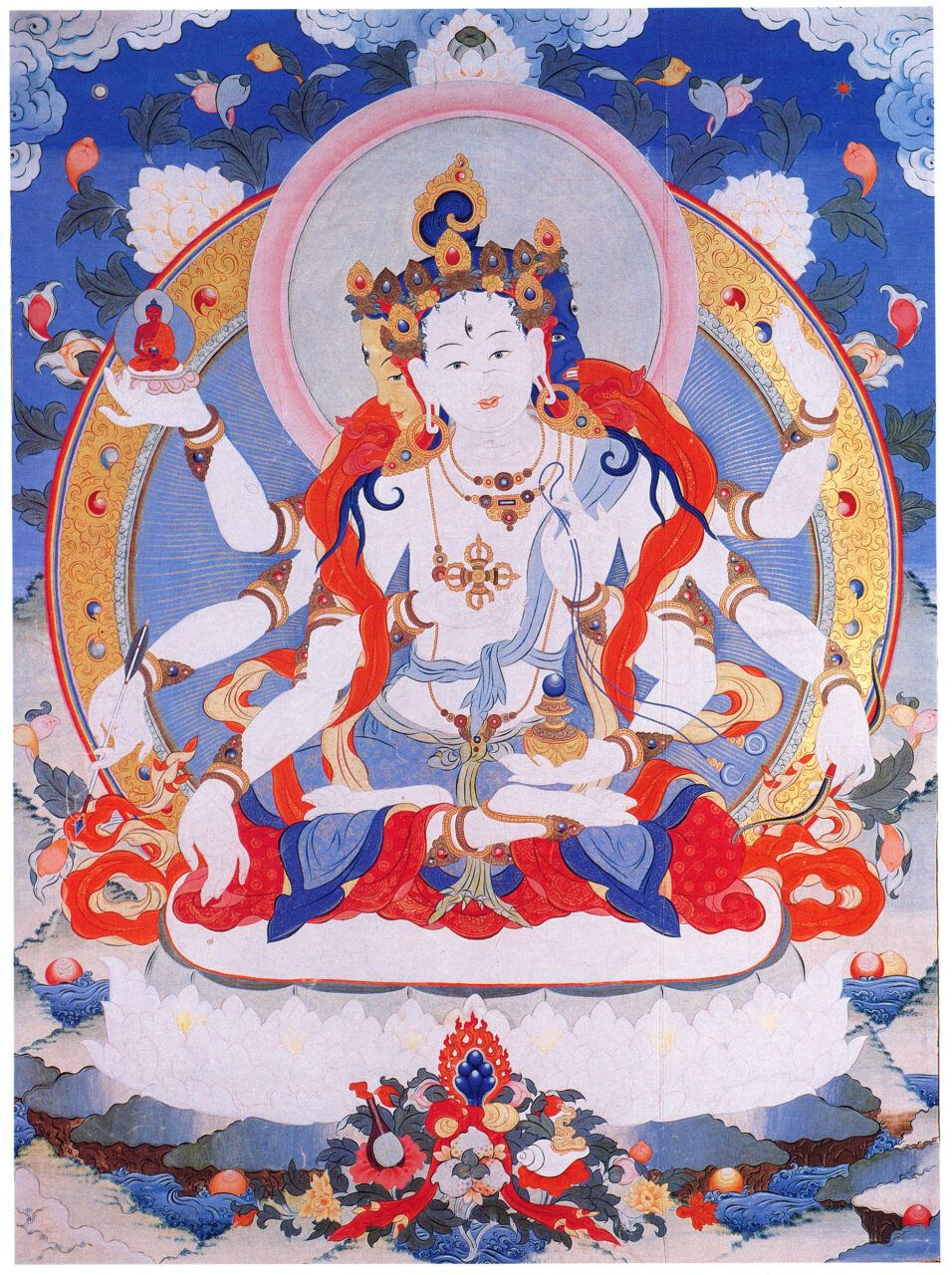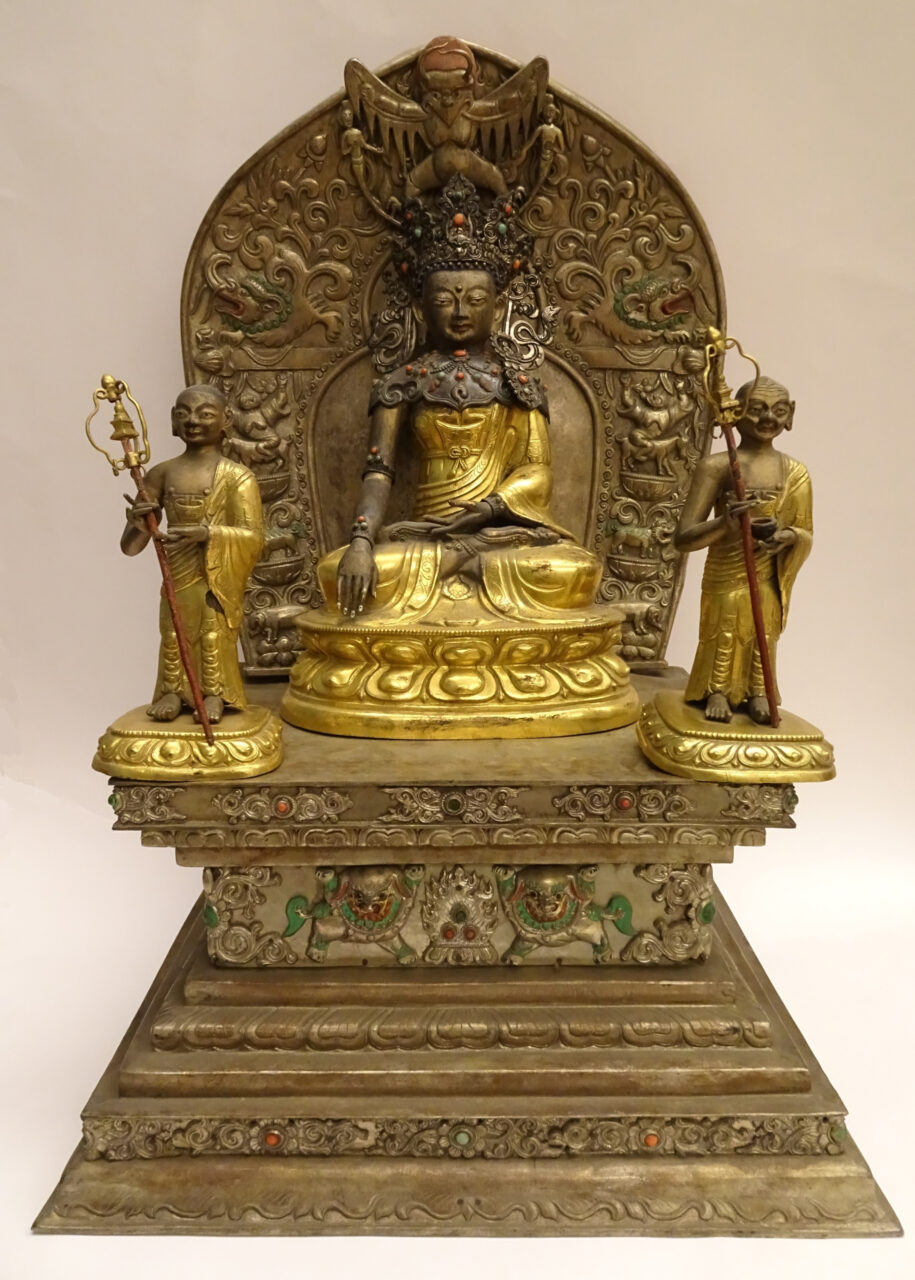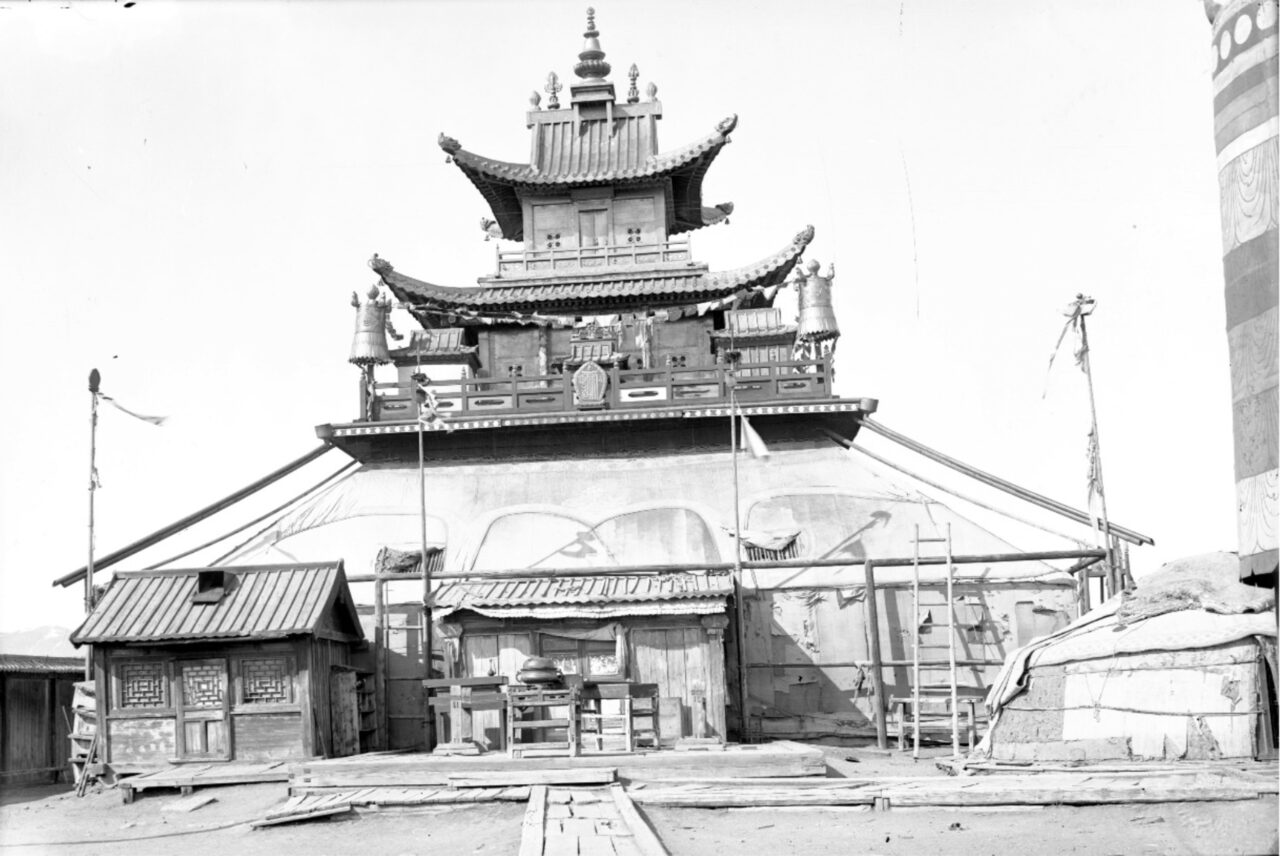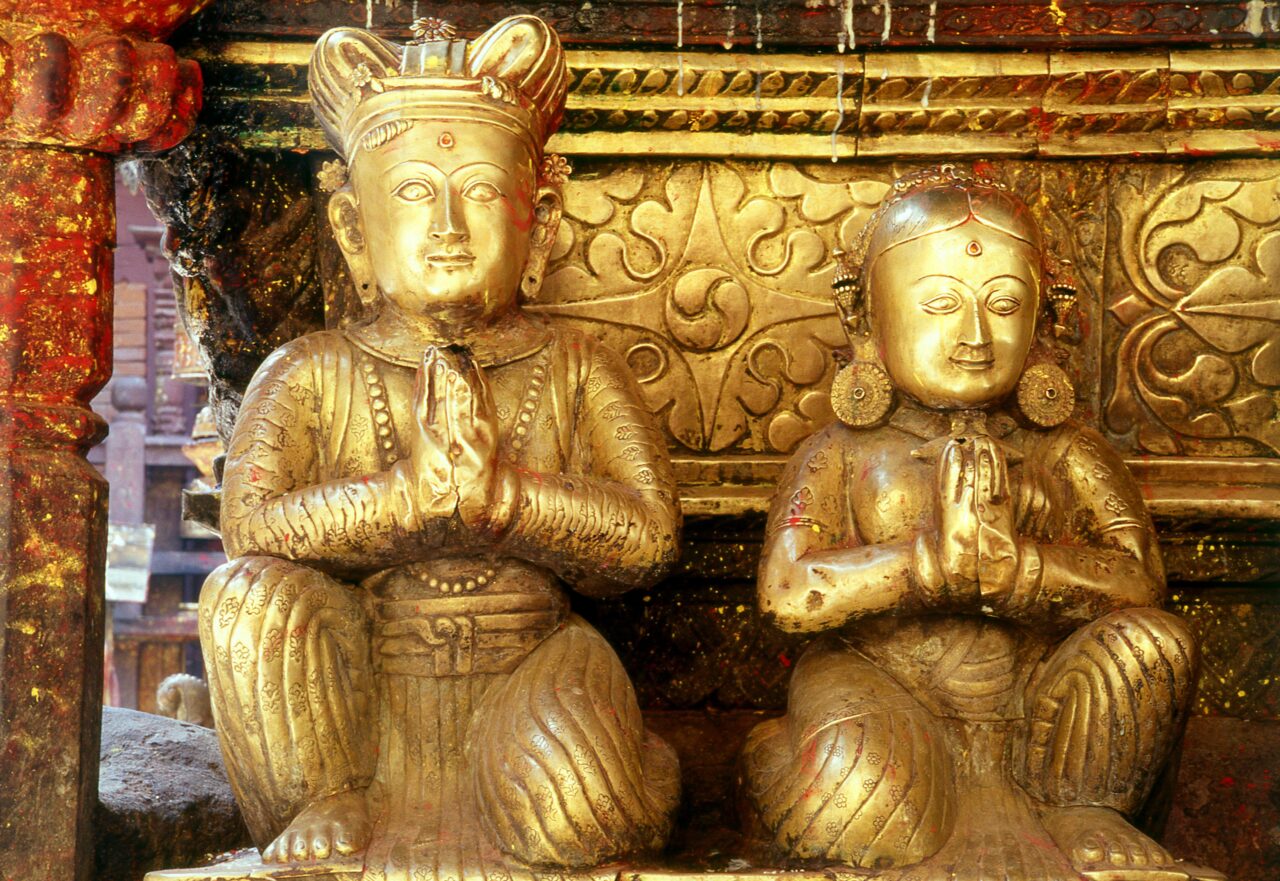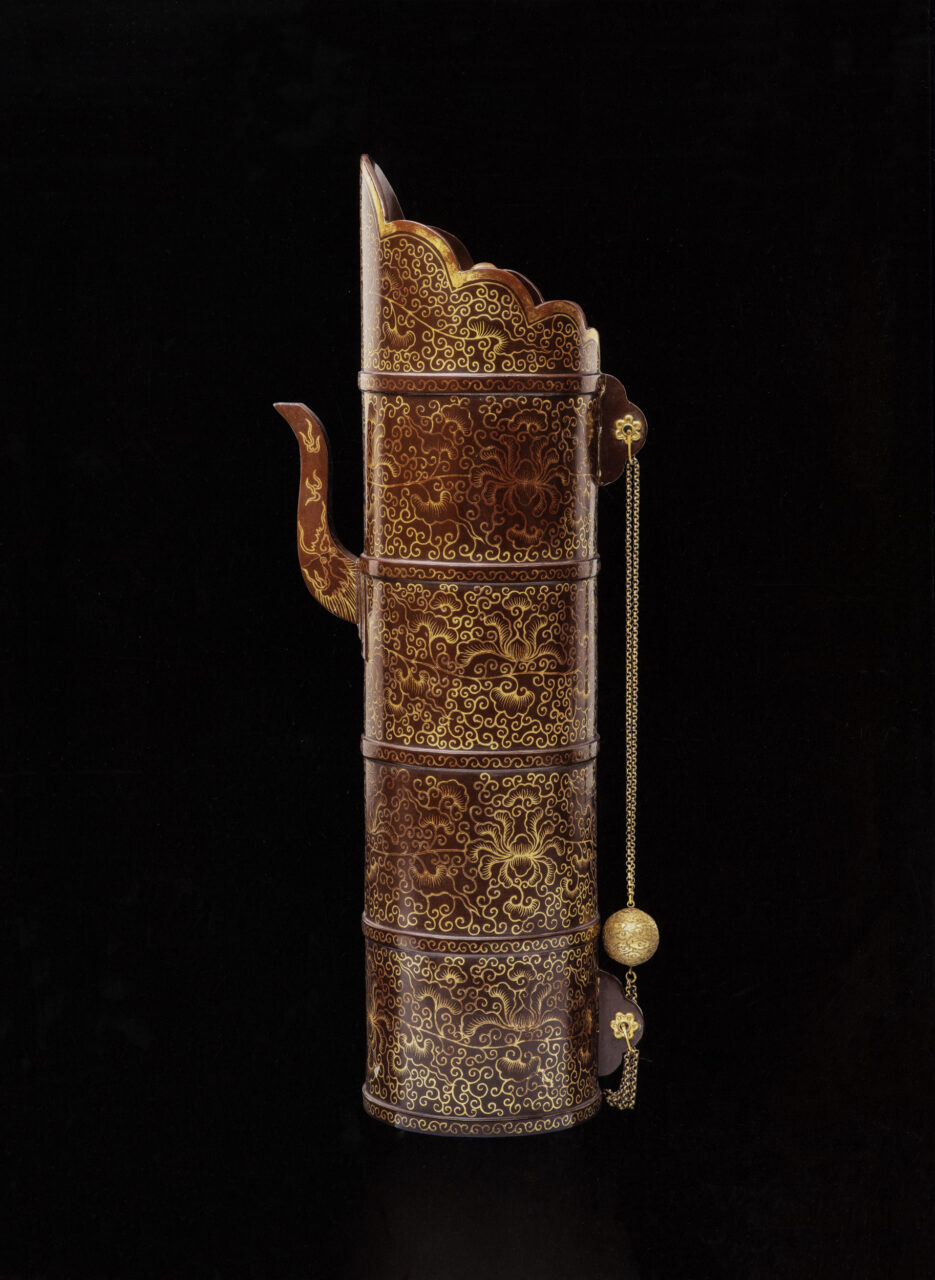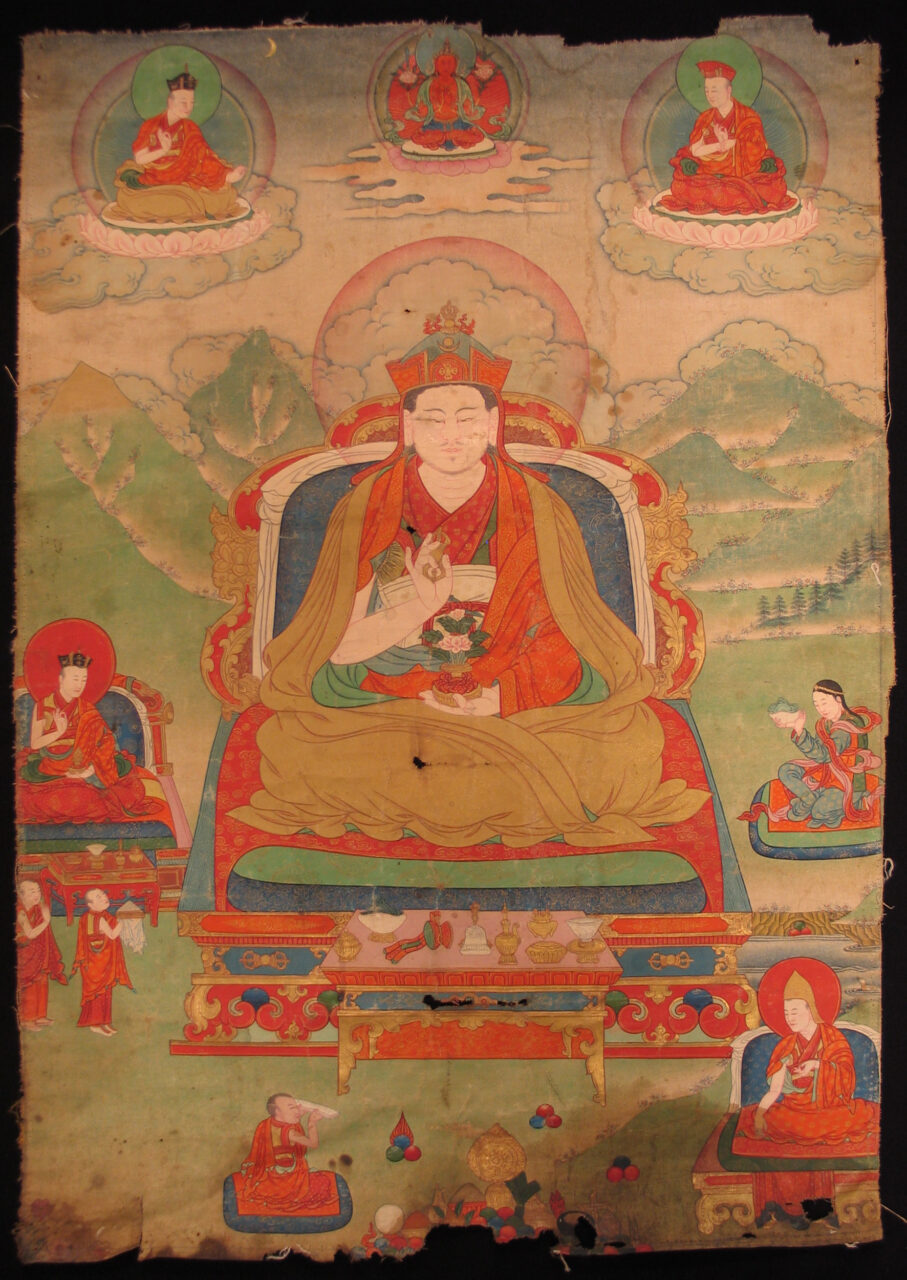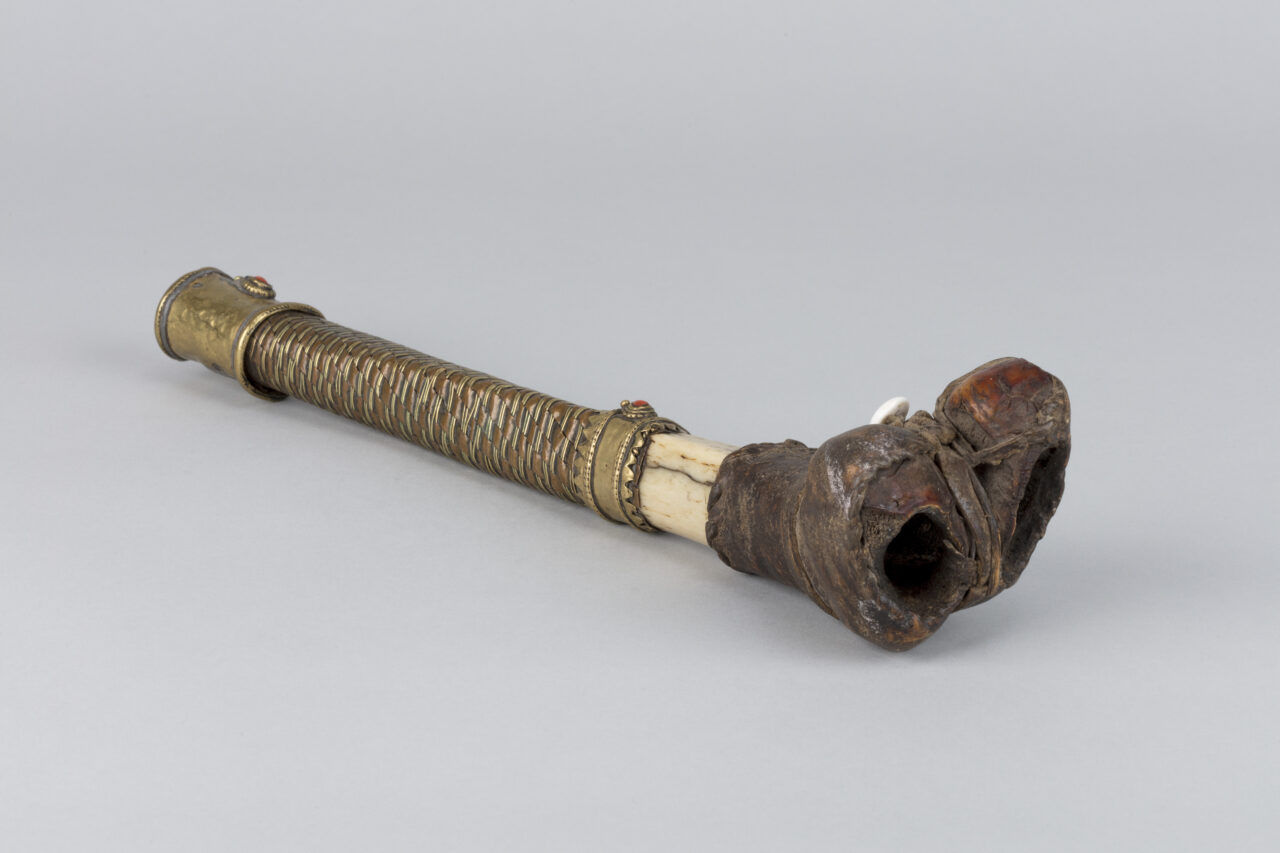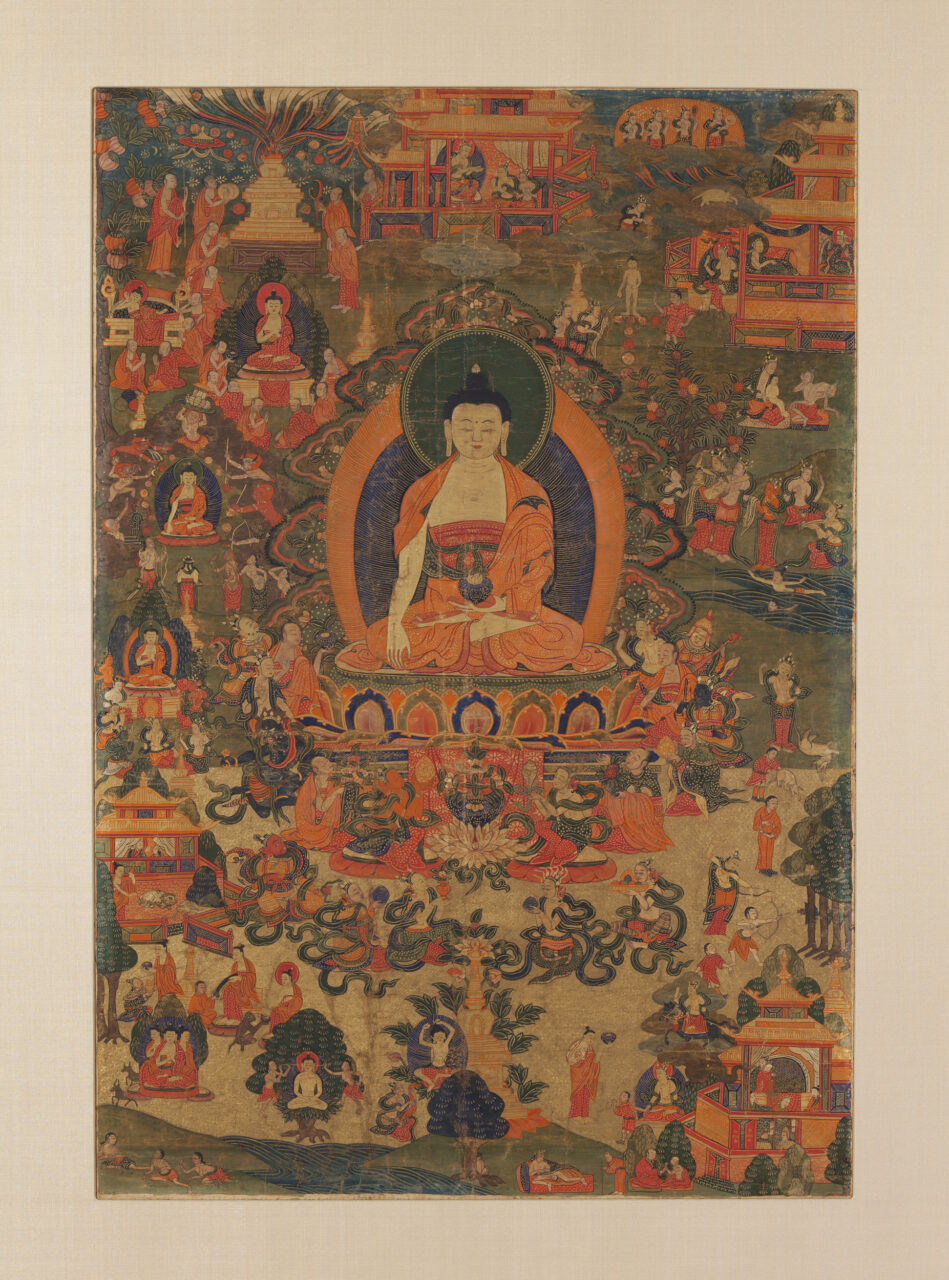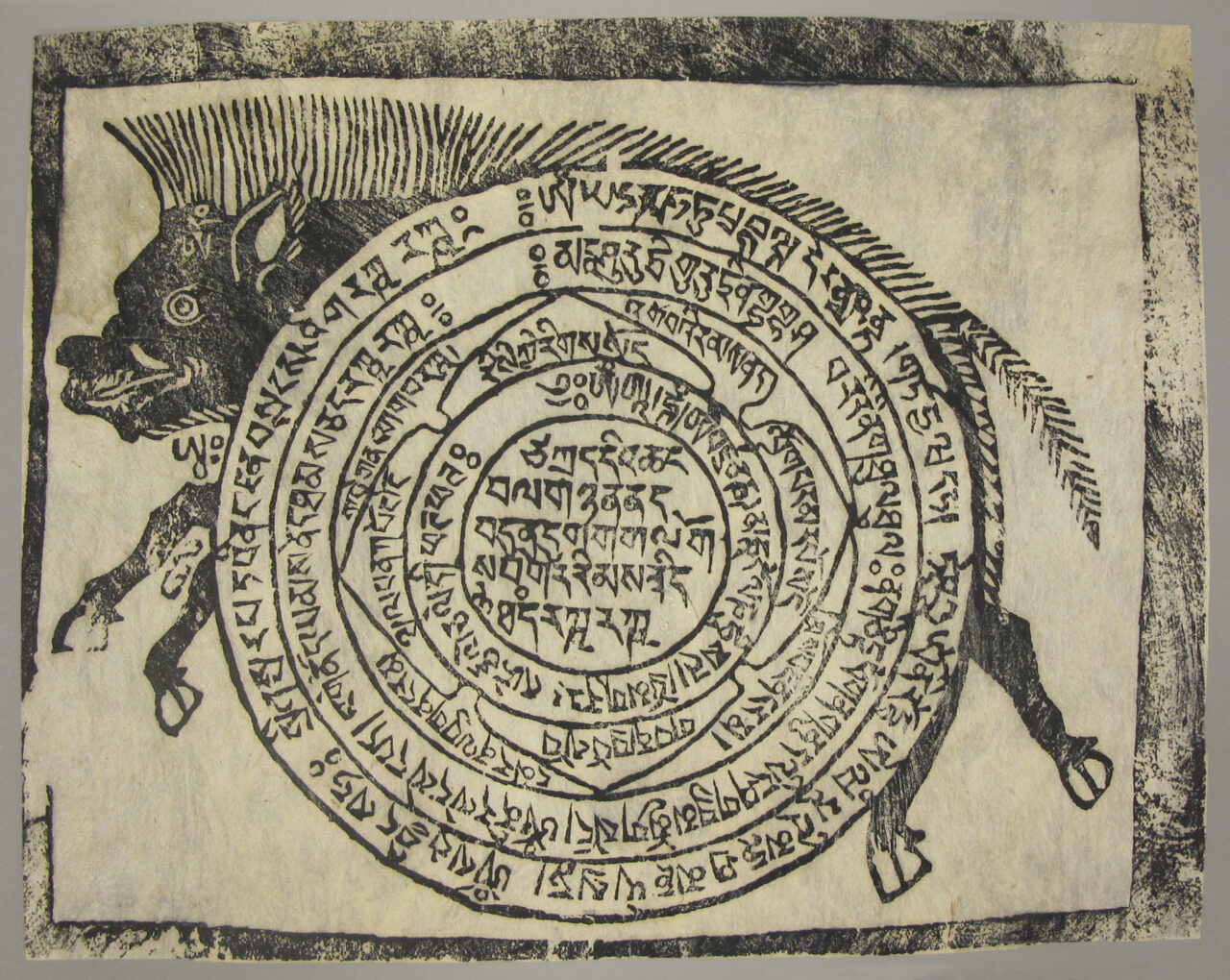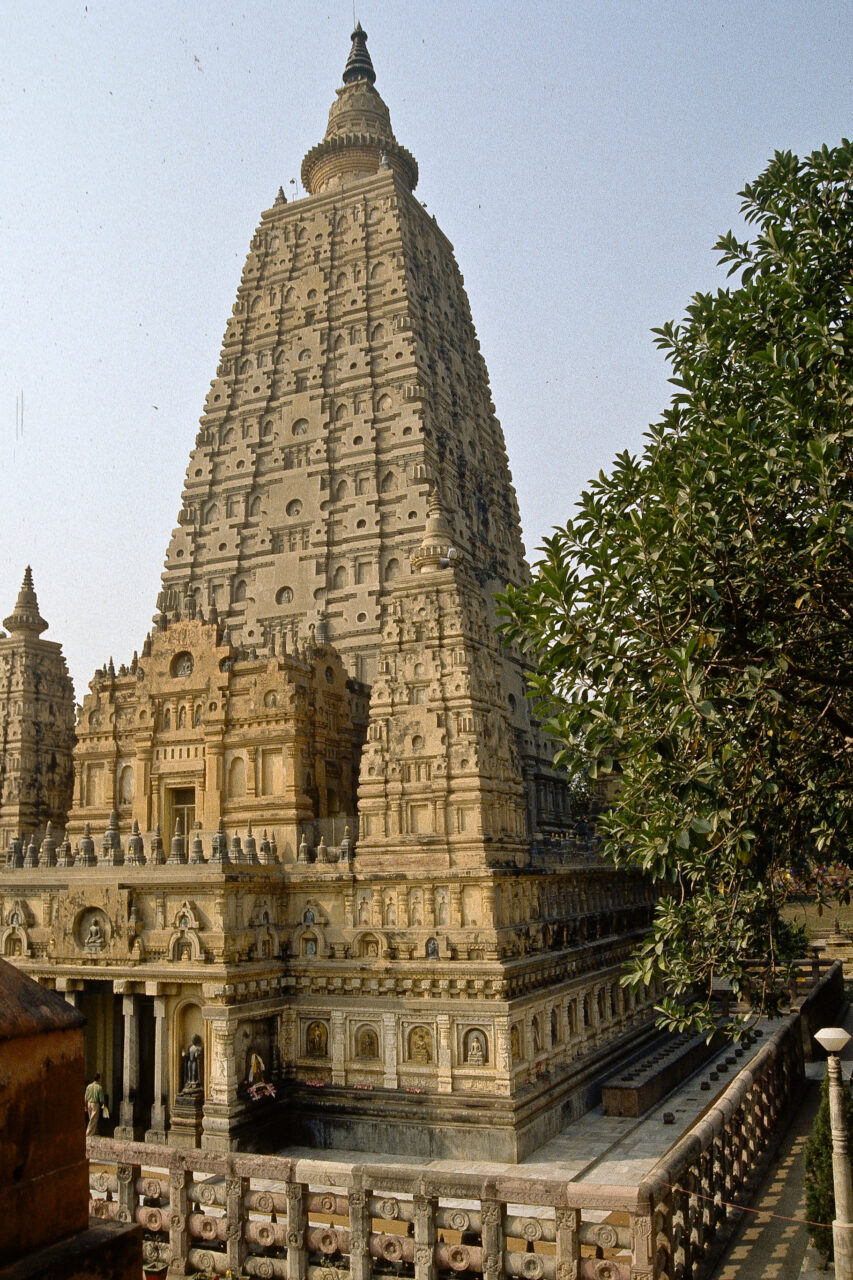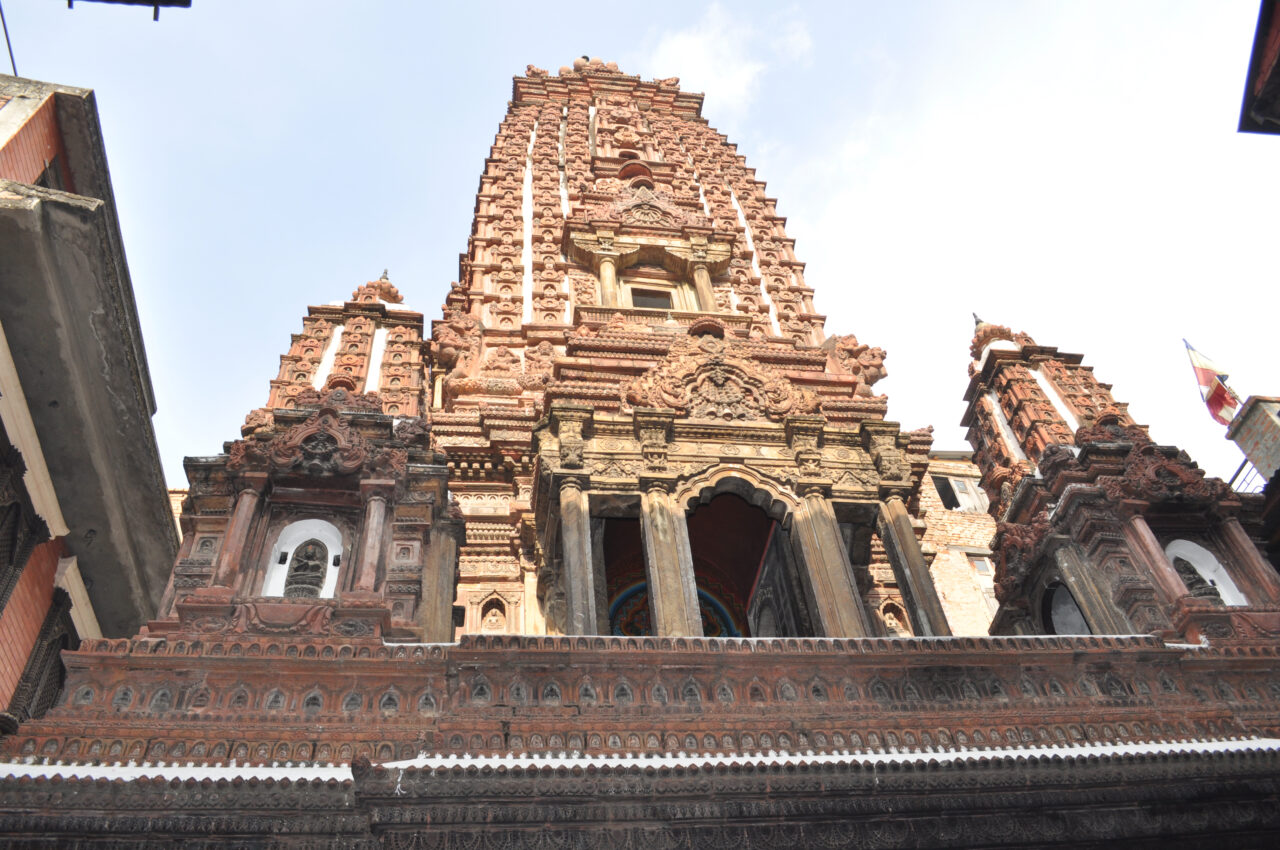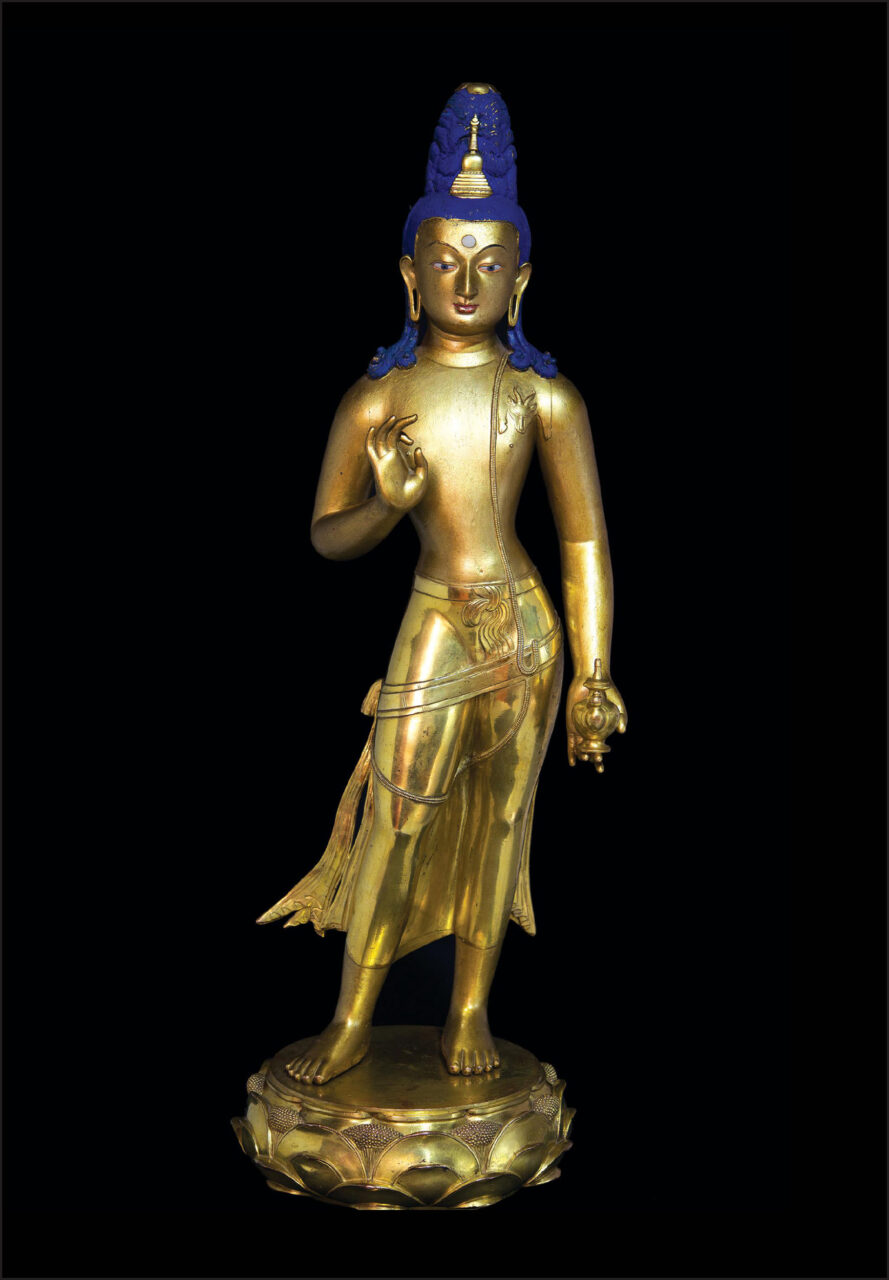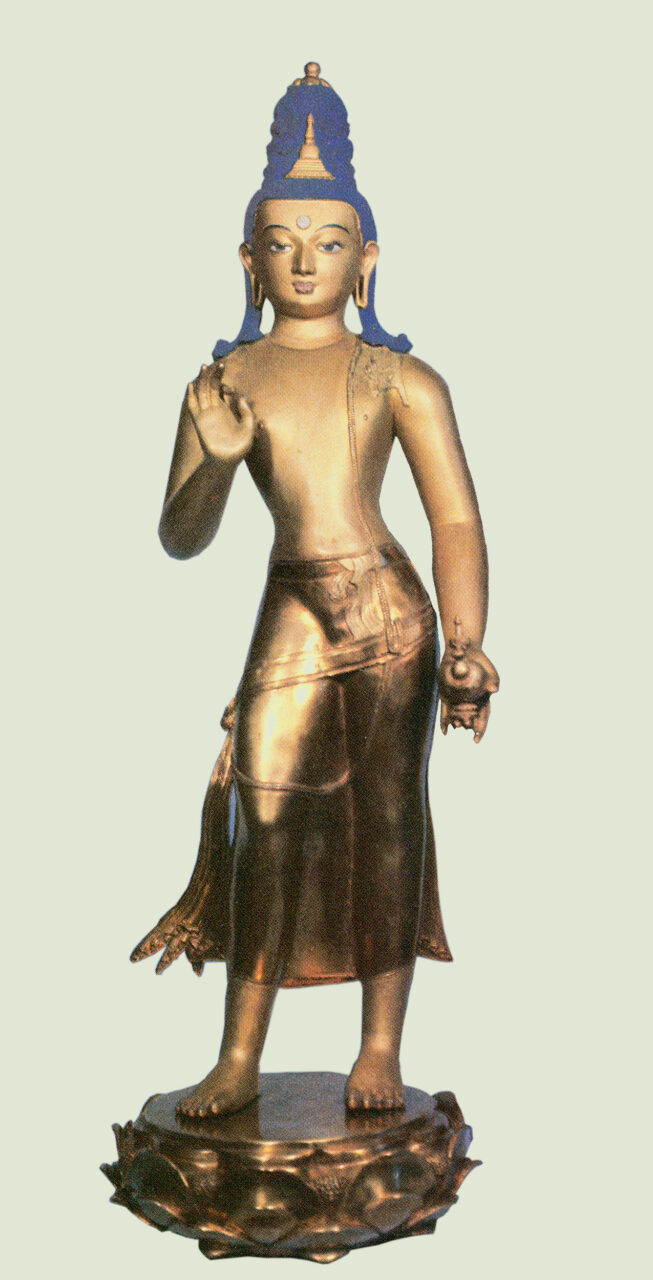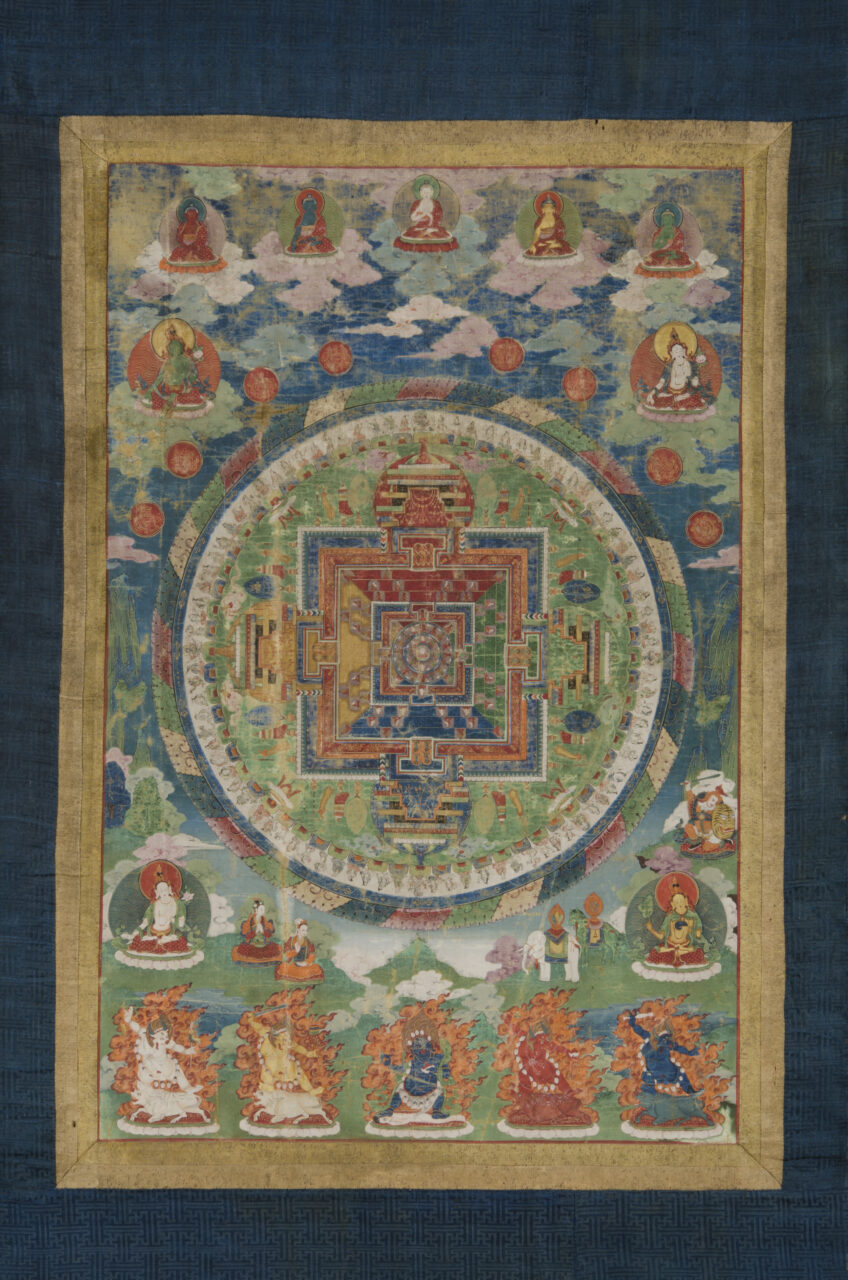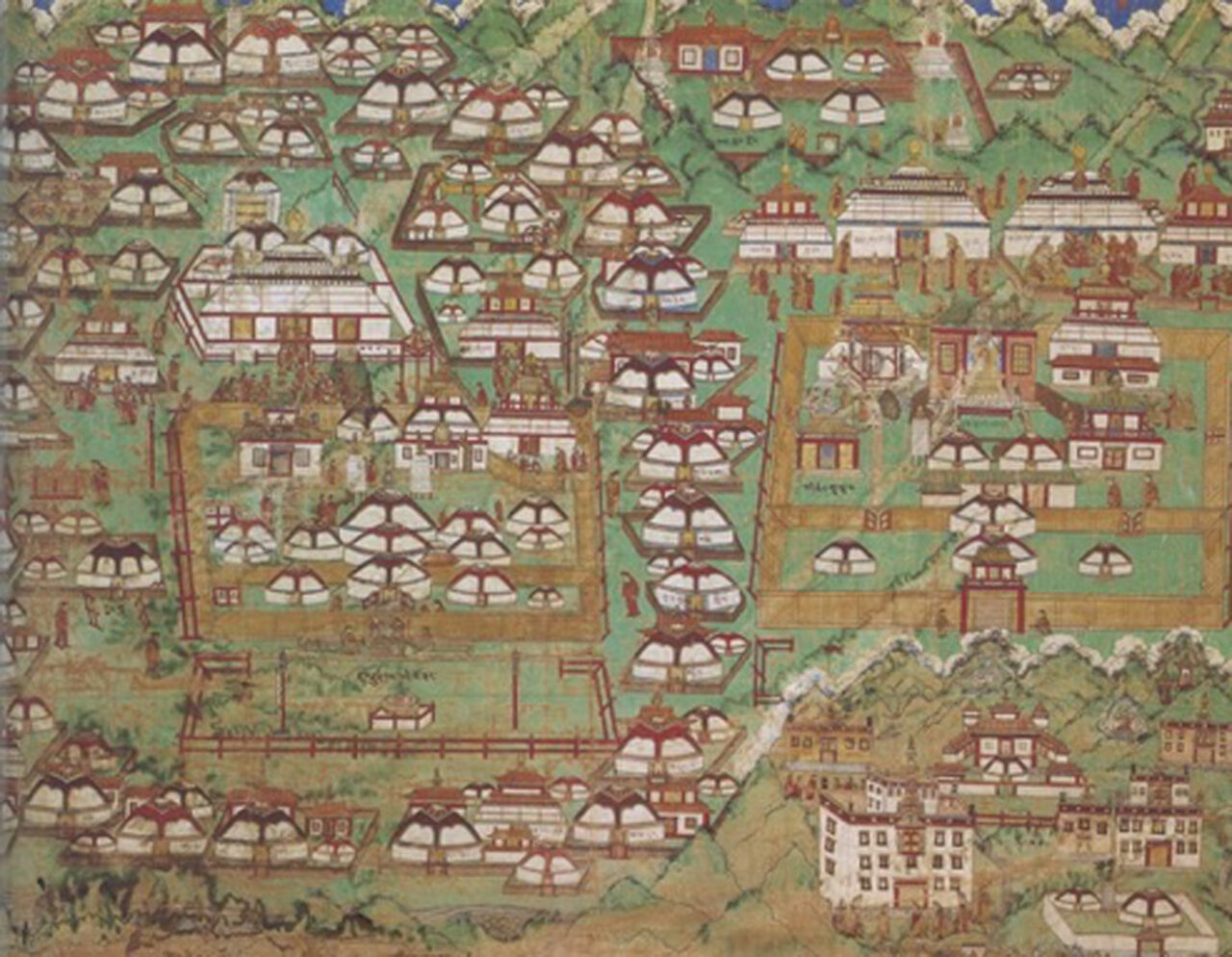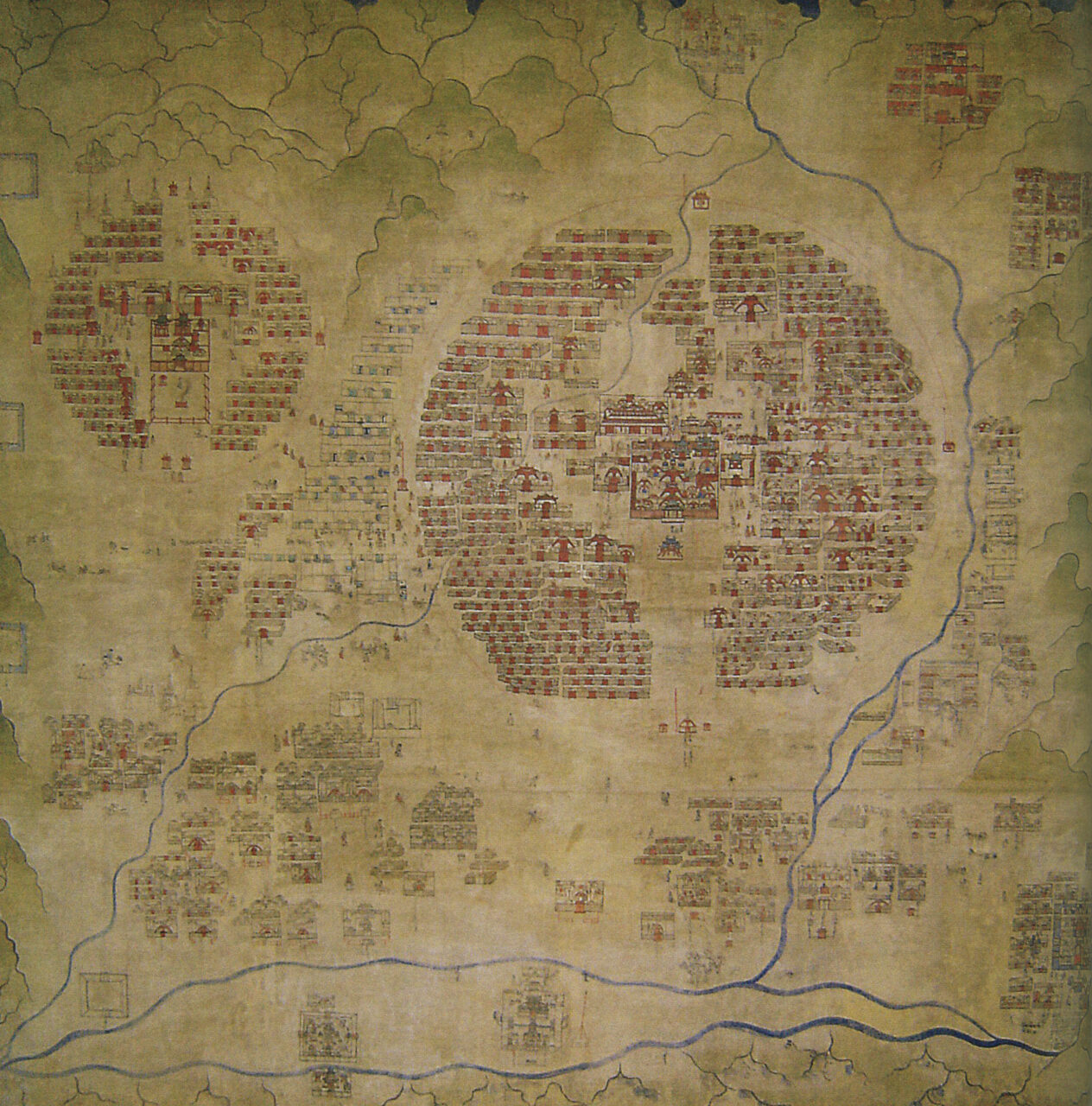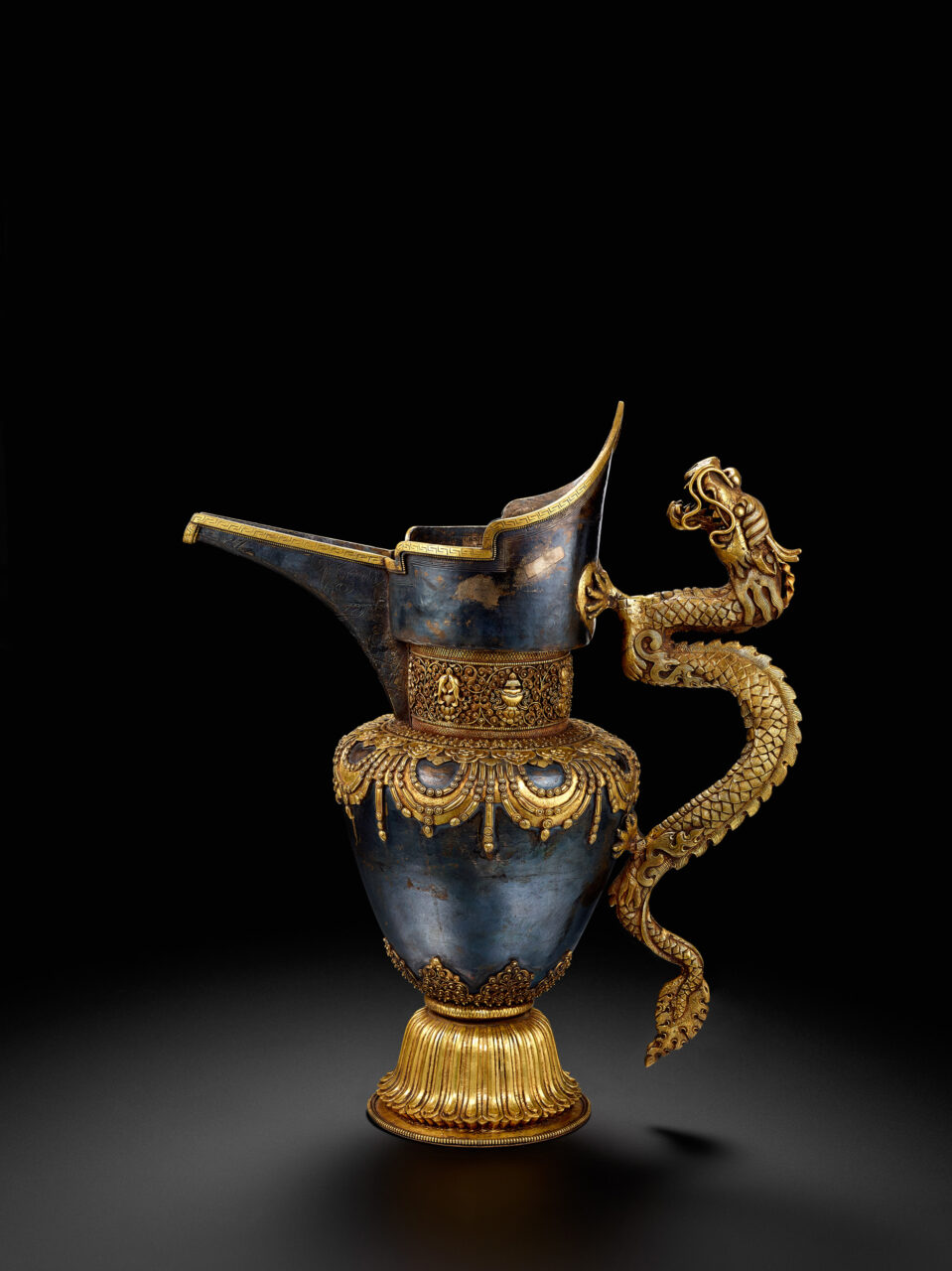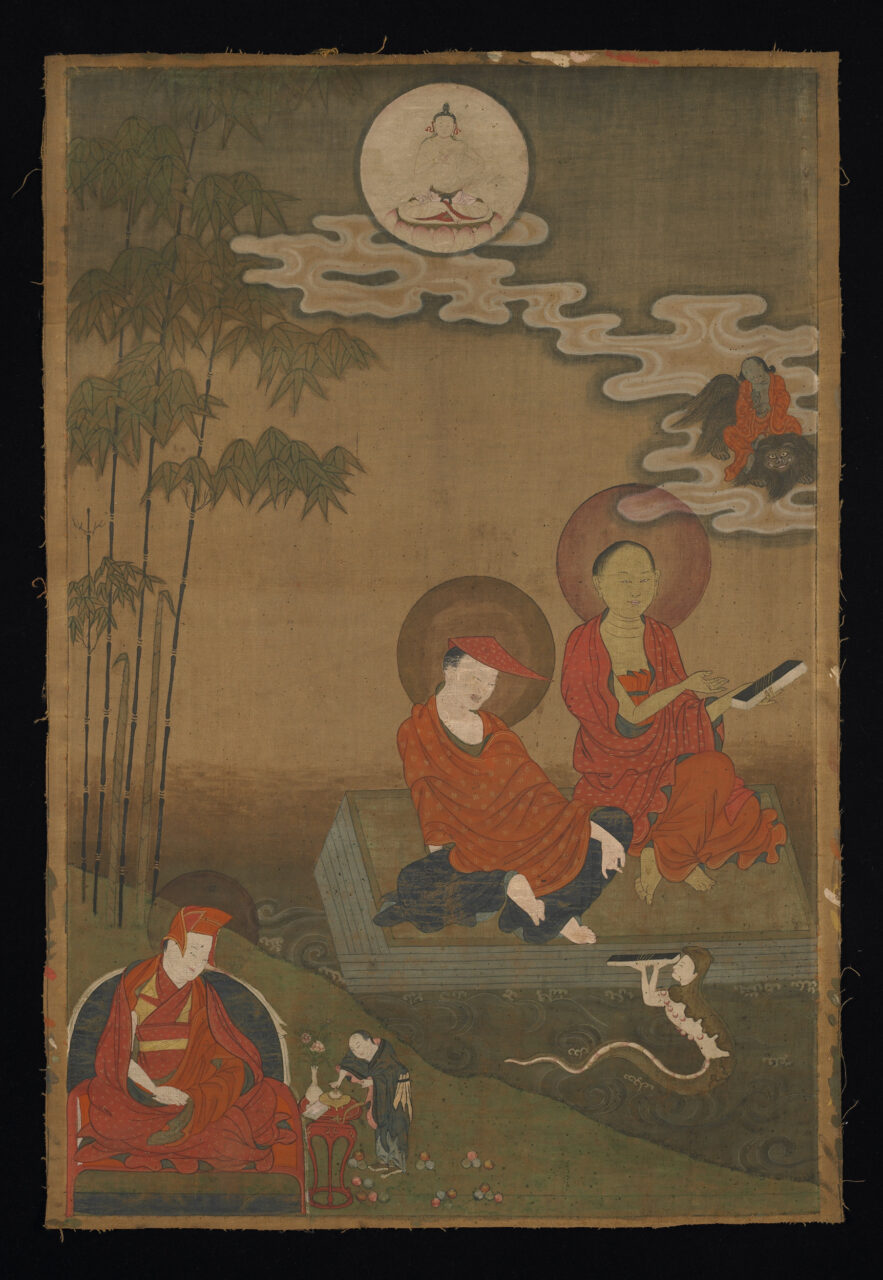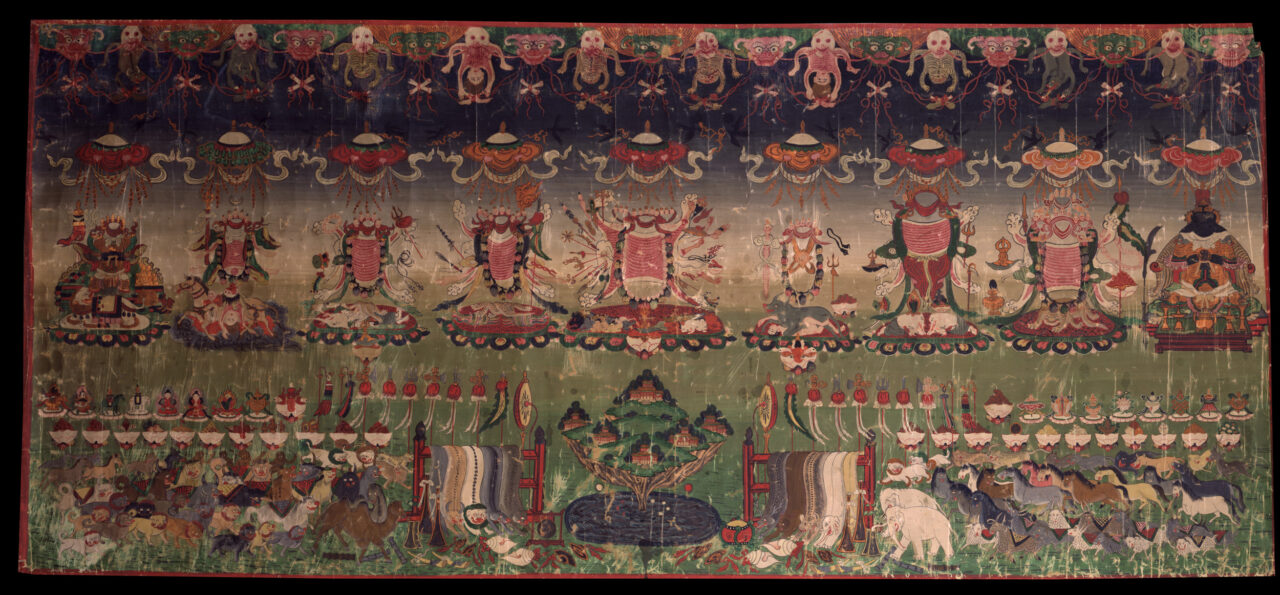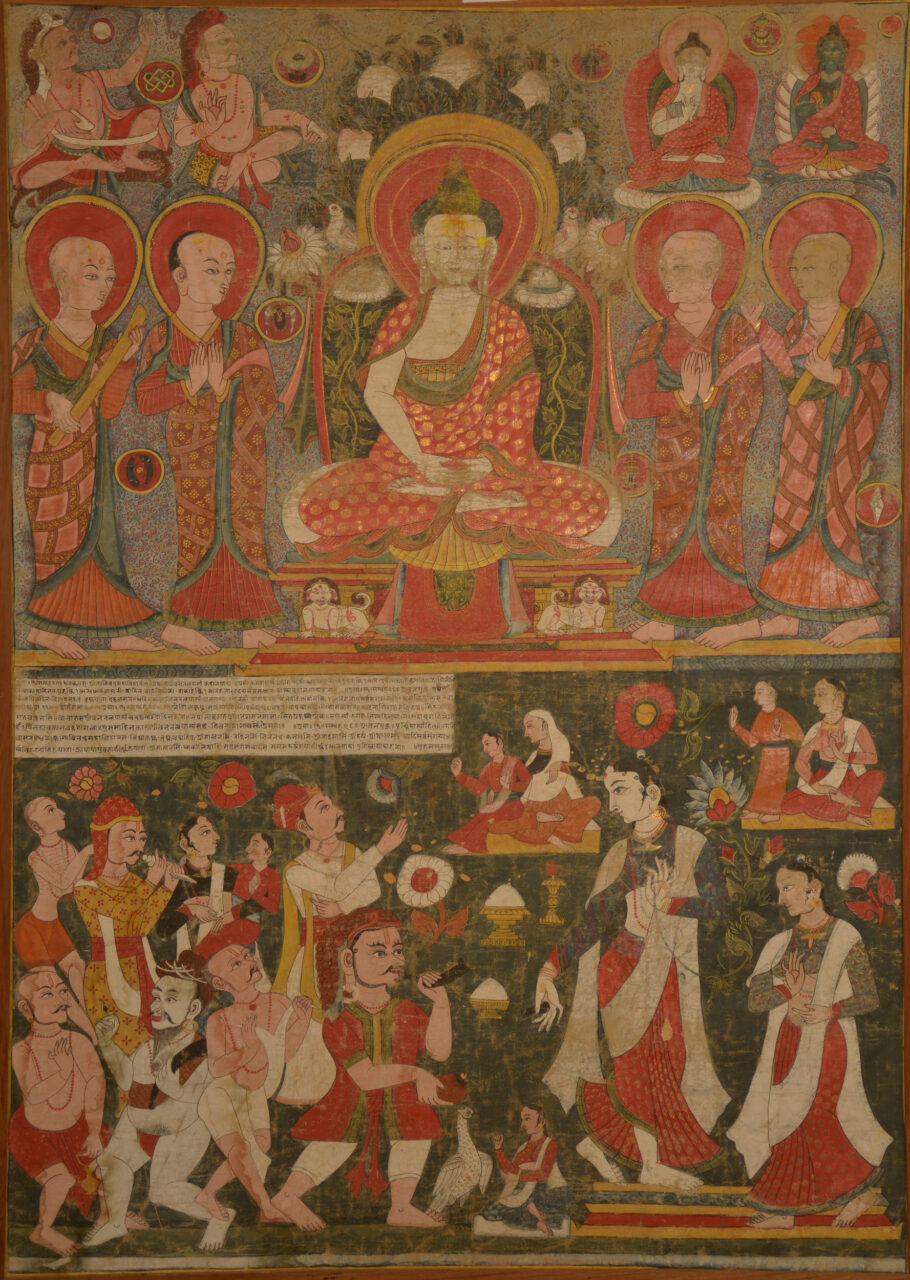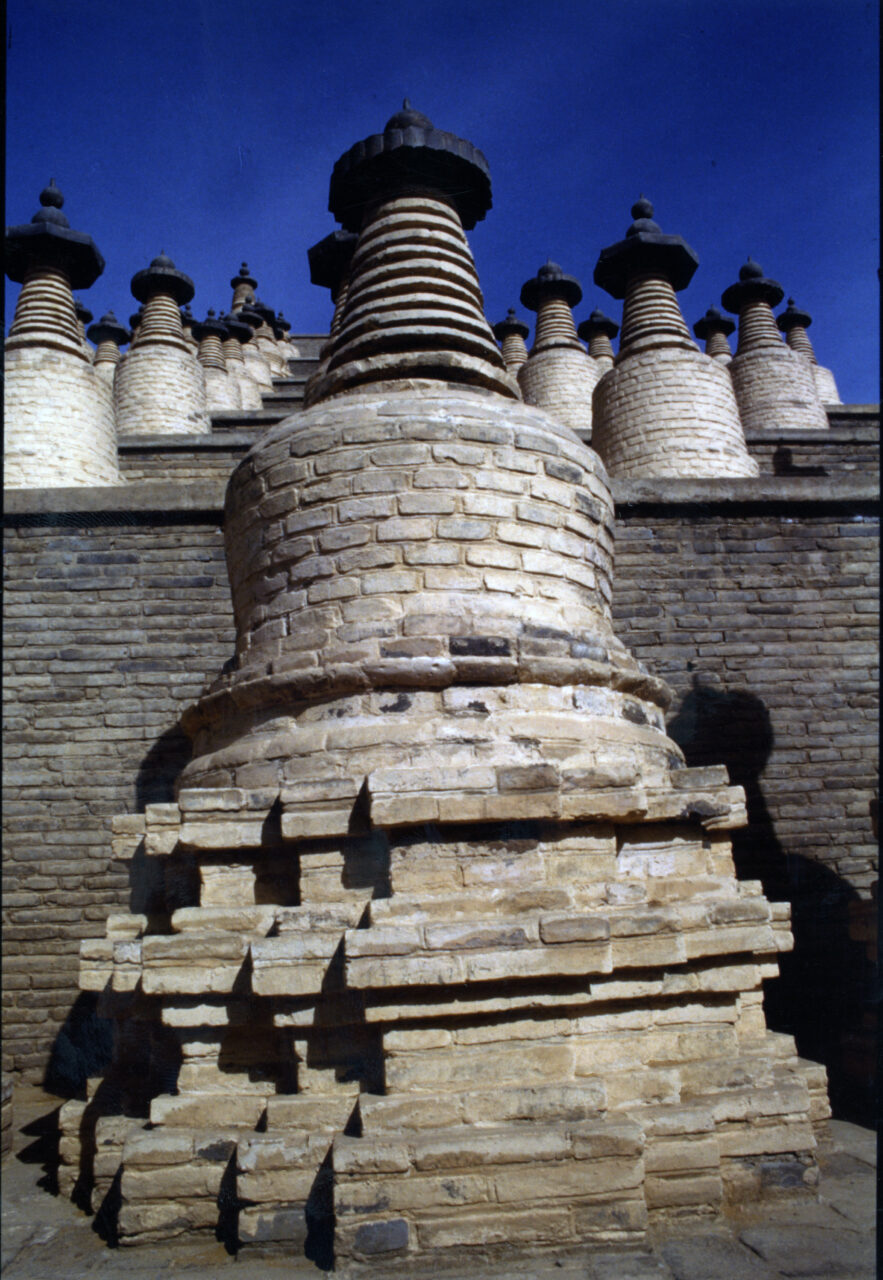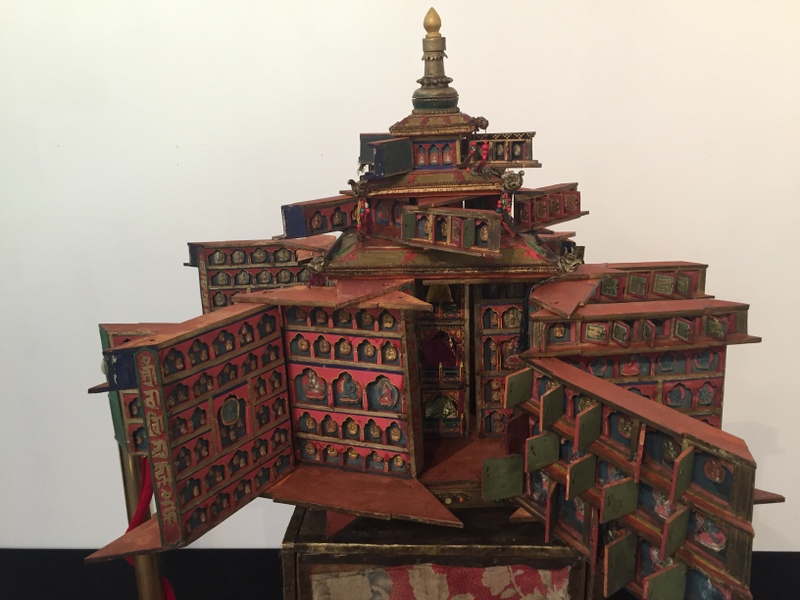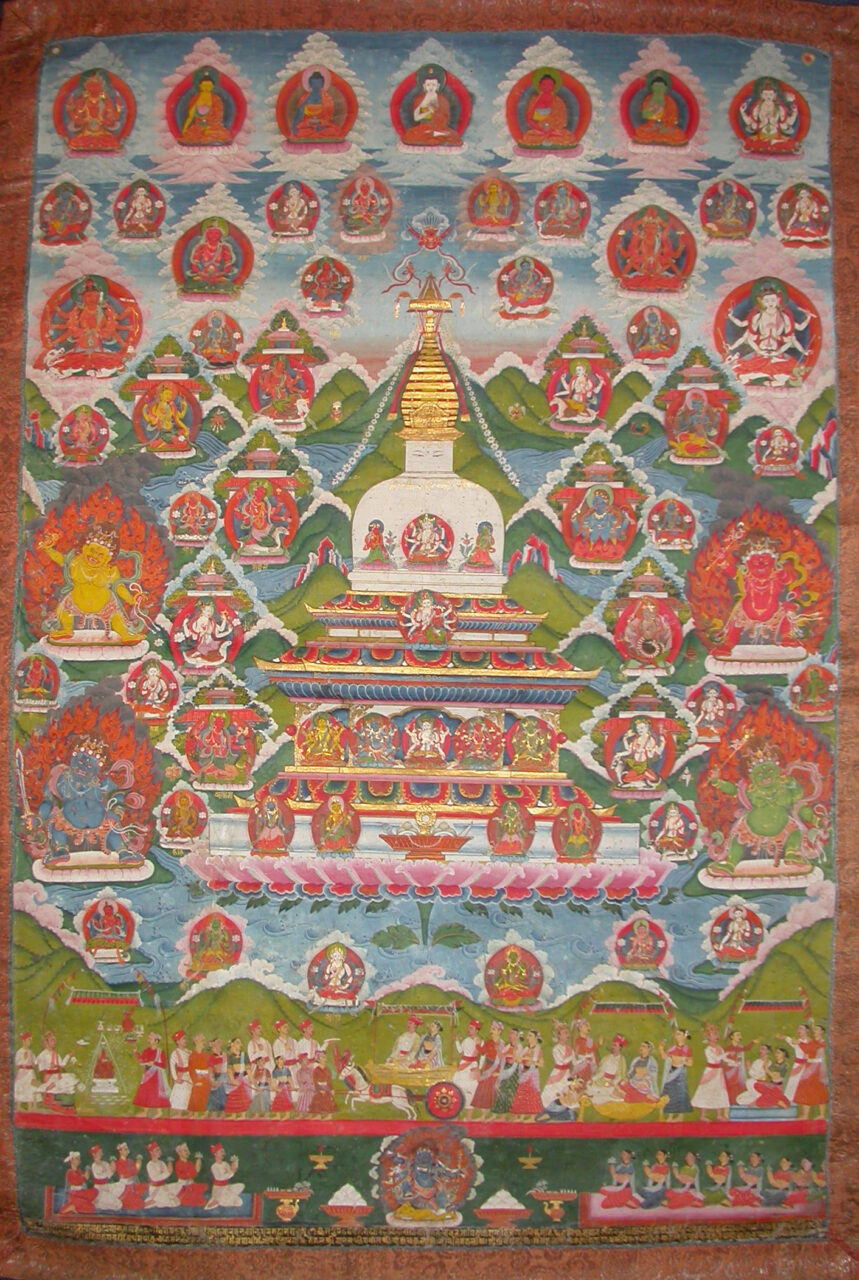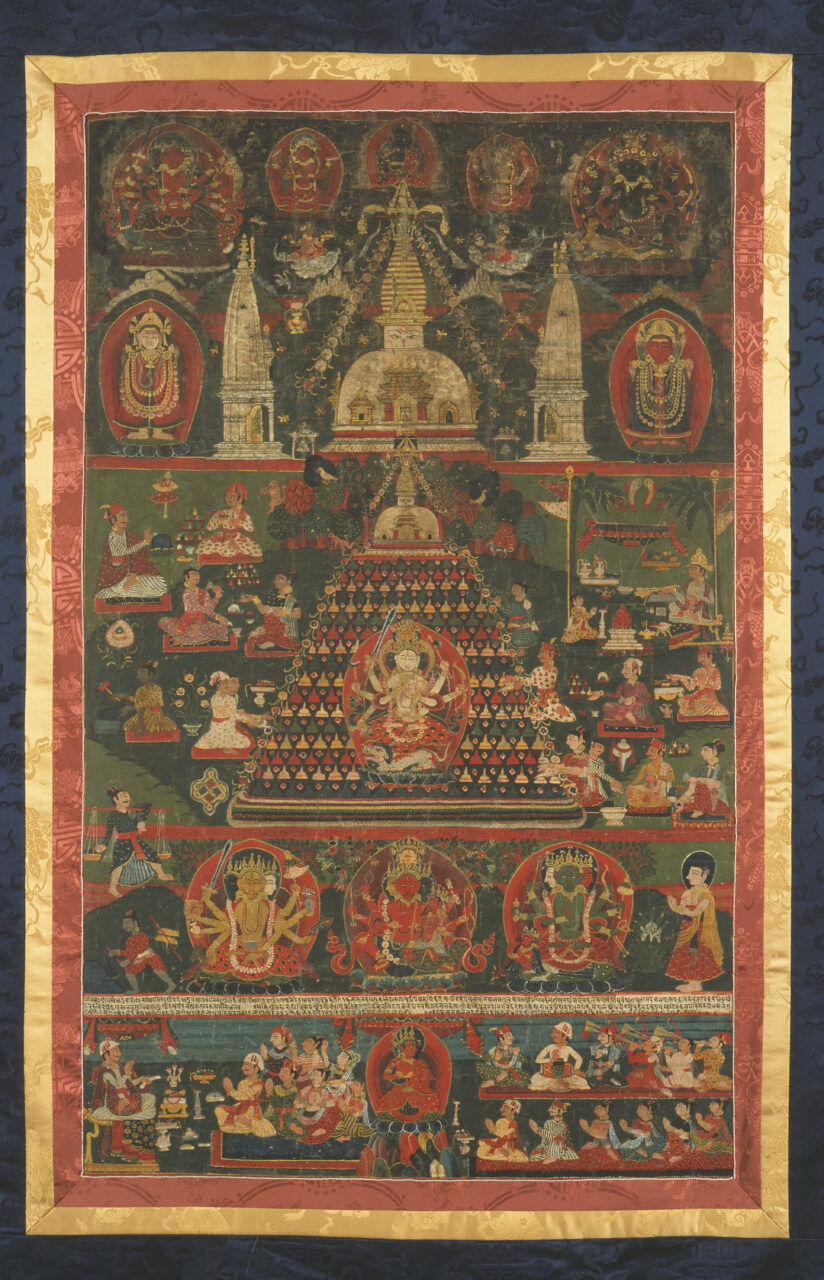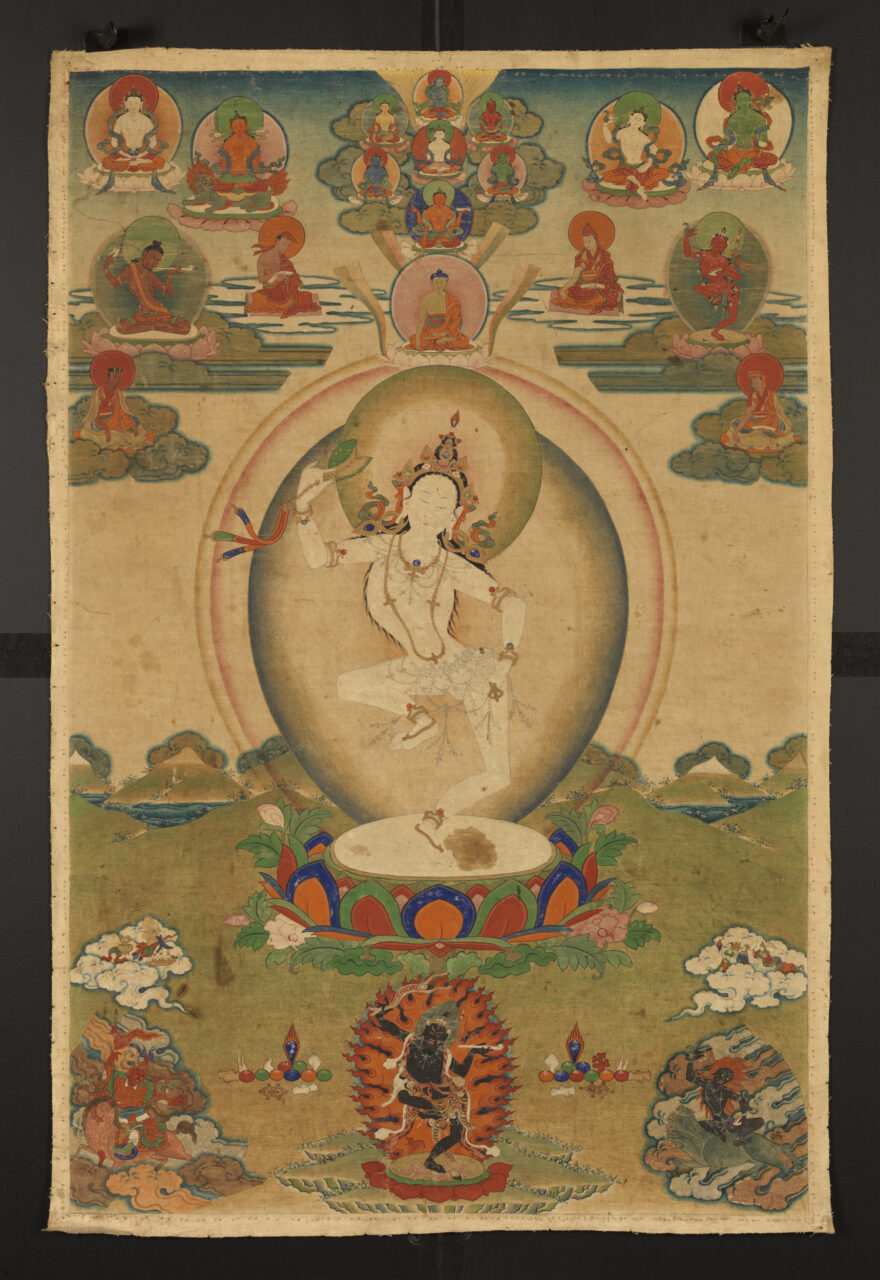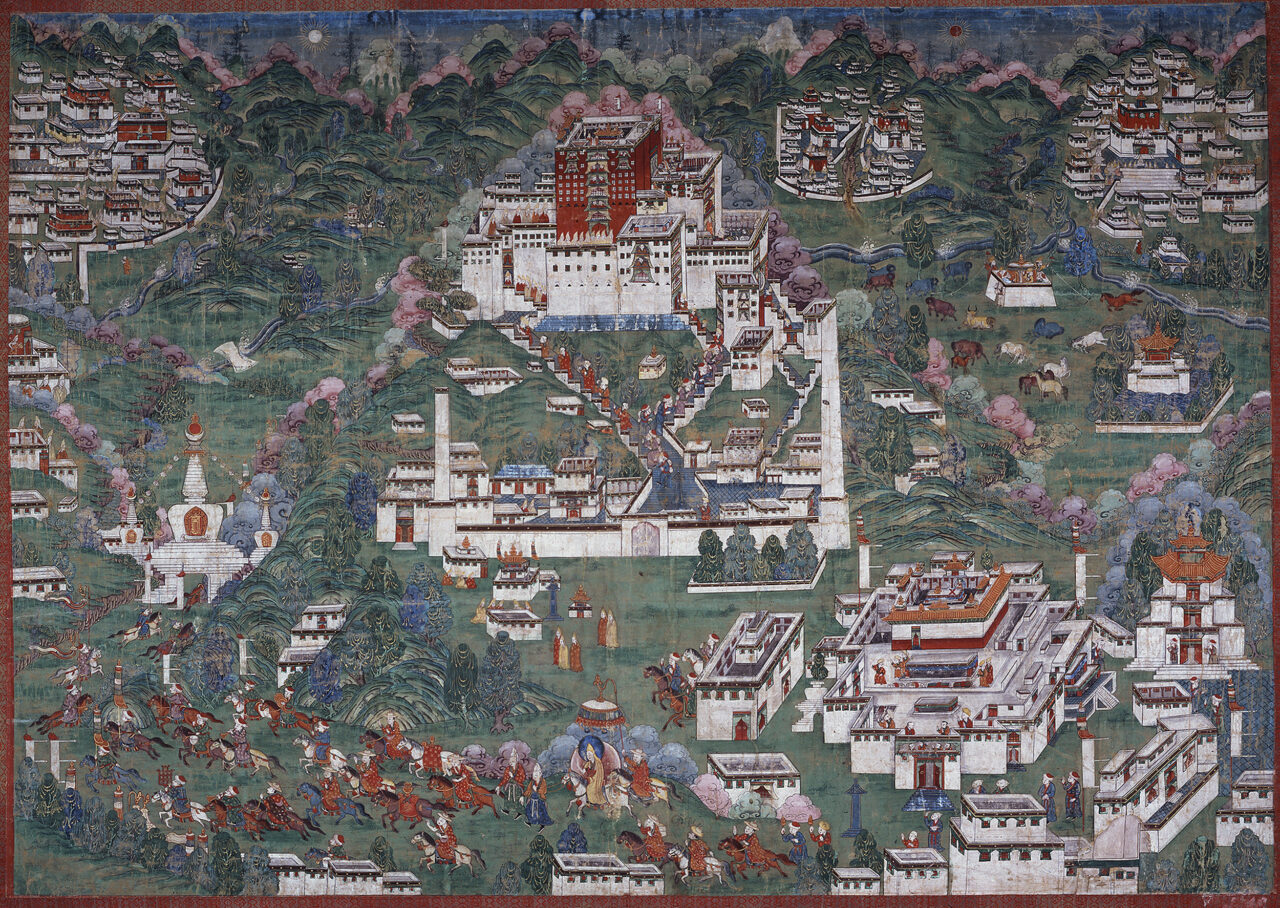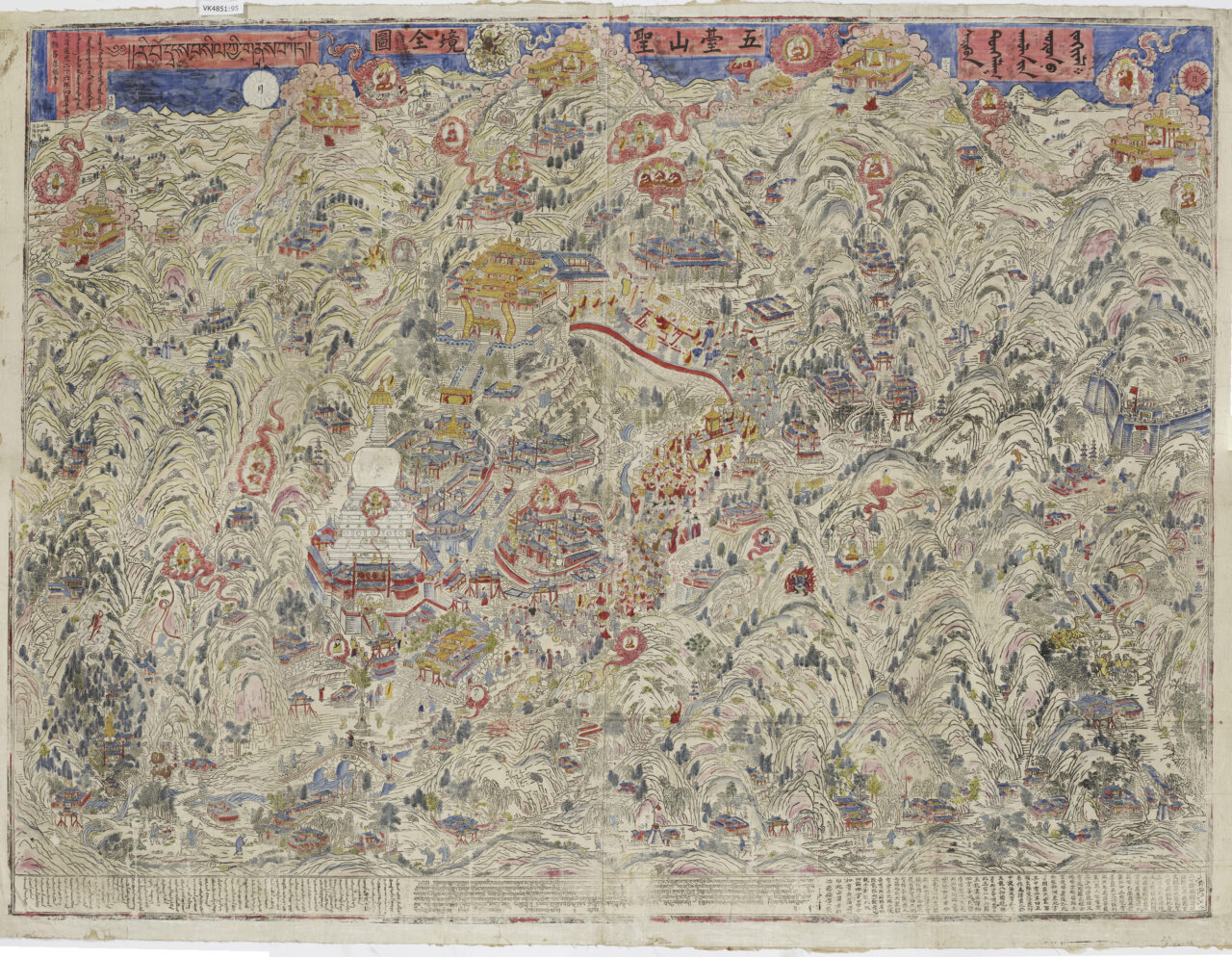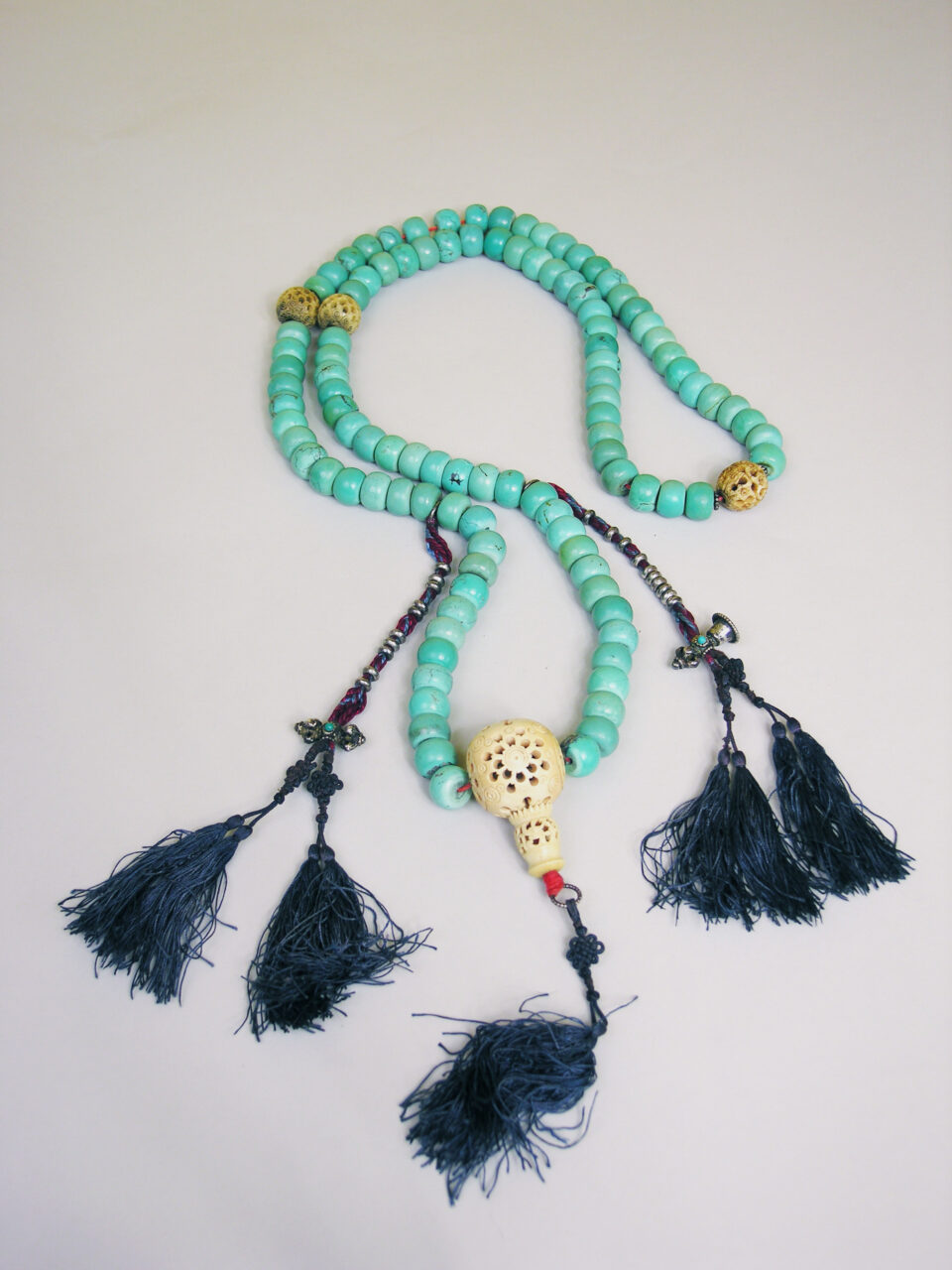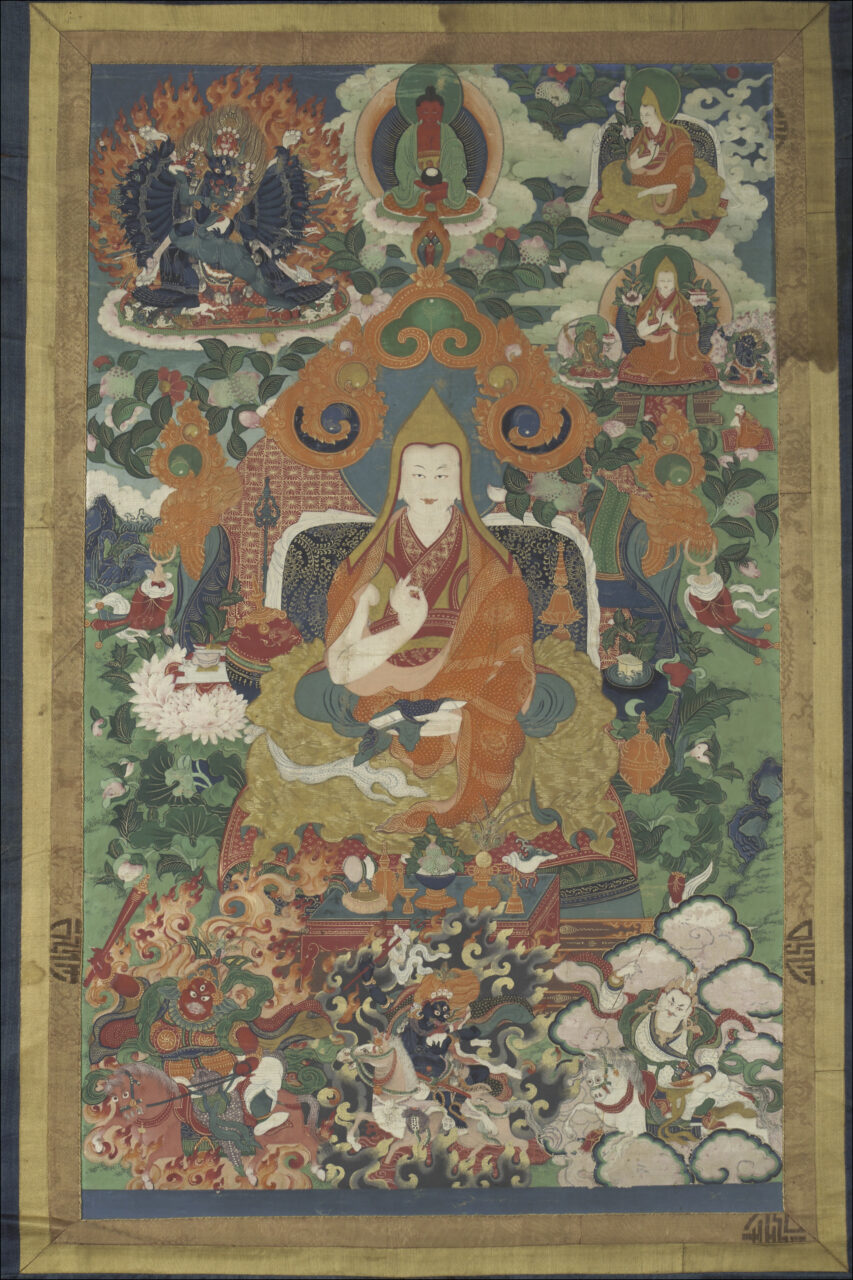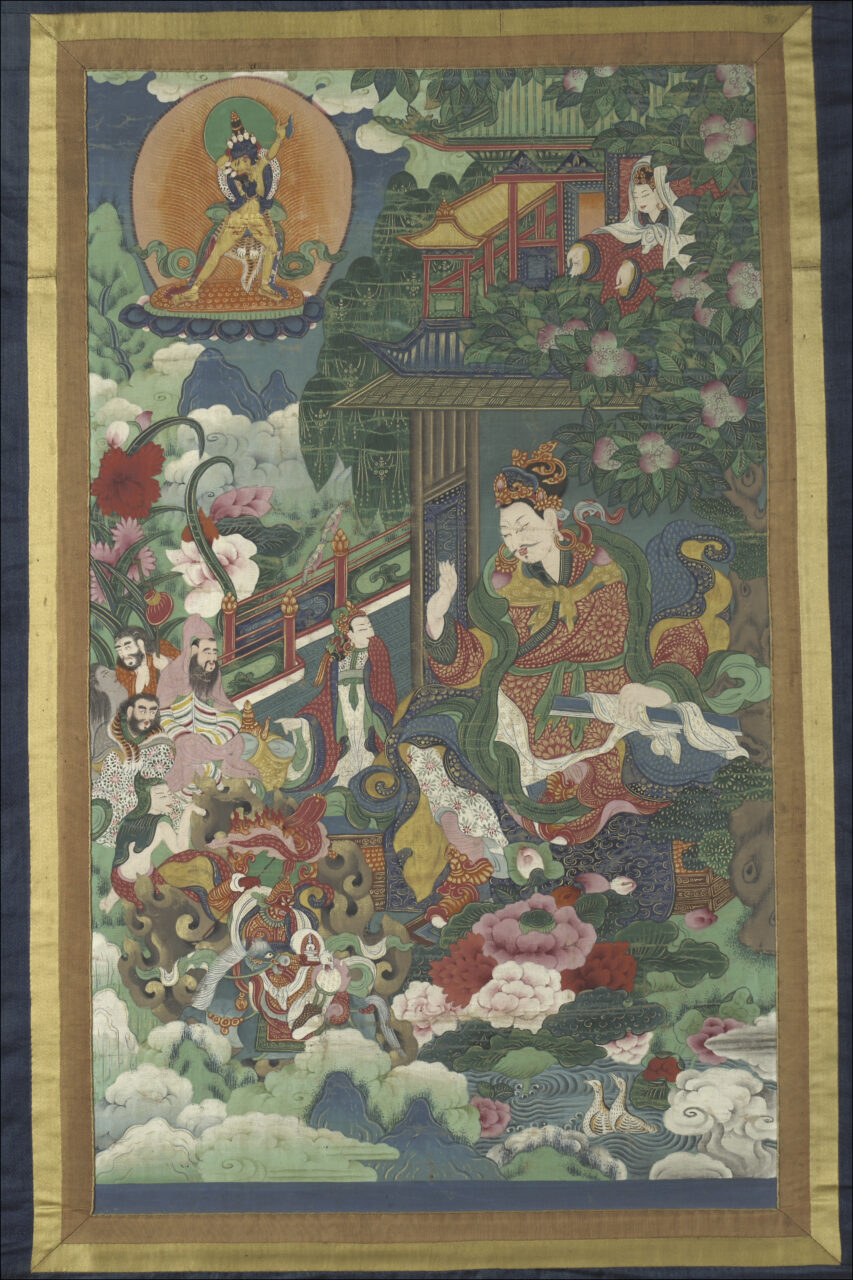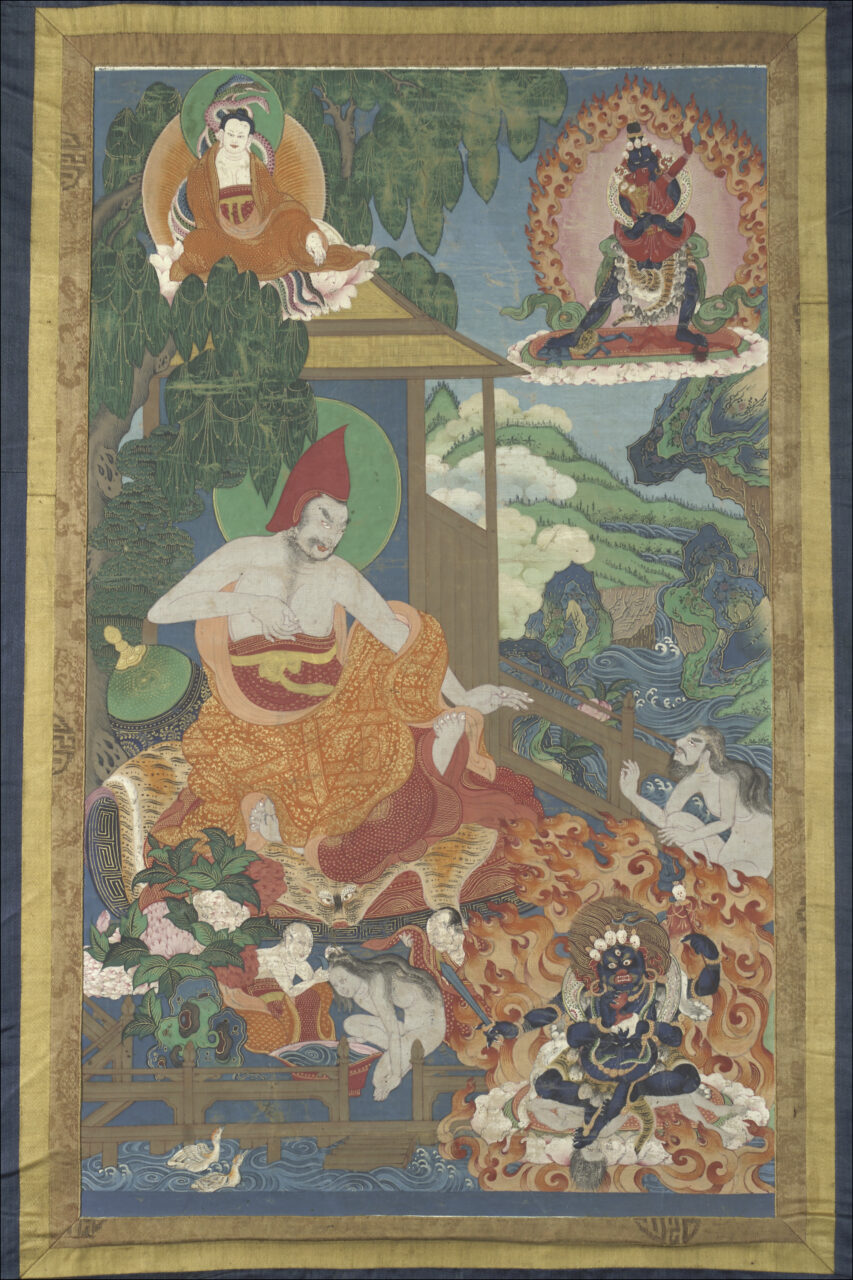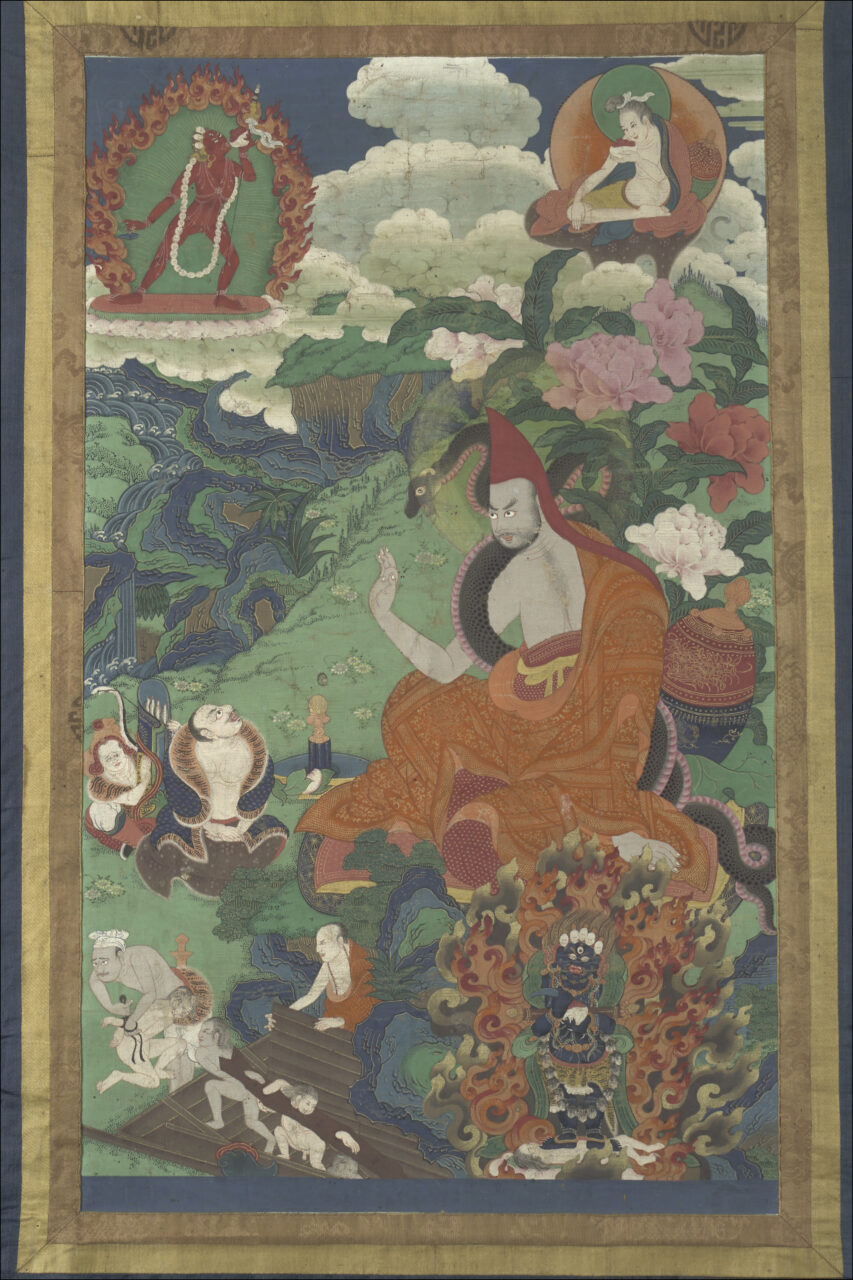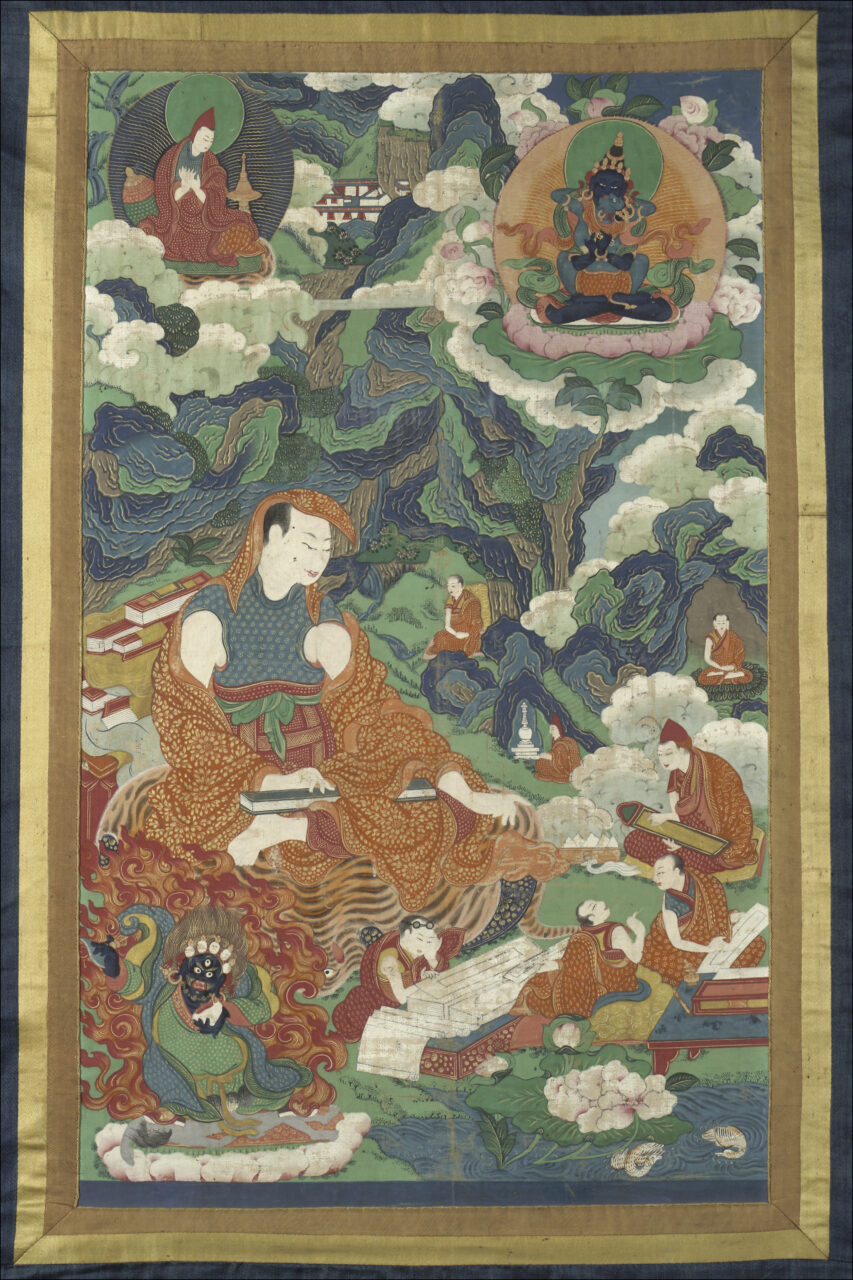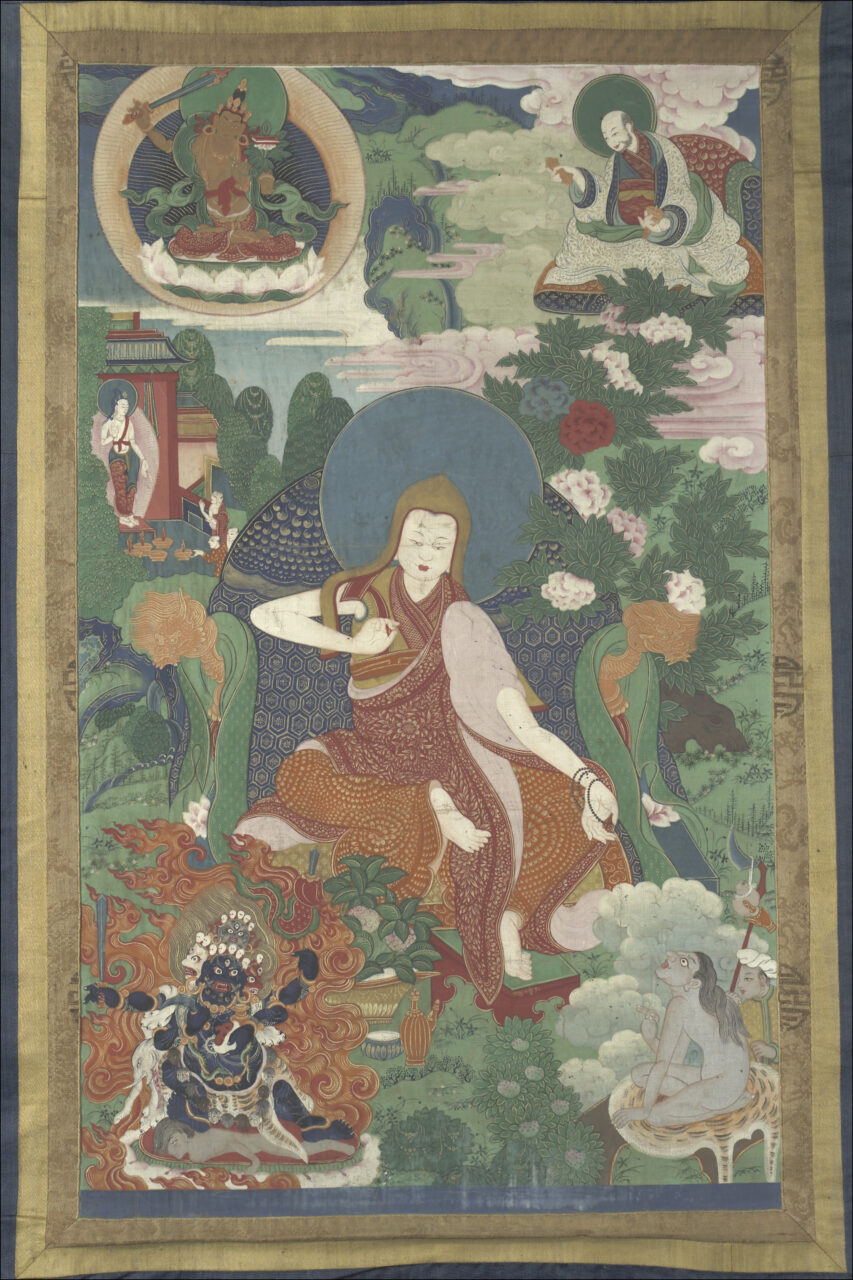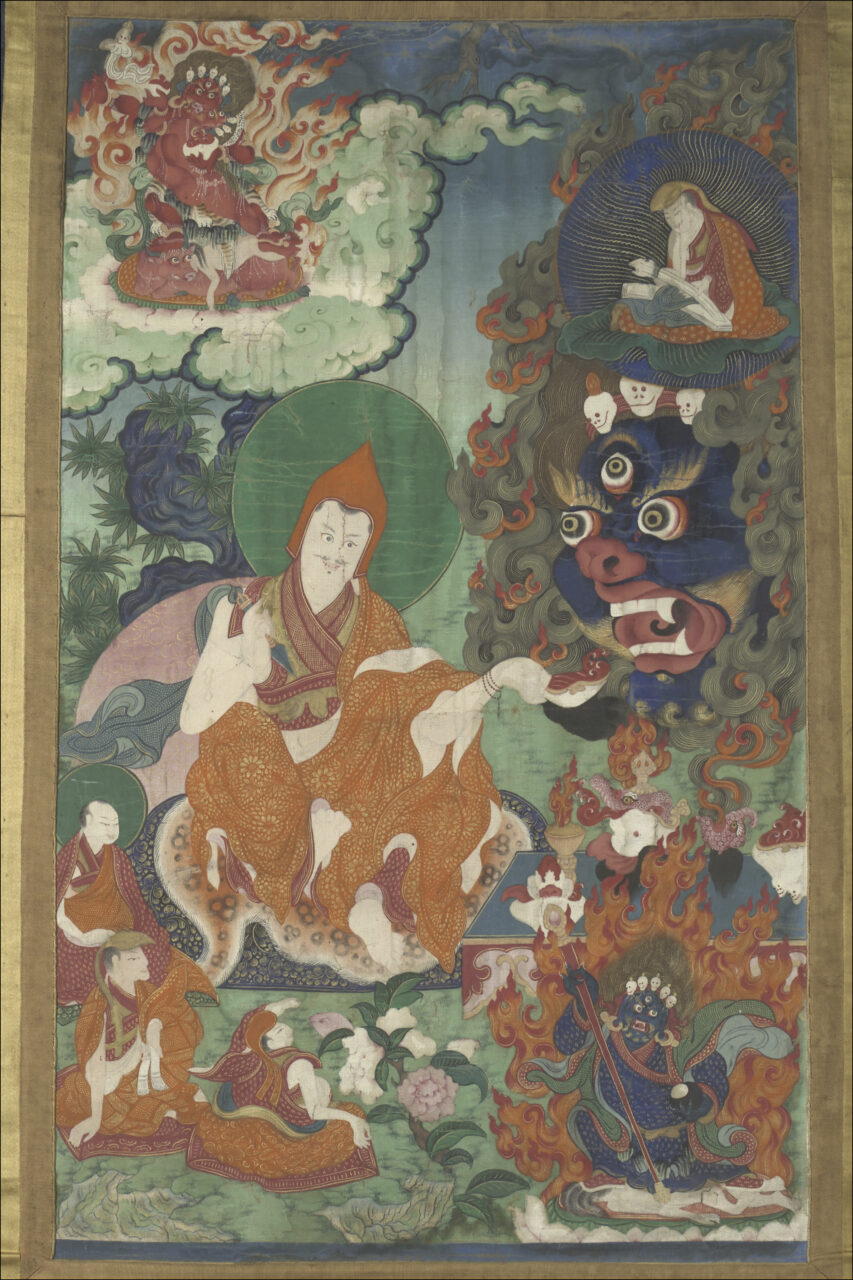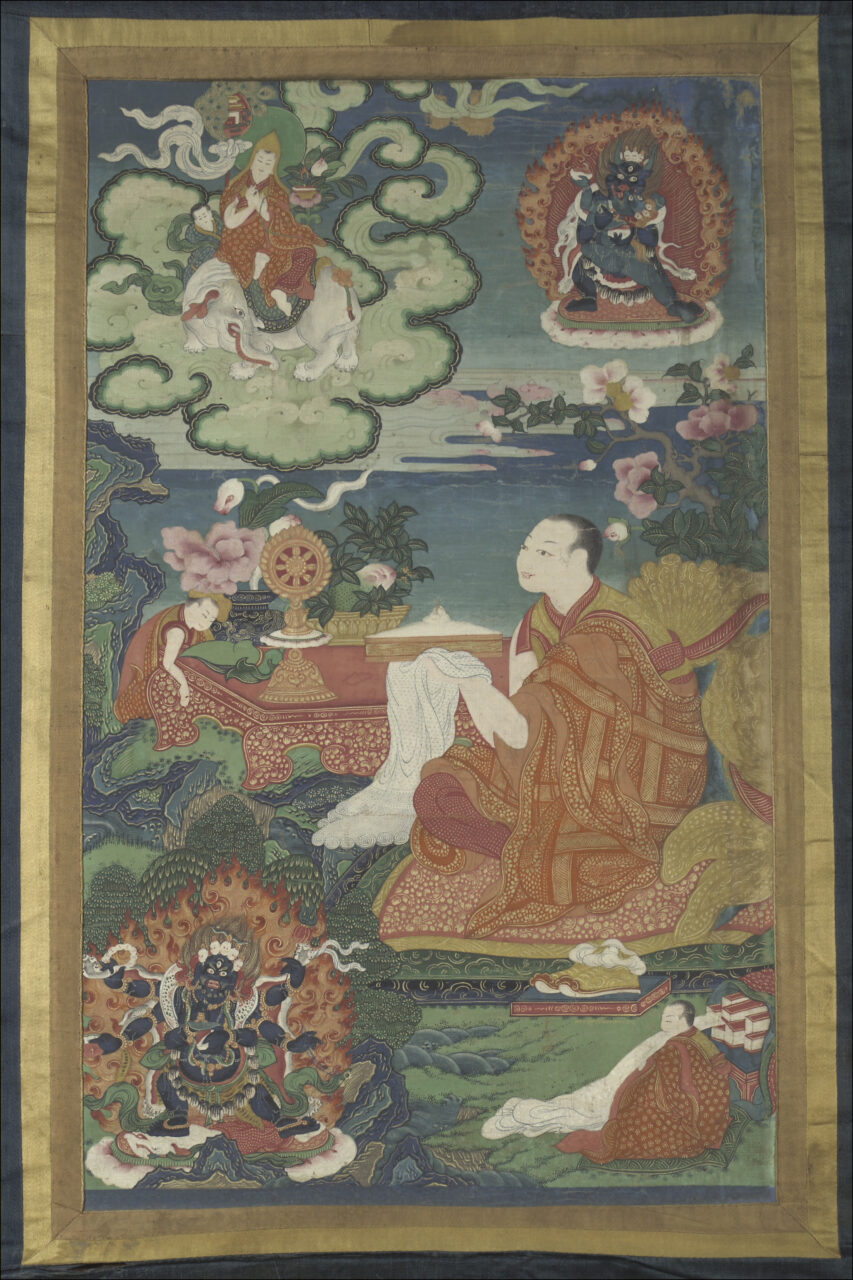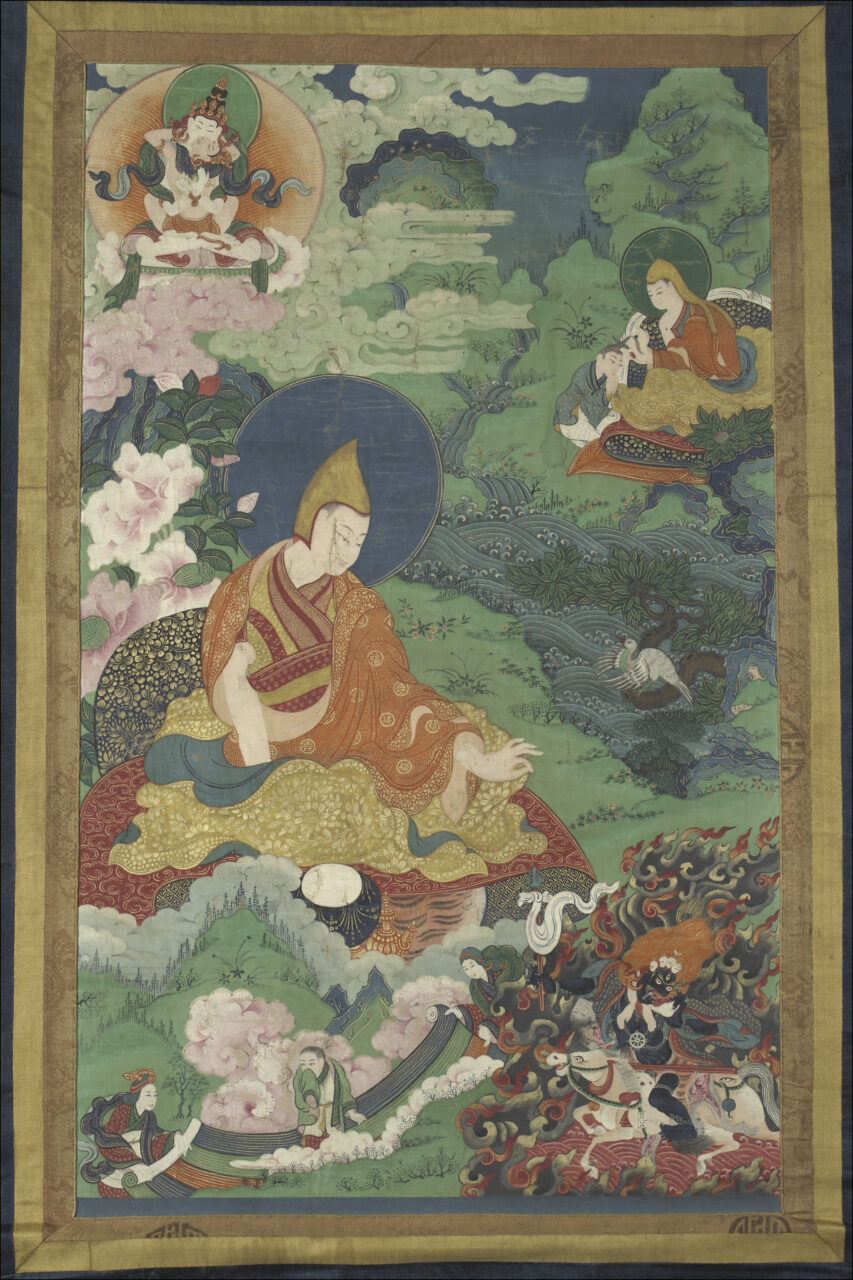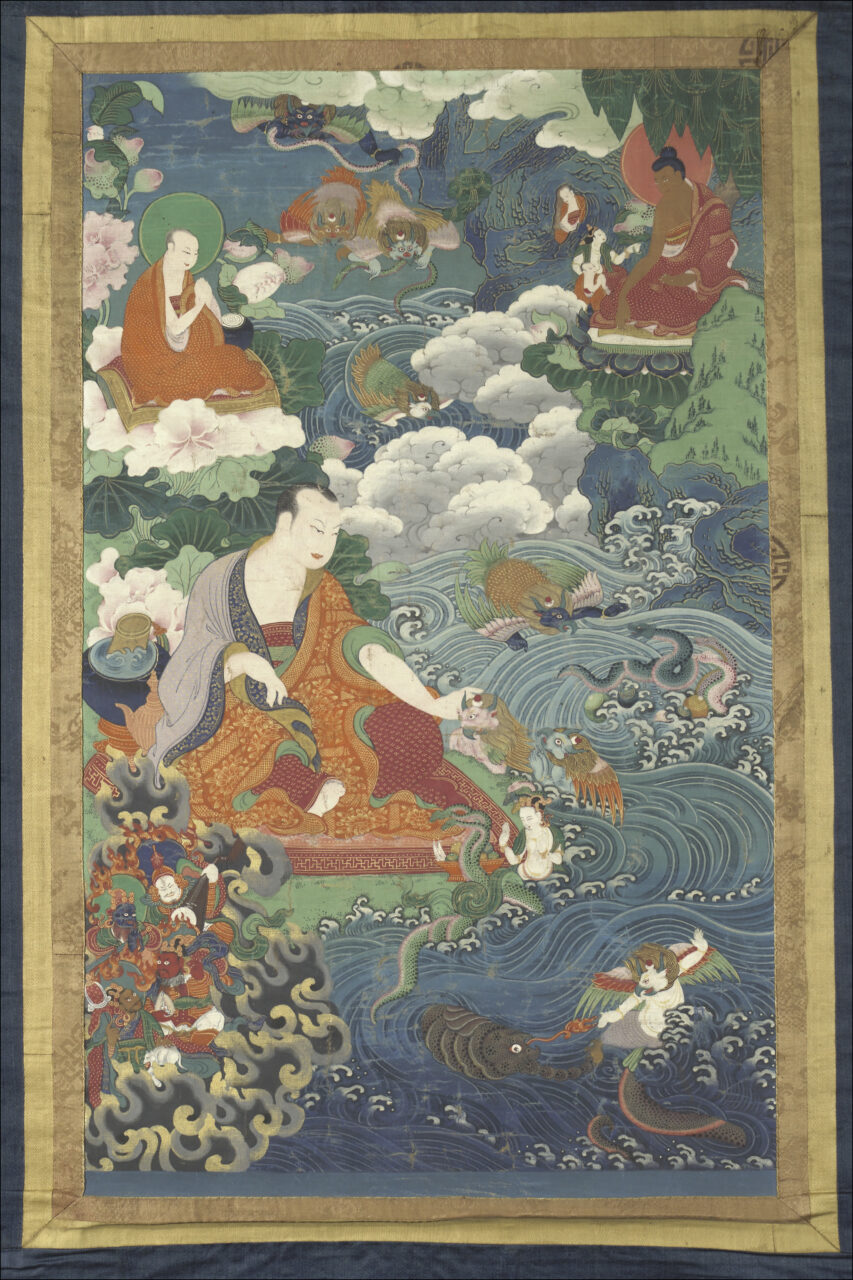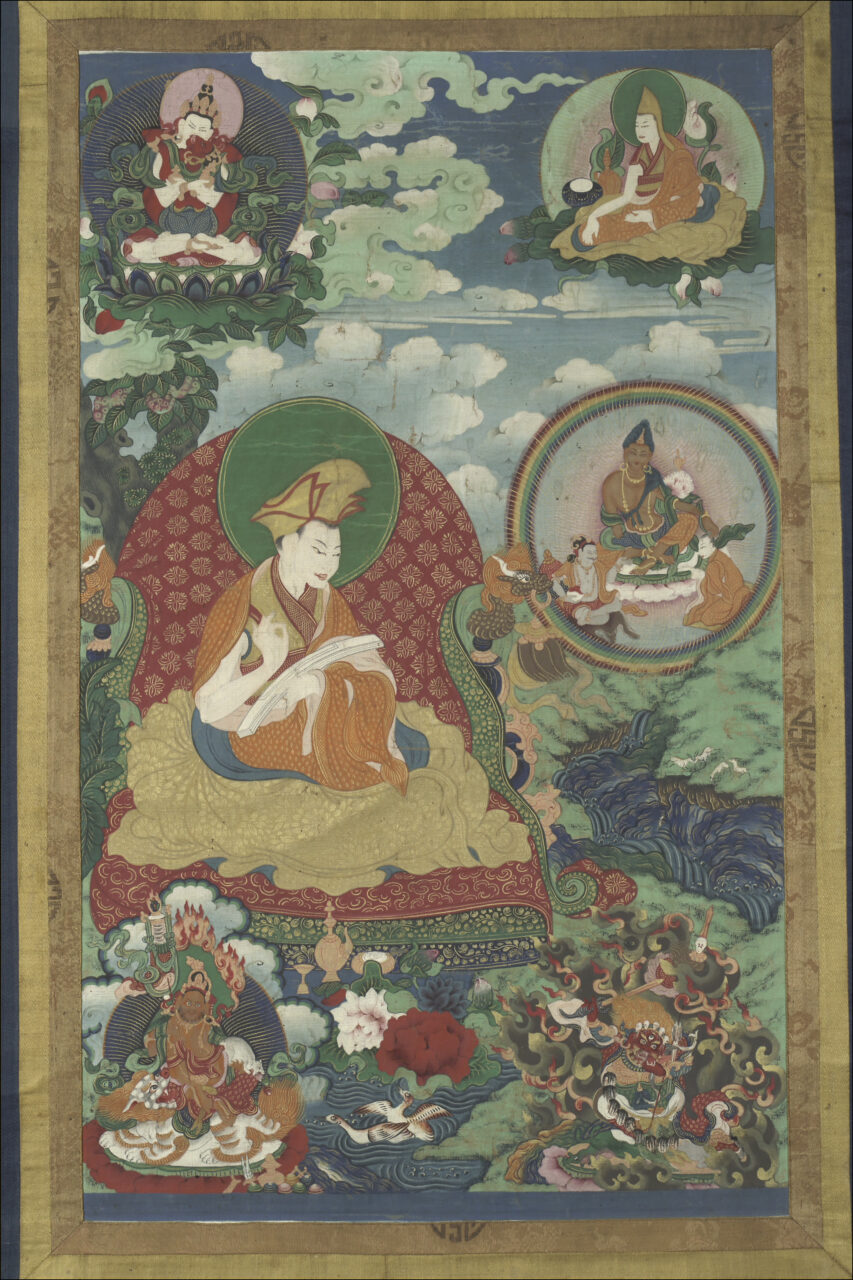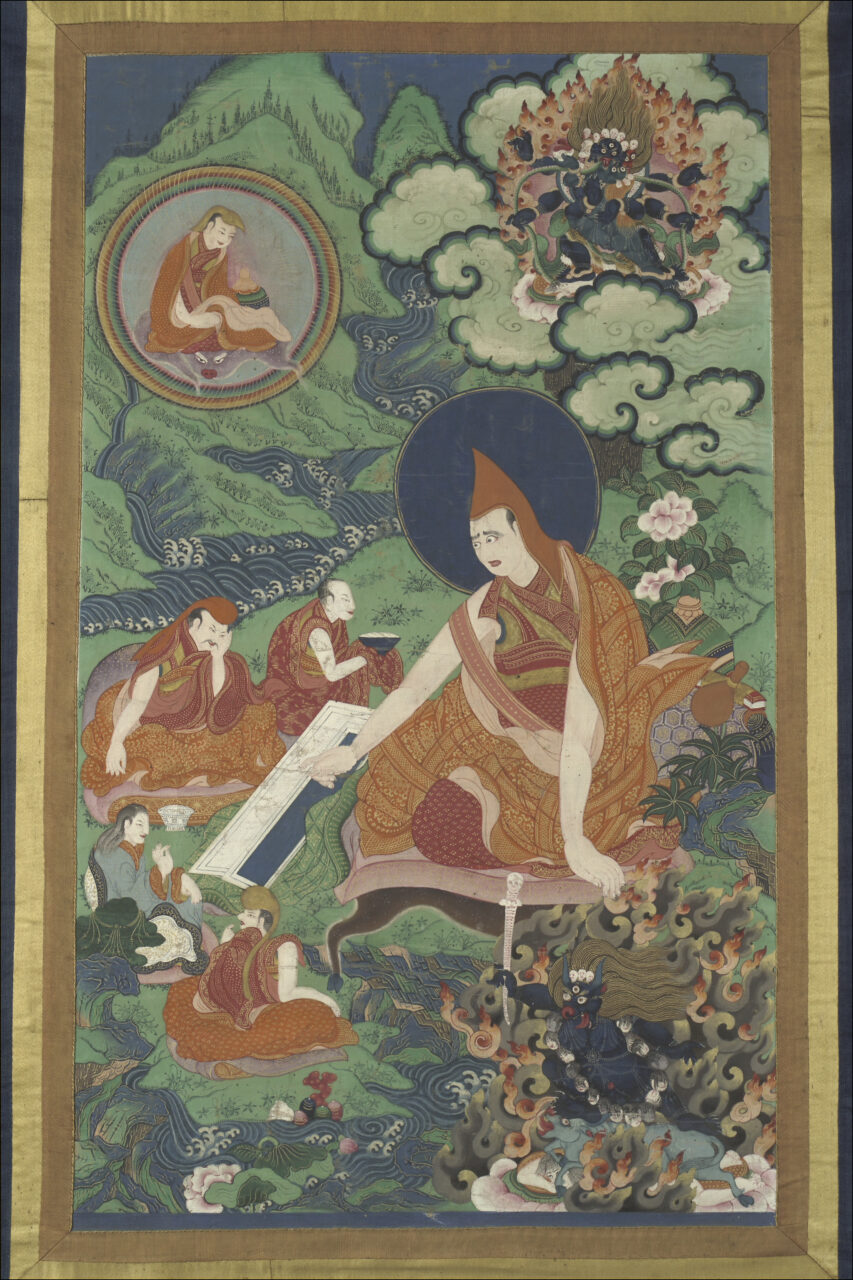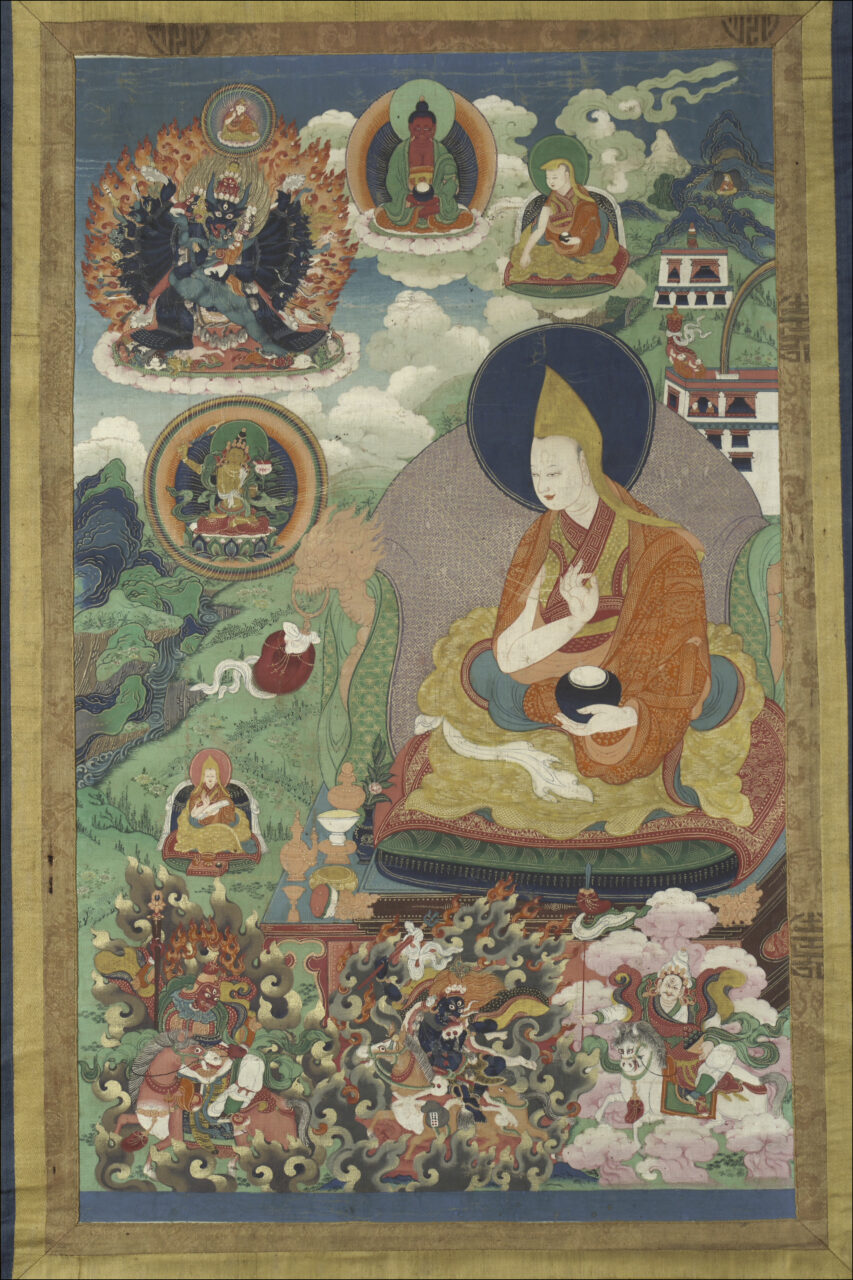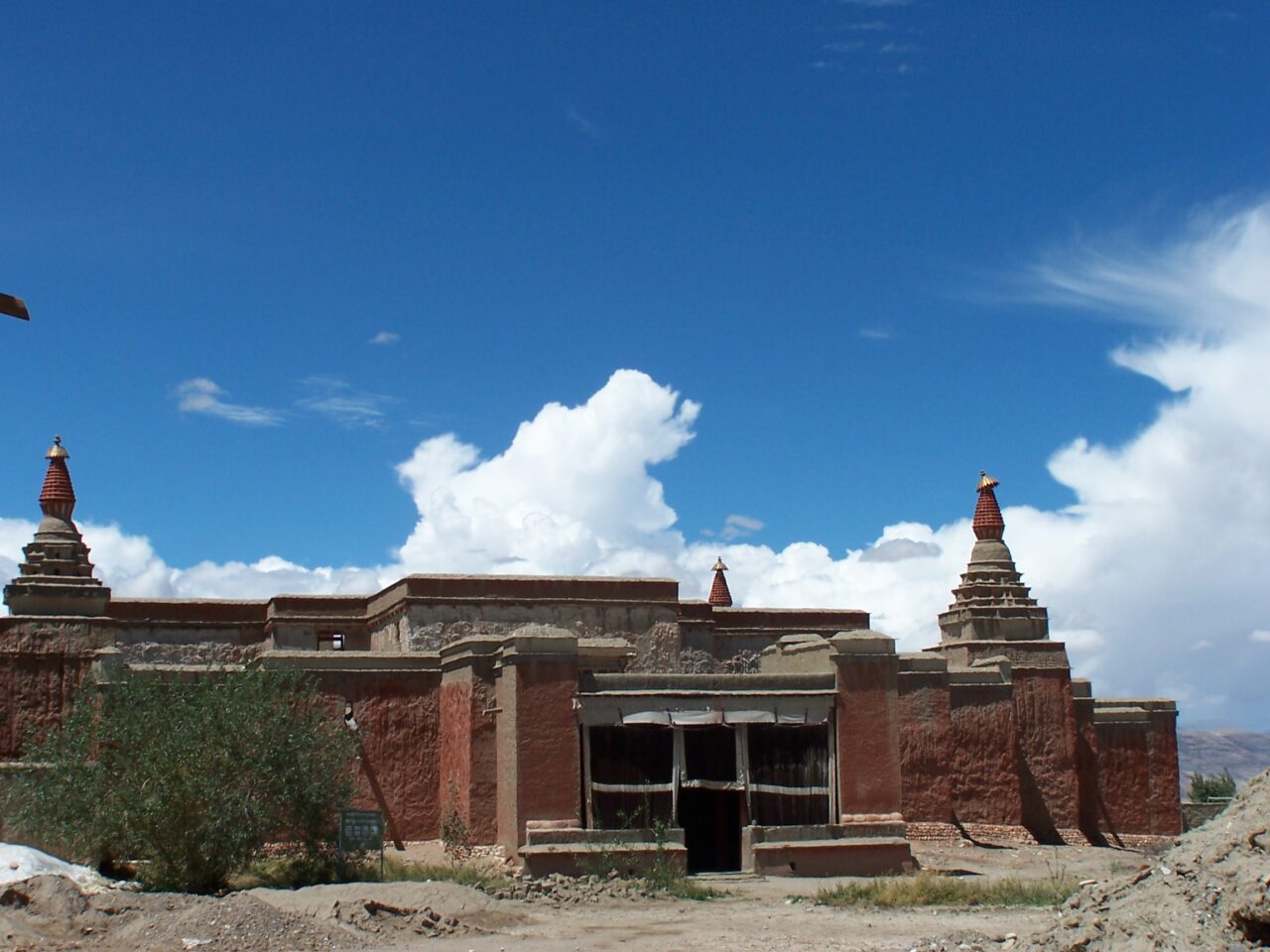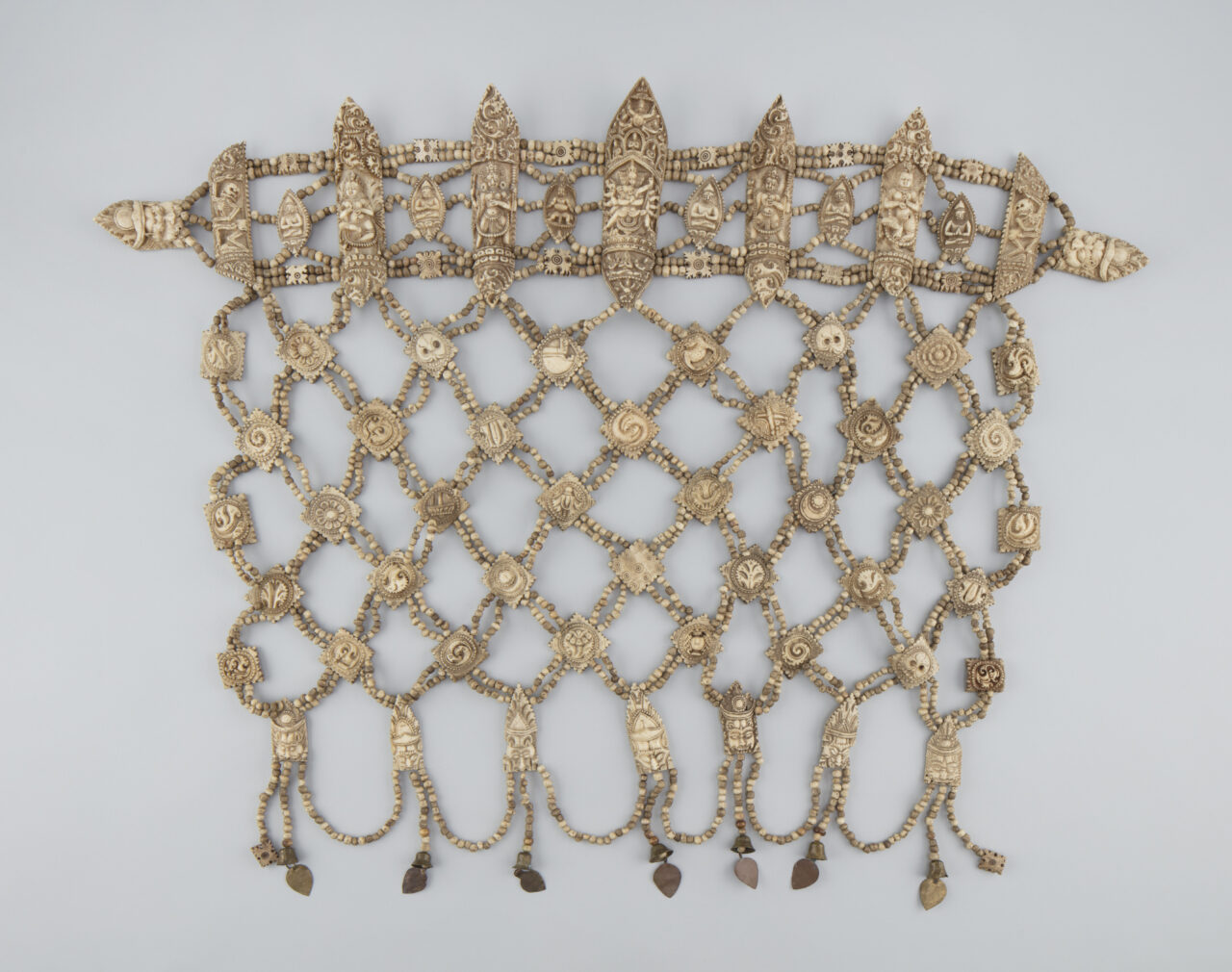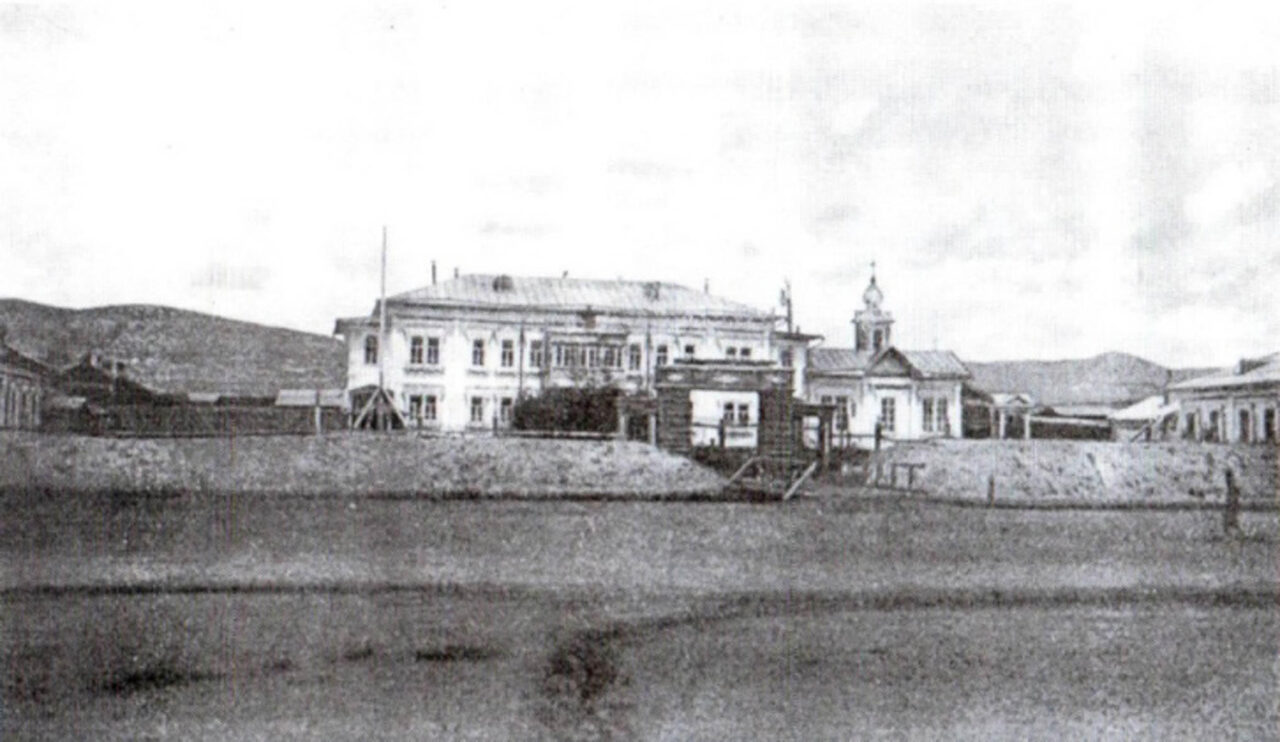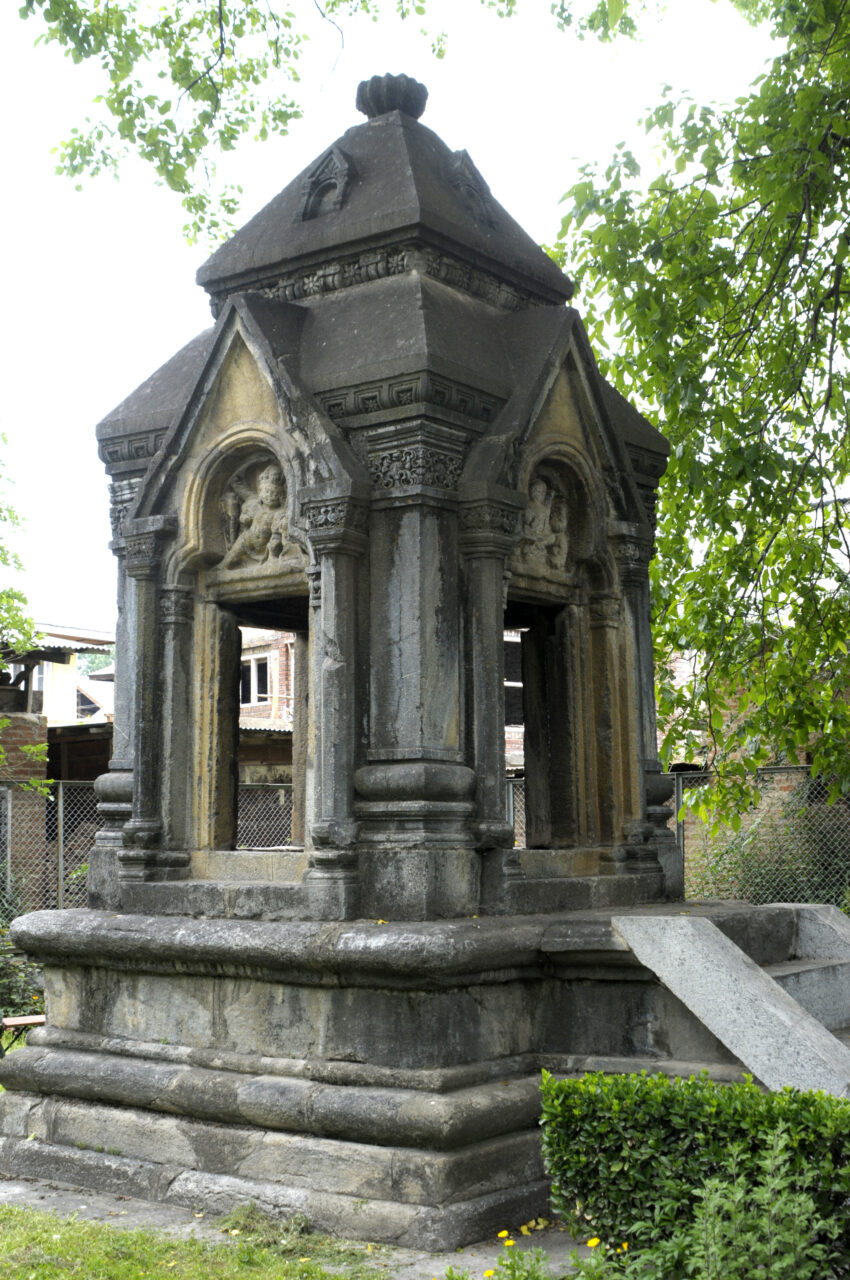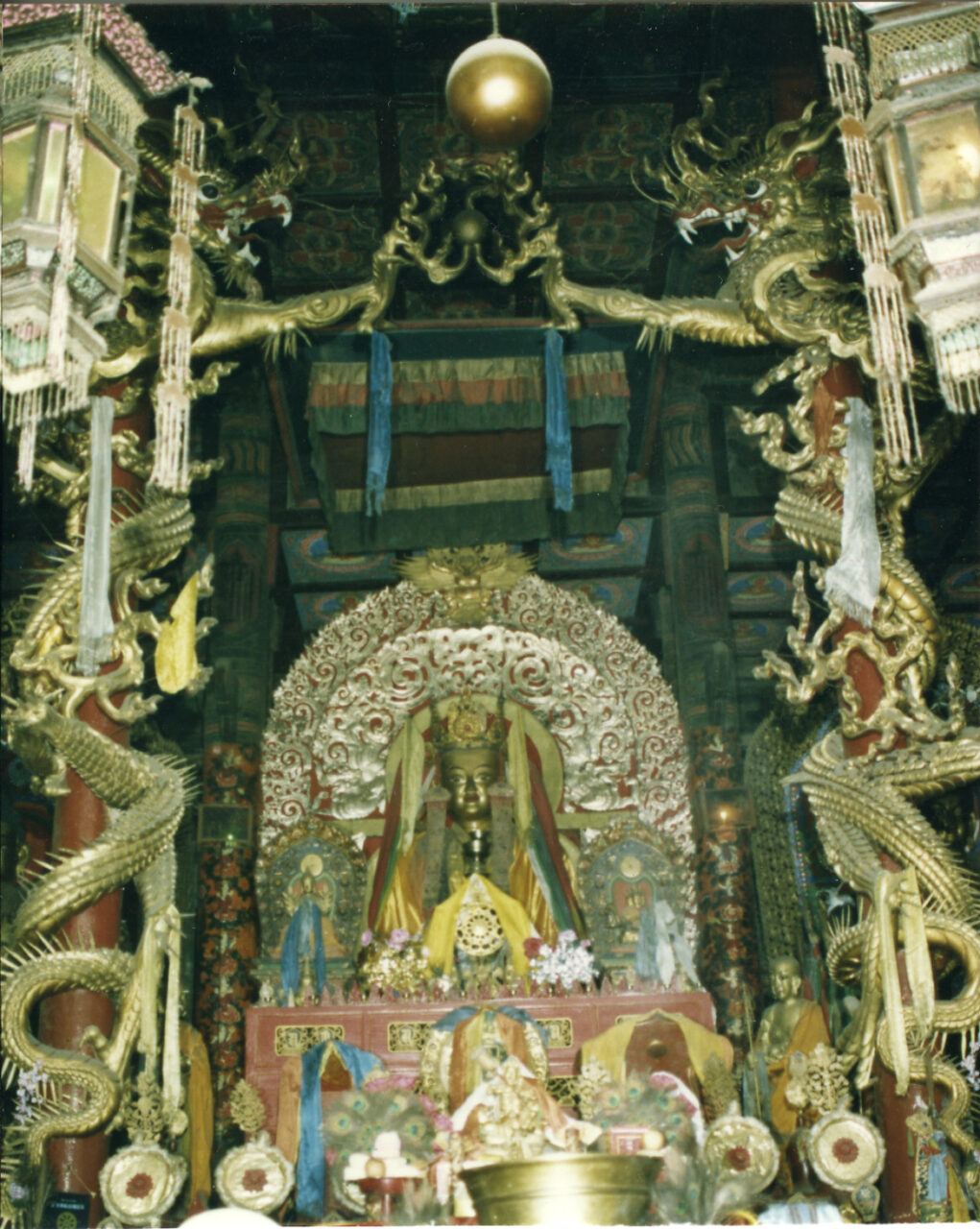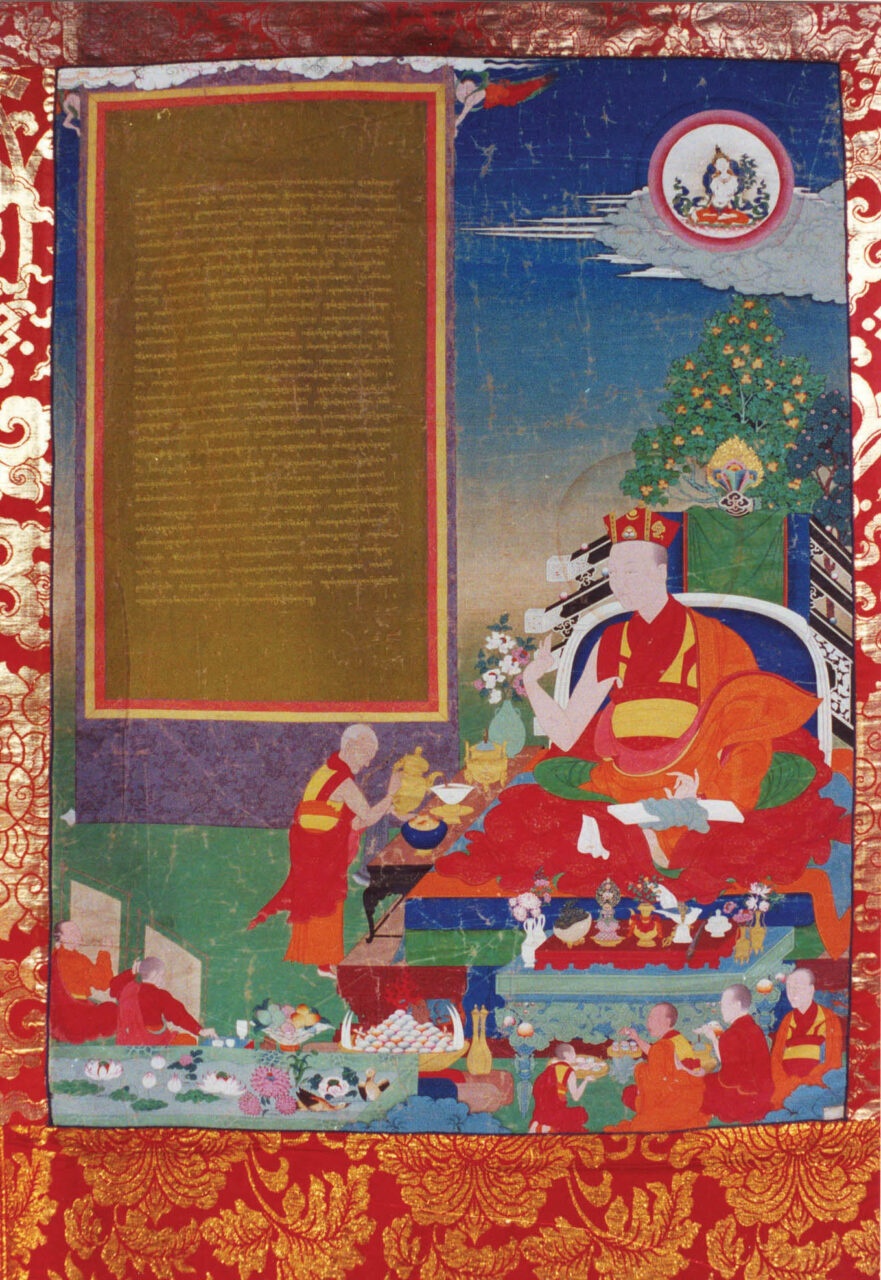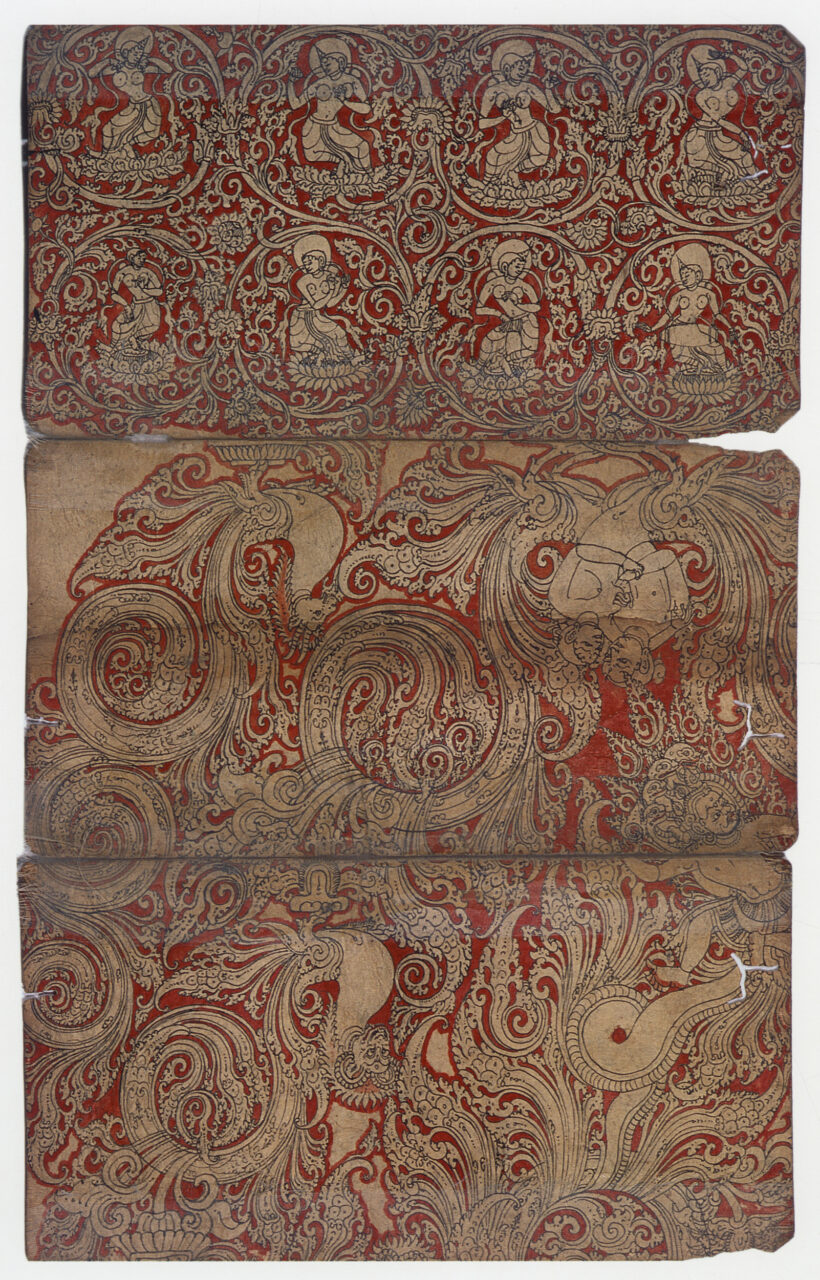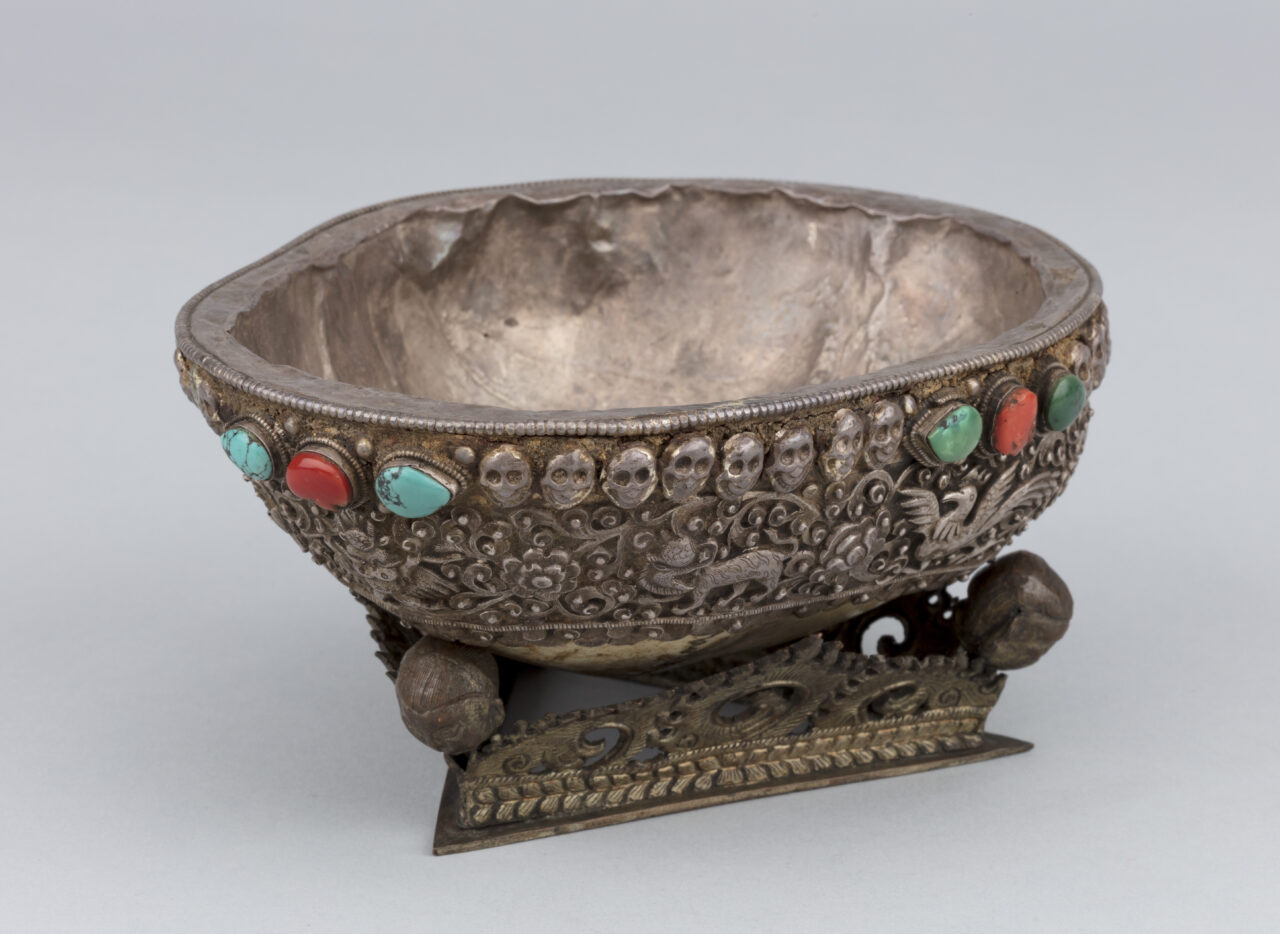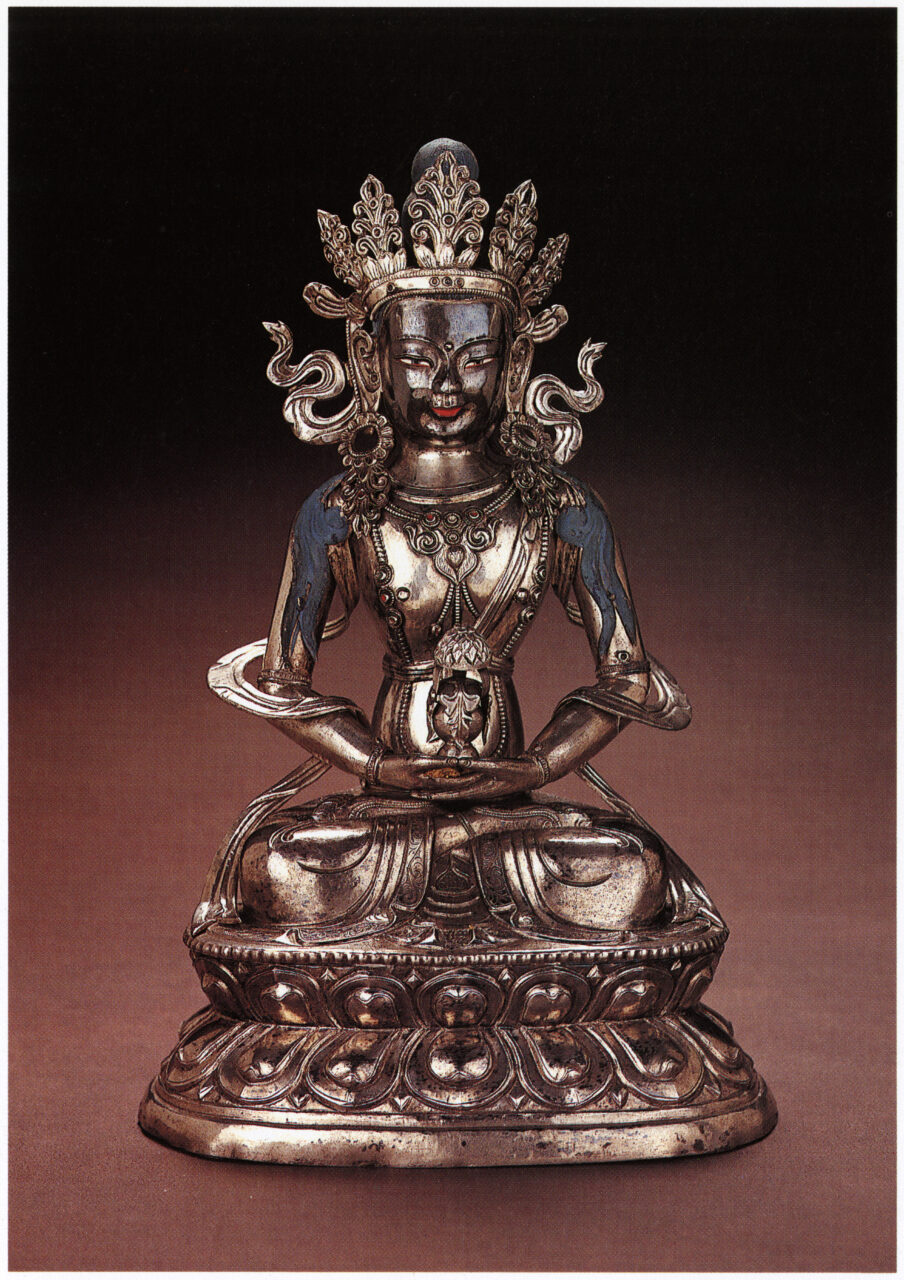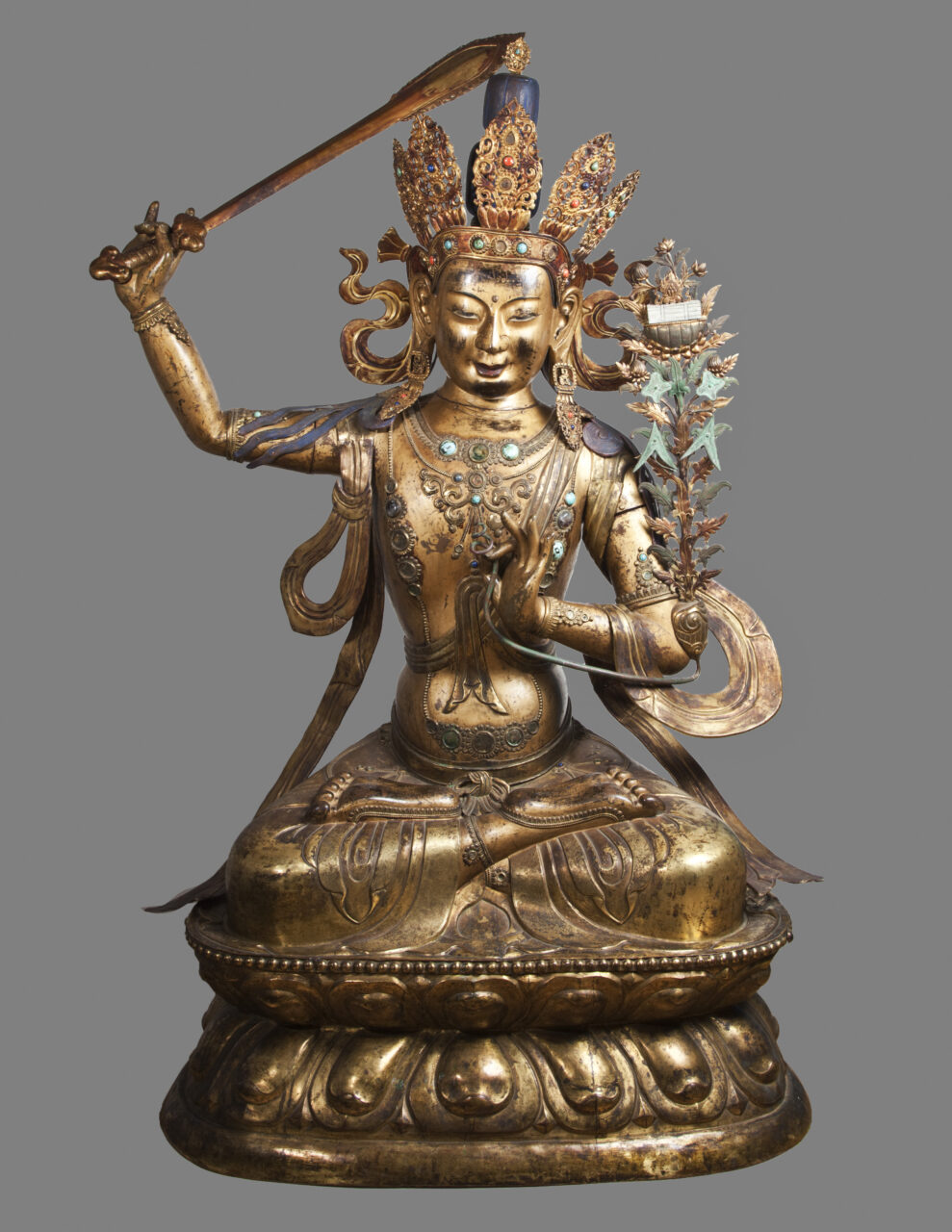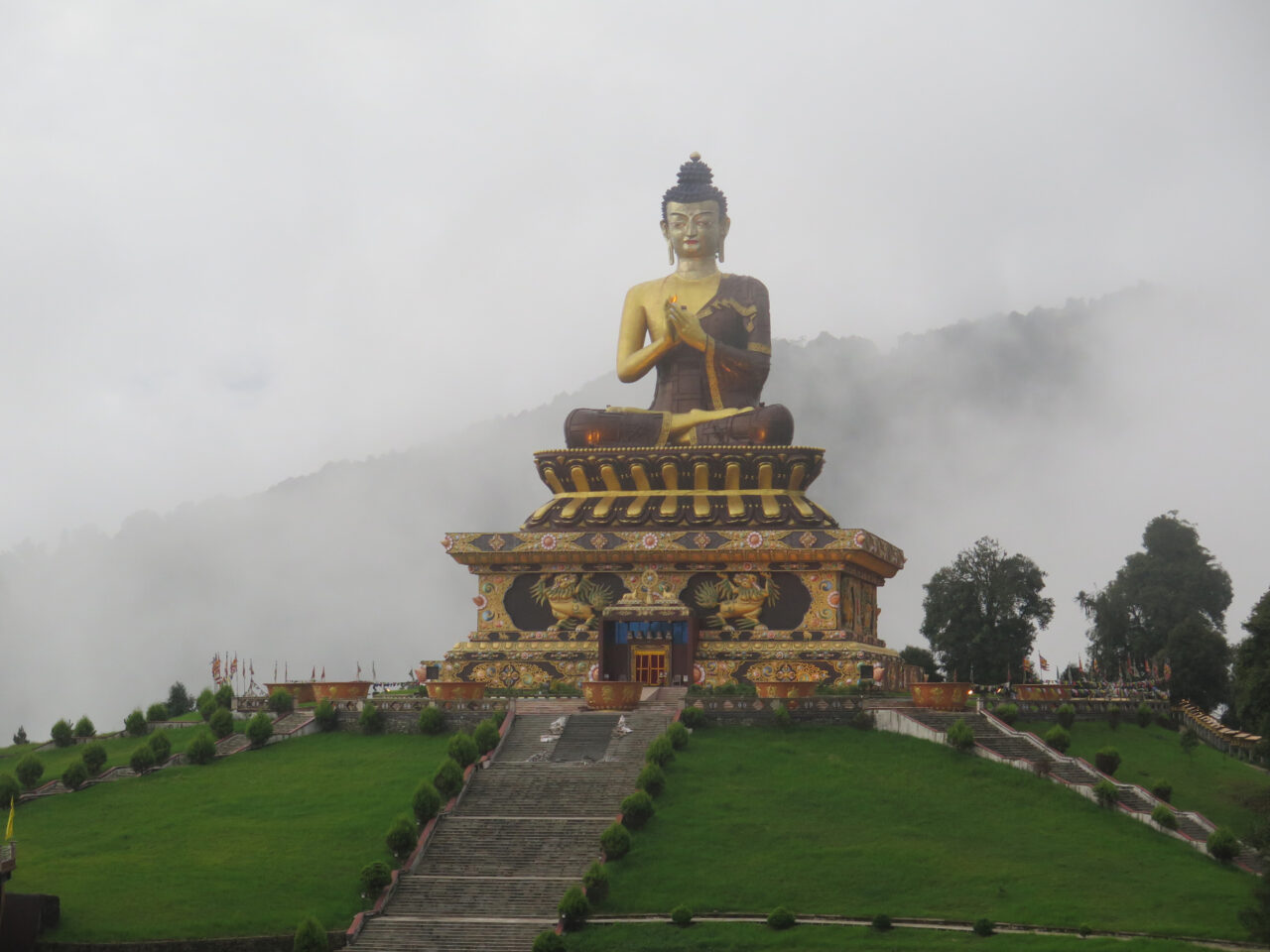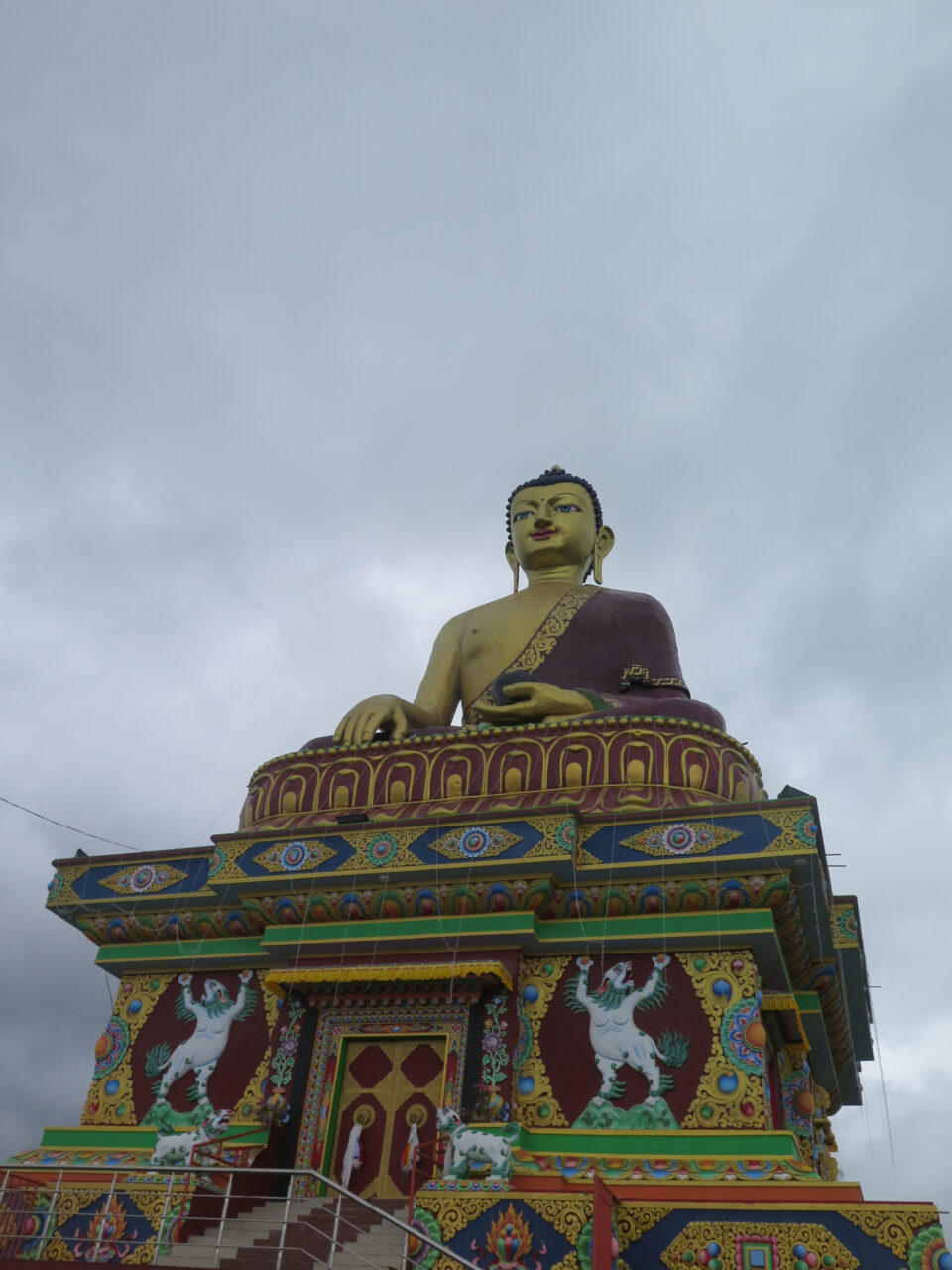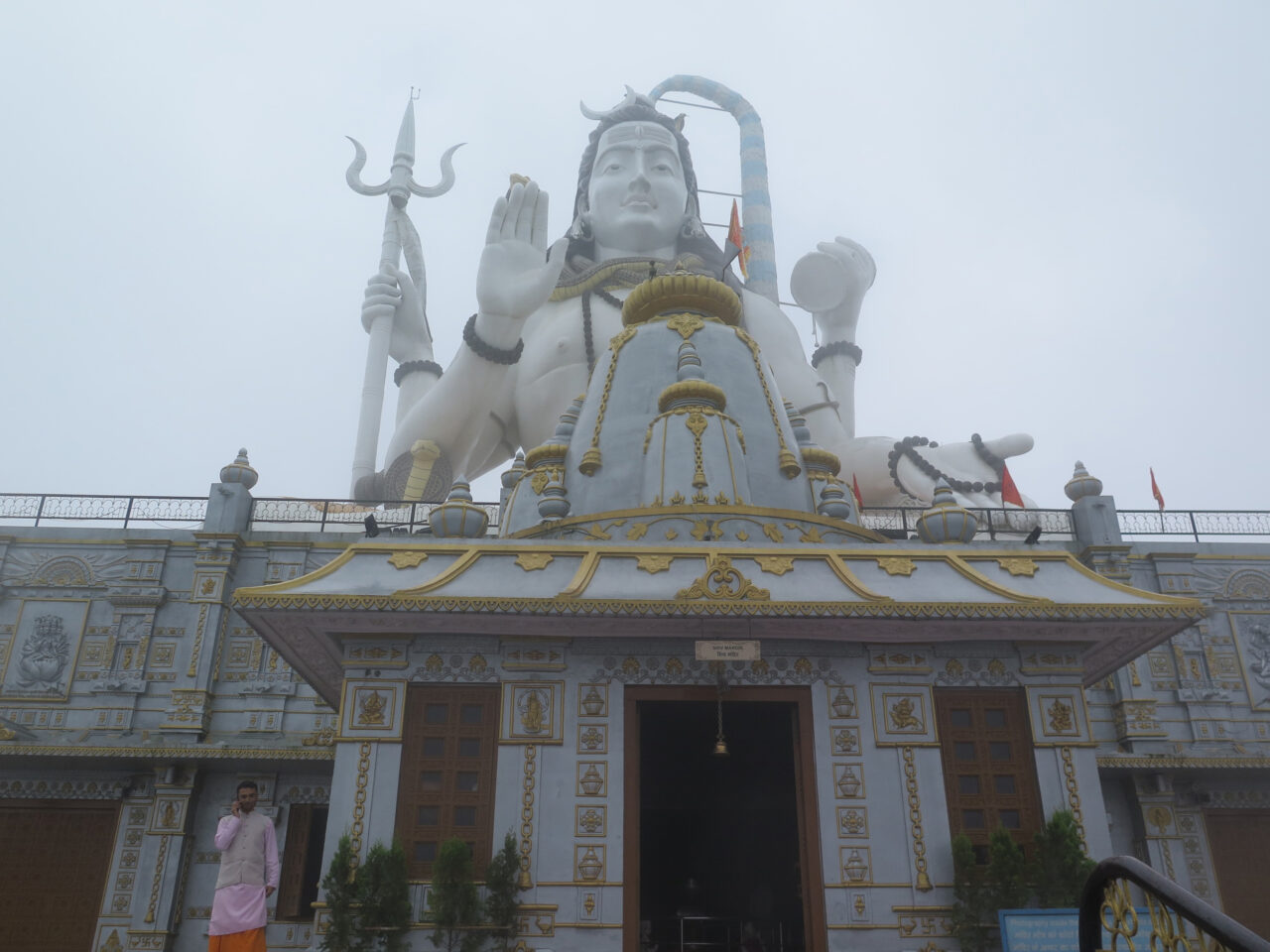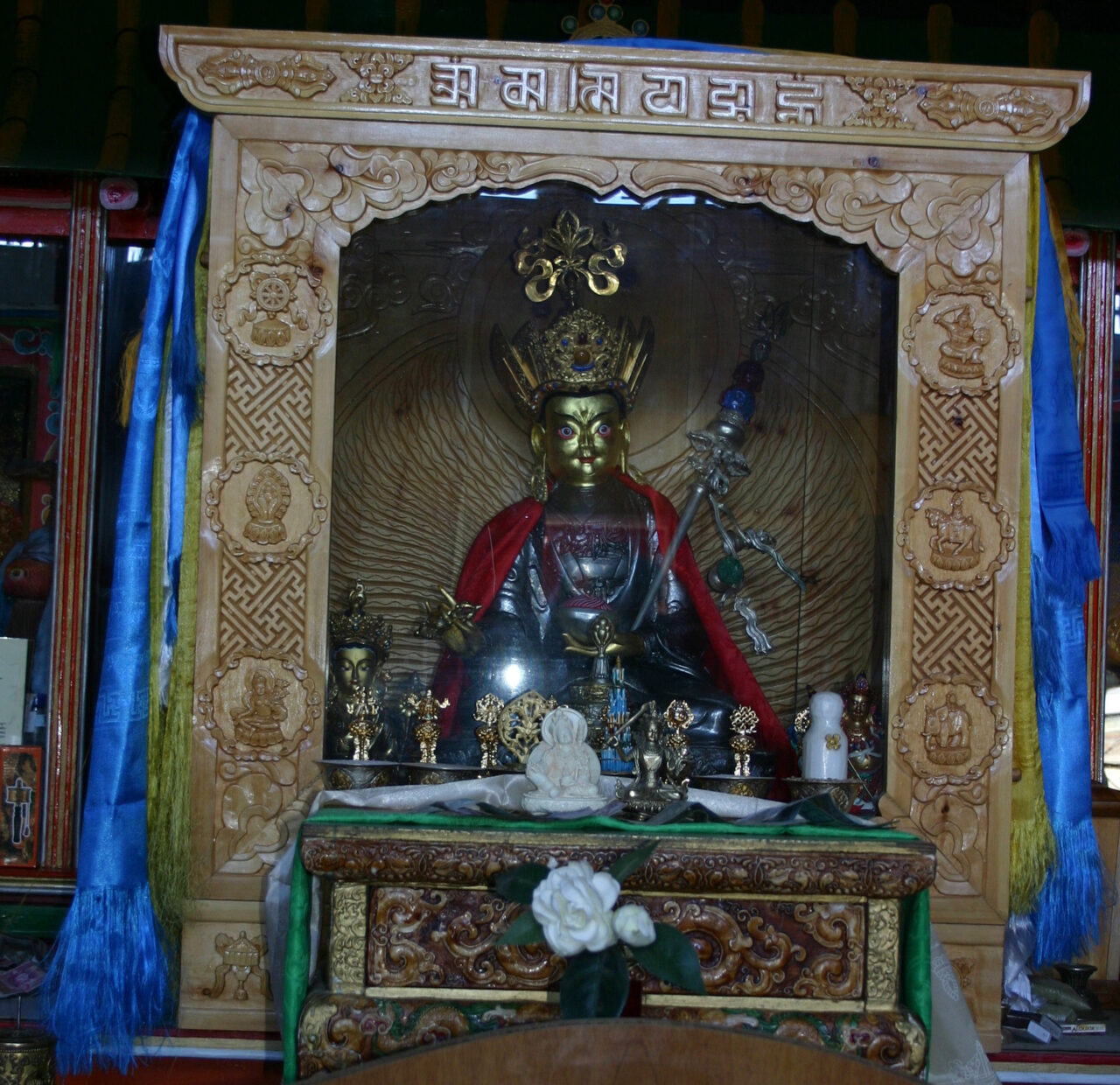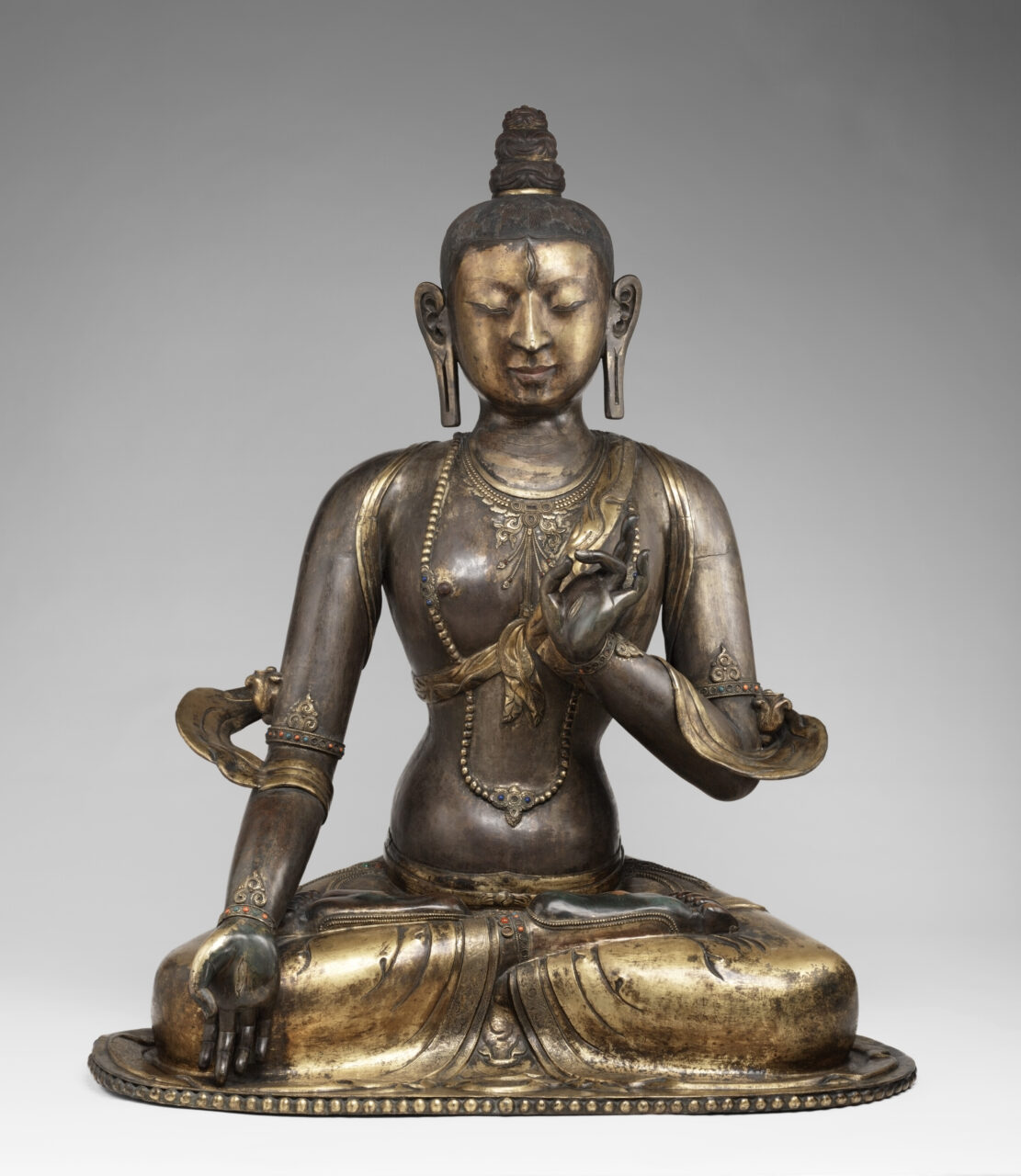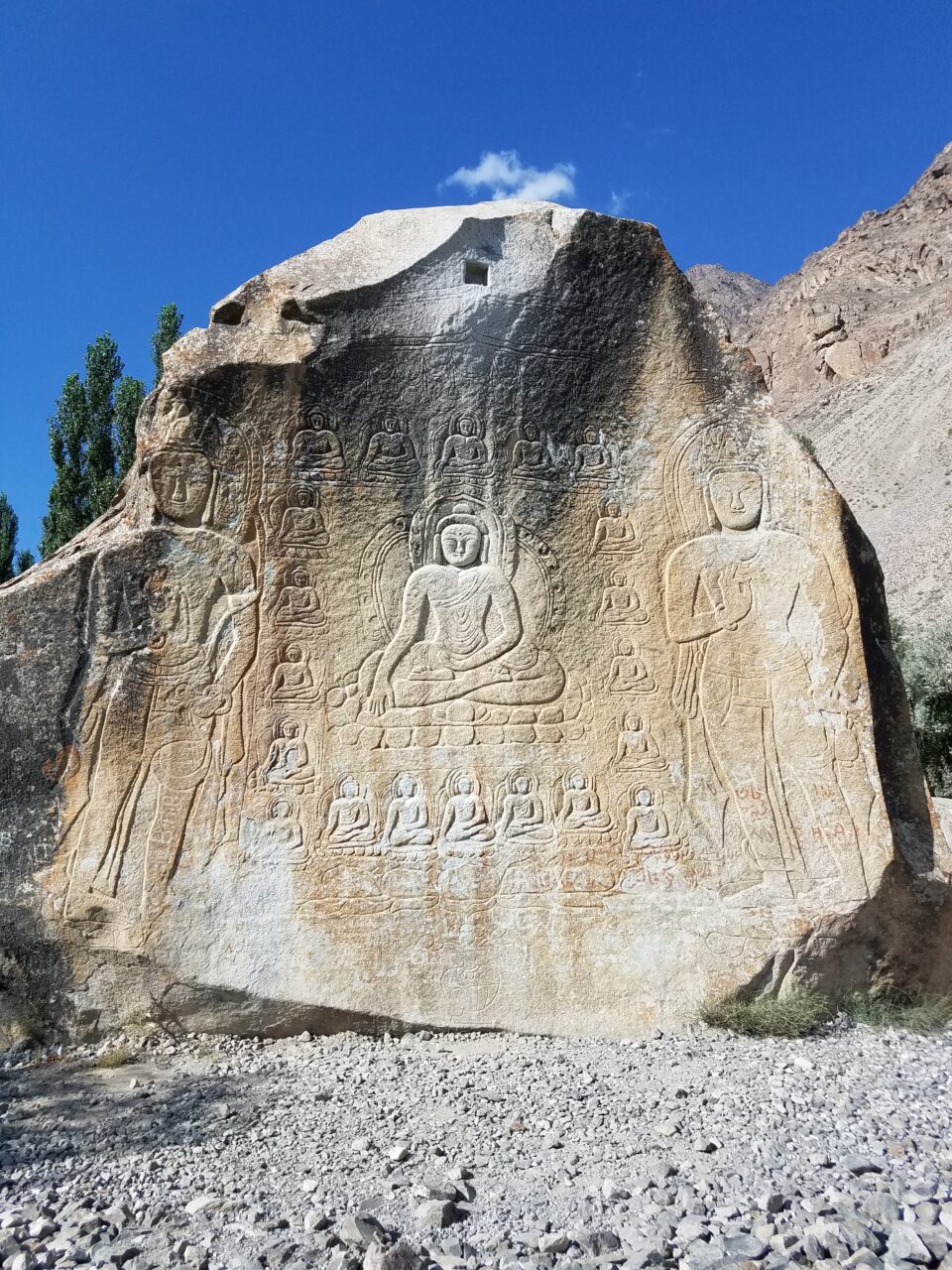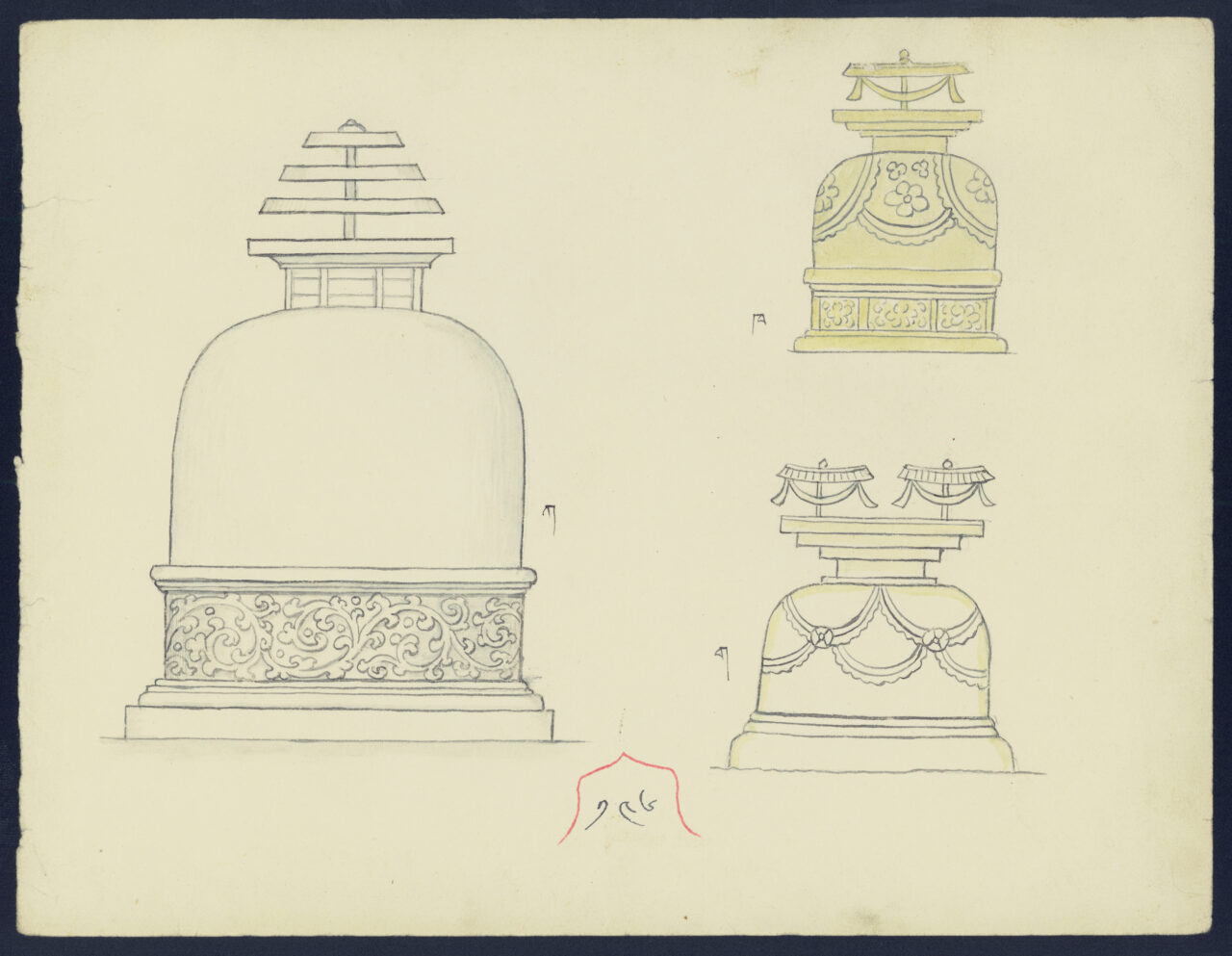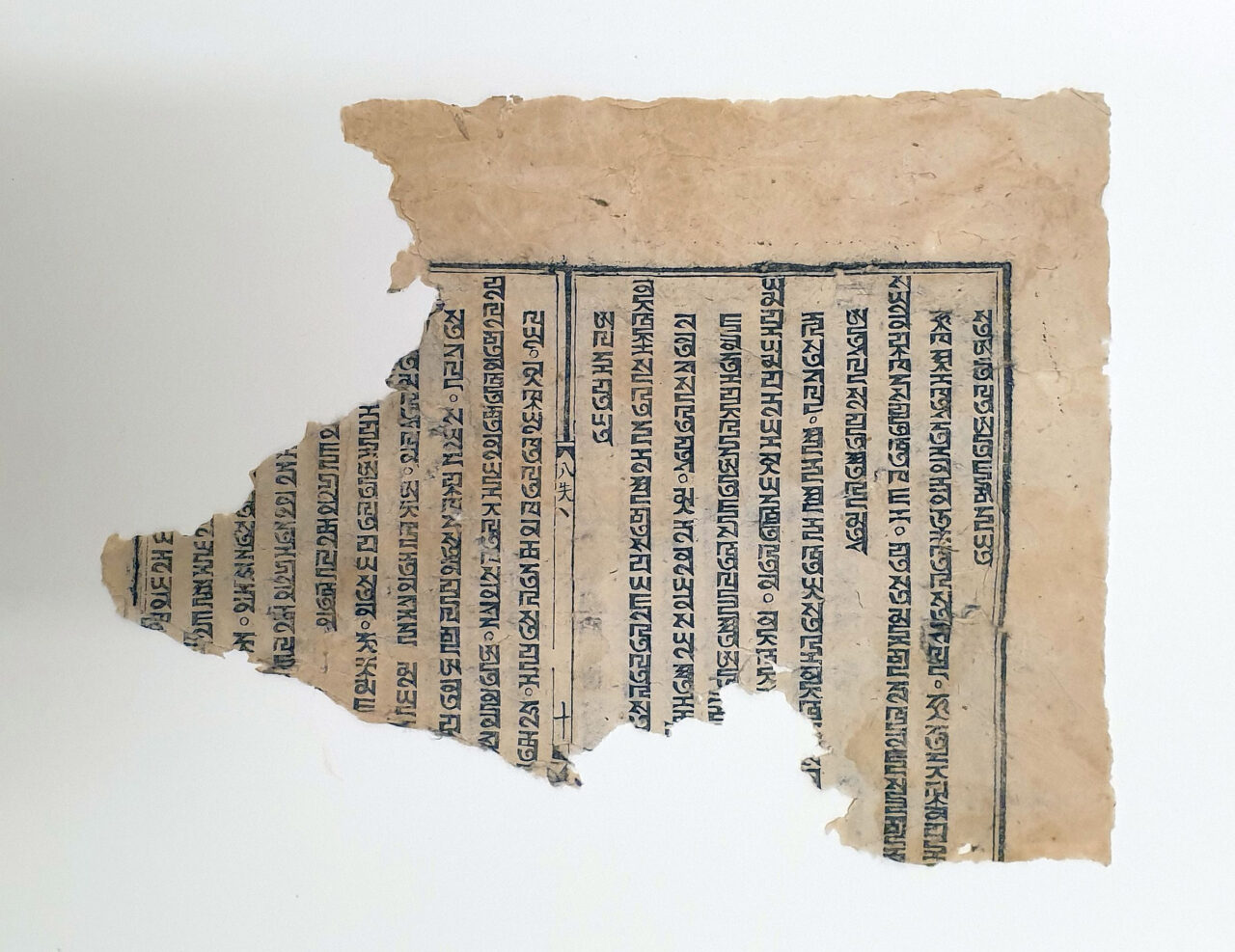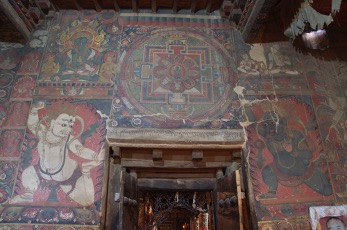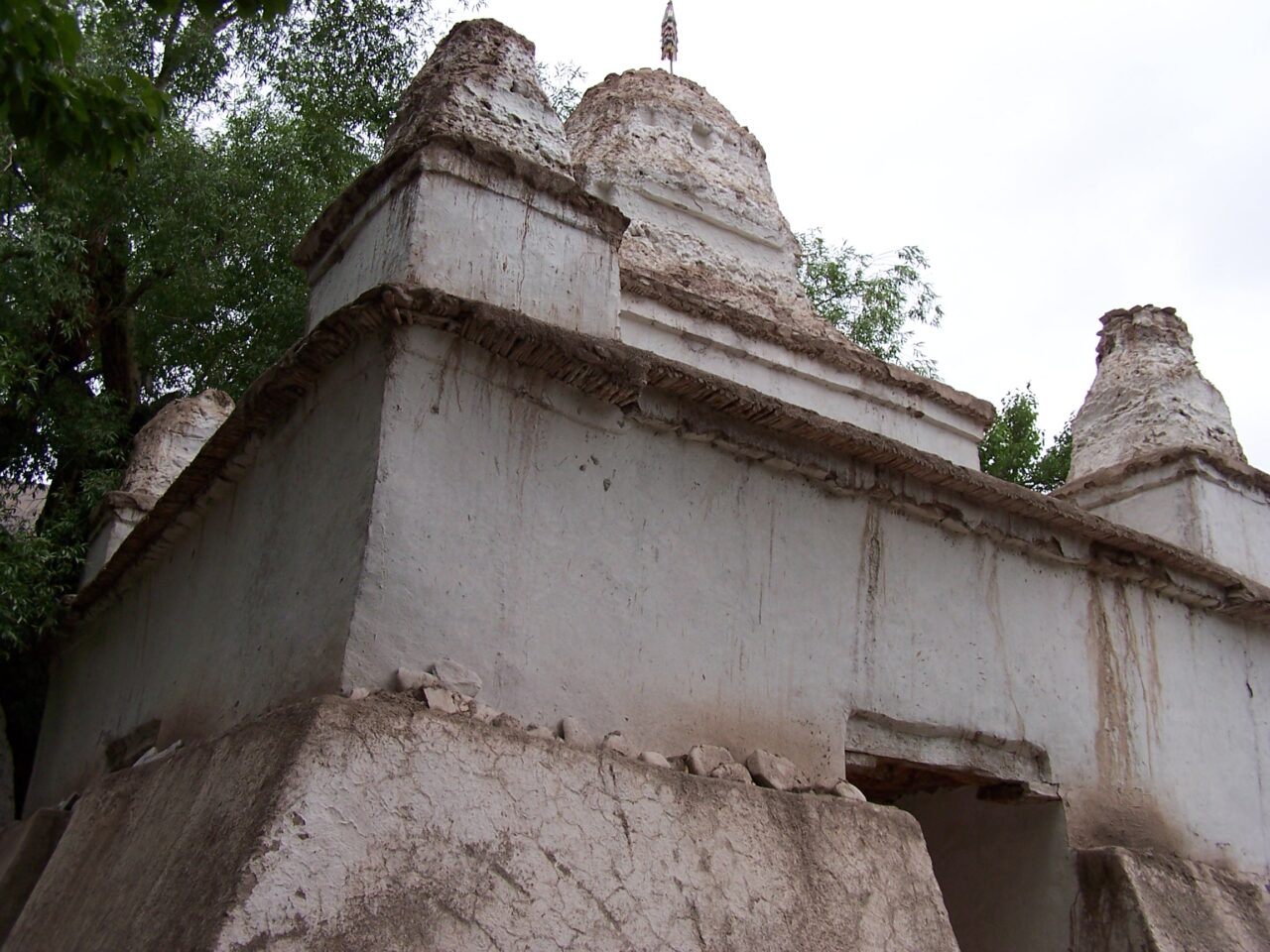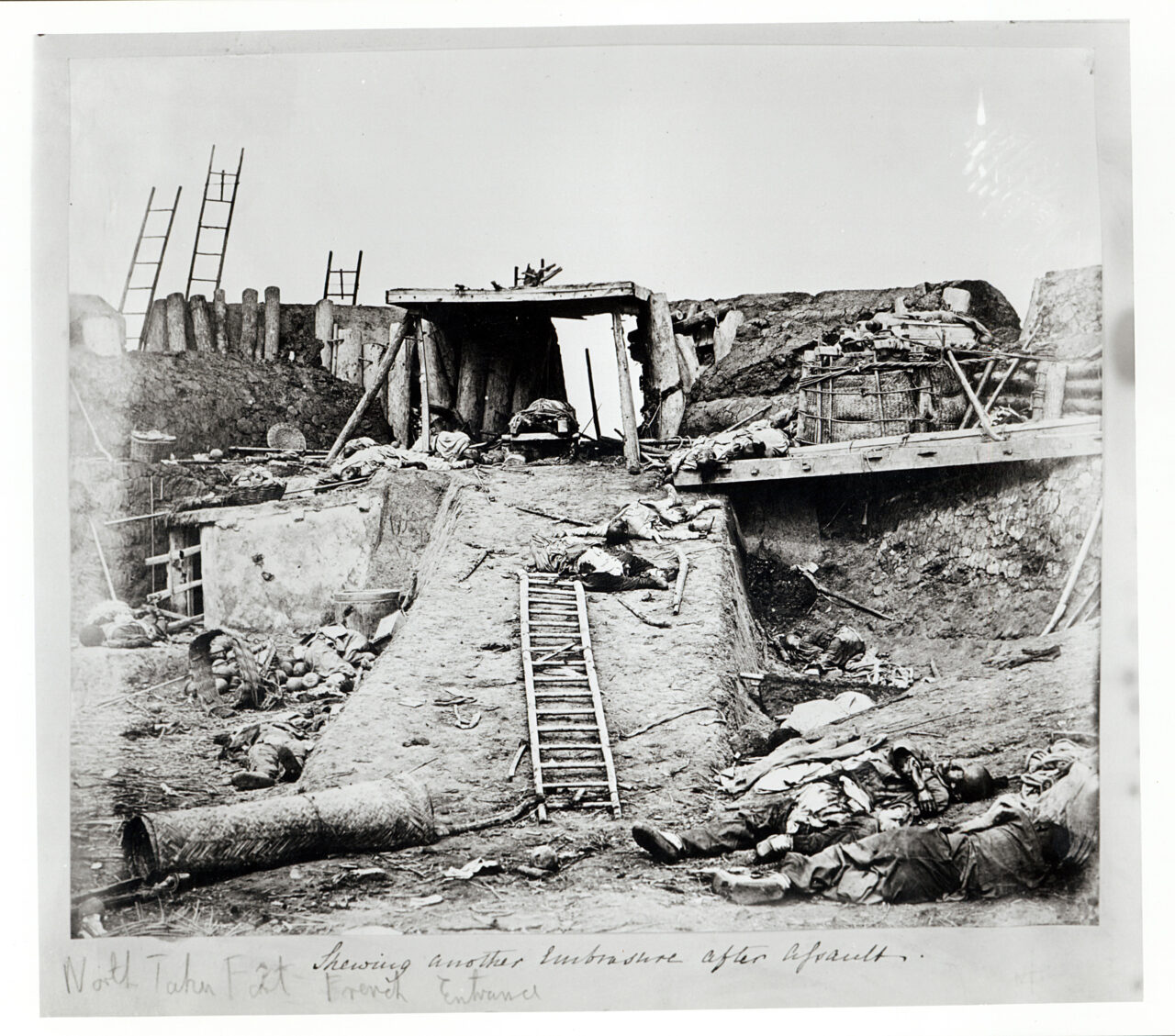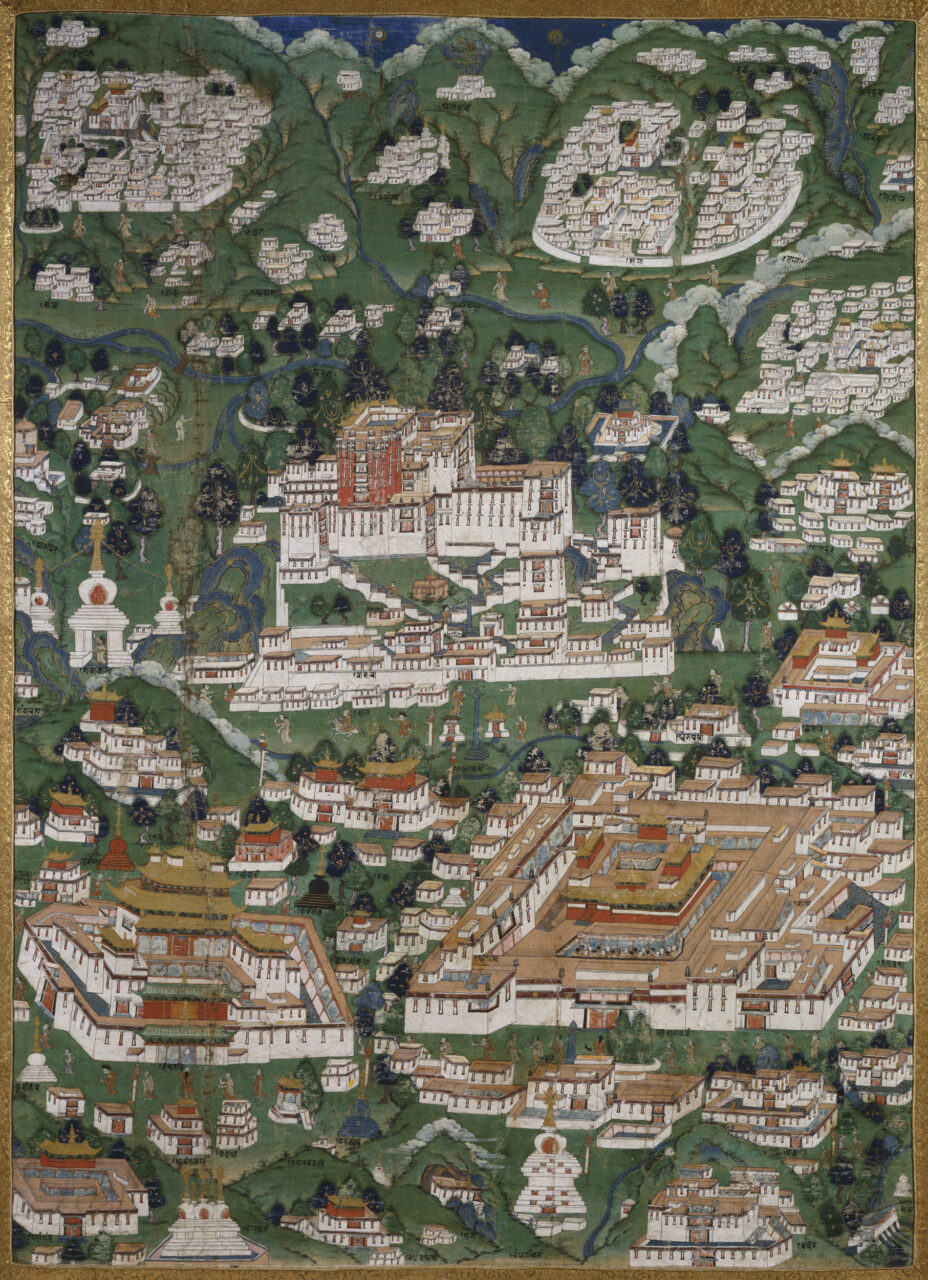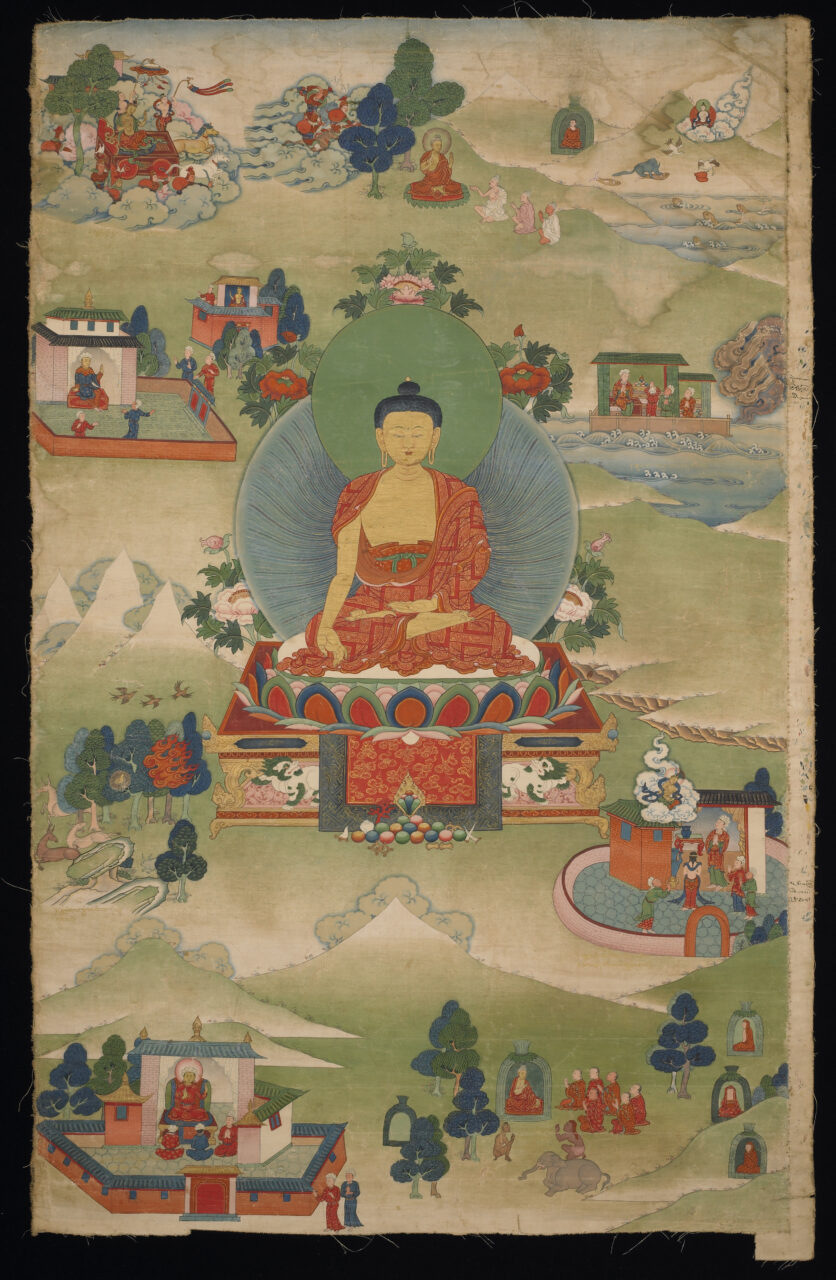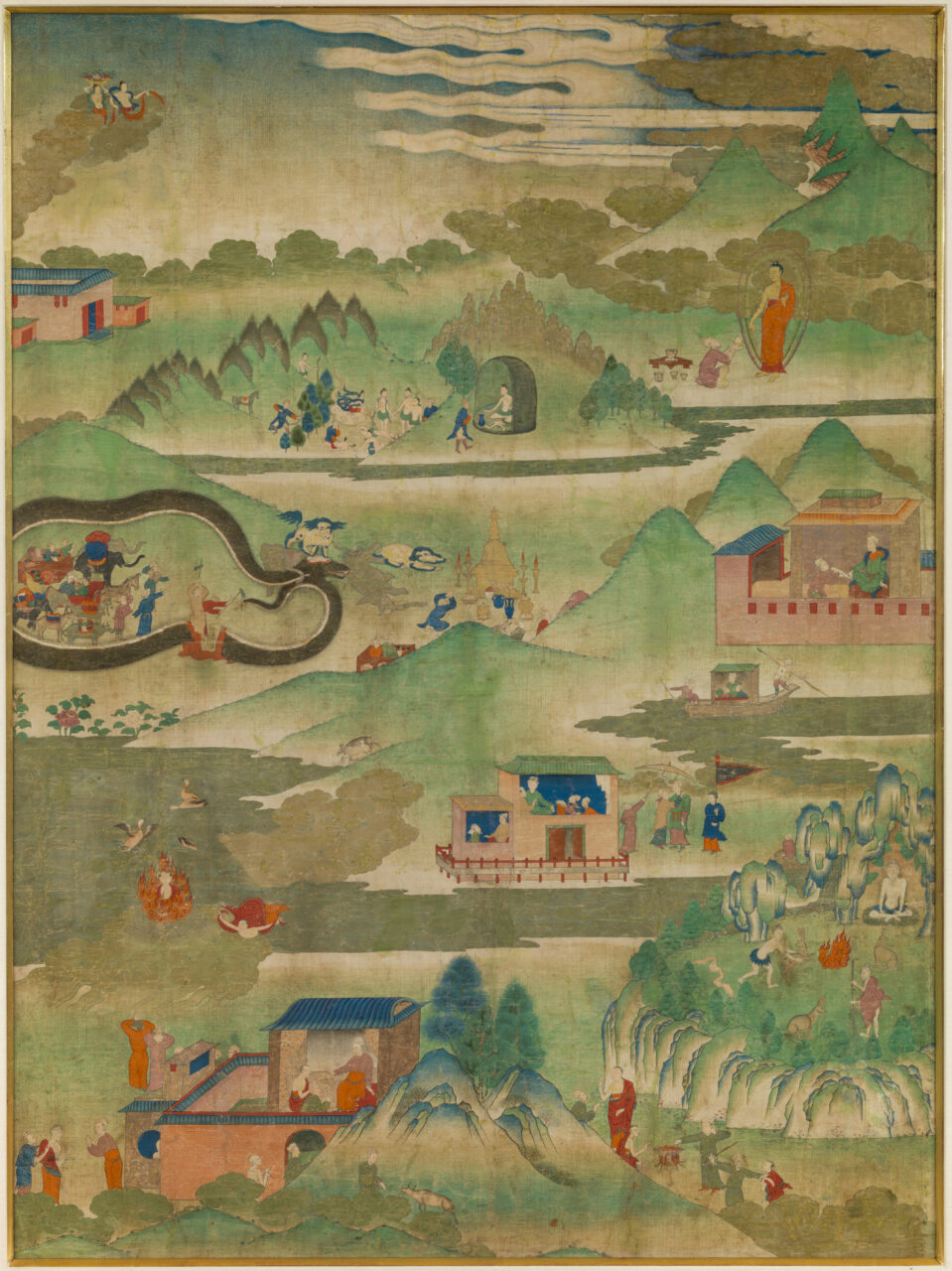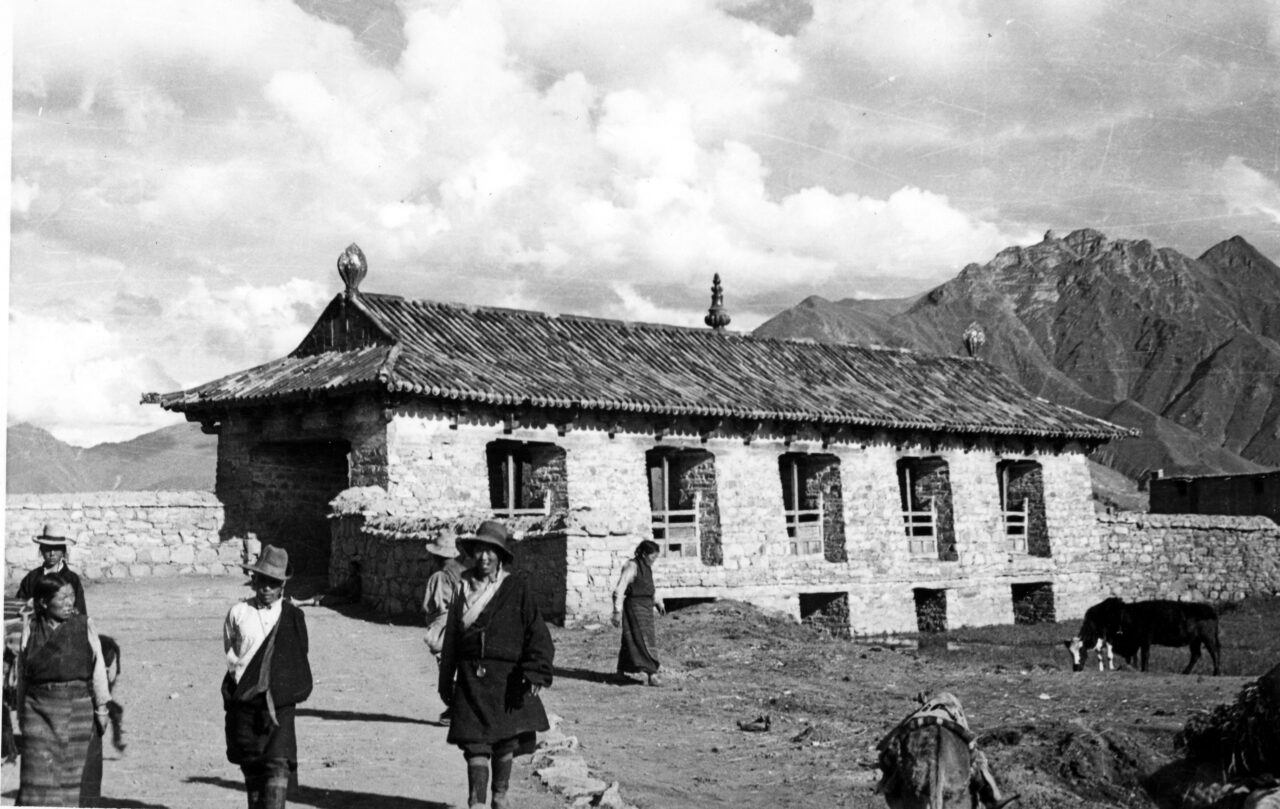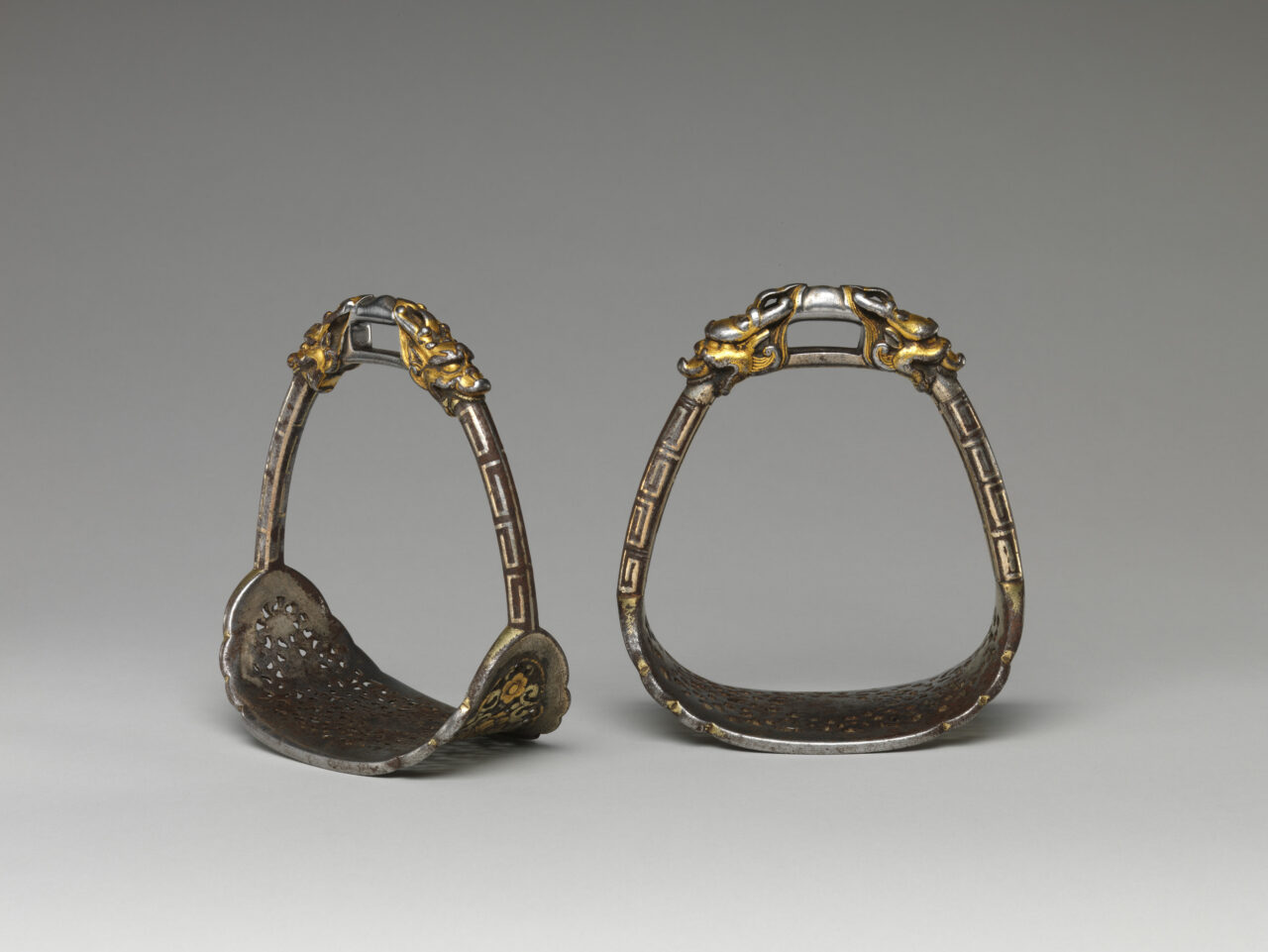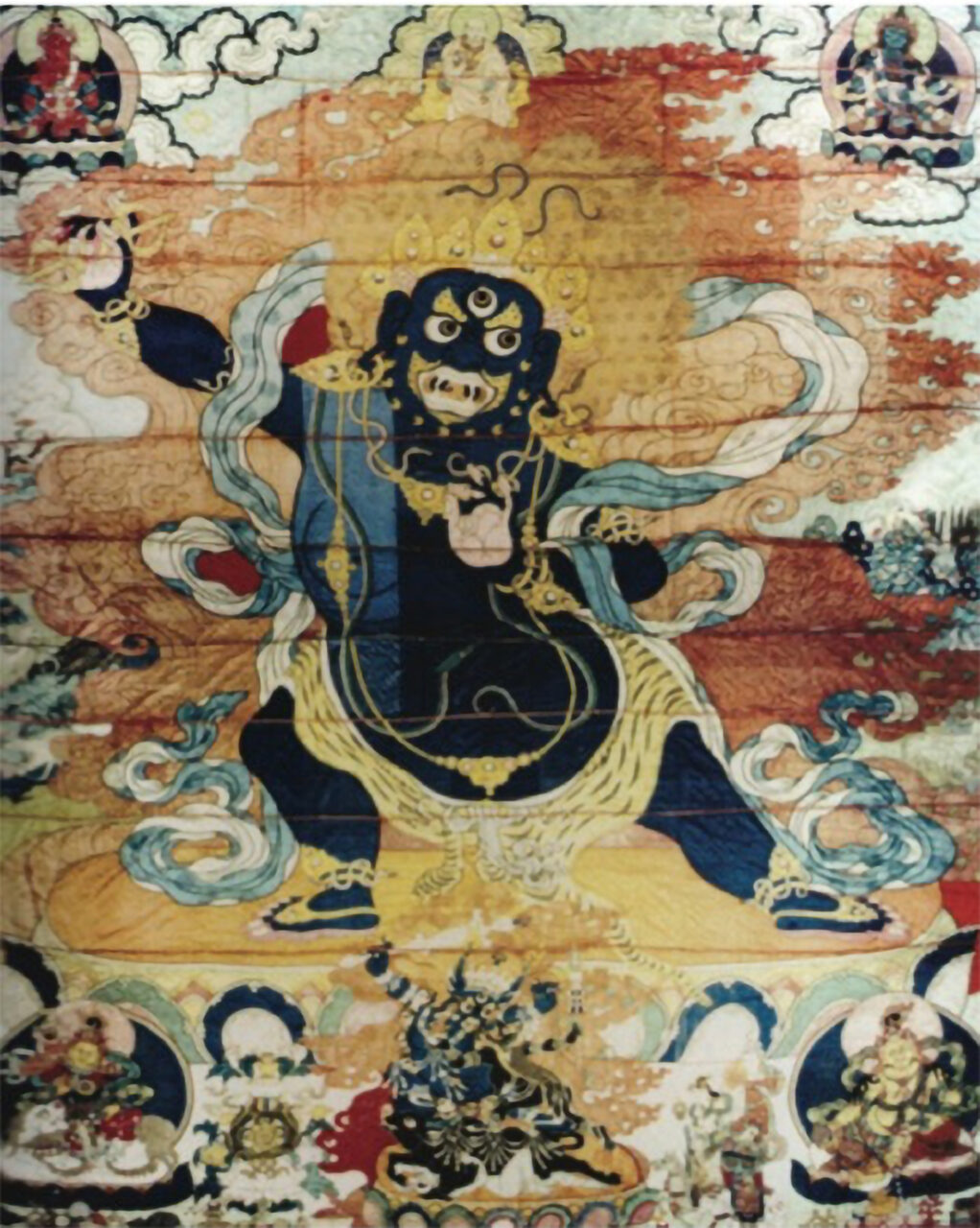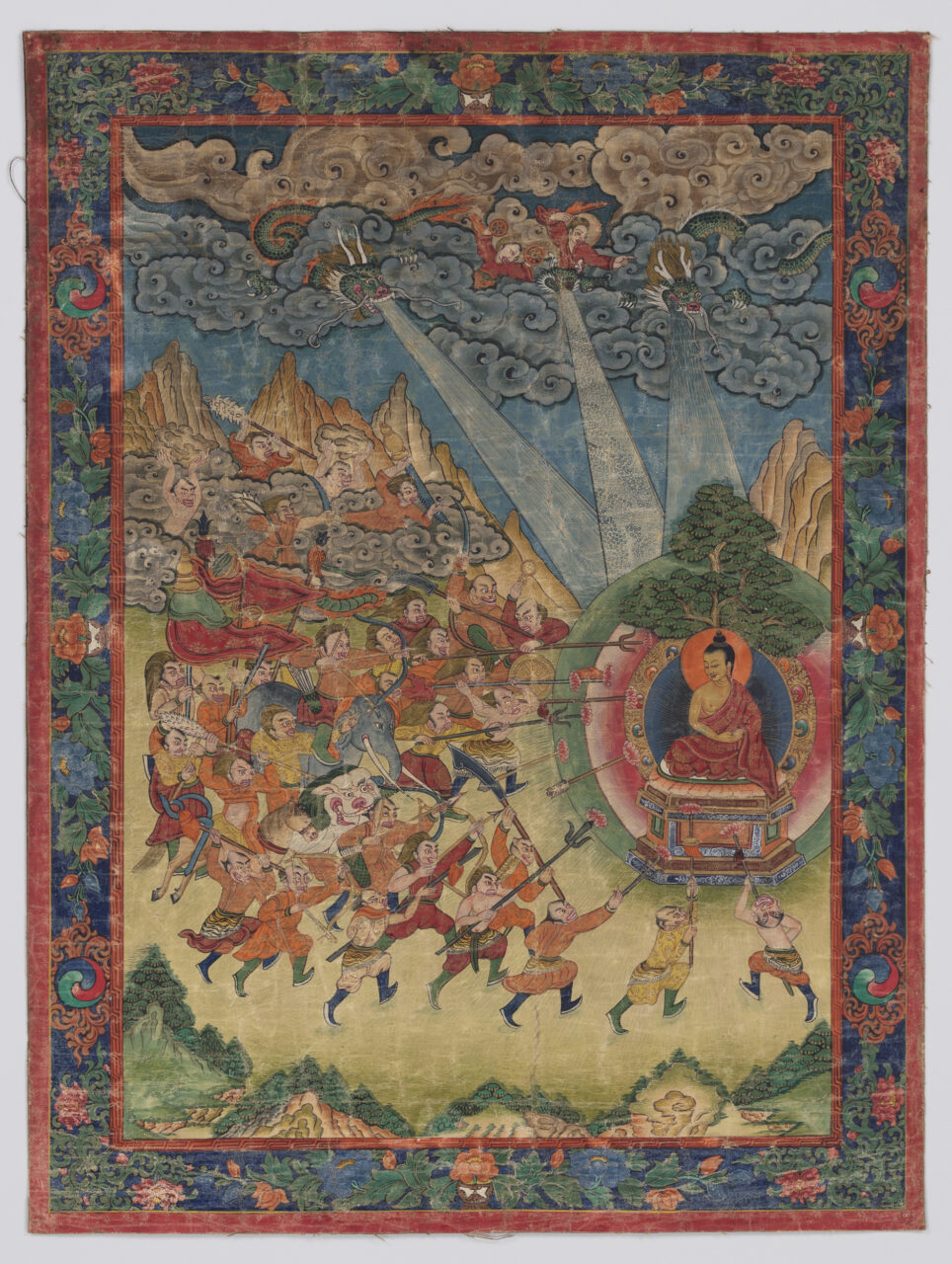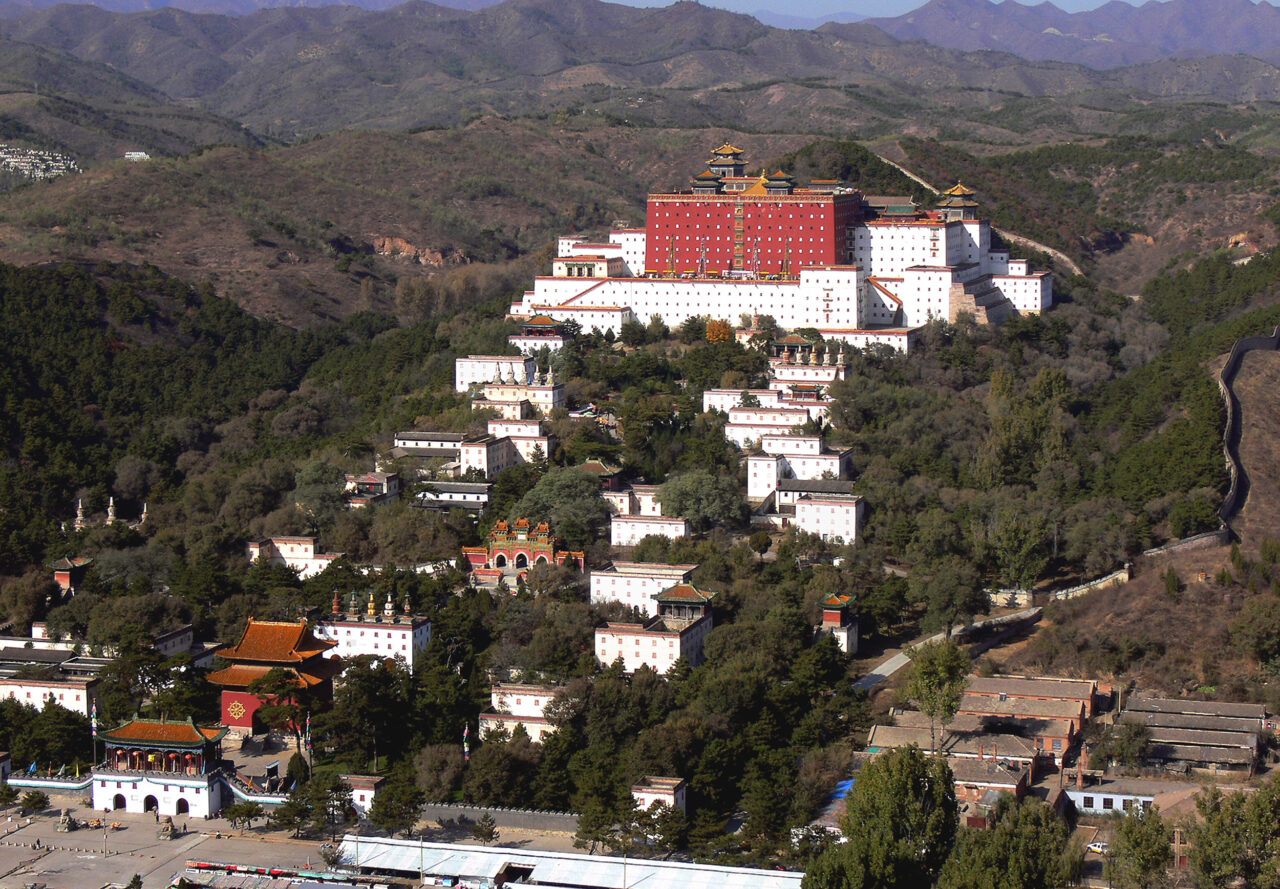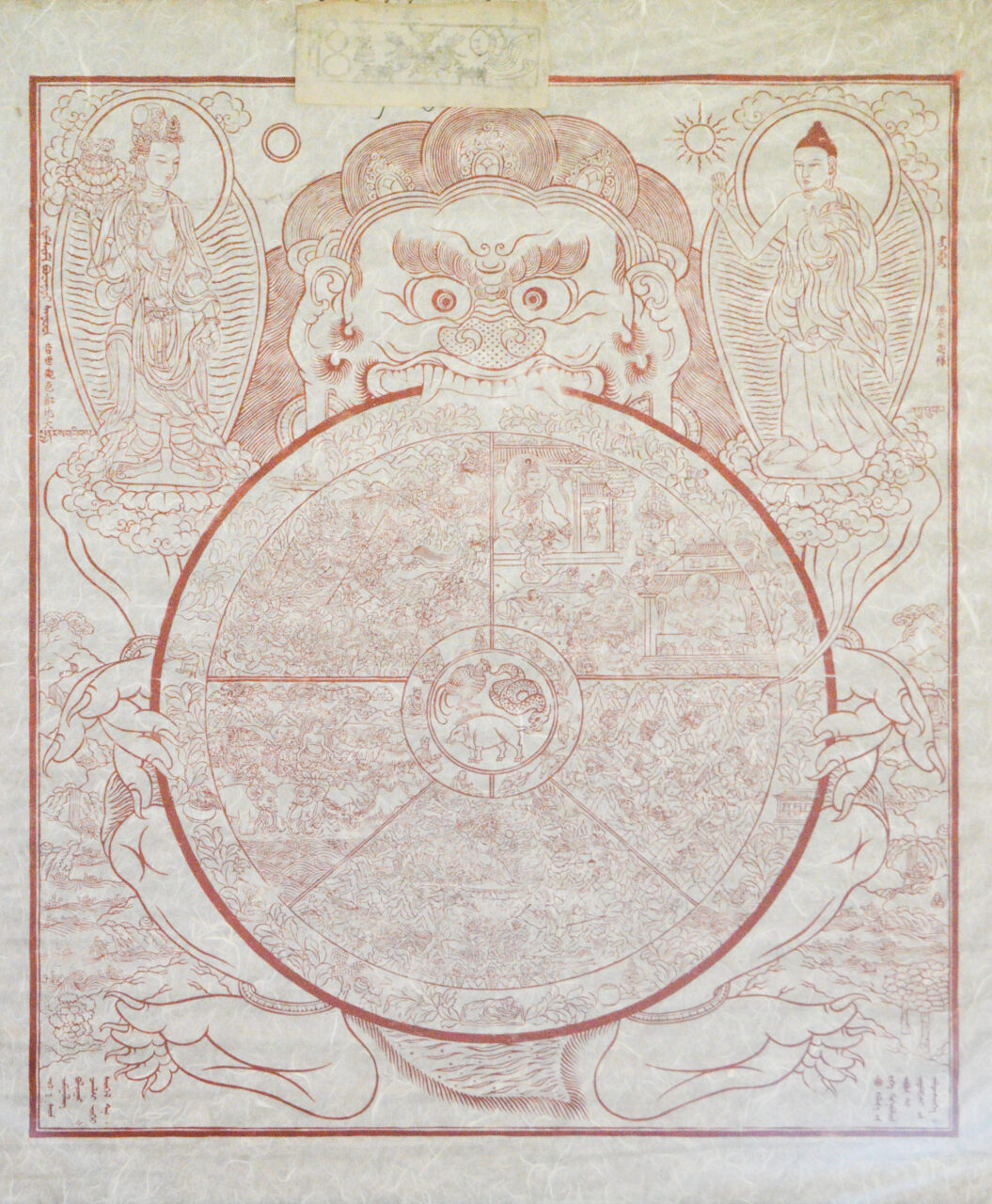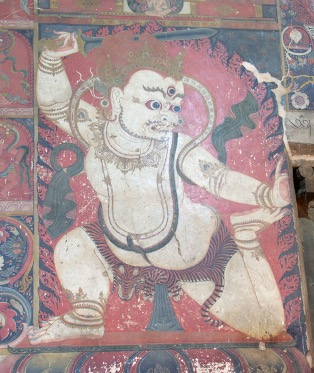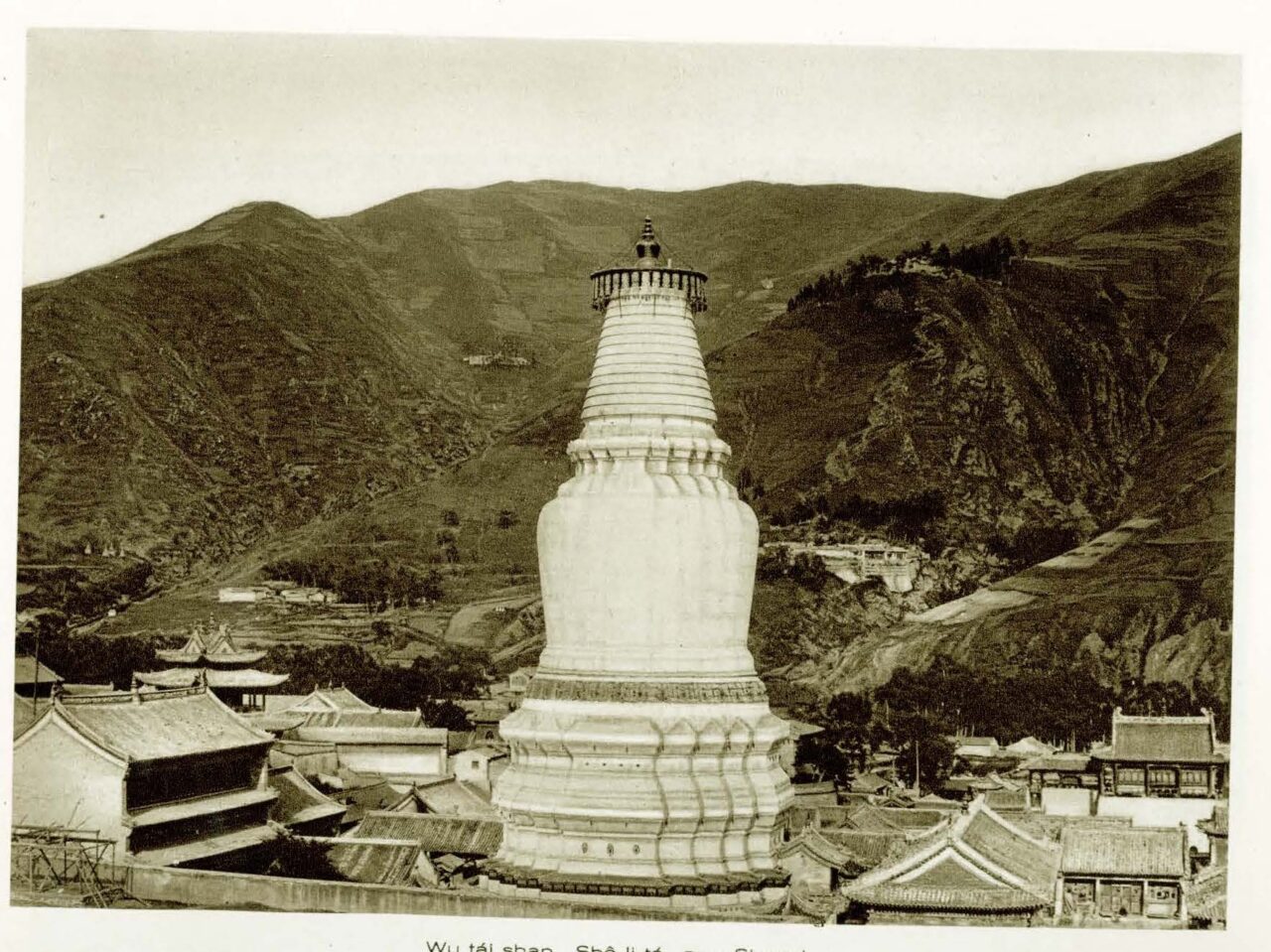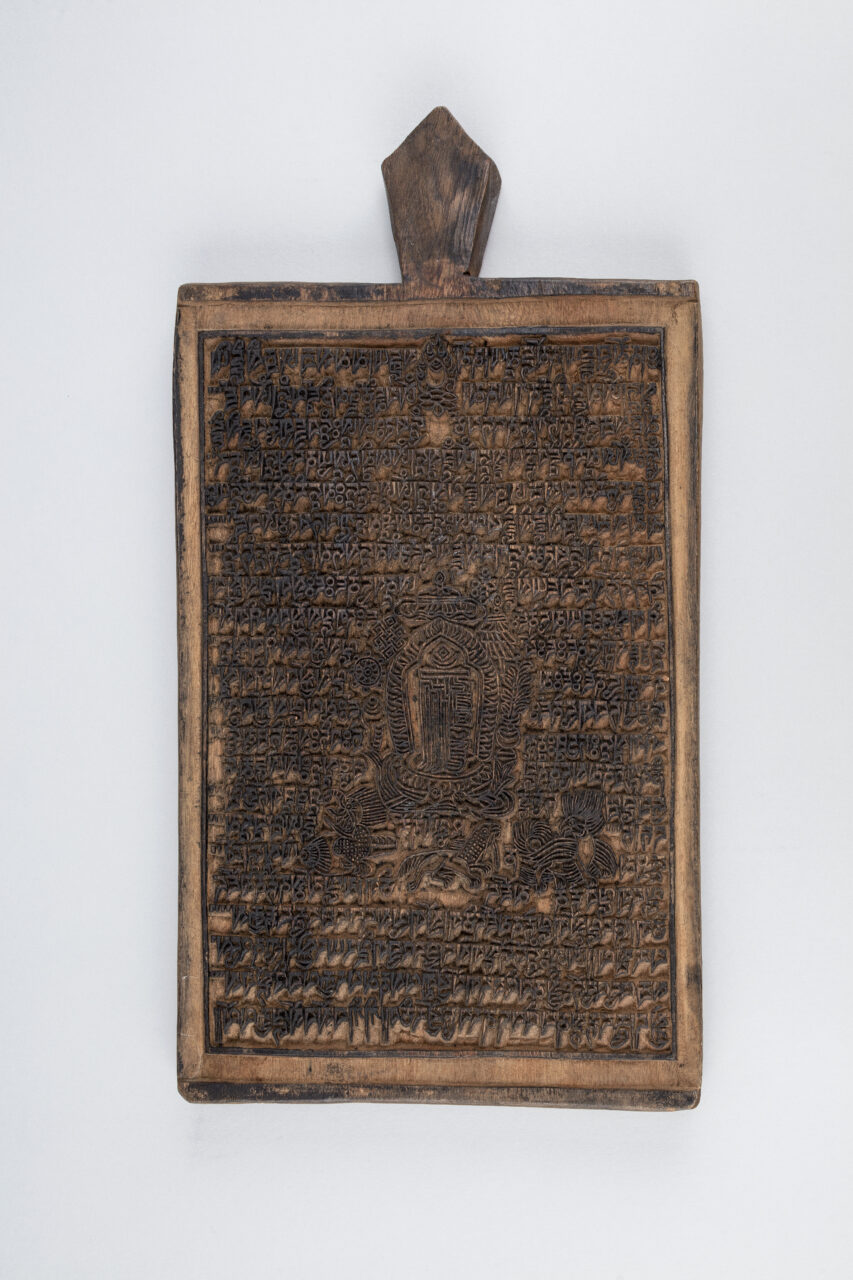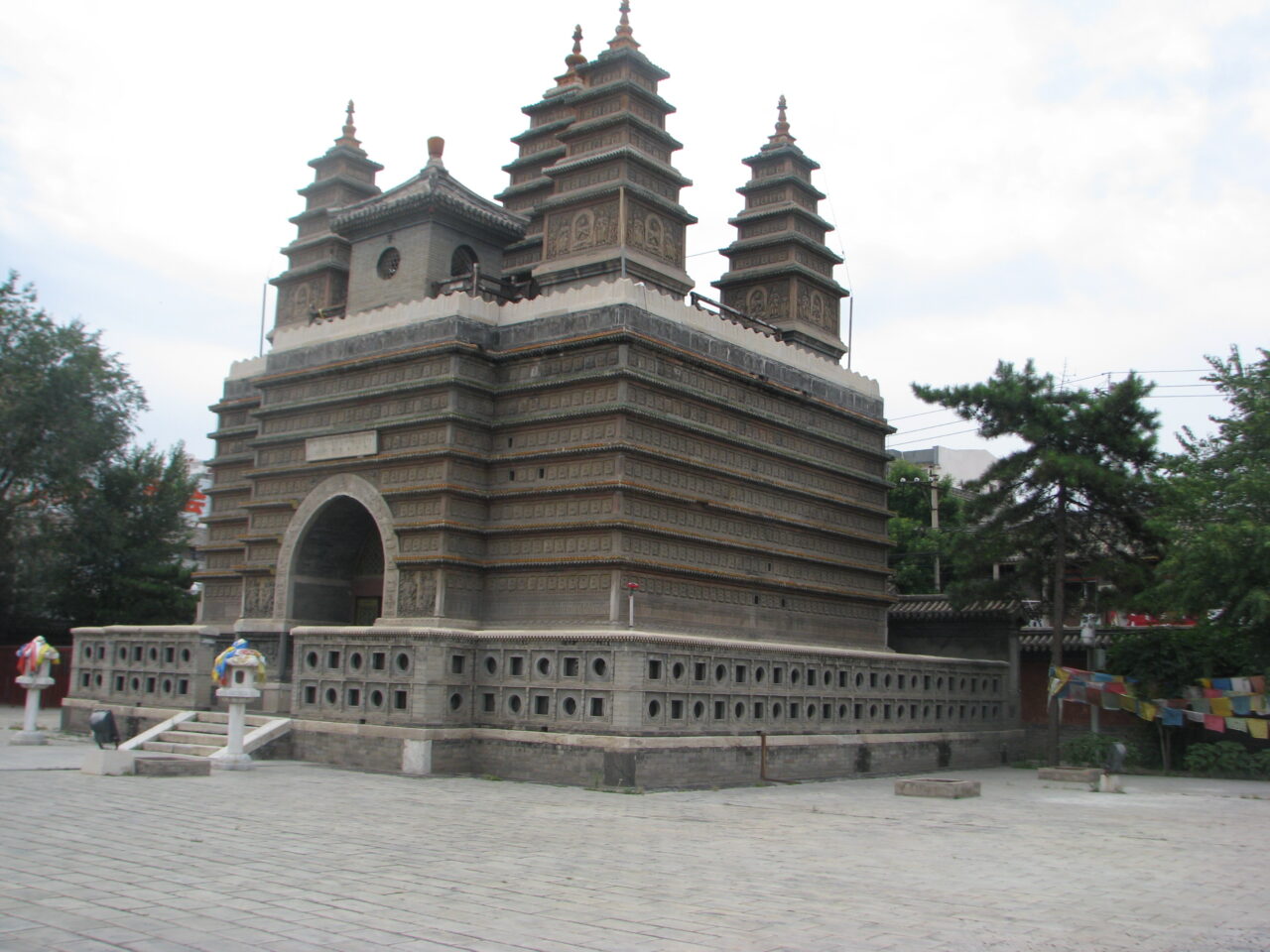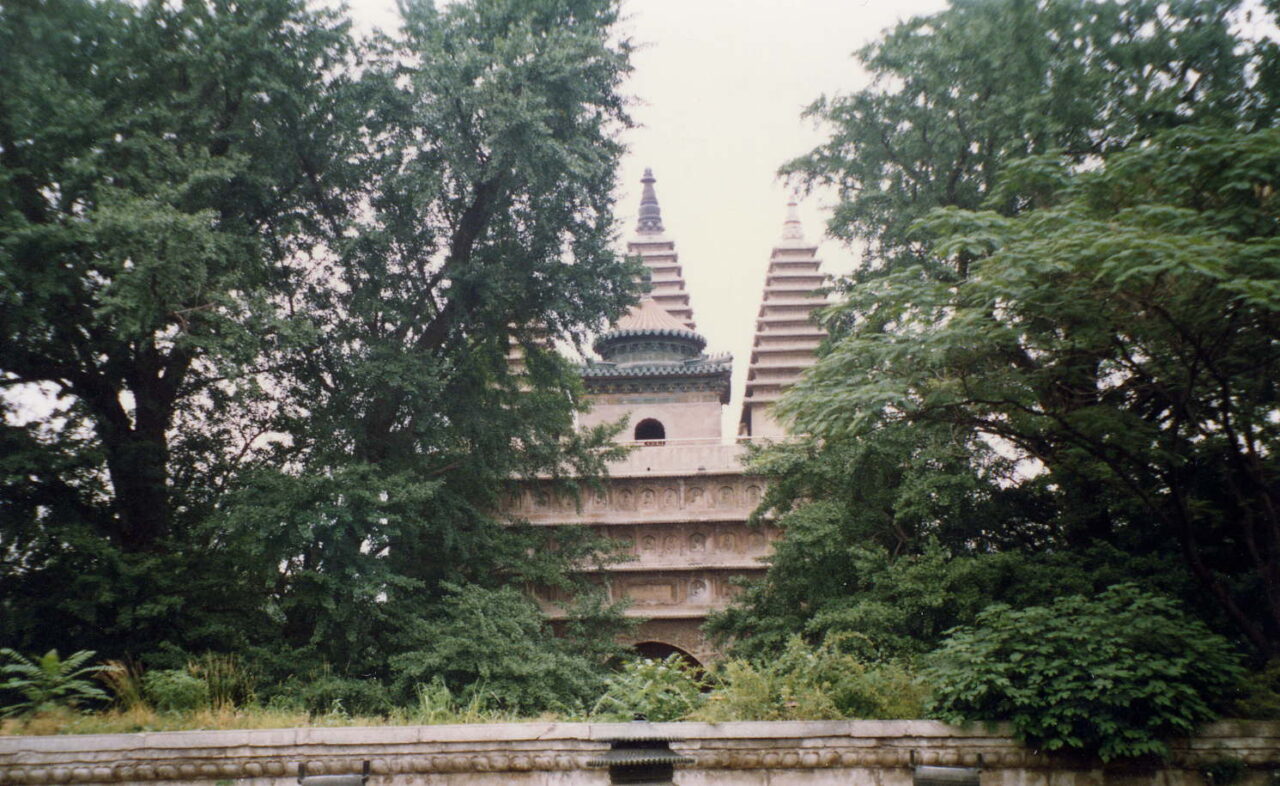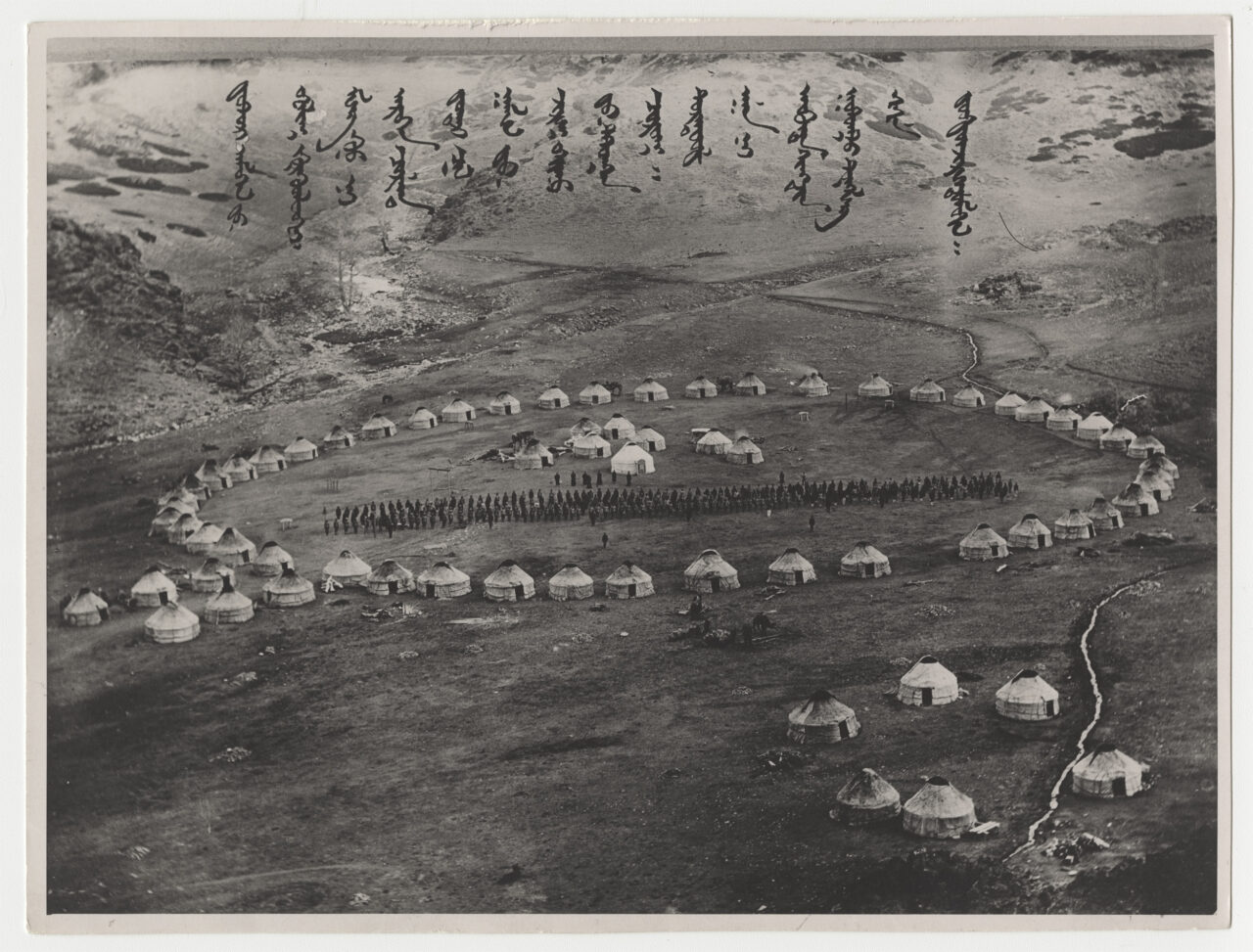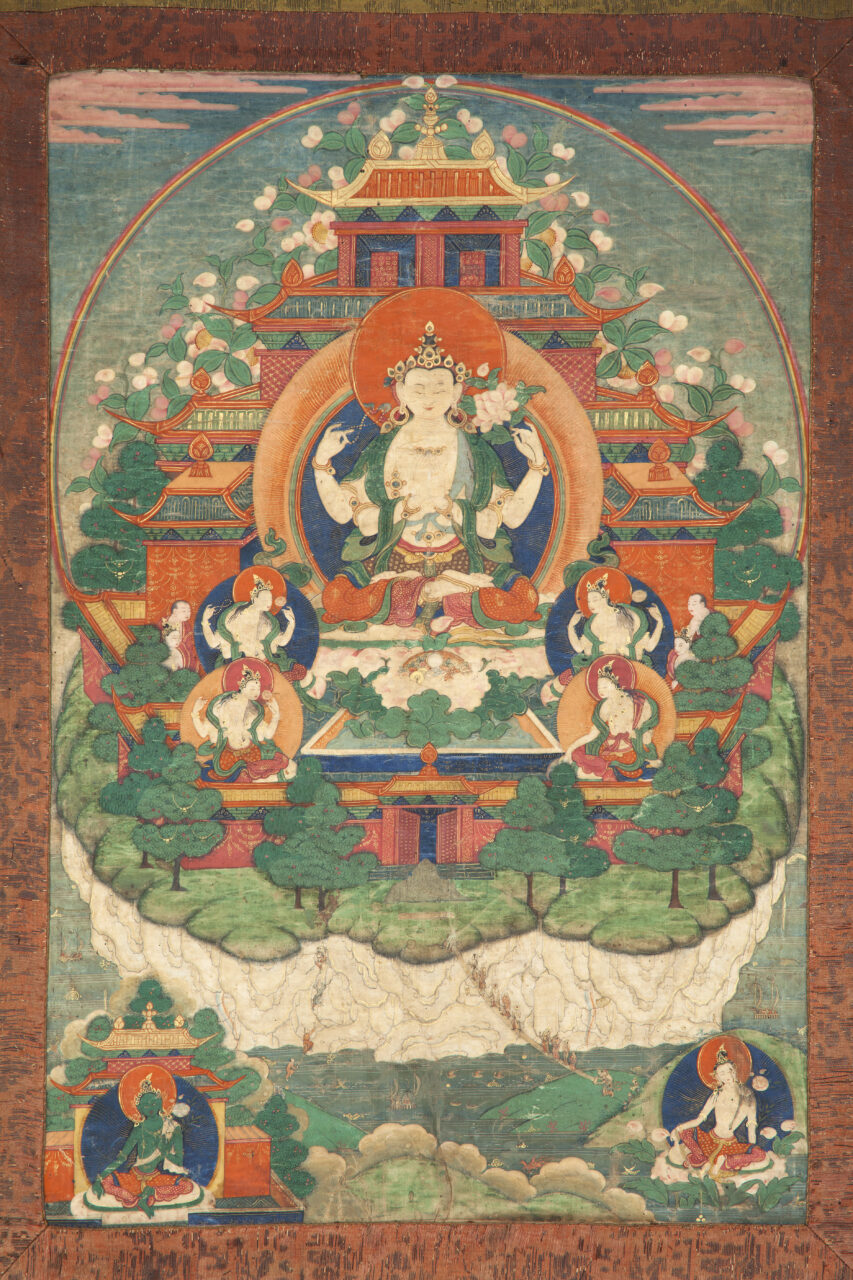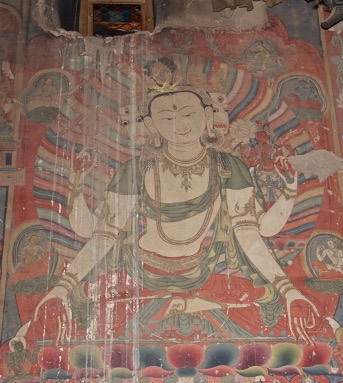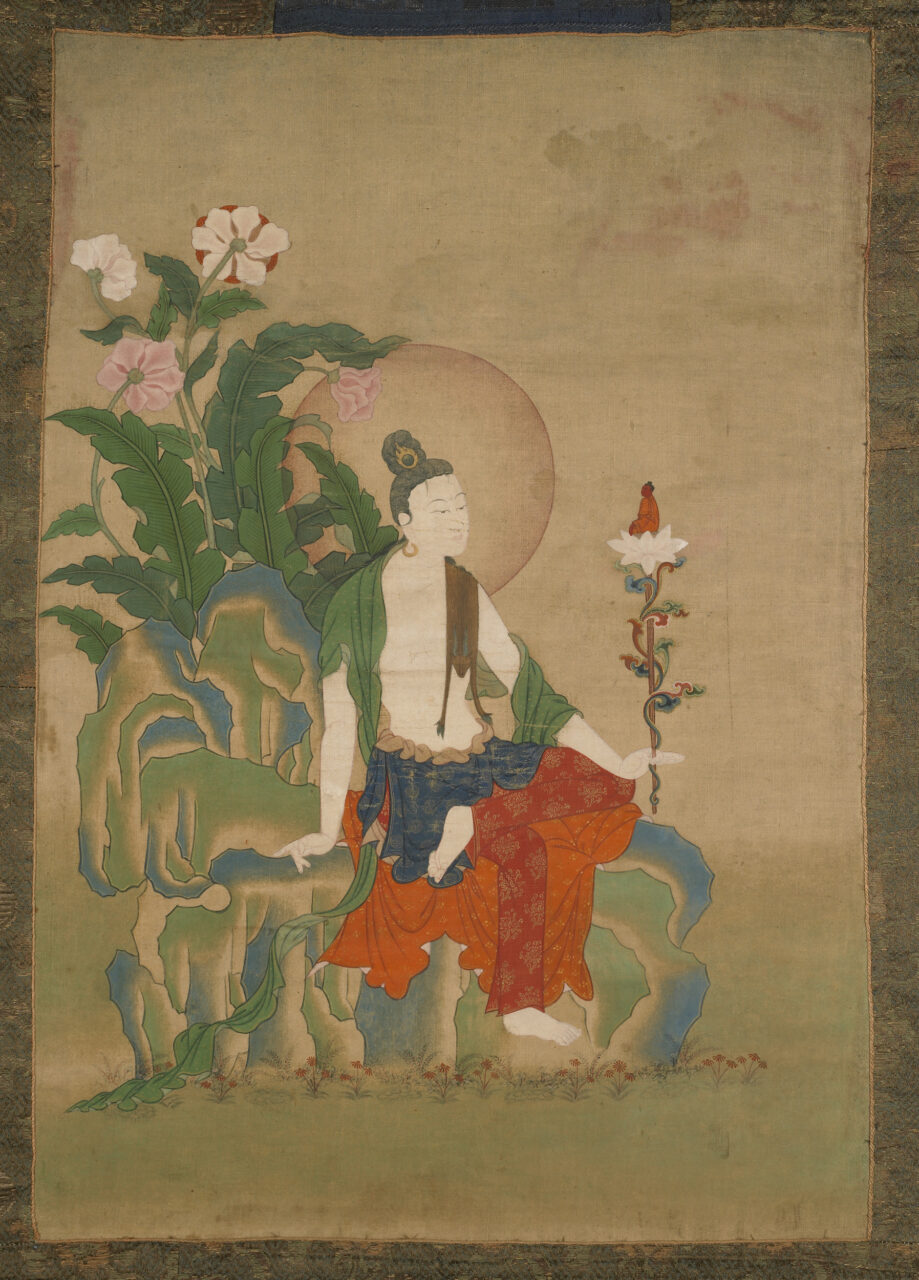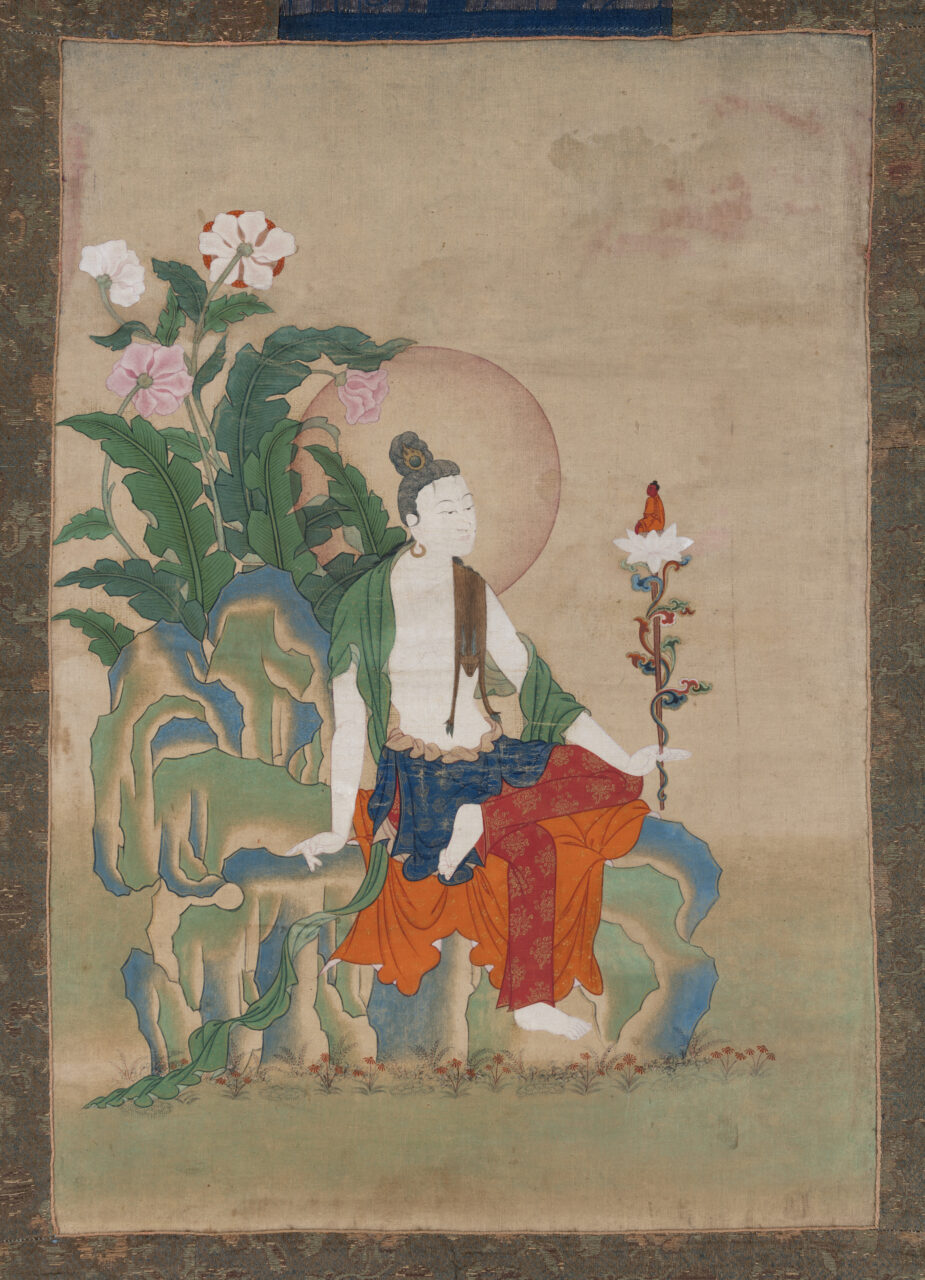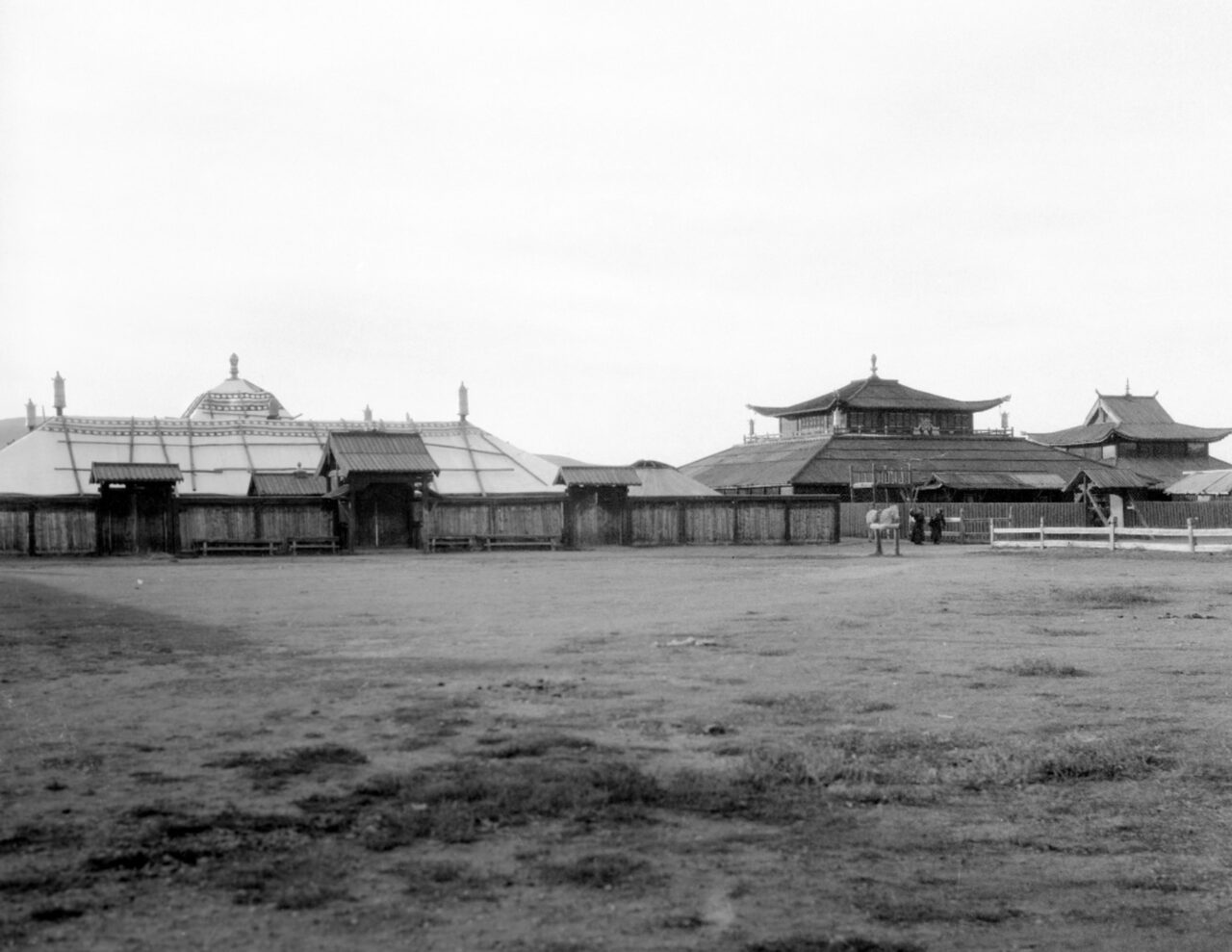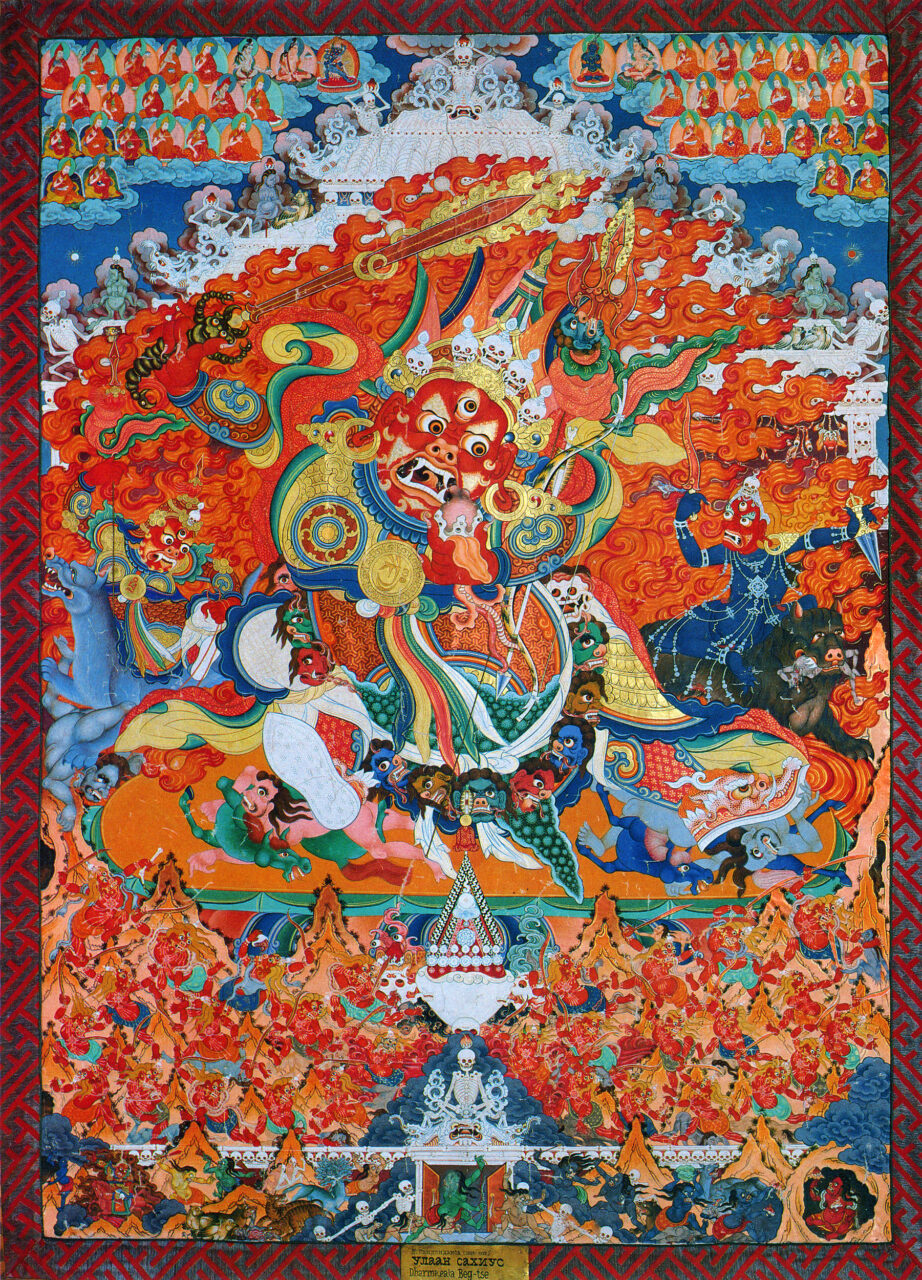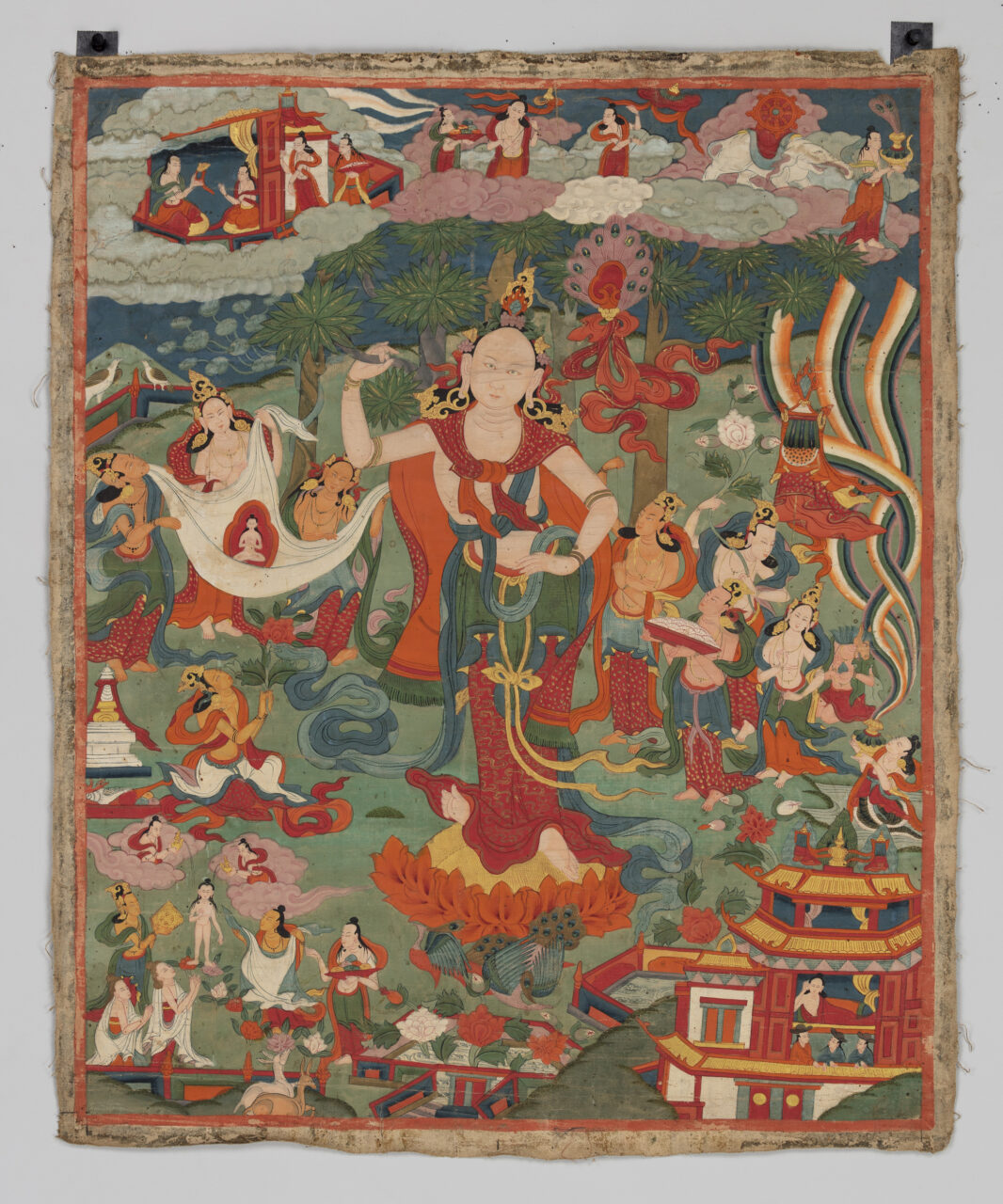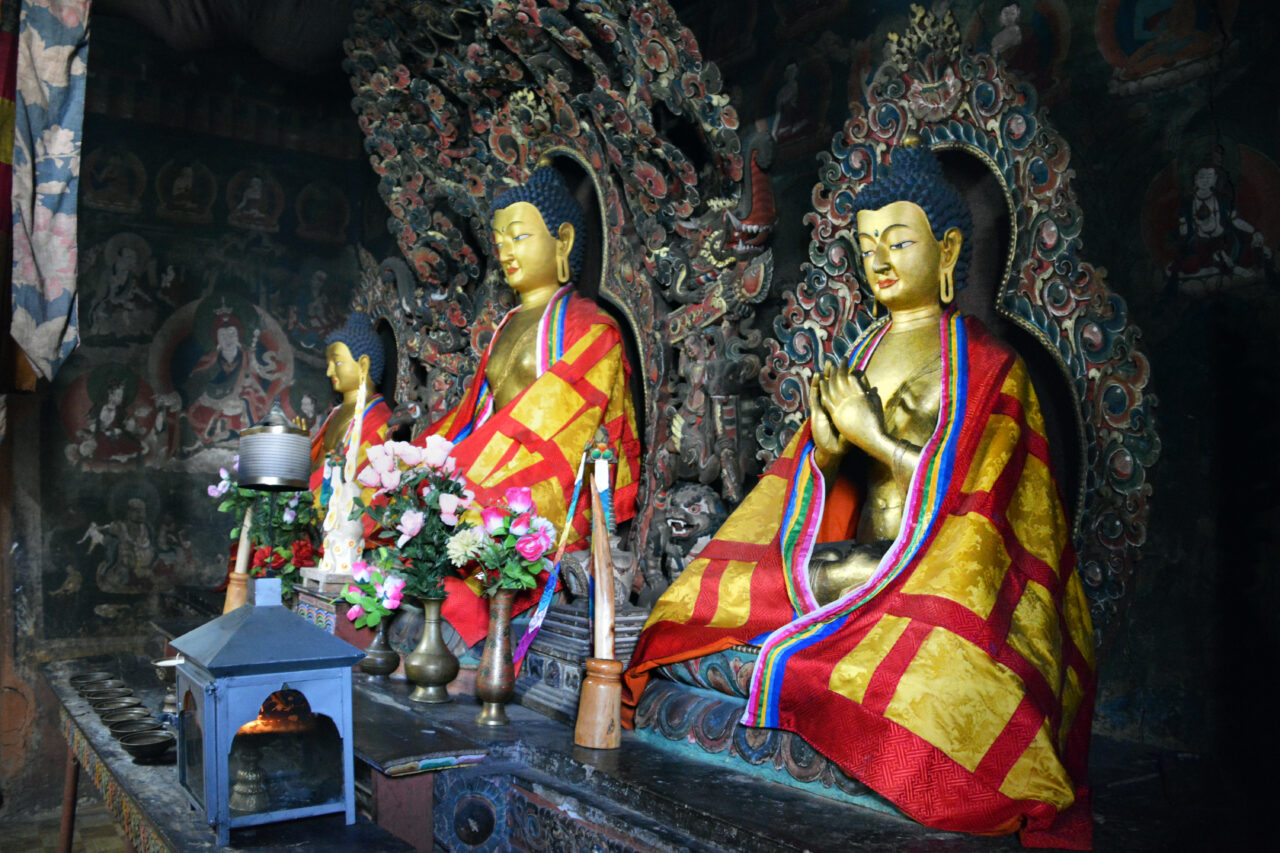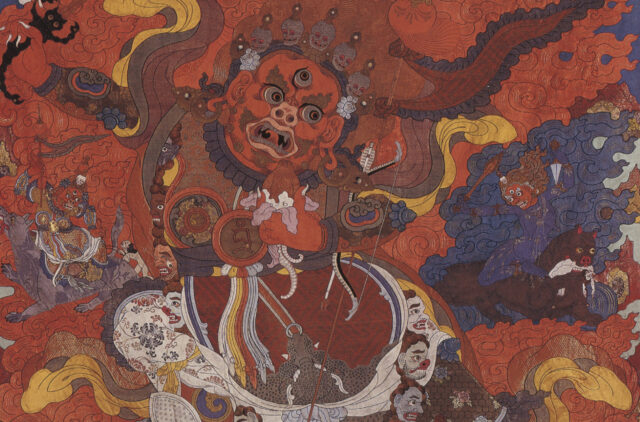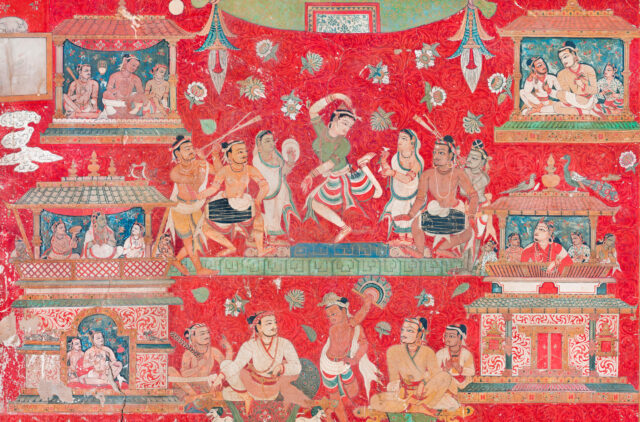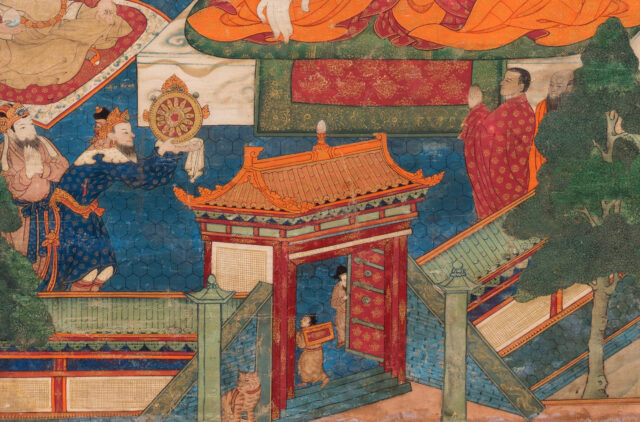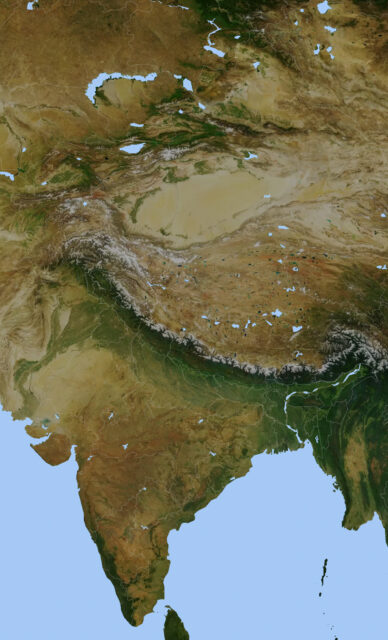Pavilion of Raining Flowers (Yuhua Ge 雨花閣) Beijing Qing dynasty
Dorje Drolo, One of the Eight Manifestations of Padmasambhava Kham Province, Eastern Tibet 19th century
Loden Chokse, One of the Eight Manifestations of Padmasambhava Kham Province, Eastern Tibet 19th century
Orgyen Dorje Chang, One of the Eight Manifestations of Padmasambhava Eastern Tibet 19th century
Padmasambhava, Pema Jungne Kham Province, Eastern Tibet late 18th-19th century
Drenpa Namkha (ca. 8th century) Amdo Province, Eastern Tibet 19th century
Bon Lama Sanggye Lingpa (1705-1735) Gyelrong, Eastern Tibet 19th century
Takla Membar Tibet 19th century
Four-faced Linga Nepal 18th - 19th century
Red Avalokiteshvara or Bunga Dya Nepal dated by inscription, 1818
Maitreya Procession at Lama-yin Gegeen-ü Khüriye Mongolia late 19th–early 20th century Gempil-yin Dorji (Mongolian, late 19th–early 20th century)
Maitreya Mongolia late 19th century Gendundamba (Mongolian, late 19th–early 20th century)
Panchen Lama rebirth lineage portraits, set of thirteen thangkas copied from Nartang xylographic designs Tibet 19th century
Woodblock Print of the Buddha with His Assembly China 18th - 19th century
Arhat Subhuti (After Choying Gyatso’s (active ca.1640s-1660s) Set of Previous Incarnations of the Panchen Lamas) Central Tibet 19th century
Yungton Dorje Pel (1284 1365) (After Choying Gyatso’s (active ca.1640s-1660s) set of previous incarnations of the Panchen Lamas) Central Tibet 19th century
Songtsen Gampo (ruled 617-650) (From a set of the previous lives of the Dalai Lamas) Tibet 19th century
Ushnisavijaya and Celebration of Old Age (Jyatha Janko) Mold for an image of Tsongkhapa (1357-1419) Mold for clay image (tsatsa) of Vajrapani Mold for clay image (tsatsa) of Buddha Amitayus Bodhisattva Suryabaskara Chakrasamvara with Consort Vajravarahi Woodblock for printing prayer flag Stupa Woodblock for printing Tibetan text Sitatapatra Tara as Protectress from the Eight Fears Tara, as a Great Yogini, After a Set of Paintings “Twenty-seven Tantric Deities” designed by Situ Panchen (1700-1774) Vajravarahi Padmasambhava Medicine Buddha Medical Instruments Medical Painting on Prophylactics, Diagnosis, and Therapeutic Principles, Illustration to the Medical Treatise the Blue Beryl, Chapters 23–28 Mandala of Chakrasamvara Buddha Vairochana Red Avalokiteshvara or Bunga Dya Heruka with Consort Refuge Field with Machik Labdron (1055–1153) Life Story of Buddha Shakyamuni Buddha Shakyamuni and Teaching Stories (Avadana) Padmasambhava and his eight manifestations Indrabhuti, from a set of the Eight Great Adepts (Mahasiddhas) Temple Banner with Seven Symbols of Royal Power and Offerings Pelden Lhamo Mongolia late 17th century
Chakpori Medical College Tibet 1905 L. Austine Waddell
Demon-Binding Against Sickness Dolpo region, western Nepal ca. 1975
Deshay Maru Jhya (Deshay Maru Jhya (Window without an Equal) Yetakha tol; Kathmandu, Nepal ca. 18th century
Design for Grand Maitreya Project, work-in-progress near Ulaanbaatar
Detail of a nobleman’s robe Delgerkhaan soum, Khentii Province, Mongolia Mongol Imperial period, 14th century
Detail of Makzor Gyelmo, Queen Who Repels Armies, from lower right of painting, showing four ladies with a range of vessels including a two-toned, open-top pitcher with spout and handle Amdo region, eastern Tibet 19th century
Detail of Pegam Chest showing pitcher and chemar bo grain vessel on the central table as greeting offerings 19th century
Detail of The Altan Khan’s Family Back Shrine of the Main Assembly Hall, Maidari-yin Juu, Inner Mongolia, China 18th century
Drawing of Vajravarahi ca. 1687 Lhodrak Kukye Norbu Gyatso (active late 17th century)
Facade of the main assembly hall of Shara Süme, “Yellow Monastery,” imperial monastery built on the same model as Amarbayasgalant Khiid (1727–1736) Dolonnuur, Inner Mongolia 1727–1731, partially destroyed by Russian troops in 1945 Lei Jinyu, architect (1659–1729)
Geluk Refuge Field with Tsongkhapa central Tibet ca. late 18th–early 19th century
Giant appliqué scroll representing Padmasambhava and his Eight Emanations Paro Tshechu, Bhutan
Goddess Marichi Mongolia late 17th or early 18th century Attributed to Zanabazar (Mongolian, 1635–1723) or his workshop
Going on Pilgrimage on All Fours and An Ascetic Sleeping on the Points of a Thousand Wooden Spikes India ca. 1940 Gendun Chopel (Tibetan, 1903–1951)
Gopichandra Monastery (Pintu Bahi) Patan, Nepal 2018
Green Tara Khara Khoto, Inner Mongolia, China; Western Xia late 12th–13th century
Handheld Prayer Wheel Tibet 19th–20th century
Handheld Drum (Damaru) Tibet or Mongolia early 20th century
Iconometrical drawing Jügdür (Mongolian, flourished late 19th–early 20th century)
Ikh Khüree Naadam Mongolia 1966 D. Damdinsüren (Mongolian, 1909-1984)
Ikh Khüree Tsam Mongolia 1966 D. Damdinsüren (1909–1984)
Installation work in the exhibition Keepers of the Water Lhasa 1996 Gade (b. 1971, Lhasa)
Jataka of the Bodhisattva Sonam Tob (Story 90); north wall of the ground-floor circumambulatory passage Zhalu Monastery; Tsang District, central Tibet 14th century
Jügdernamjil (Three Deities of Longevity) Mongolia late 19th century Jügdür (Mongolian, flourished late 19th–early 20th century)
Juu Shakyamuni with his pupils made in Dolonnuur, Inner Mongolia, decorated in Buryatia (Federation of Russia) 19th century
Kalachakra (Dechingalba) Temple in Yekhe Khüriye Monastery Mongolia late 19th century
King Bhaskara Deva Varma (12th century) and Woman Donor Wearing Tayo-bizakani Kwa Baha, Patan, Nepal 1804
Lacquered Wood Duomu Pitcher with Gold Floral Designs China 19th–20th century
Lama Chogyur Lingpa (1829–1870) Kham region, eastern Tibet 19th century
Leg Bone Trumpet (Kang Ling) Tibet 18th–19th century
Life Story of Buddha Shakyamuni Tibet 19th century
Livestock Charm primarily Dolpo region, Nepal since 1975
Mahabodhi Temple at Bodhgaya, India Bodhgaya, India
Mahabuddha Temple Patan, Nepal 1564–1601
Maitreya Mongolia 1680s Zanabazar (1635–1723)
Maitreya Mongolia 1680s Zanabazar (1635–1723)
Mandala of Sarvavid Vairocana (Durgatiparisodhana from the Vajradhatu Mandala Series) Inner Mongolia or Beijing ca. 18th century
Manuscript folio of illustrated instructions for the creation of an unidentified do effigy from a combination of namkhas Lo Montang, Mustang district, Nepal 19th century
Map of Yekhe Khüriye Mongolia 19th century
Map of Yekhe Khüriye Mongolia late 19th century Balgan (act. late 19th century)
Monk’s Cap Silver Pitcher Tibet 19th century
Nagarjuna and Aryadeva, after Situ’s set of The Six Ornaments and Two Excellent Ones Kham region, eastern Tibet 19th century
Nine Deity Offering Mongolia 19th century
Nineteenth-Century Copy of the Paubha Commemorating the Death of Pandita Vanaratna (1384–1468) Patan, Nepal 1862
One Hundred and Eight Stupas arranged in a triangular shape on the hill China period (1038–1227)
Open tashi gomang Thimphu, Bhutan 19th–20th century
Painted Scroll of Bhimaratha Ritual Hāku Bāhāḥ, Kathmandu, Nepal dated by inscription January 1830
Painted Scroll of Laksha Chaitya Ritual Kathmandu, Nepal dated by inscription January 1808
Painting of Machik Labdron (1055–1153) Kham region, eastern Tibet 19th century
Painting of Temples and Monasteries of Lhasa Kham region, eastern Tibet 1900–1920
Panoramic Map of Mount Wutai Cifu Temple, Wutaishan, China 1846 Monk Lhundrub, engraver of Sanggai Aimag (Ulaanbaatar, Mongolia)
Prayer Beads (trengwa) Tibet 19th century
Sixth Panchen Lobzang Pelden Yeshe (1738–1780), one of thirteen thangkas copied from Nartang xylographic designs Tibet 19th century
Manjushriyashas (Jampel Drak), one of thirteen thangkas copied from Nartang xylographic designs Tibet 19th century
Bhaviveka (Lekden Je, ca. 500–ca. 578), one of thirteen thangkas copied from Nartang xylographic designs Tibet 19th century
Abhayakaragupta (Jigme Jungne Bapa, d. 1125), one of thirteen thangkas copied from Nartang xylographic designs Tibet 19th century
Go Lotsawa Khukpa Lhetse (11th century), one of thirteen thangkas copied from Nartang xylographic designs Tibet 19th century
Sakya Pandita Kunga Gyeltsen (1182–1251), one of thirteen thangkas copied from Nartang xylographic designs Tibet 19th century
Yungton Dorje Pel (1284–1365), one of thirteen thangkas copied from Nartang xylographic designs Tibet 19th century
[First Panchen] Khedrubje Gelek Pelzang (1385–1438), one of thirteen thangkas copied from Nartang xylographic designs Tibet 19th century
[Second Panchen] Sonam Choklang (1439–1504), one of thirteen thangkas copied from Nartang xylographic designs Tibet 19th century
Subhuti (Rabjor), one of thirteen thangkas copied from Nartang xylographic designs Tibet 19th century
Fourth Panchen Lobzang Chokyi Gyeltsen (1567–1662), one of thirteen thangkas copied from Nartang xylographic designs Tibet 19th century
[Third Panchen] Wensapa Lobzang Dondrub (1505–1566), one of thirteen thangkas copied from Nartang xylographic designs Tibet 19th century
Fifth Panchen Lobzang Yeshe (1663–1737), one of thirteen thangkas copied from Nartang xylographic designs Tibet 19th century
Protective Astrological Chart Tibet late 18th or early 19th century
Red Temple (Dukhang) Toling, western Tibet founded 996
Ritual Bone Apron Tibet/Nepal 18th–19th century
Russian Consulate and Holy Trinity Church Yekhe Khüriye, Mongolia 1912 Ivan Korostovets (Russian, 1862–1933)
Shaiva Shrine Payer, Kashmir ca. 10th century
Silver Juu (Tib. Jowo), Main Assembly Hall of Yekhe Juu Höhhot, Inner Mongolia, China 1579
Situ Panchen as Patron of The Wish-Granting Vine Series of One Hundred and Eight Morality Tales, twenty-third painting after Situ’s set Kham region, eastern Tibet 19th century
Sketches of Floral Patterns and Mythological Creatures, pages from a sketchbook in a folding book (thyasaphu) format Tibet (and Nepal?) 1435 Jivarama (active in 15th century)
Skull Cup with Base Tibet 18th–20th century
Statue of Amitayus, Dolonnuur style 19th century
Statue of Manjushri Efi (efü?) khalkha süme, Shiliin Gol League (formerly in Chakhar), Inner Mongolia mid-18th century
Statue of Shakyamuni Buddha Ravangla, Sikkim, India 2013
Statue of Shakyamuni Buddha Tawang, Arunachal Pradesh, India 2015
Statue of Shiva Solophok Hill, Namchi, Sikkim, India 2011
Statue of Ten Thousand Knives Padmasambhava, said to be made of melted knives offered by the local population in the aftermath of a murder Khamar Monastery, Dornogovi Province, Mongolia First half of 19th century, crown made in 2005 Two artisans from the Chinese metal workshops of Dolonnuur and local smiths following the instructions of the great reincarnate lama Danzin-Rabjai (1804–1856)
Statue of White Tara Dolonnuur, Inner Mongolia 18th or 19th century
Stone carving of twenty-one buddhas and two bodhisattvas Manthal village of Skardu, Pakistan ca. late 8th century
Stūpas in Old Carvings India ca. 1940 Gendun Chopel (Tibetan, 1903–1951)
Subhasitaratnanidhi (Treasury of Good Sayings) Mongolian translation in phags pa (square script) Khocho 13th–14th century
The Akshobya Mandala and White and Blue Achala Segoma Lhakhang, Zhalu Monastery; Tsang region, central Tibet (present-day TAR, China) 14th century
The Five Jina Buddhas Segoma Lhakhang, Zhalu Monastery; Tsang region, central Tibet (present-day TAR, China) 14th century
The Great Stupa Alchi, Ladakh, India ca. 1220 or later
The North Fort at Taku, China, 1860 North Fort at Taku, China 1860 Felice Beato (British, 1832–1909)
The Potala and the Principal Monuments of Central Tibet Tibet 19th century
The Previous Lives of Buddha Shakyamuni Kham region, eastern Tibet 19th century
The Wish-Granting Vine Series of One Hundred and Eight Morality Tales, twenty-first painting after Situ’s set Kham region, eastern Tibet 19th century
Thirty-Five Buddhas of Confession Mongolia ca. 1914 Chimed, Gendendamba, Jügdür, and Khasgombo (all active early 20th century Mongolia)
Turquoise Bridge Lhasa 1951 Tse Ten Tashi
Two Stirrups Mongolian 16th–17th century
Vajrapani Mongolia late 19th century Tsend, Tavkhai Bor, Danjin, Baldangombo, and Khasgombo
Victory over Mara Mongolia? 19th century
View of Putuo Zongcheng Temple Chengde, China 1767–1771
Wheel of Existence Tashicholing Temple, Ulaanbaatar, Mongolia 20th or 21st century
White Achala Segoma Lhakhang, Zhalu Monastery; Tsang region, central Tibet (present-day TAR, China) 14th century
White Stupa, known as Precious Stupa of Great Compassion and Longevity, and its surroundings Great Precious Stupa Cloister Monastery; Mount Wutai, Shanxi Province, China 1301, renovated in 1407
Woodblock for Printing Prayer Flags with Print Himalayan region 15th–19th century
Wutasi, the Five Pagoda Temple Höhhot, Inner Mongolia 1732
Zhenjue Temple, the Five Pagoda Temple Beijing, China 1473
An example of a khüriye encampment: the Torghut Prince Sin Chin Gegeen’s camp at Khara Shar Mongolia before 1927
Avalokiteshvara in His Potala Pure Land Tibet late 18th–early 19th century
Avalokiteshvara-Amoghapasha Segoma Lhakhang, Zhalu Monastery; Tsang region, central Tibet (present-day TAR, China) 14th century
Avalokiteshvara, after Situ’s set of Eight Great Bodhisattvas Kham region, eastern Tibet 19th century
Avalokiteshvara, traced from a composition by Konchok Pende of E (from Situ’s set of Eight Great Bodhisattvas) Kham region, eastern Tibet 19th century
Bat-Tsagaan Assembly Hall Yekhe Khüriye, Mongolia mid-17th century Zanabazar (1635–1723)
Begtse (Jamsran) Mongolia late 19th century Gendendamba (late 19th–early 20th century)
Birth of Buddha Tibet 19th century
Buddha Kasyapa, Buddha Shakyamuni, and Maitreya (the Buddhas of the Past, Present, and Future) Phurdrup Monastery, Bhutan ca. 19th century Attributed to a sculptor of the Hephu tradition
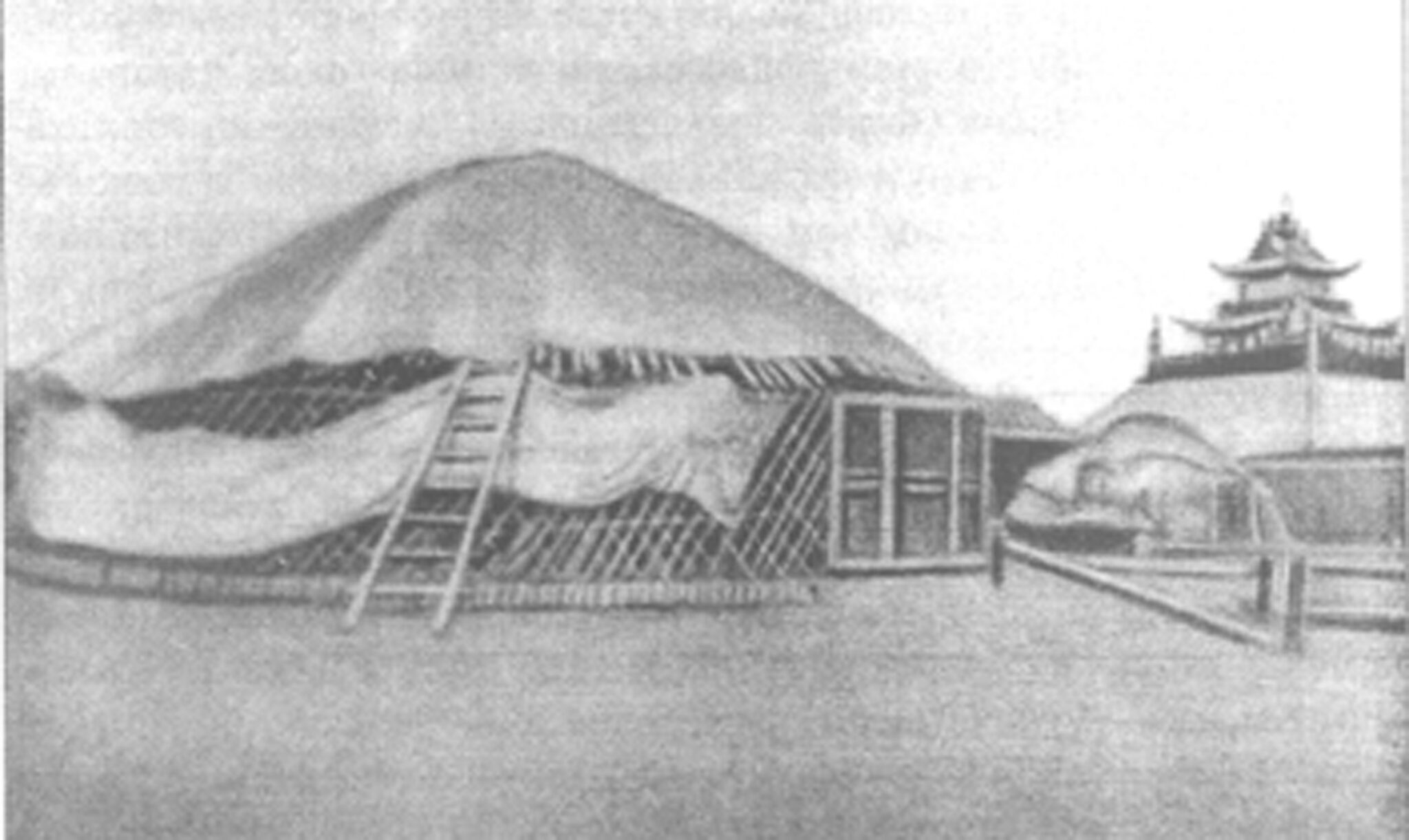
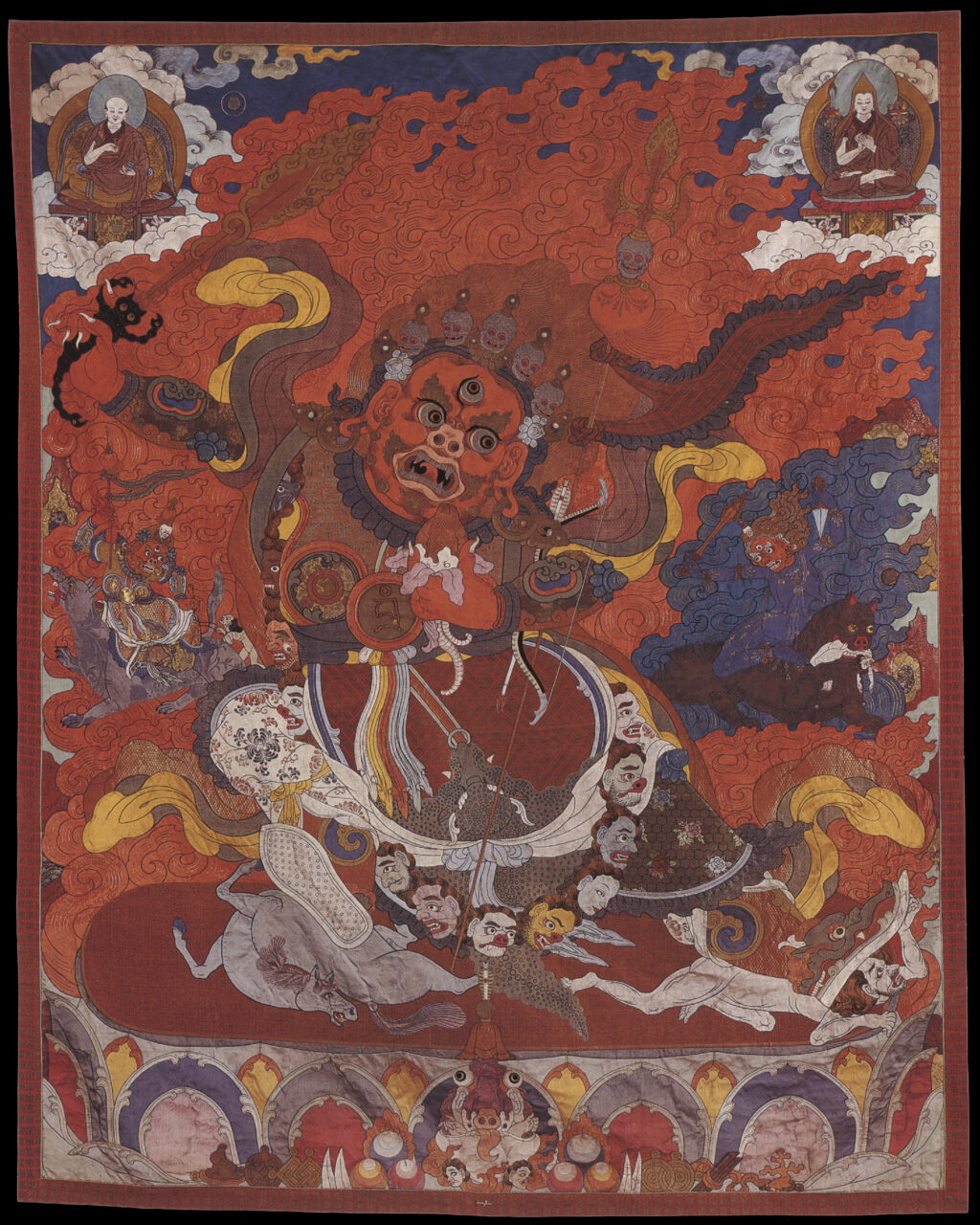 Project Himalayan Art
Project Himalayan Art